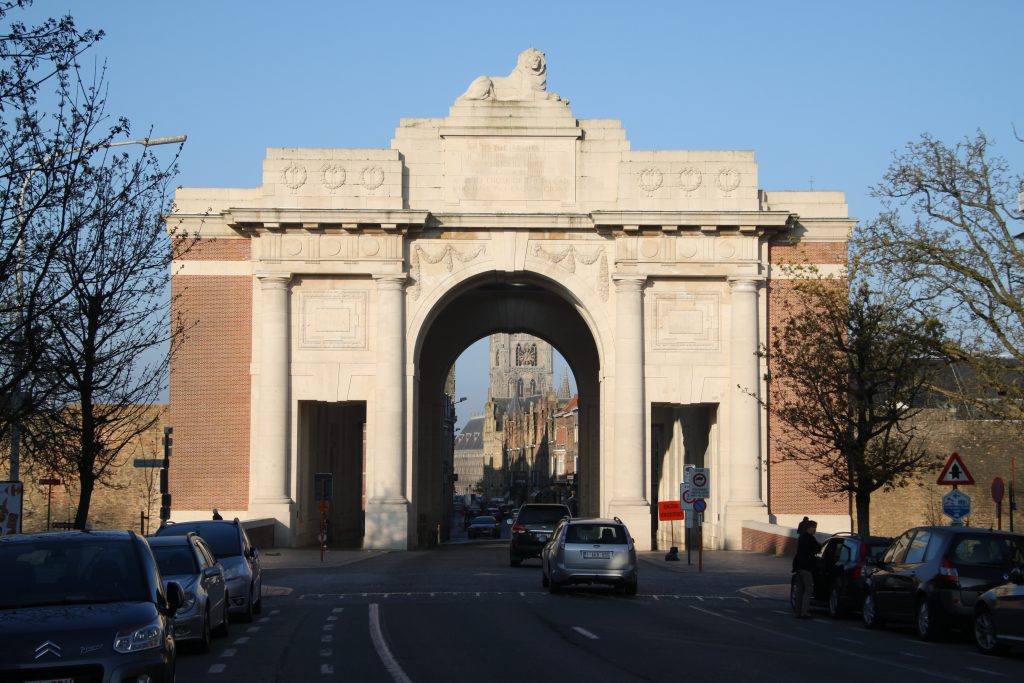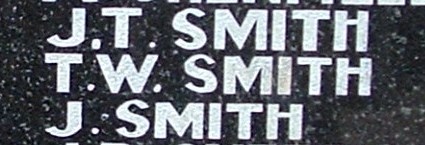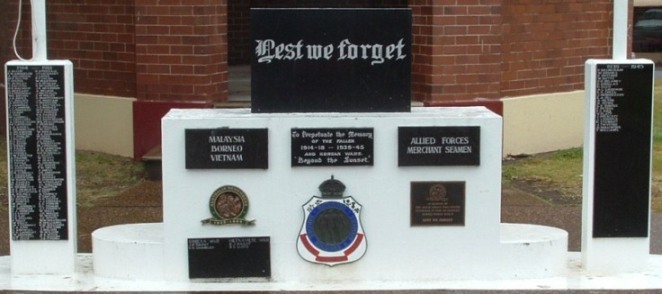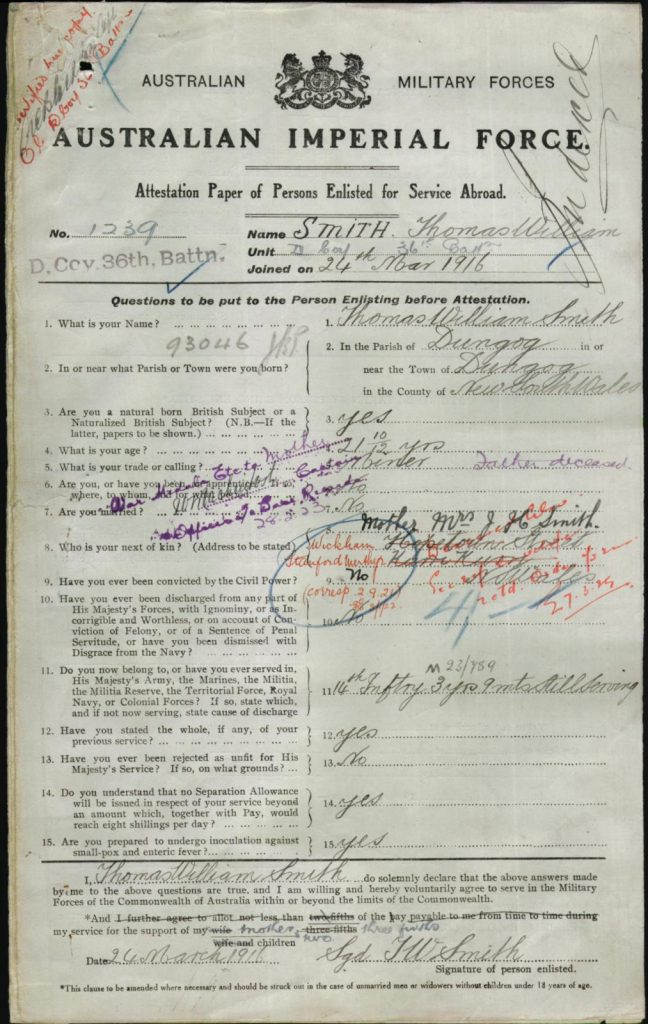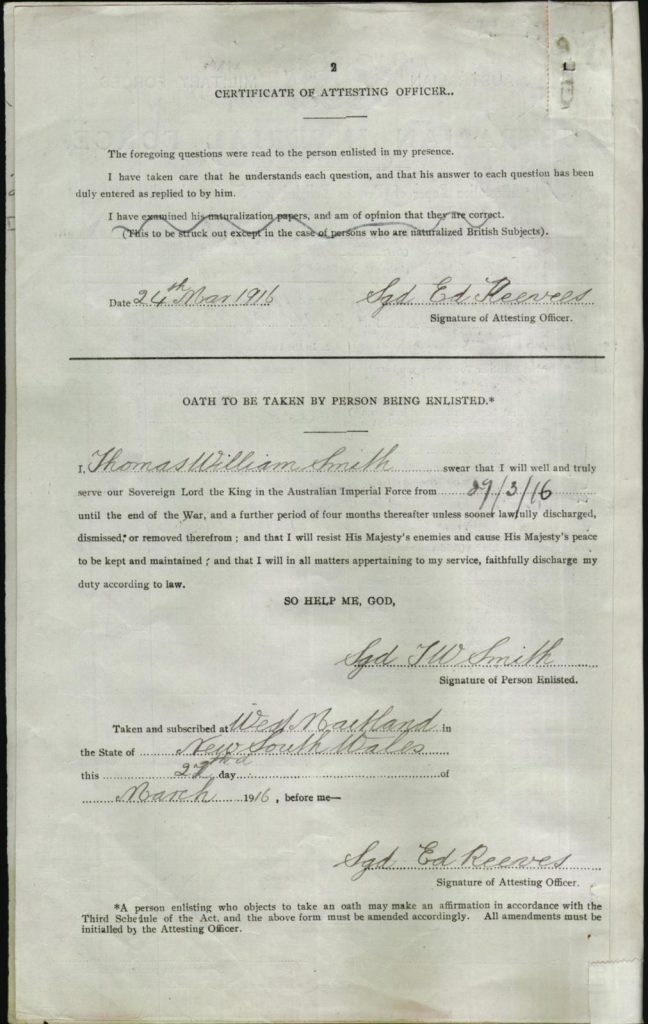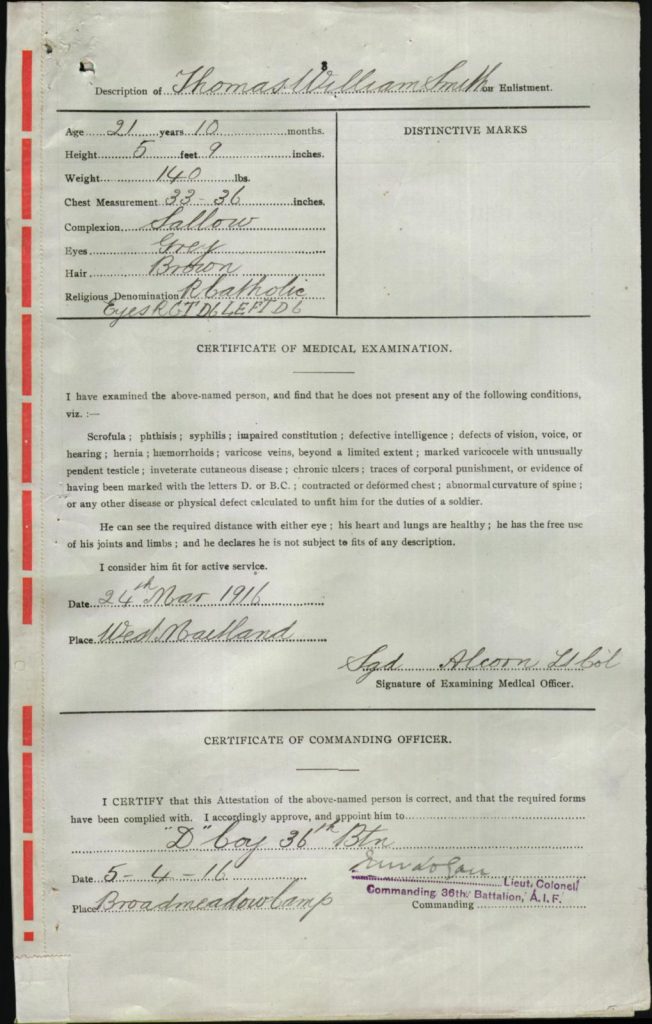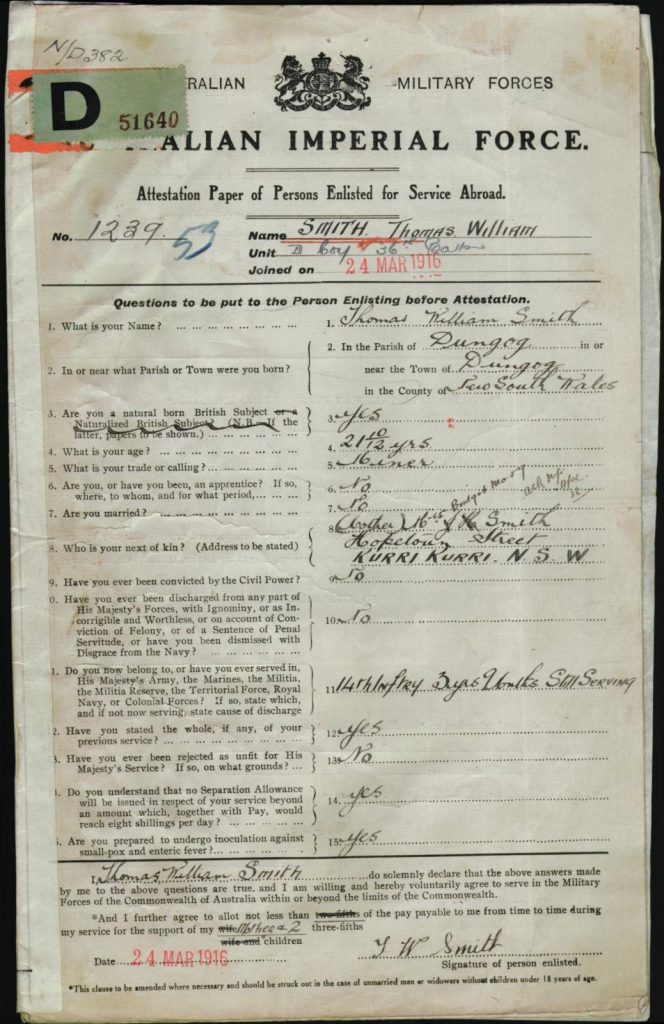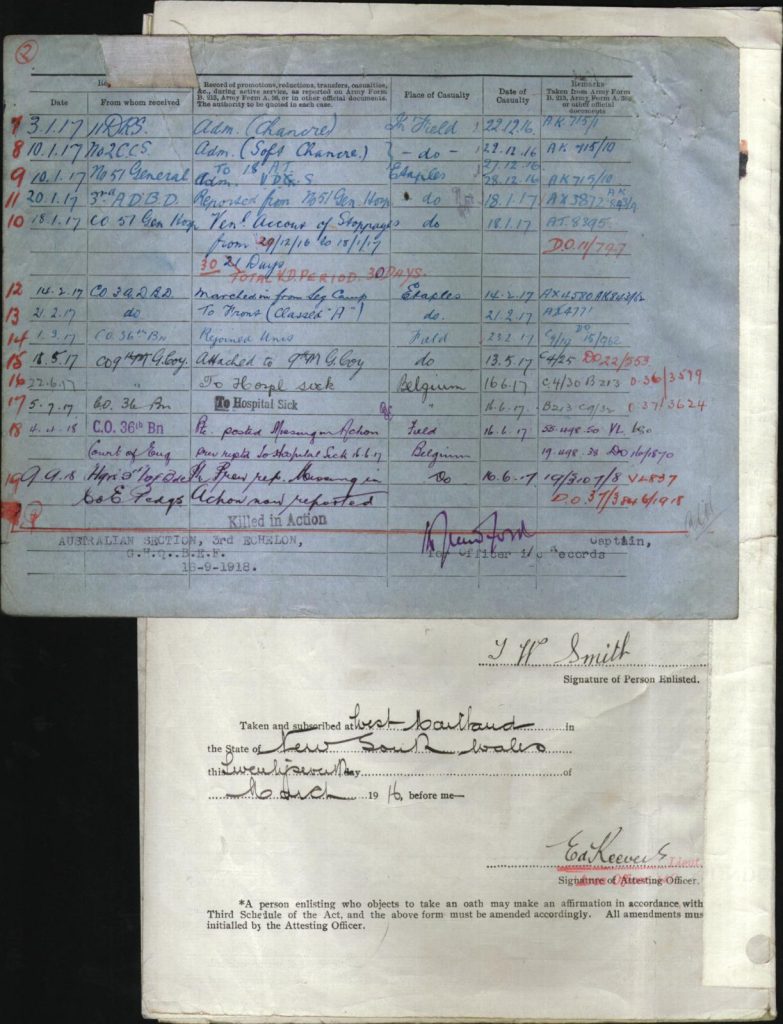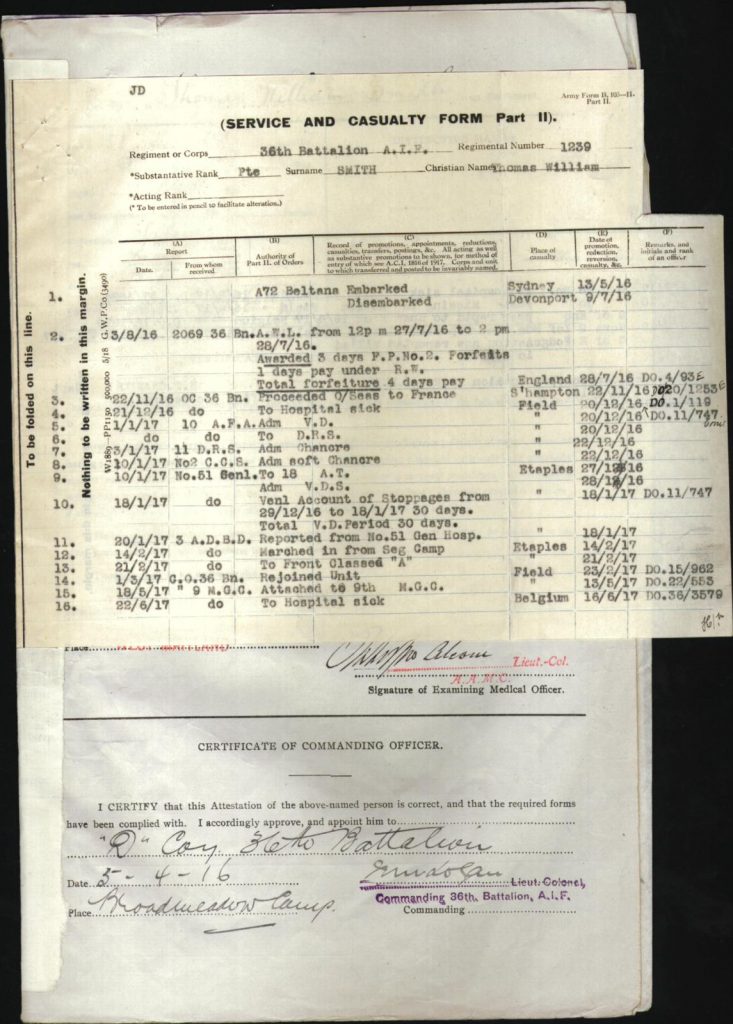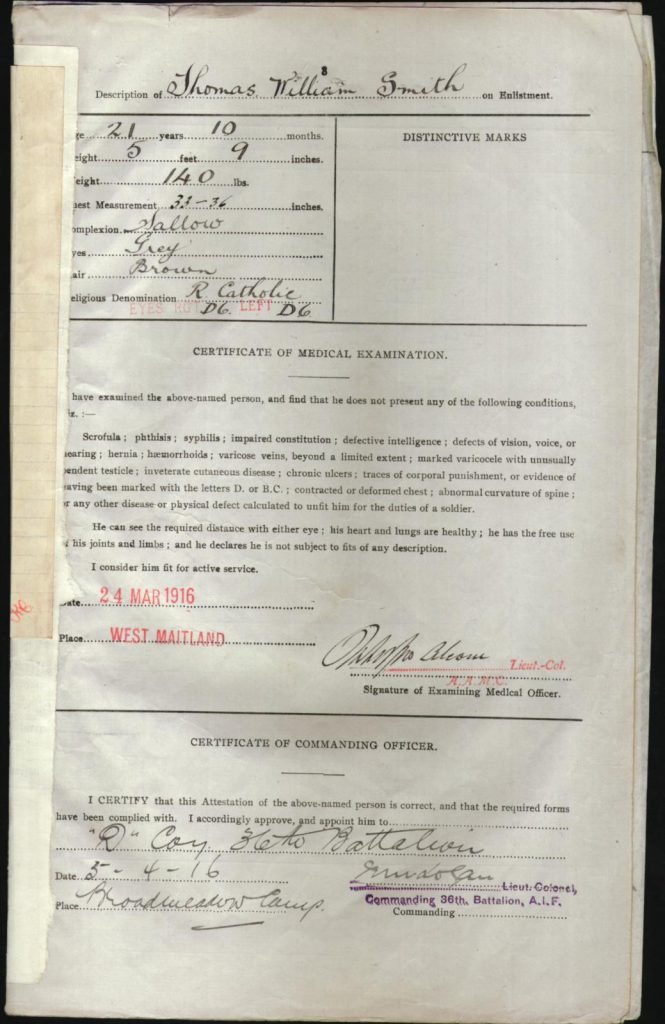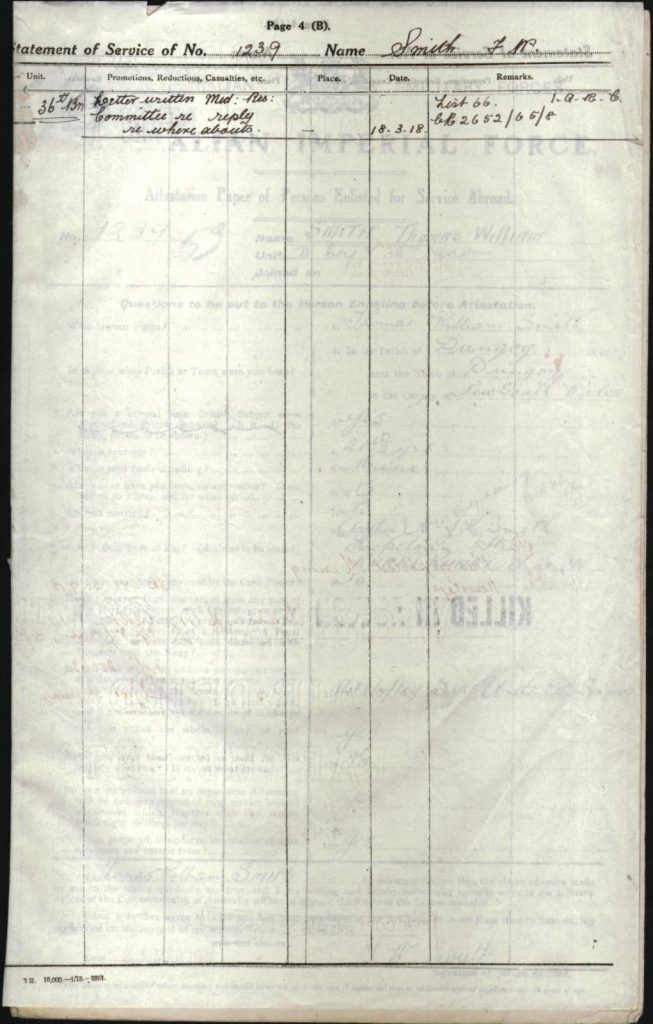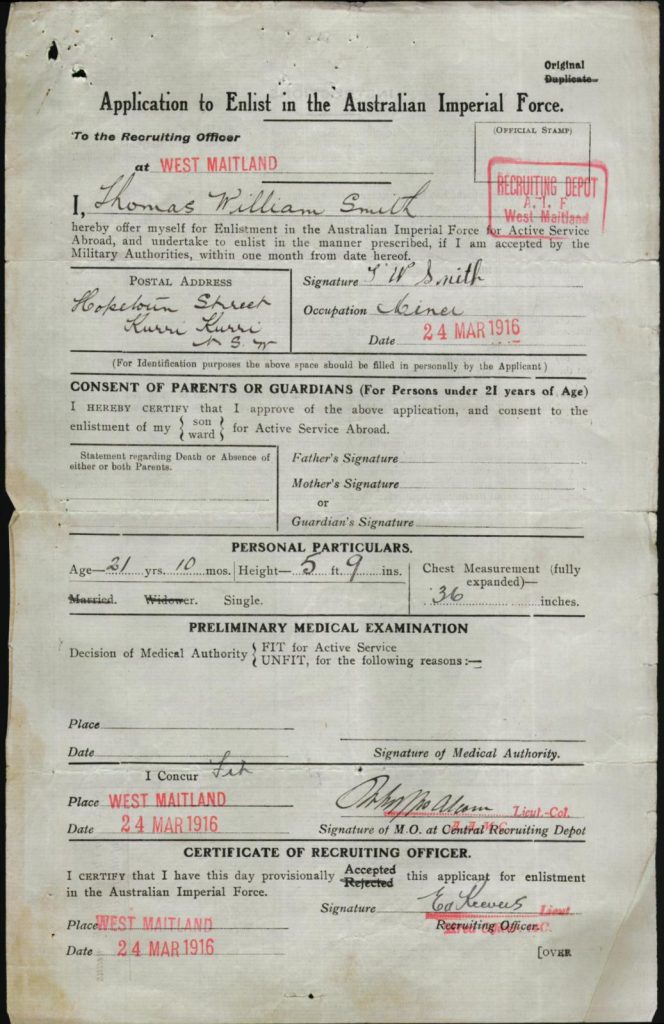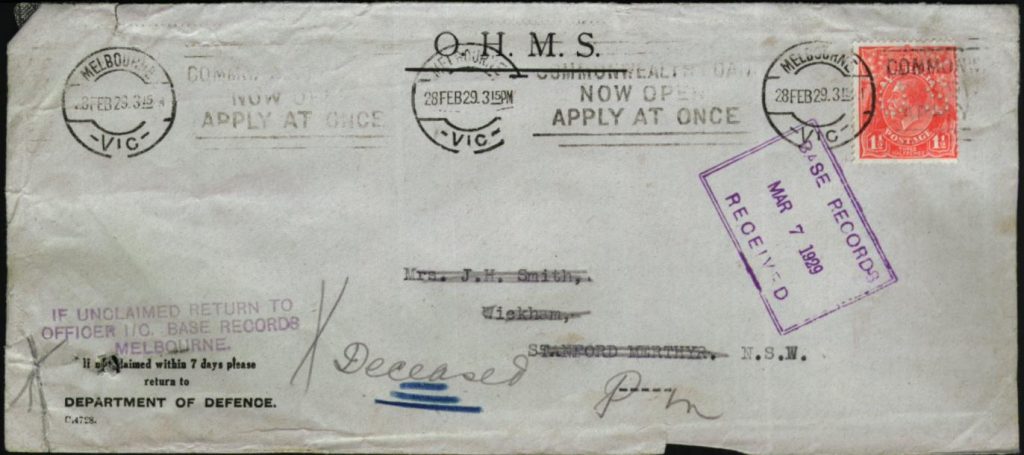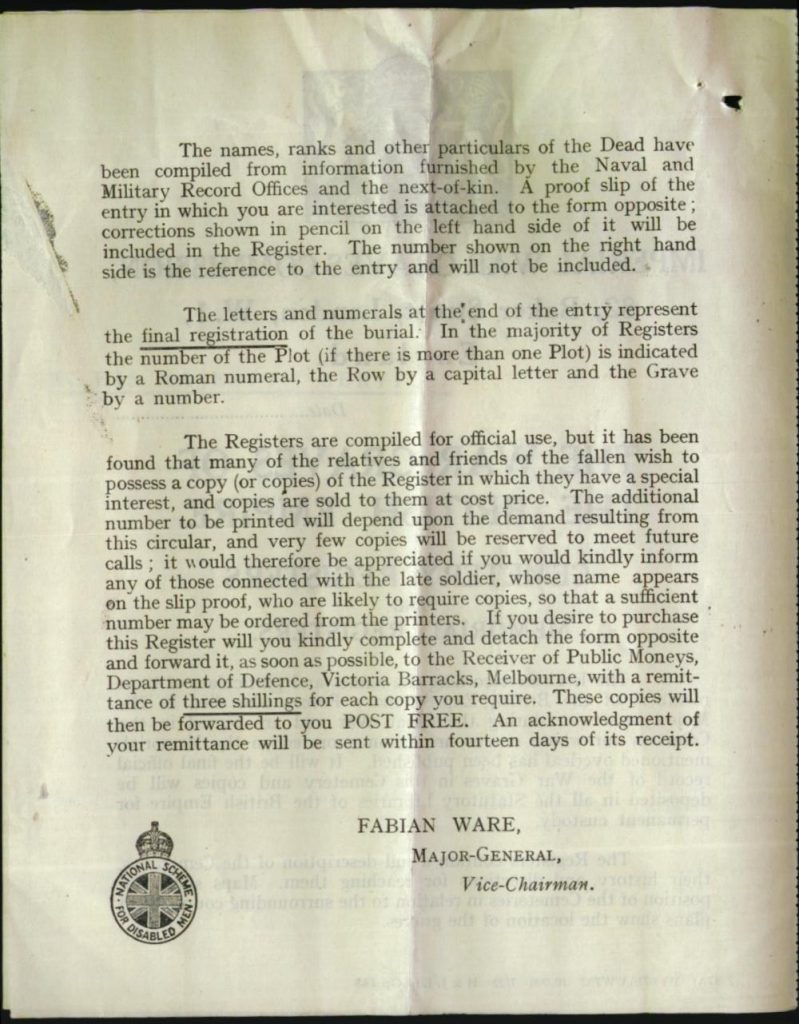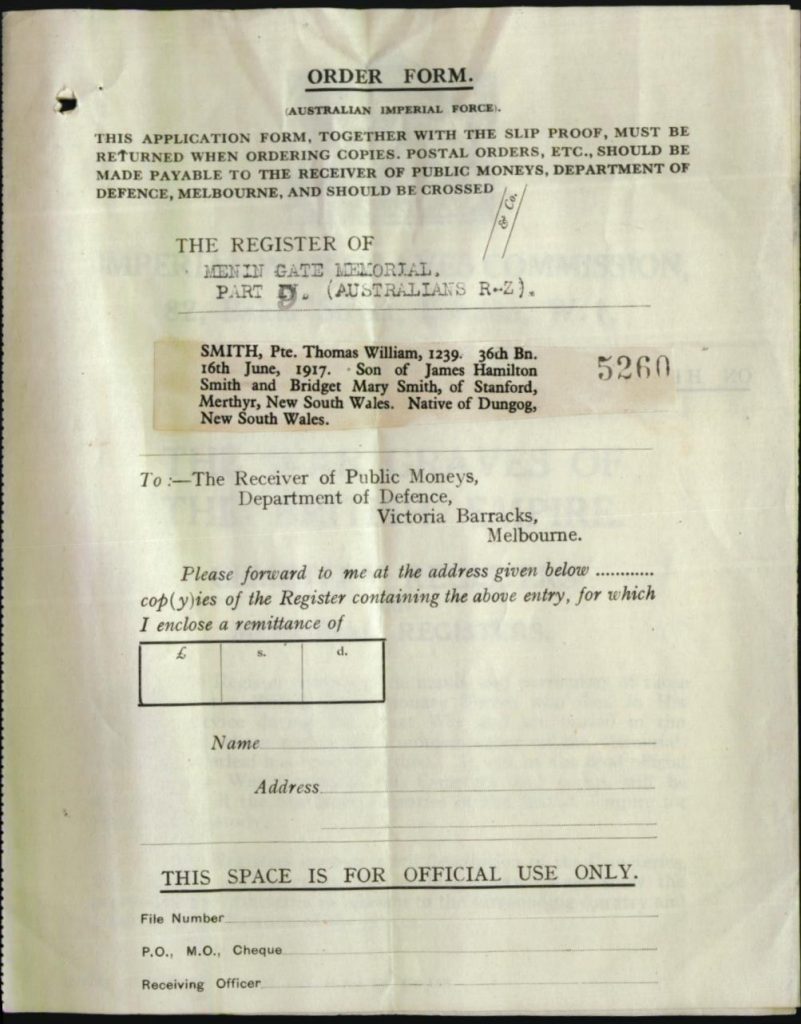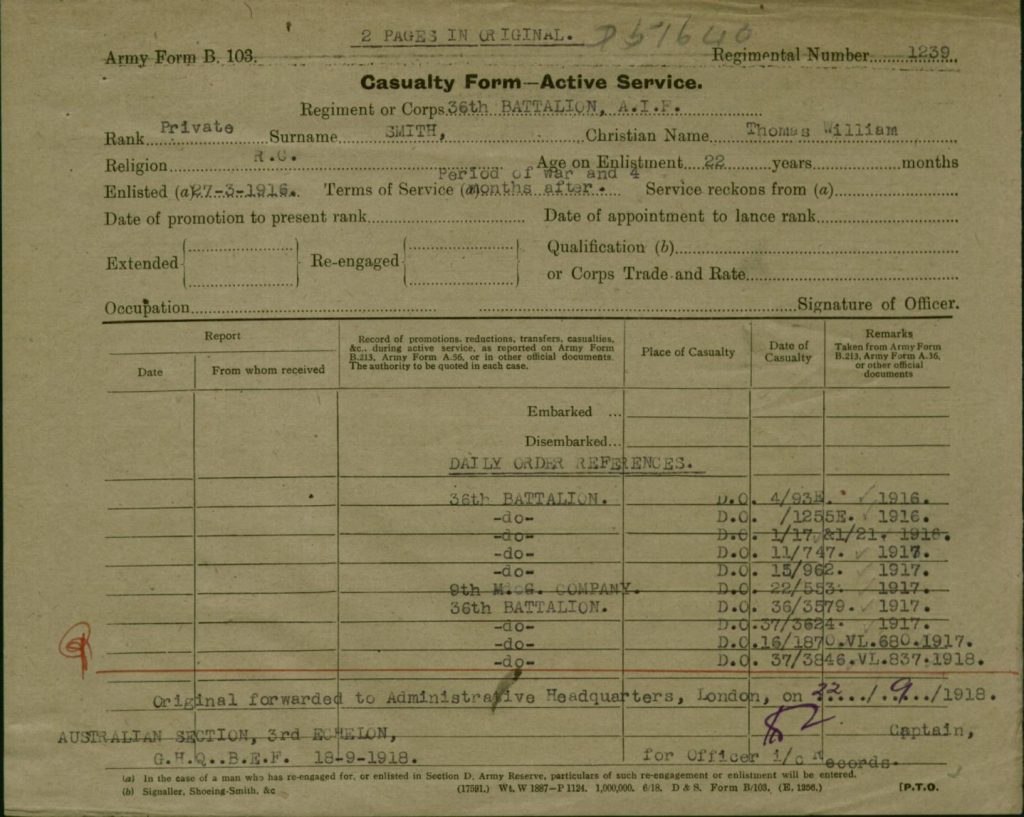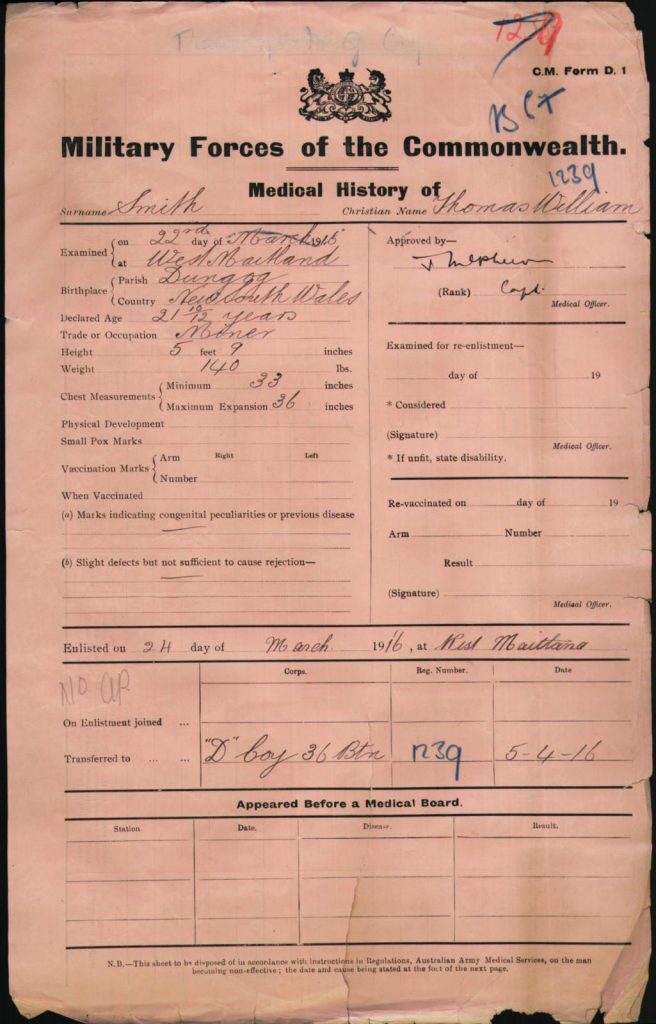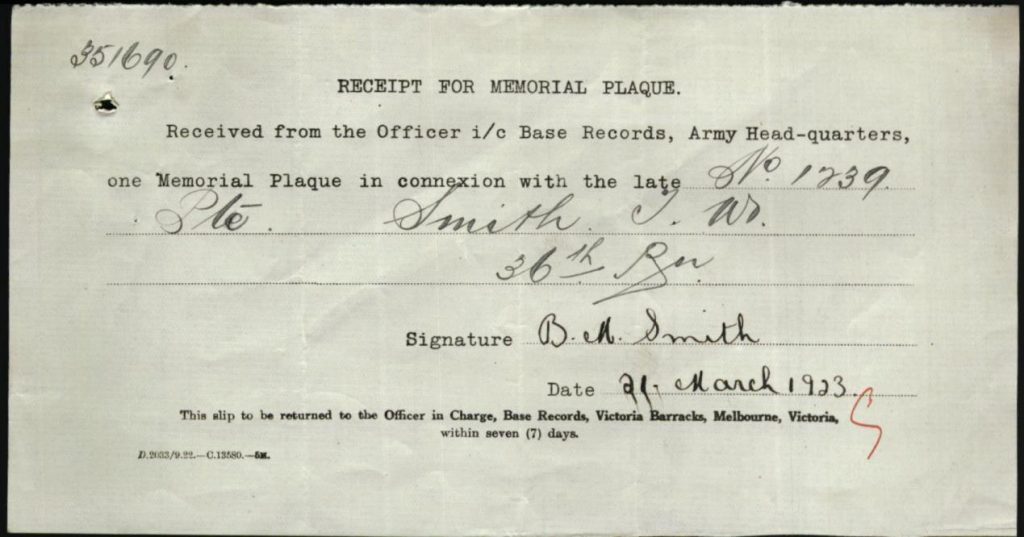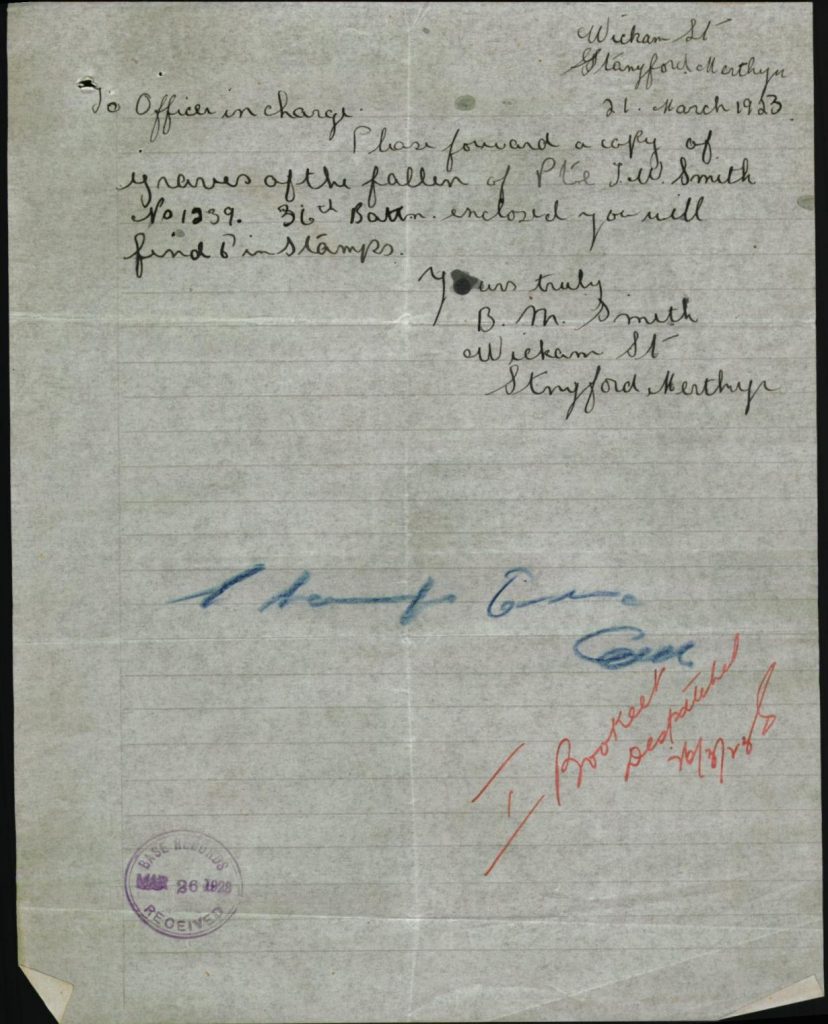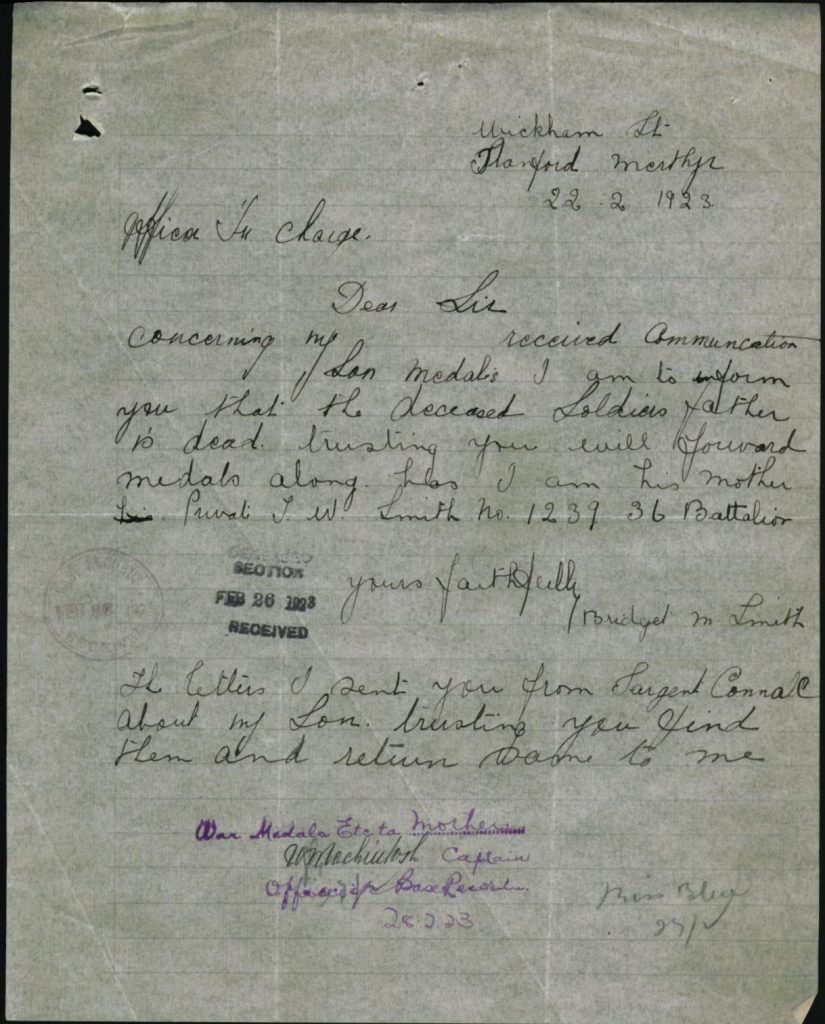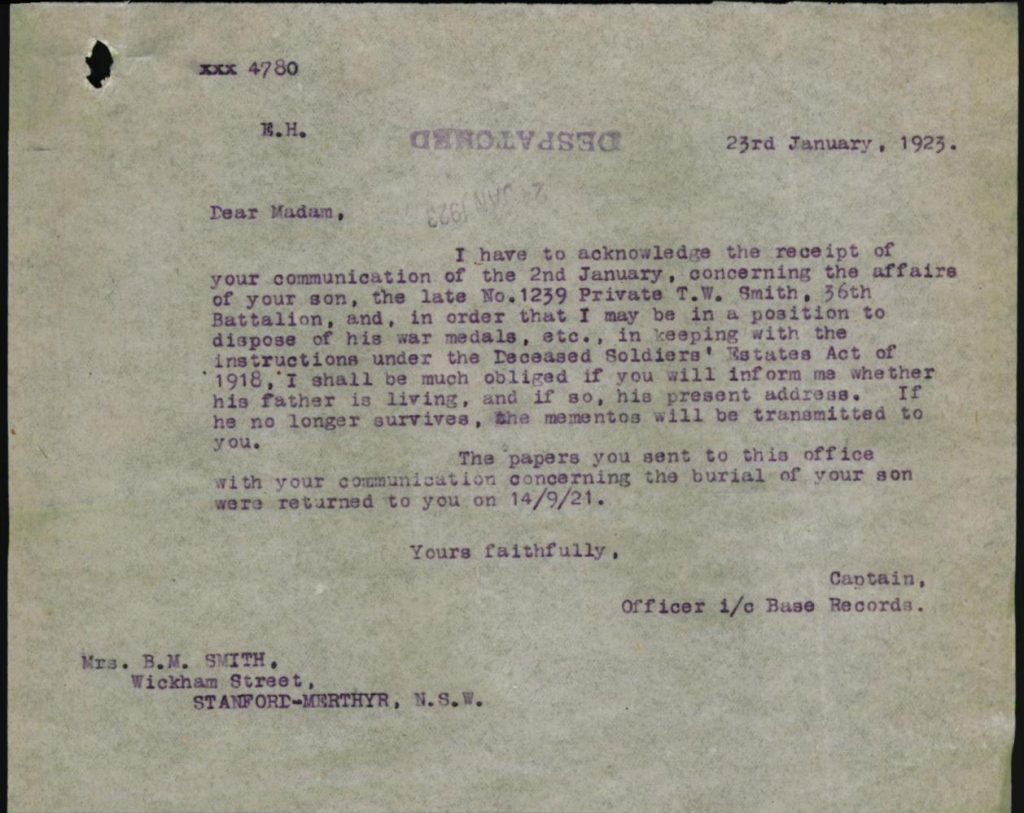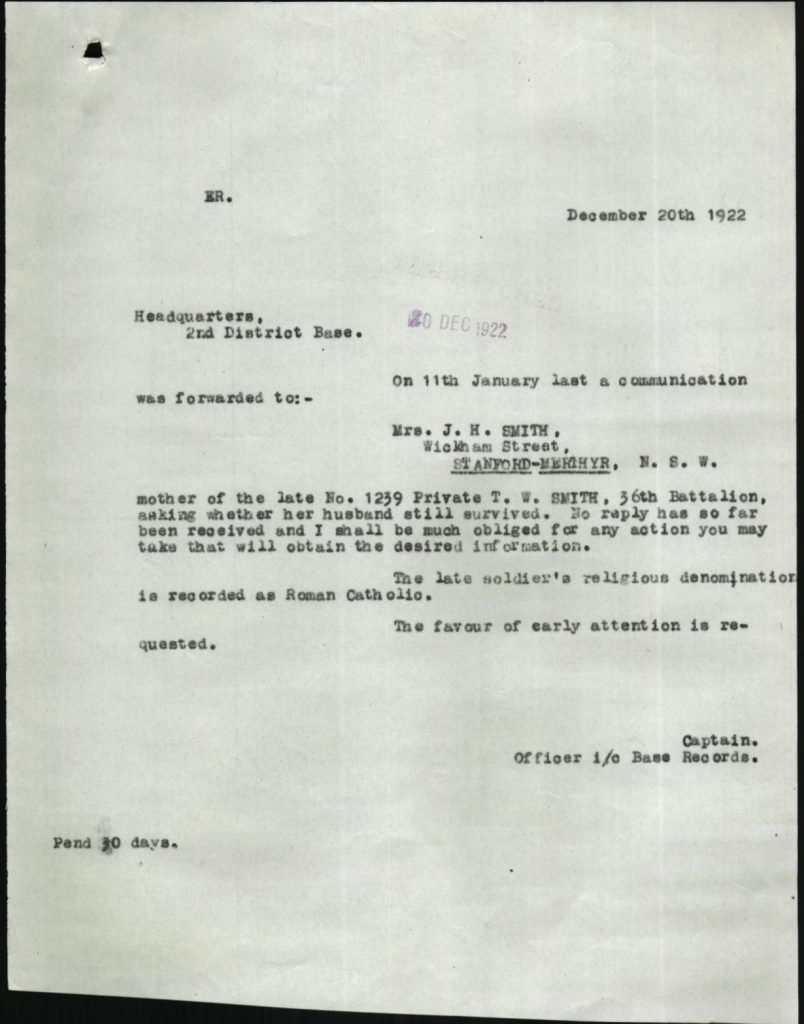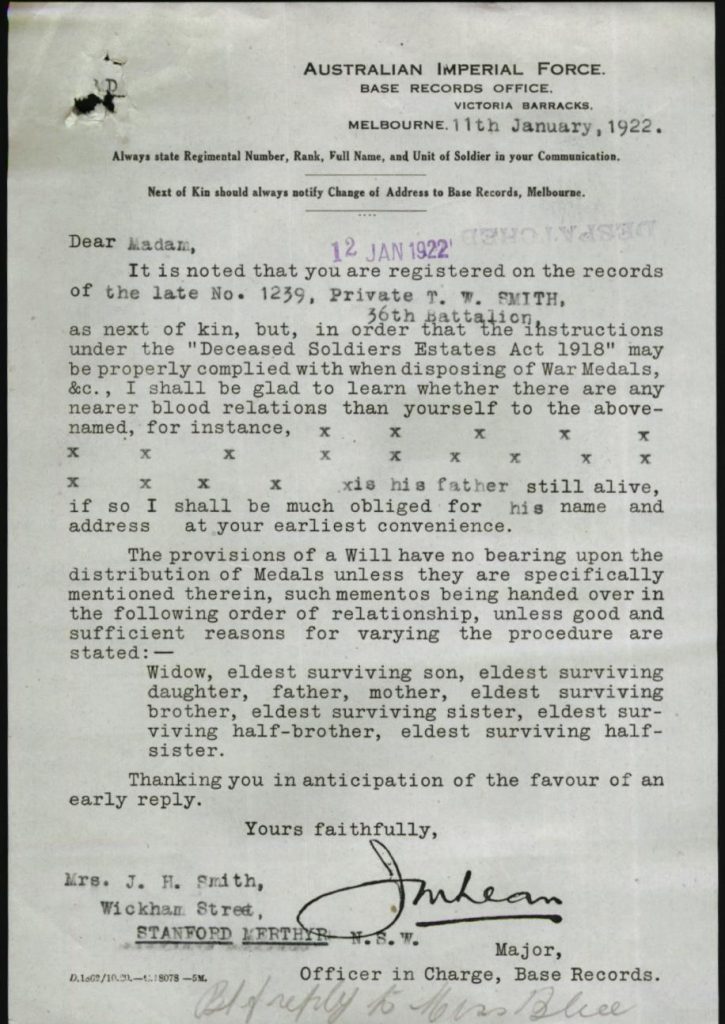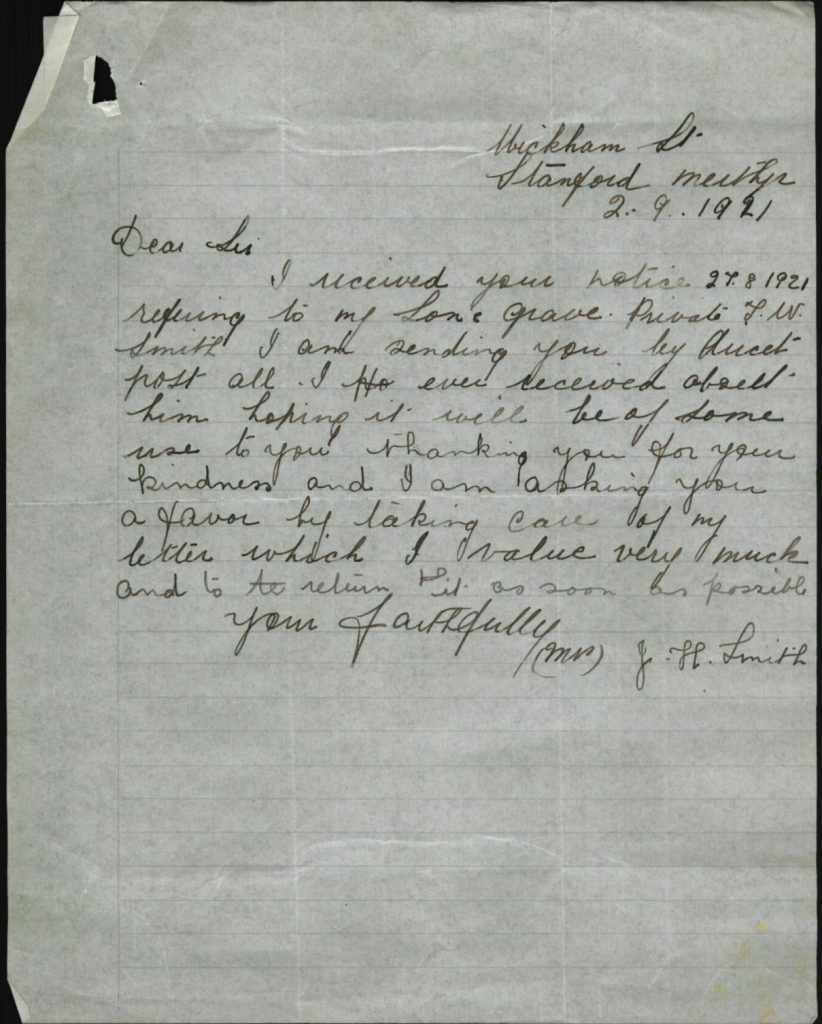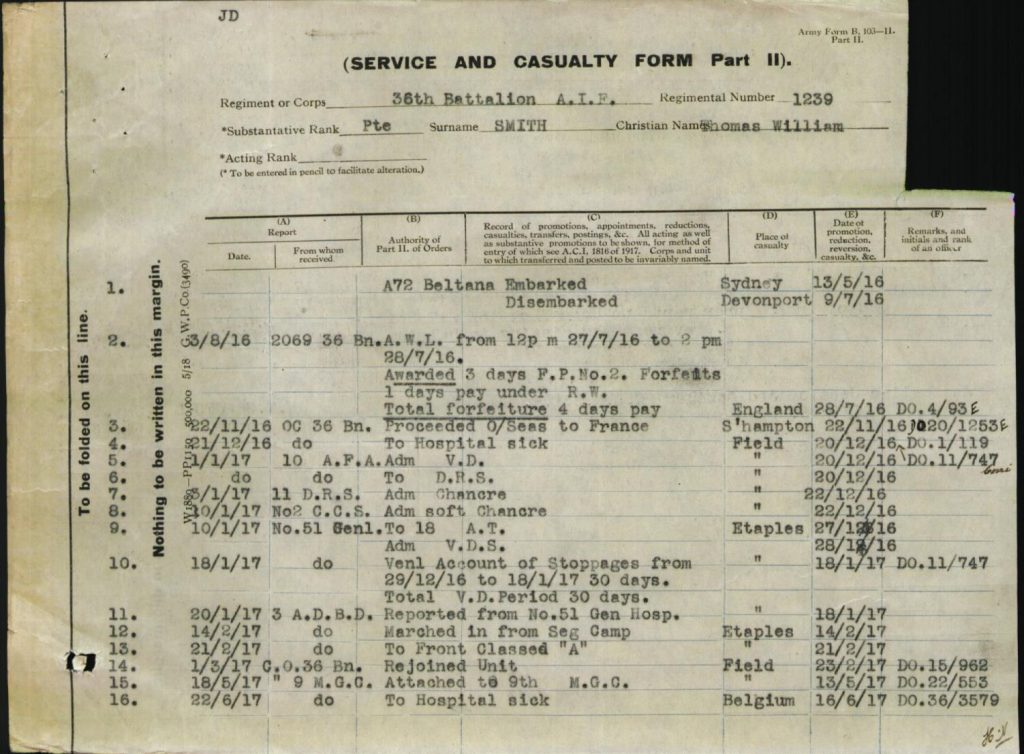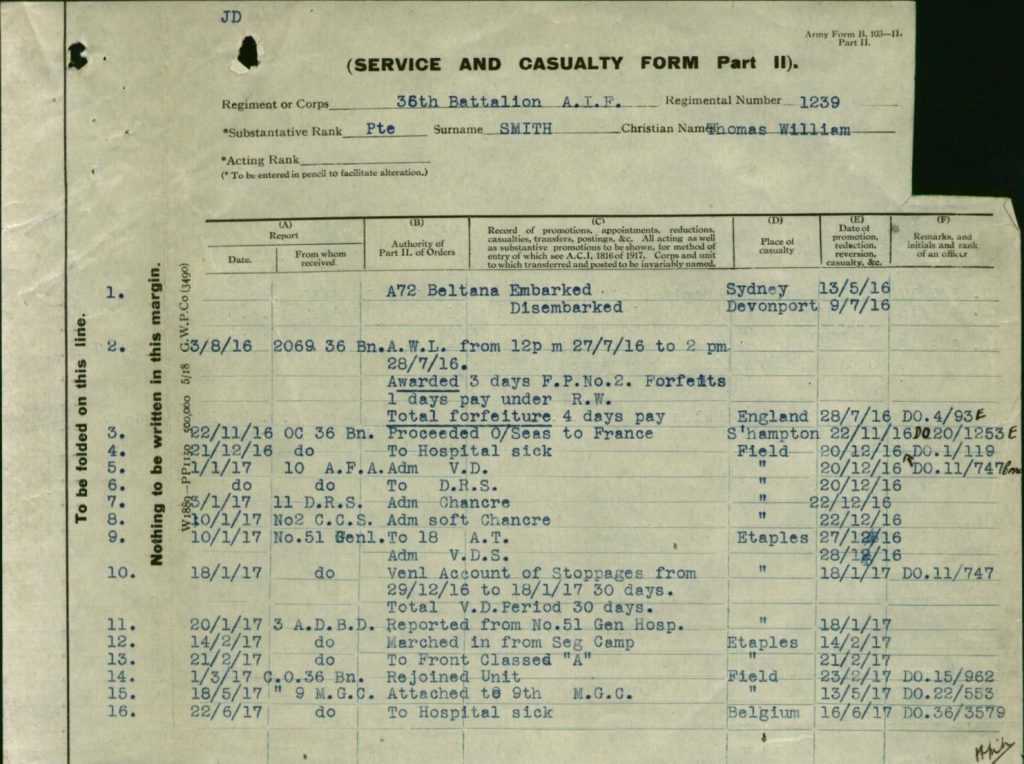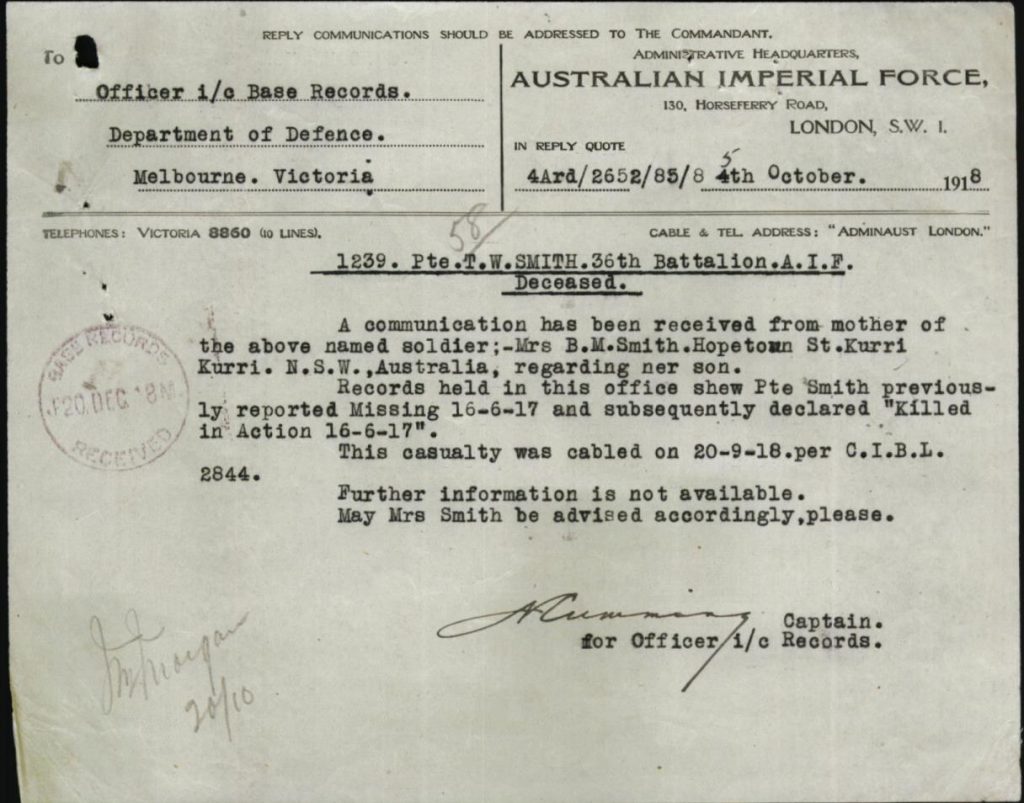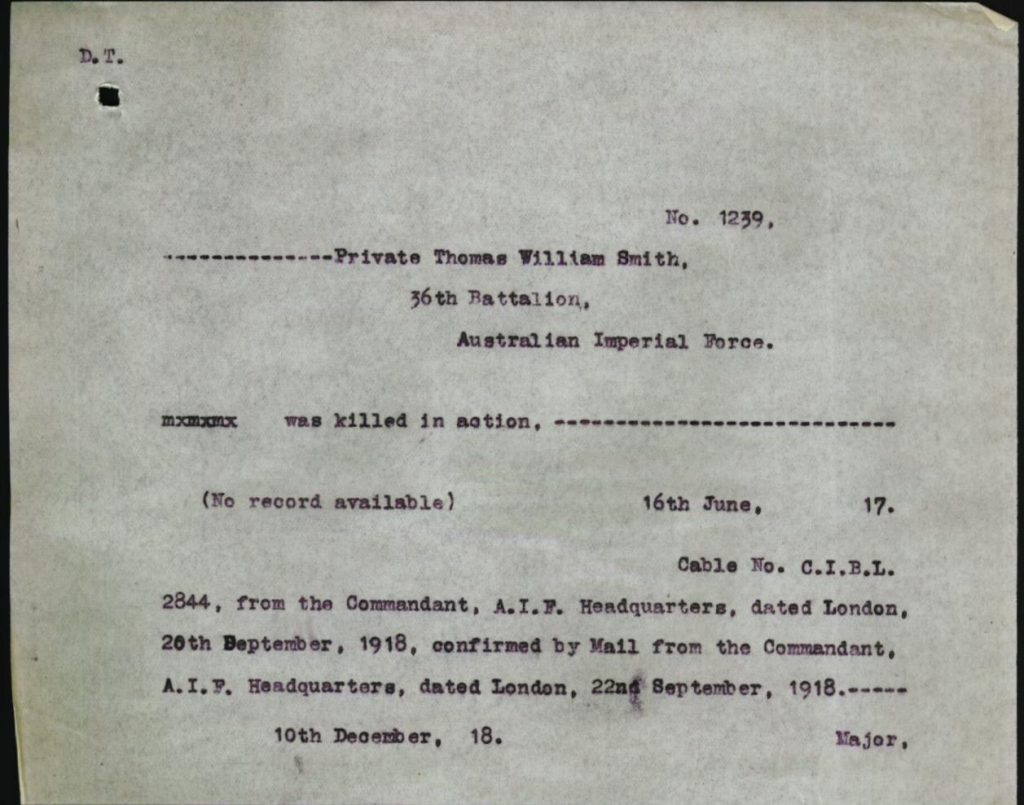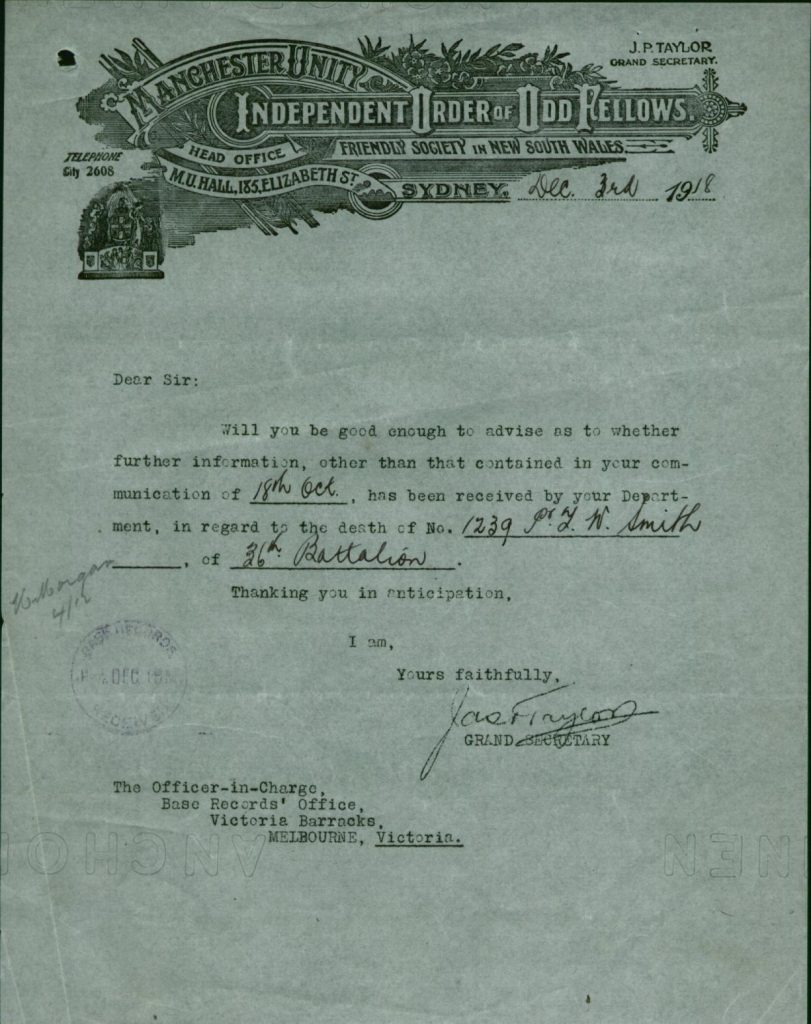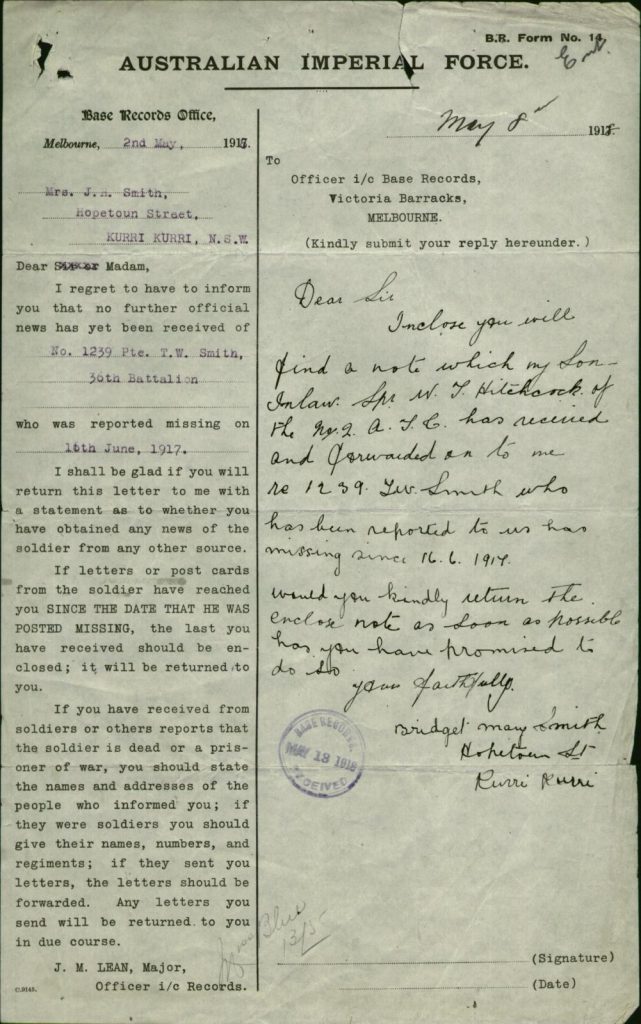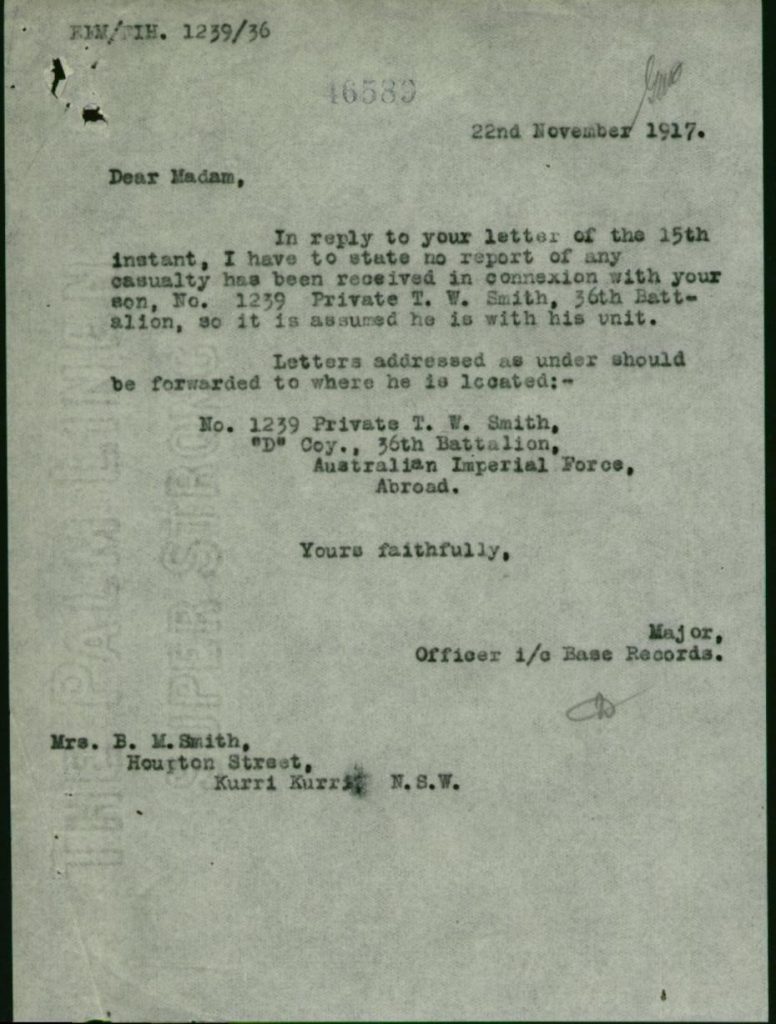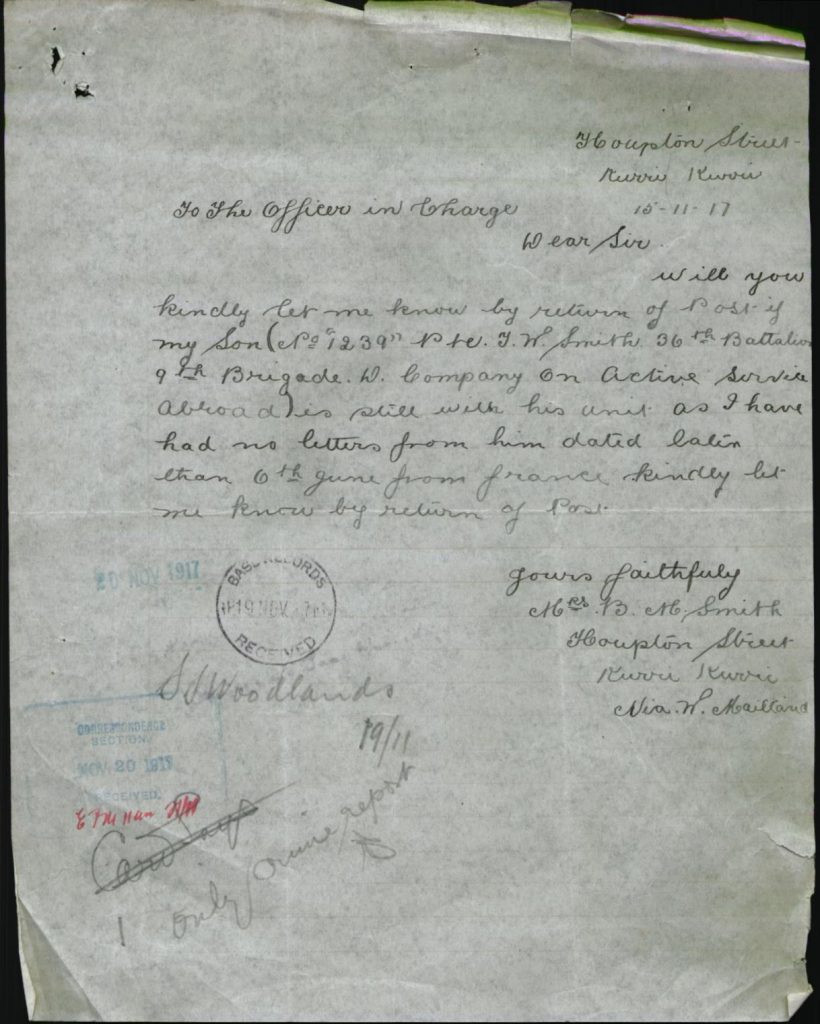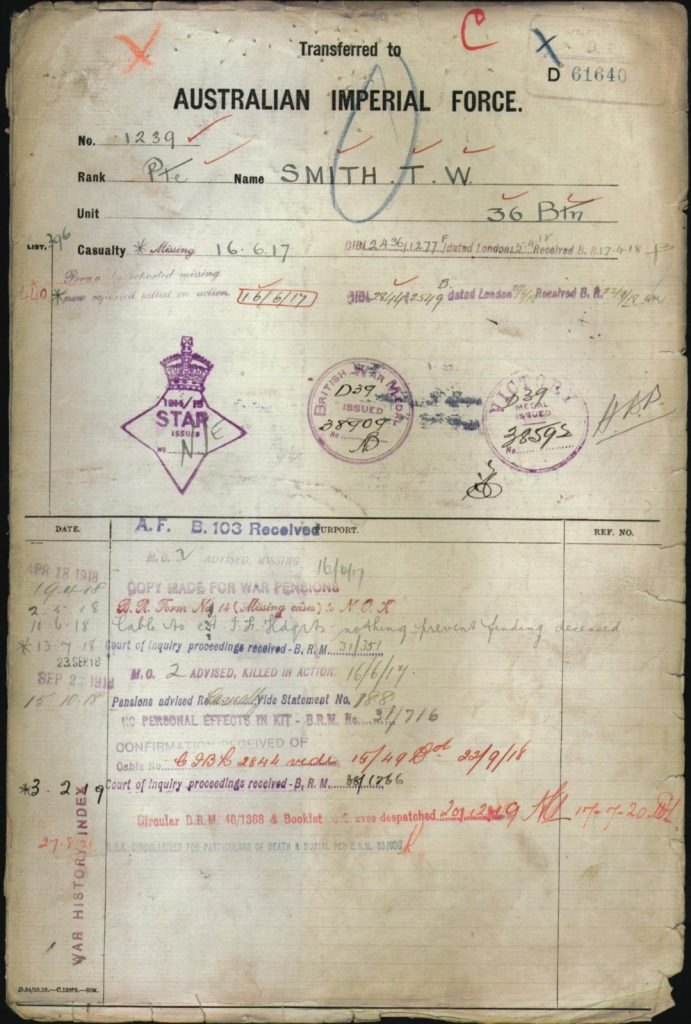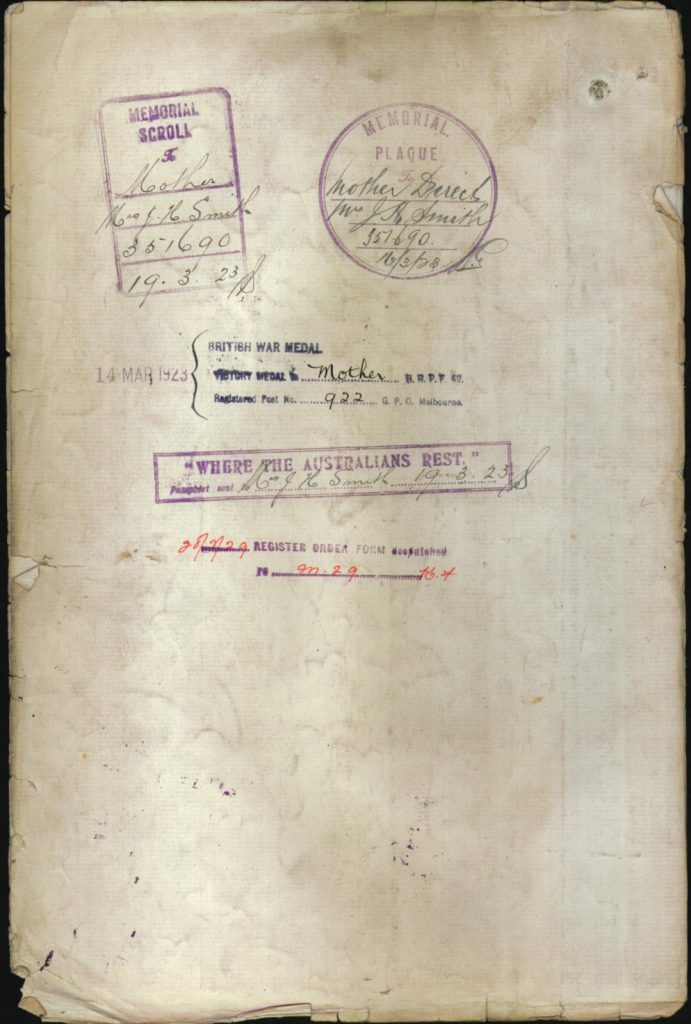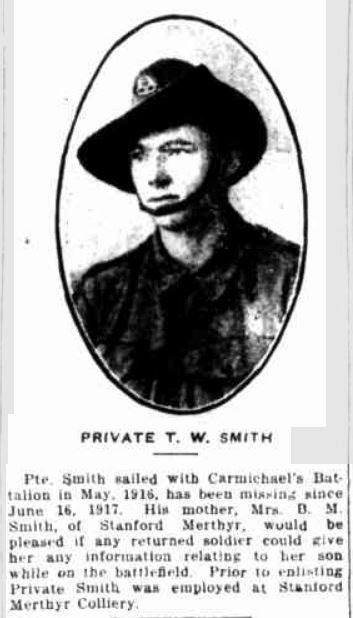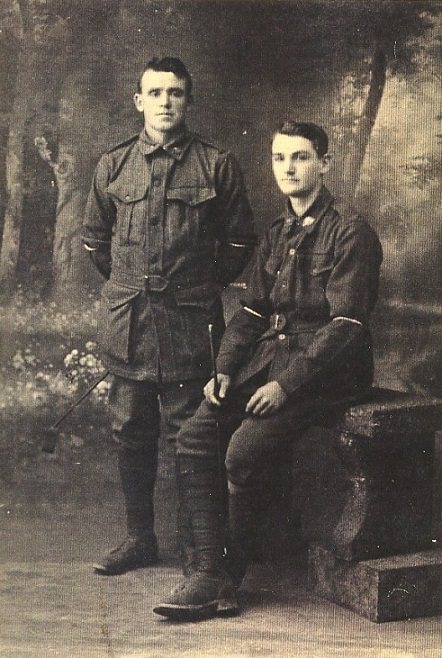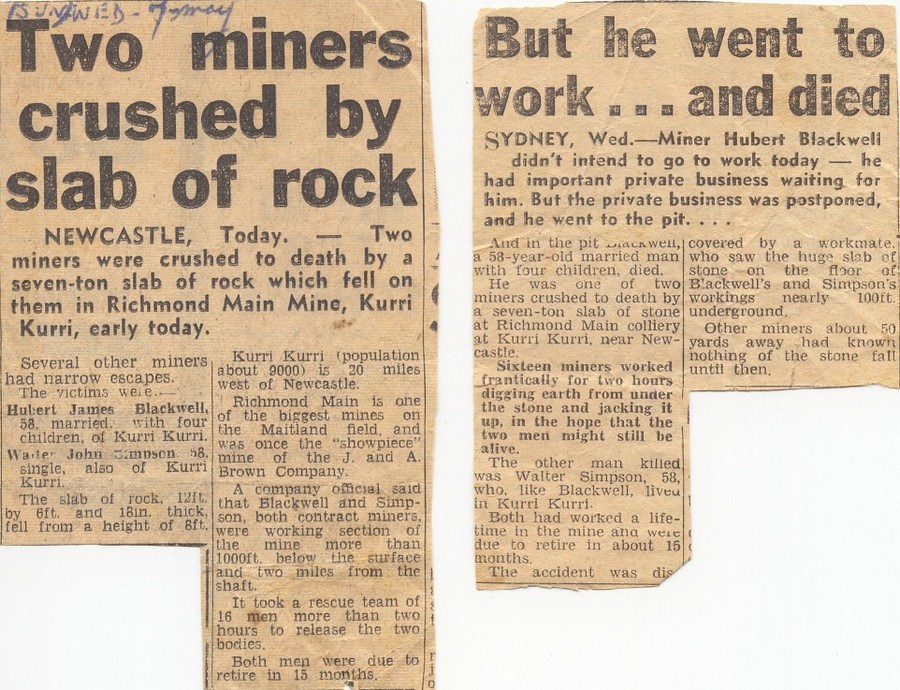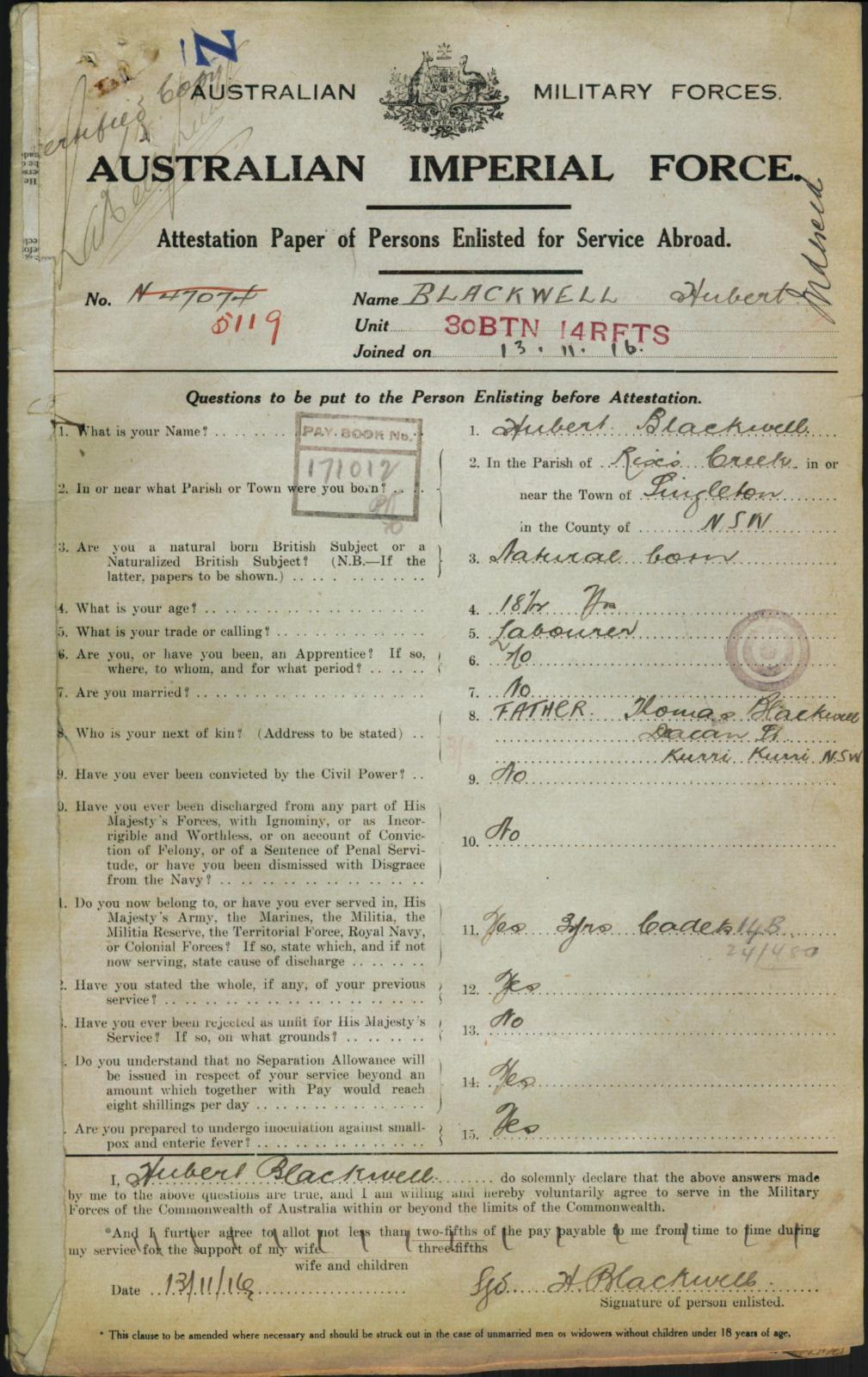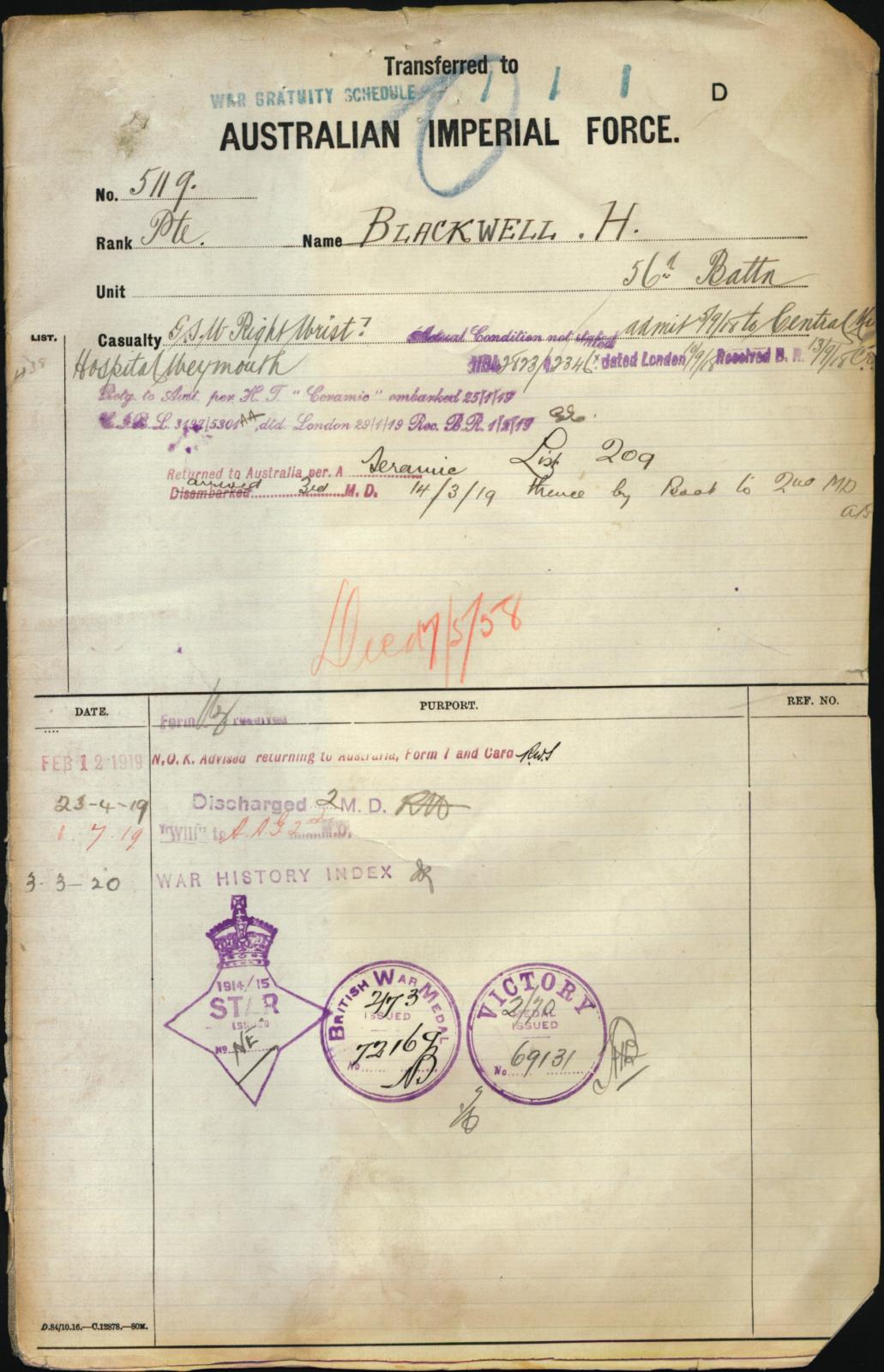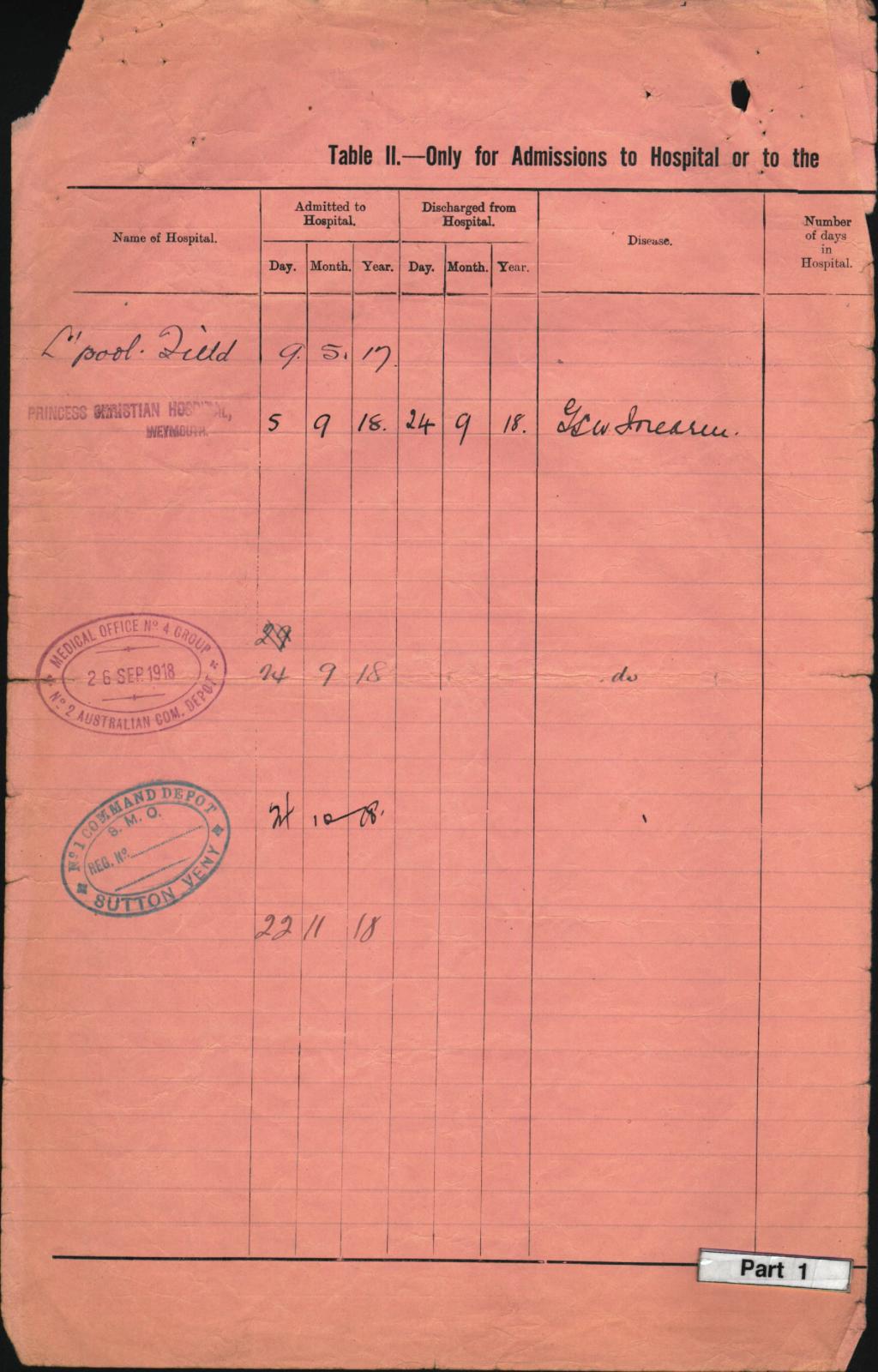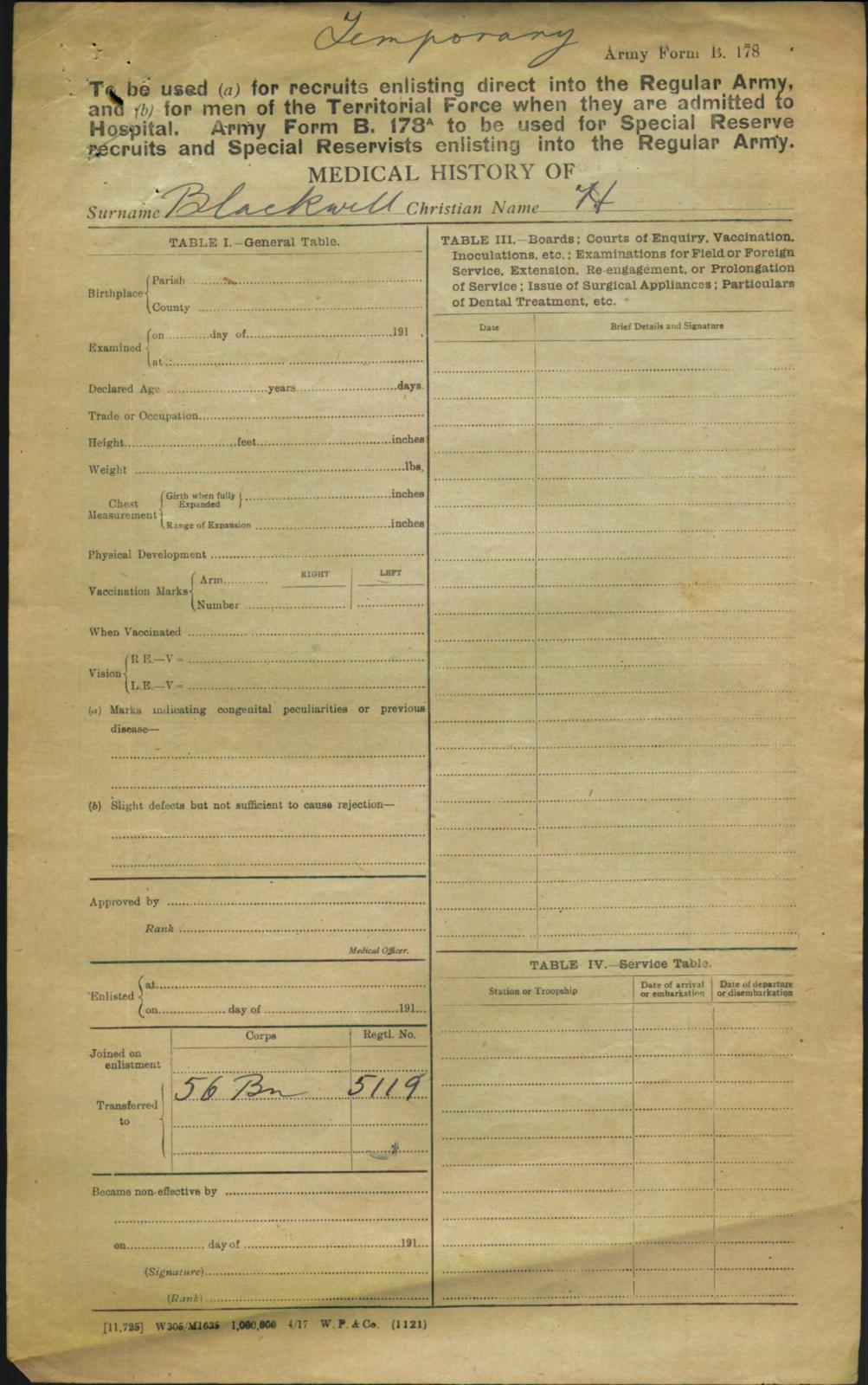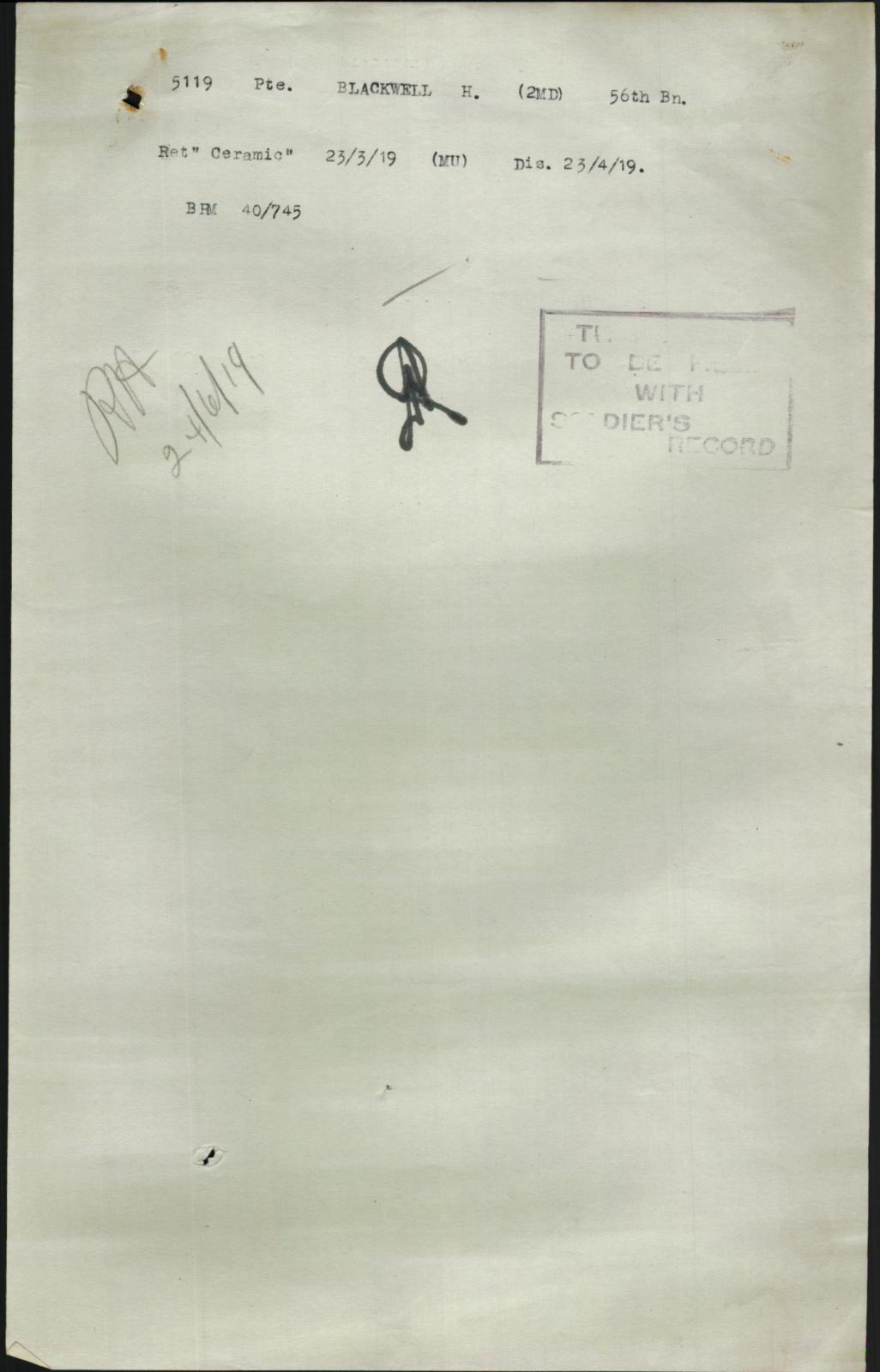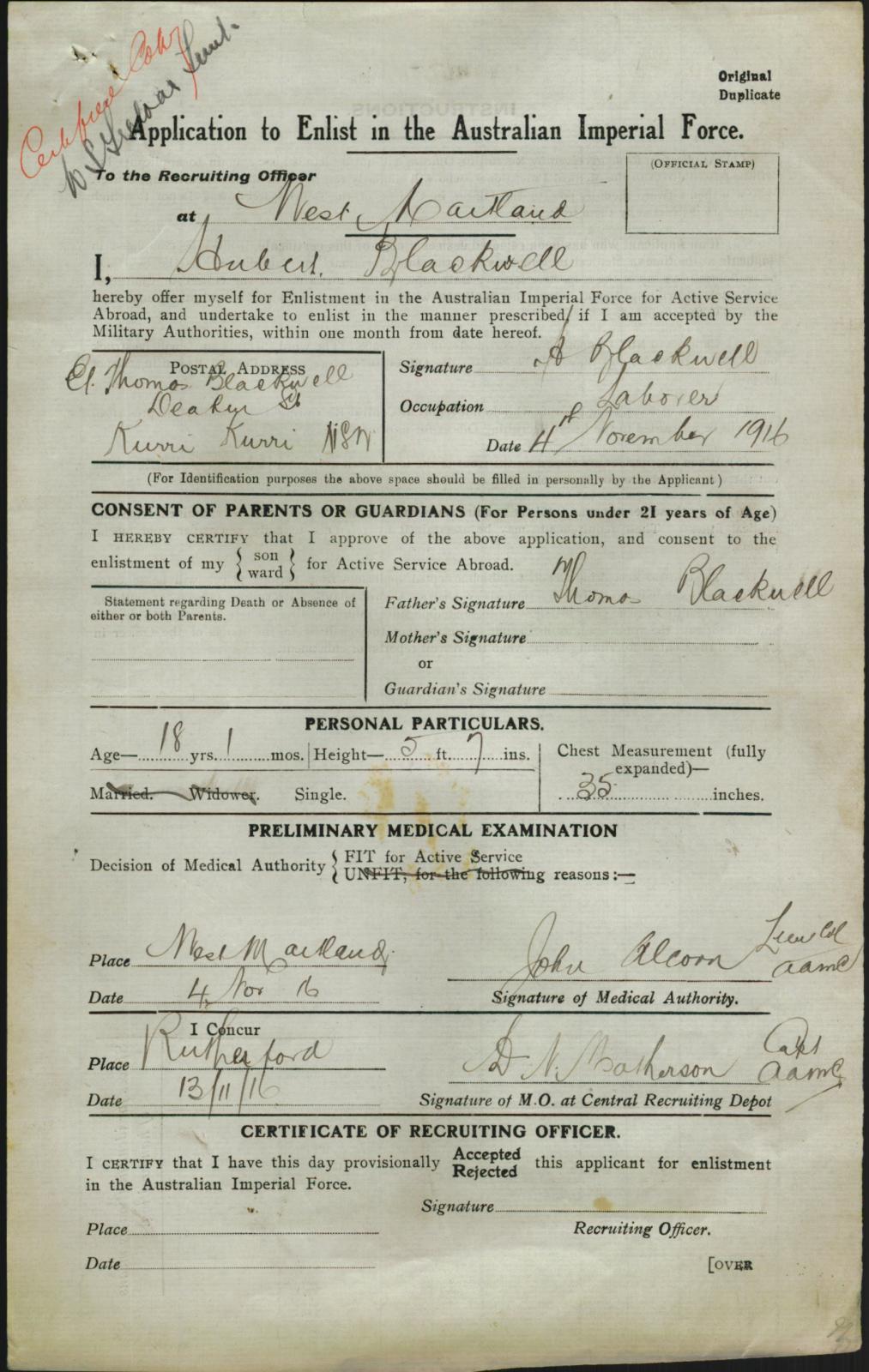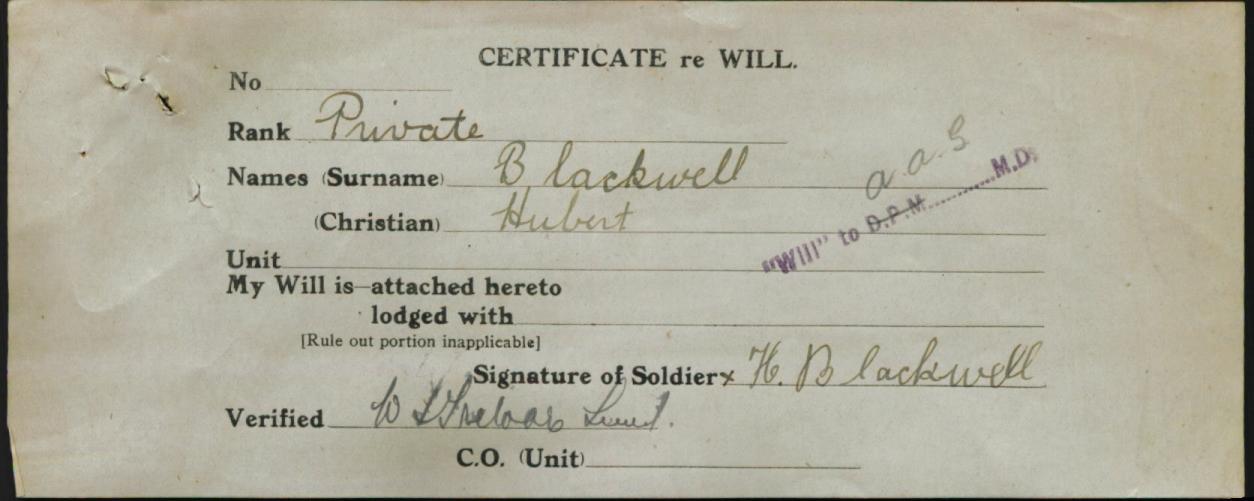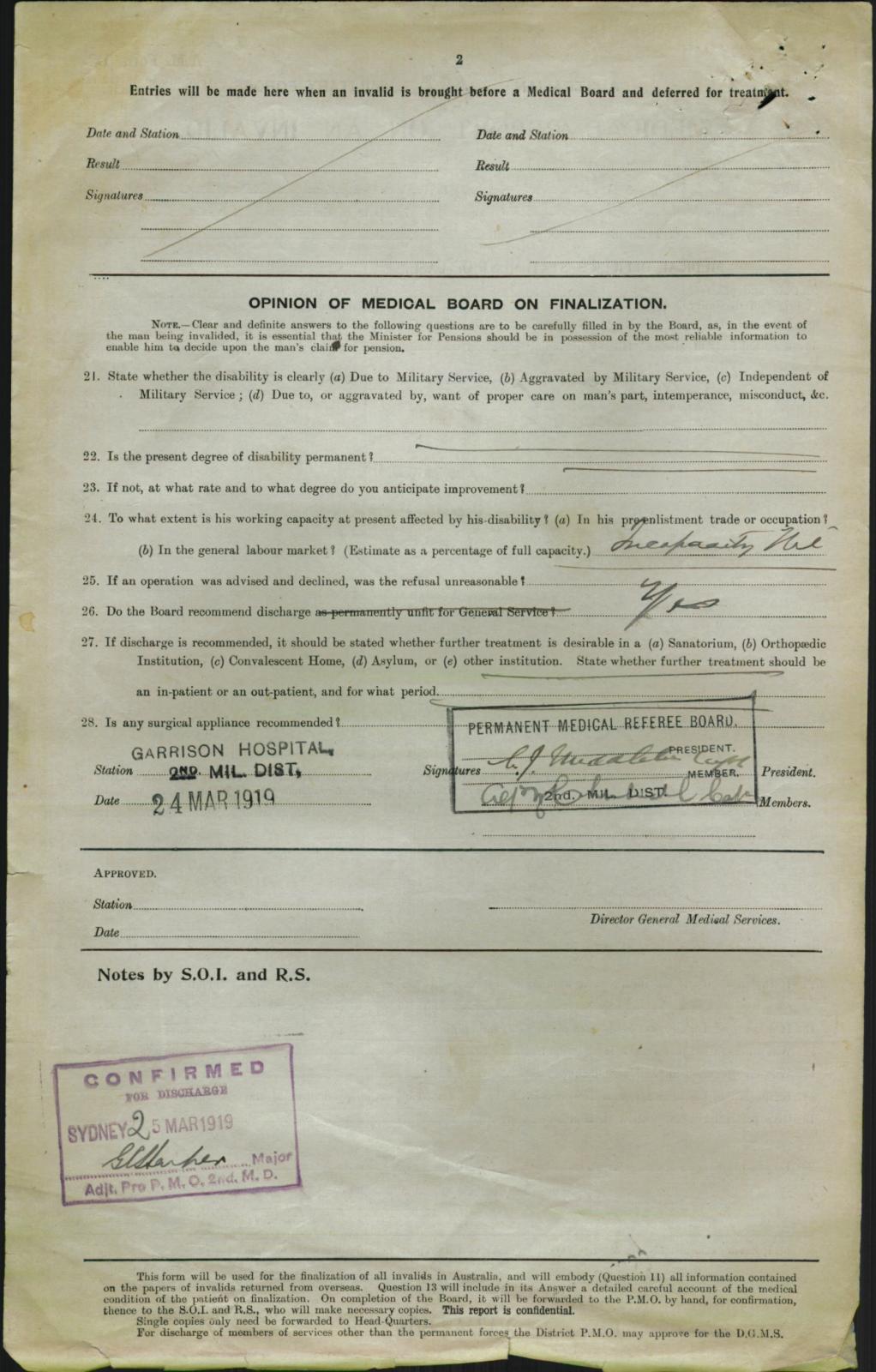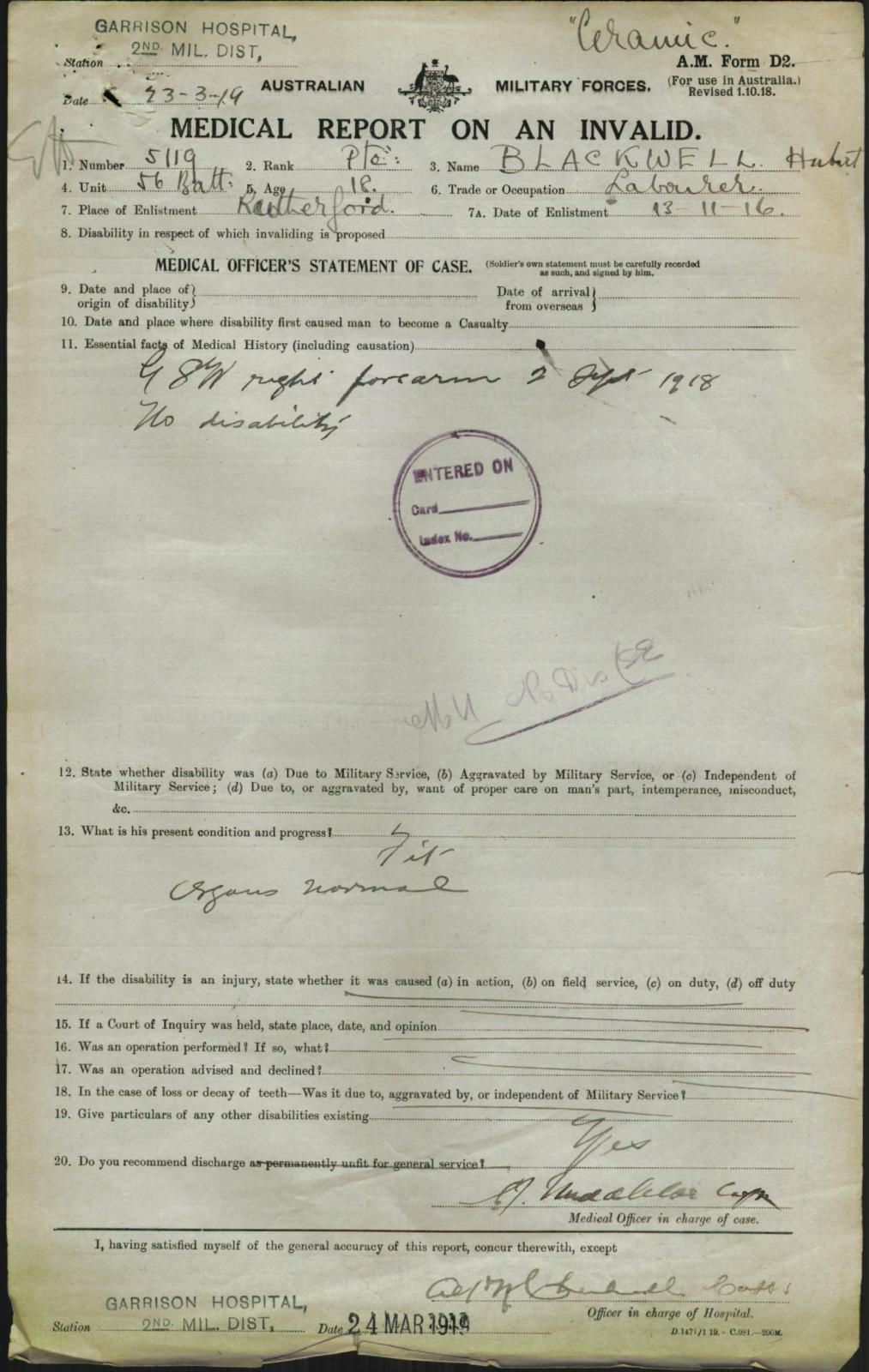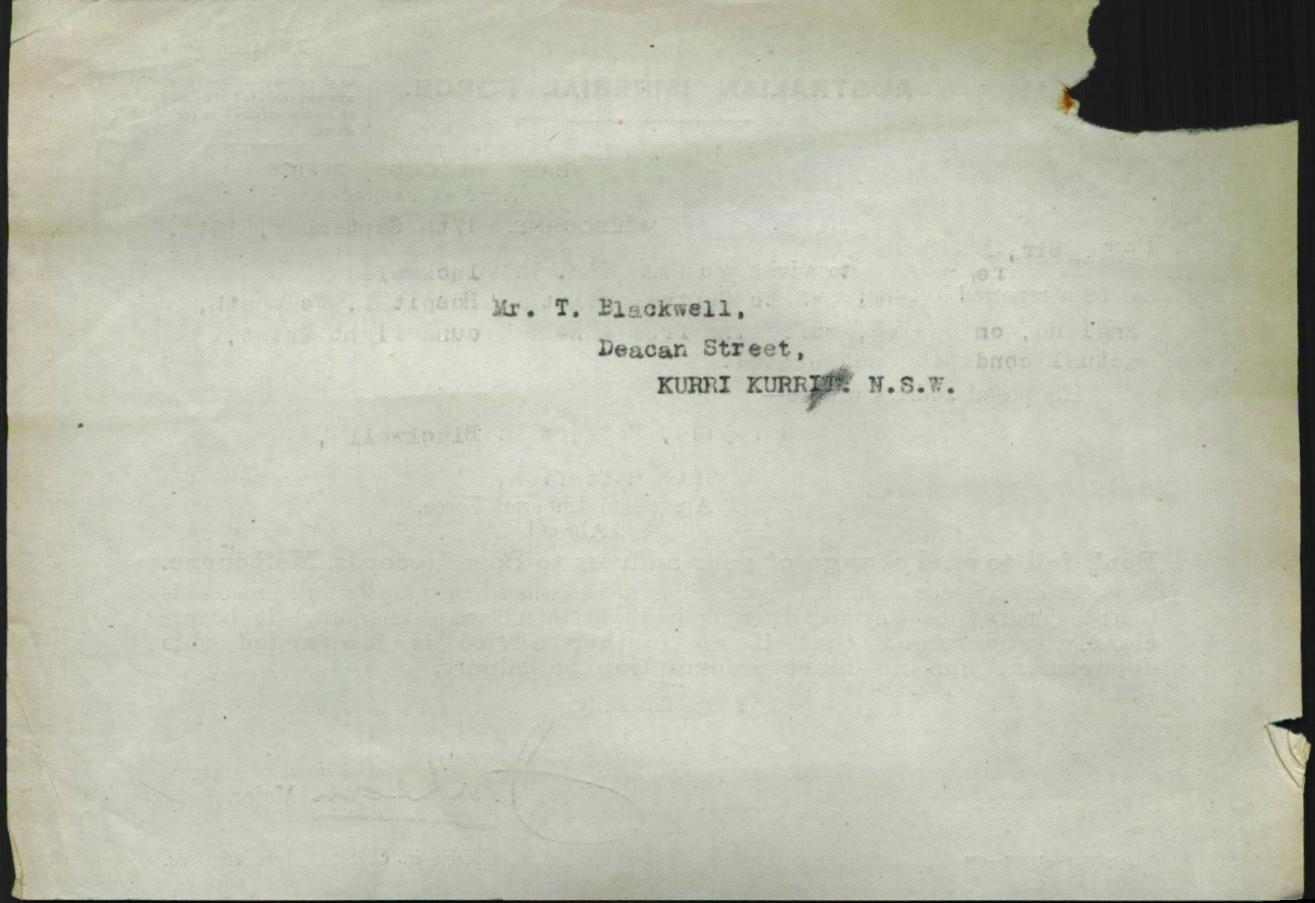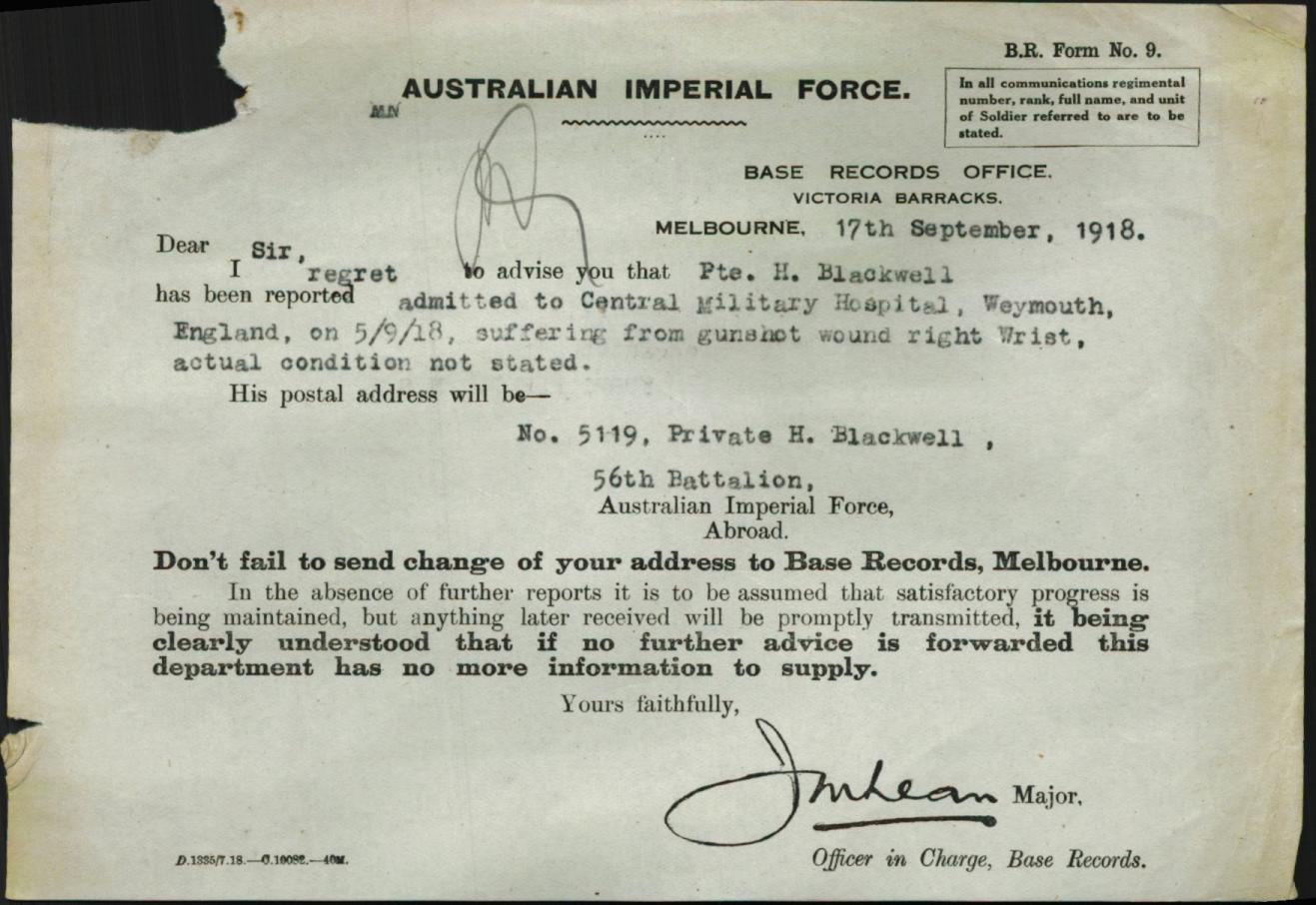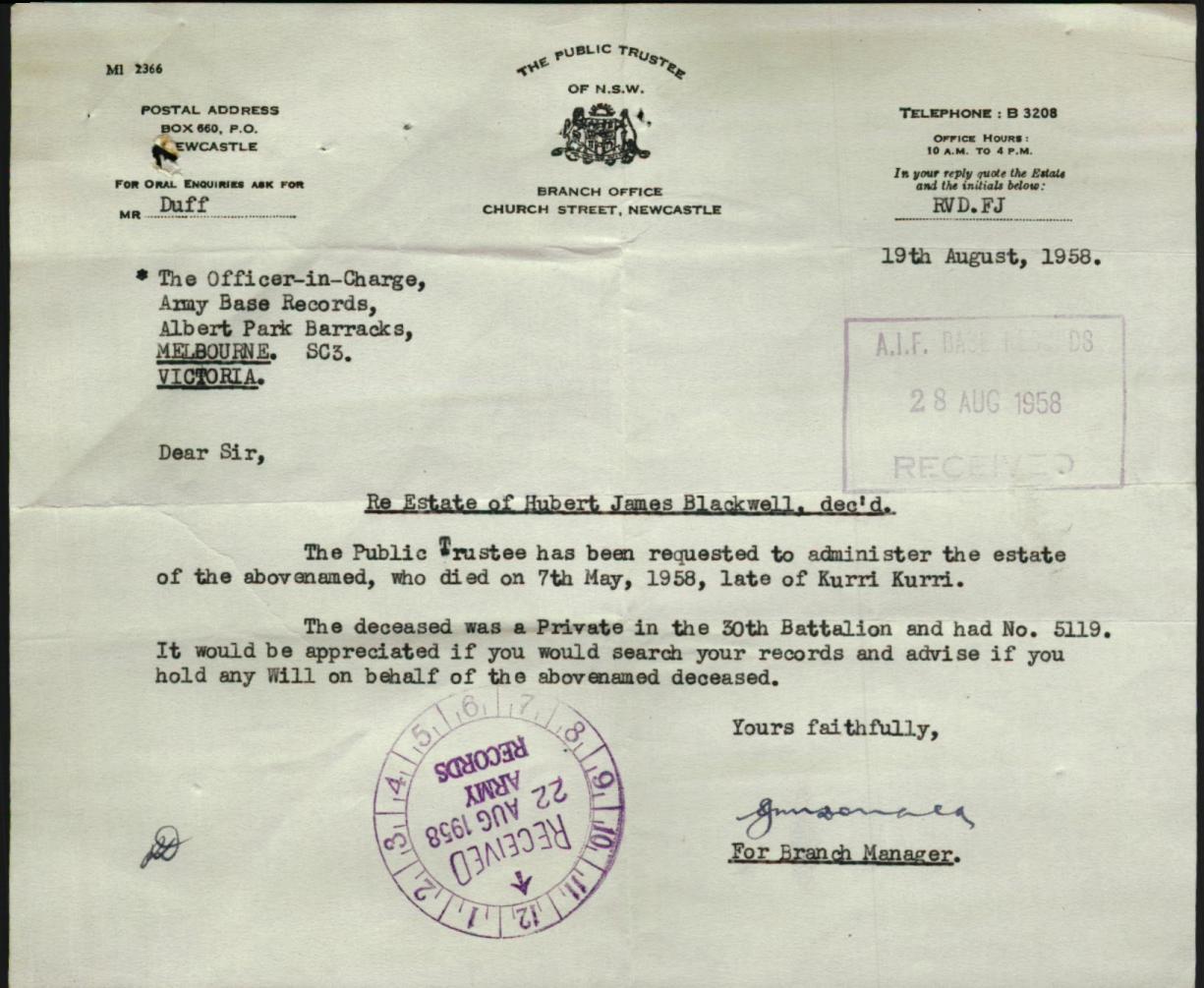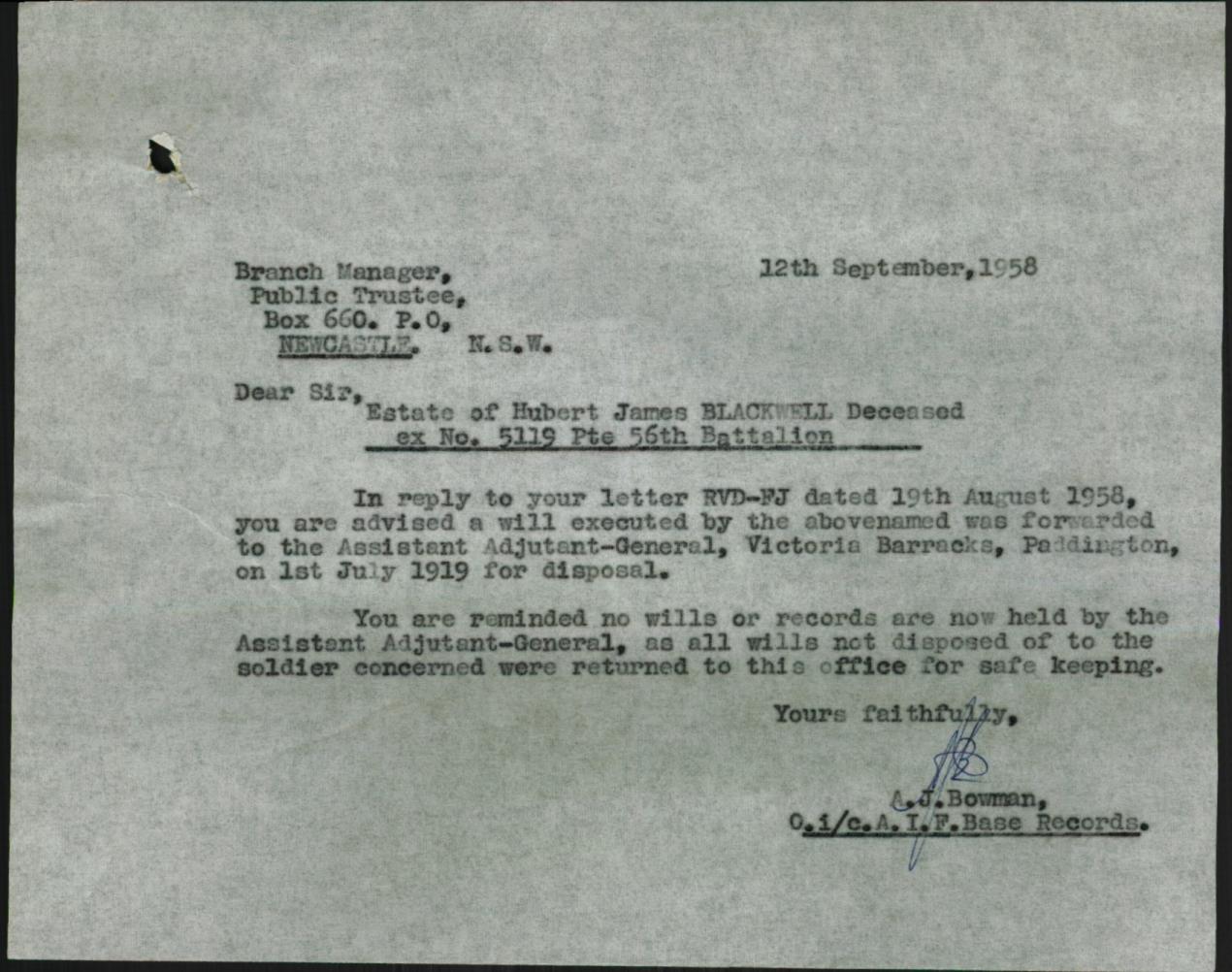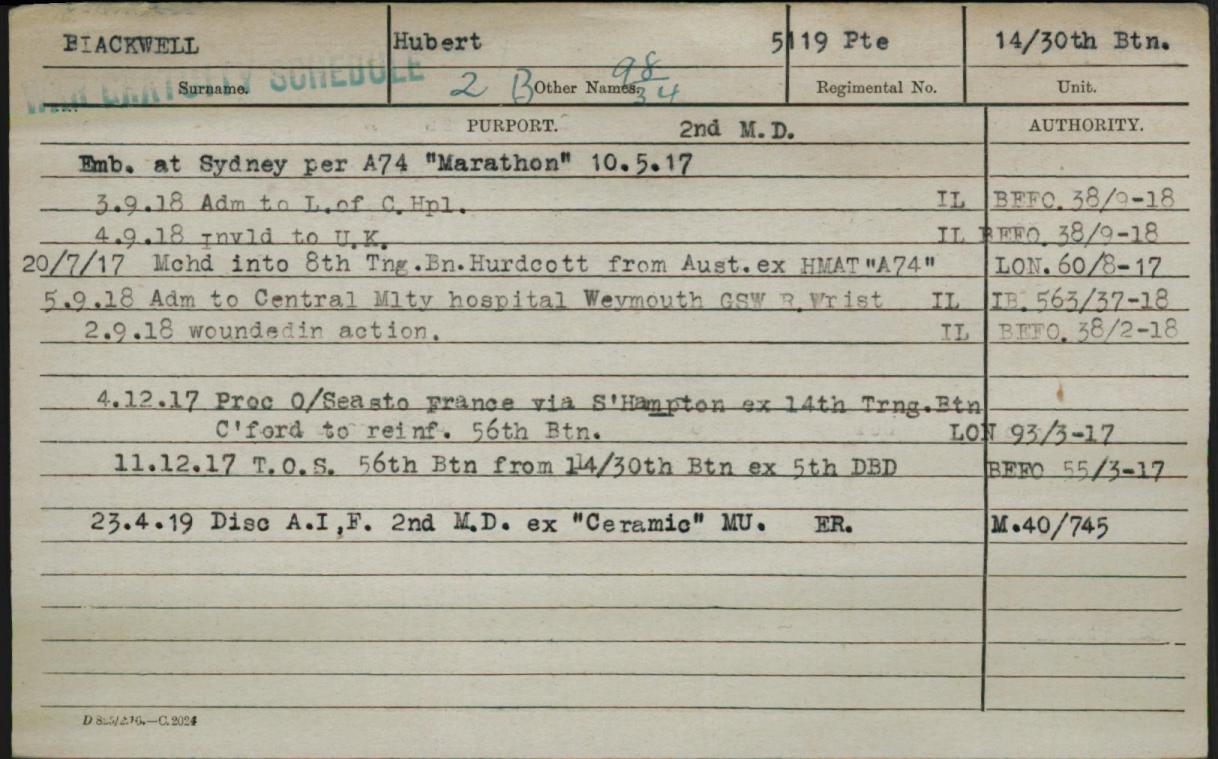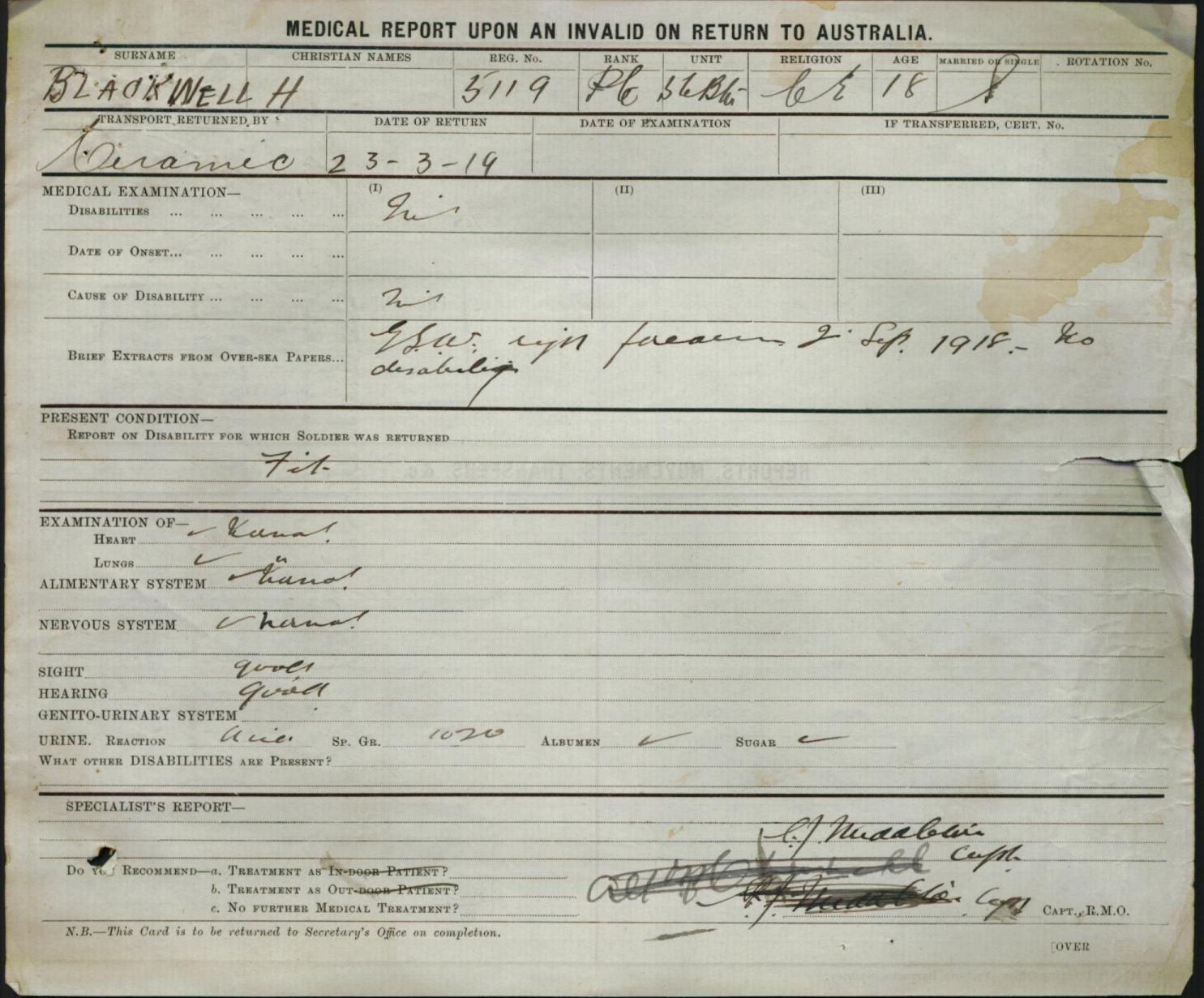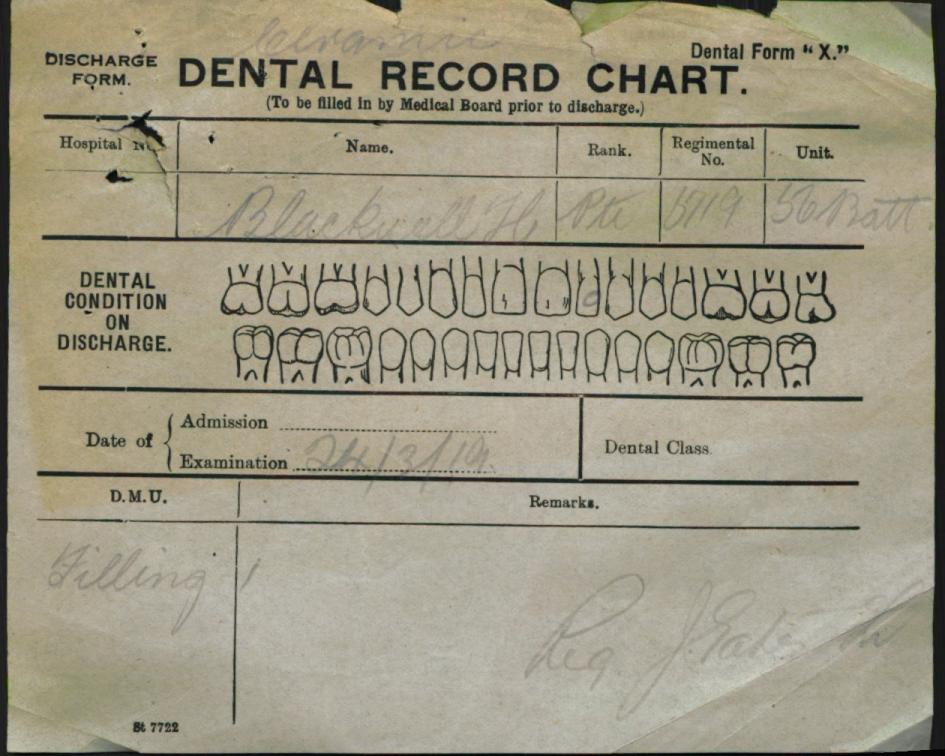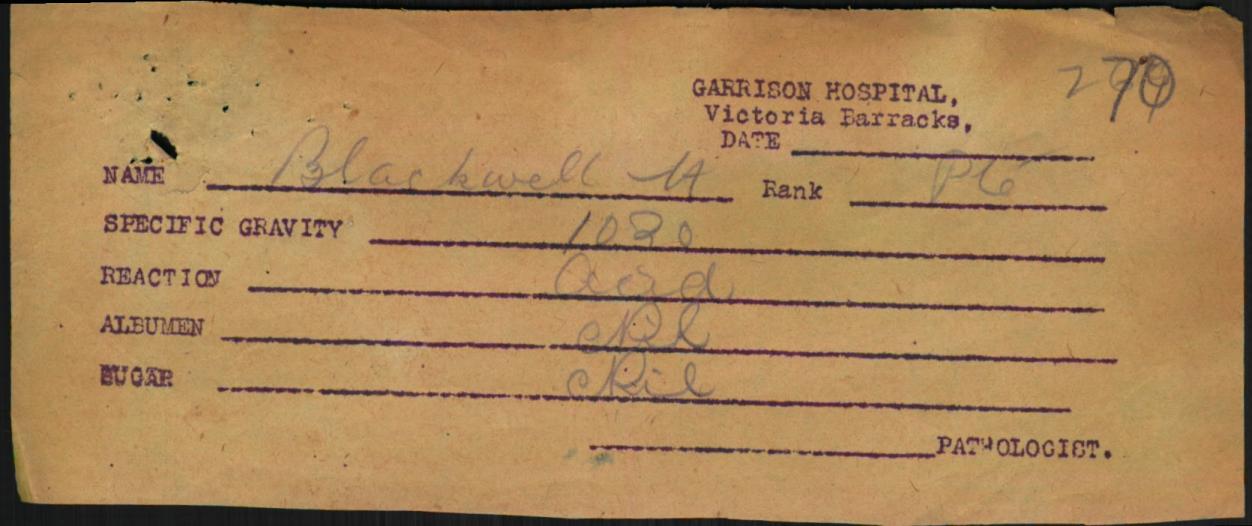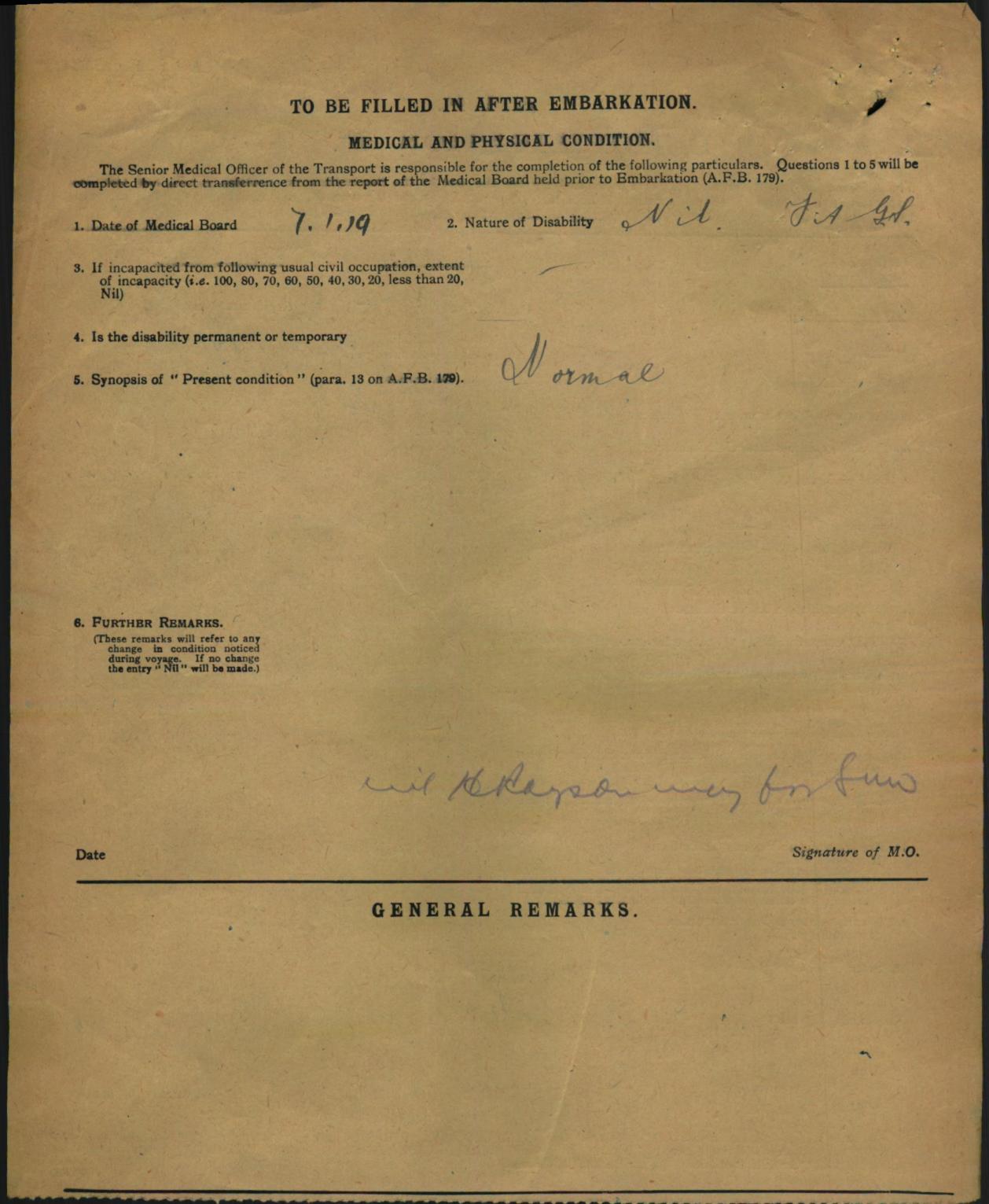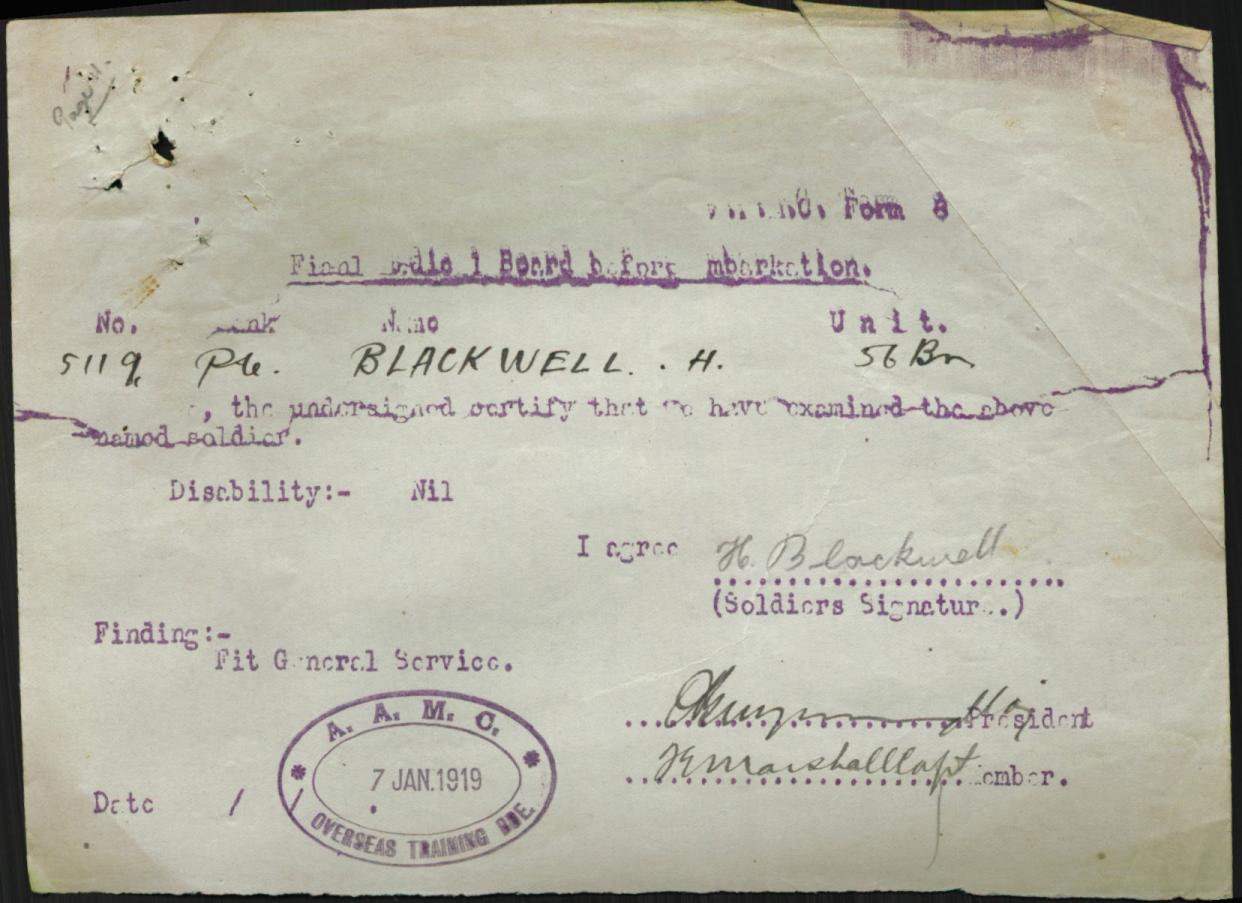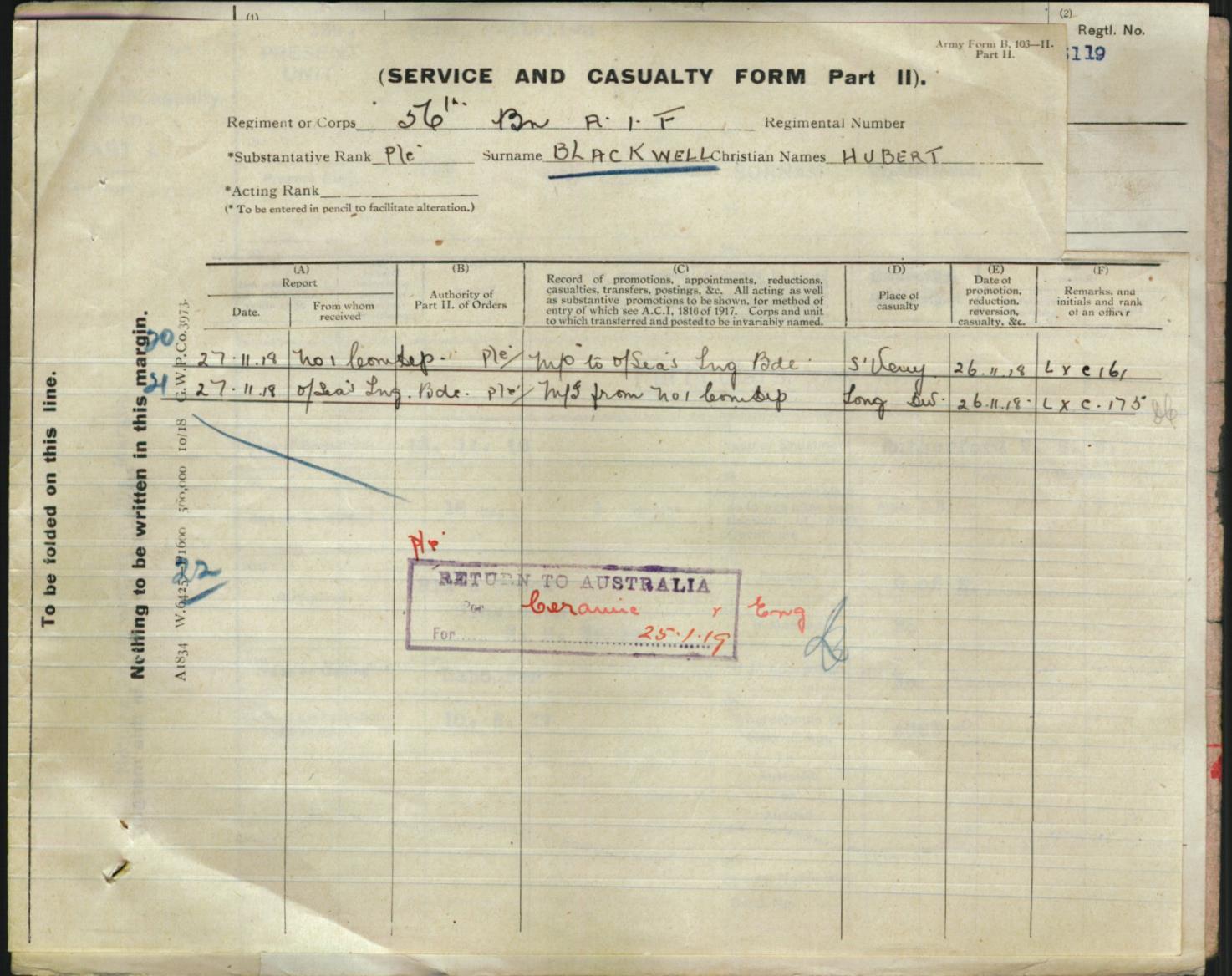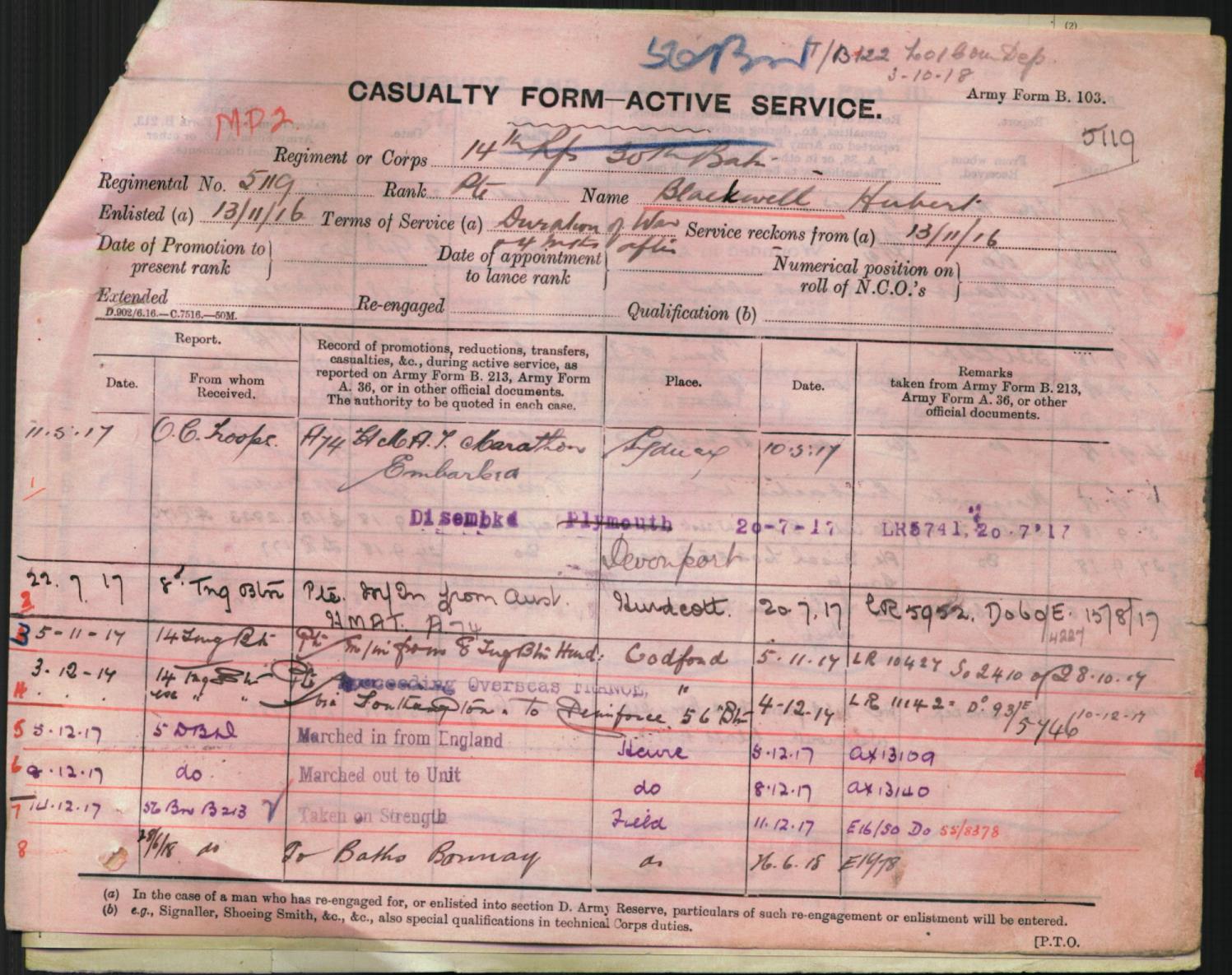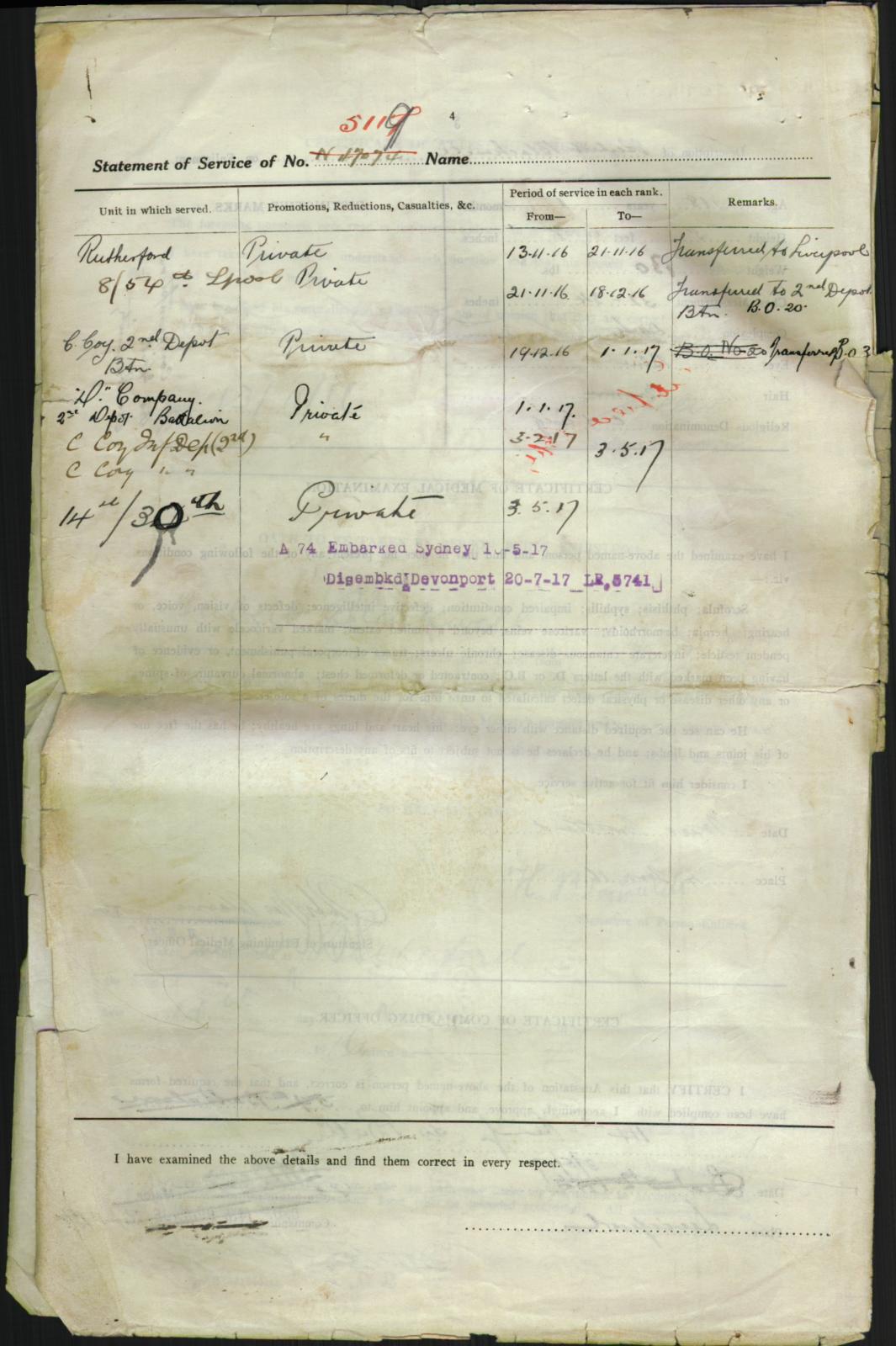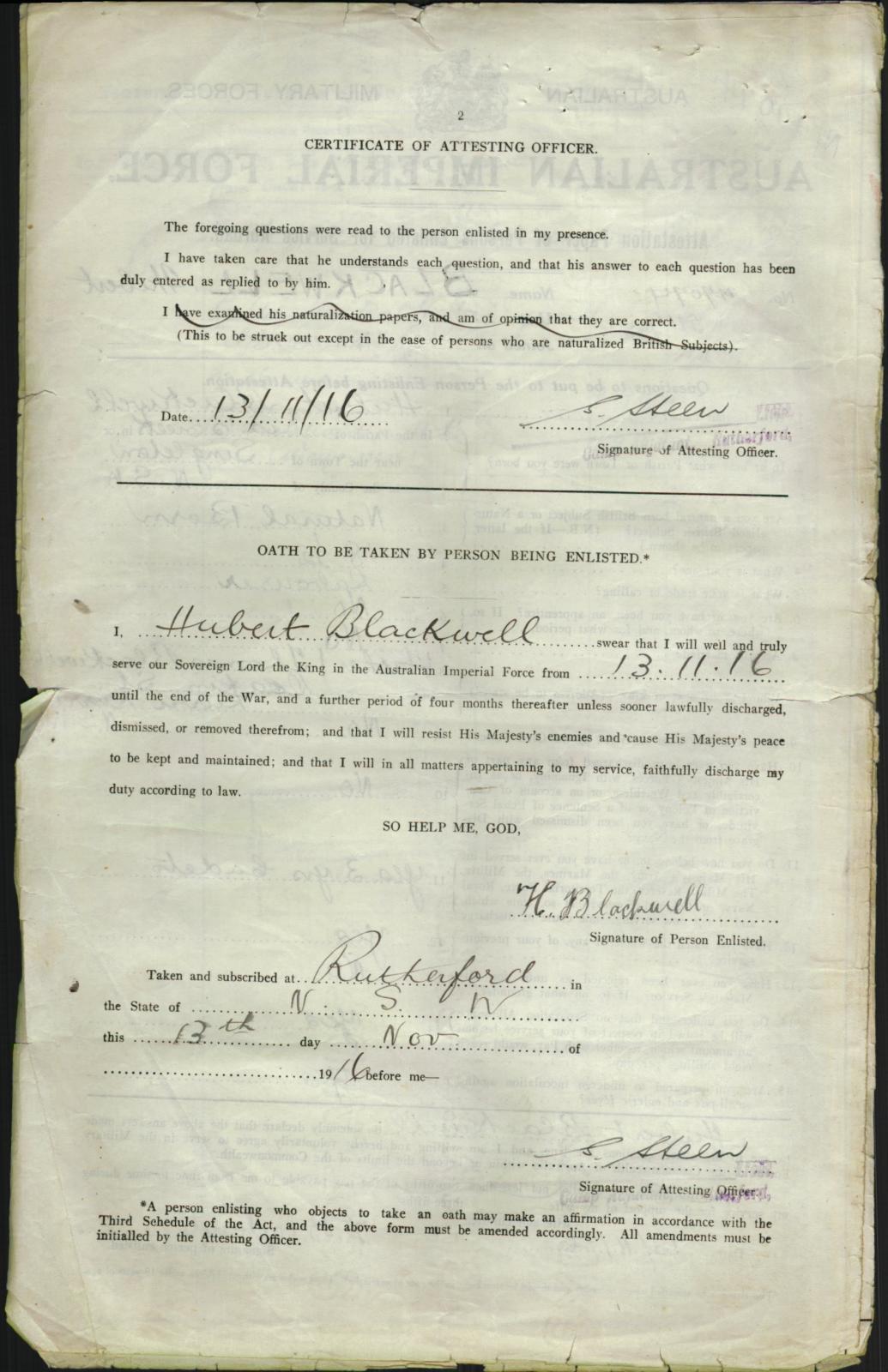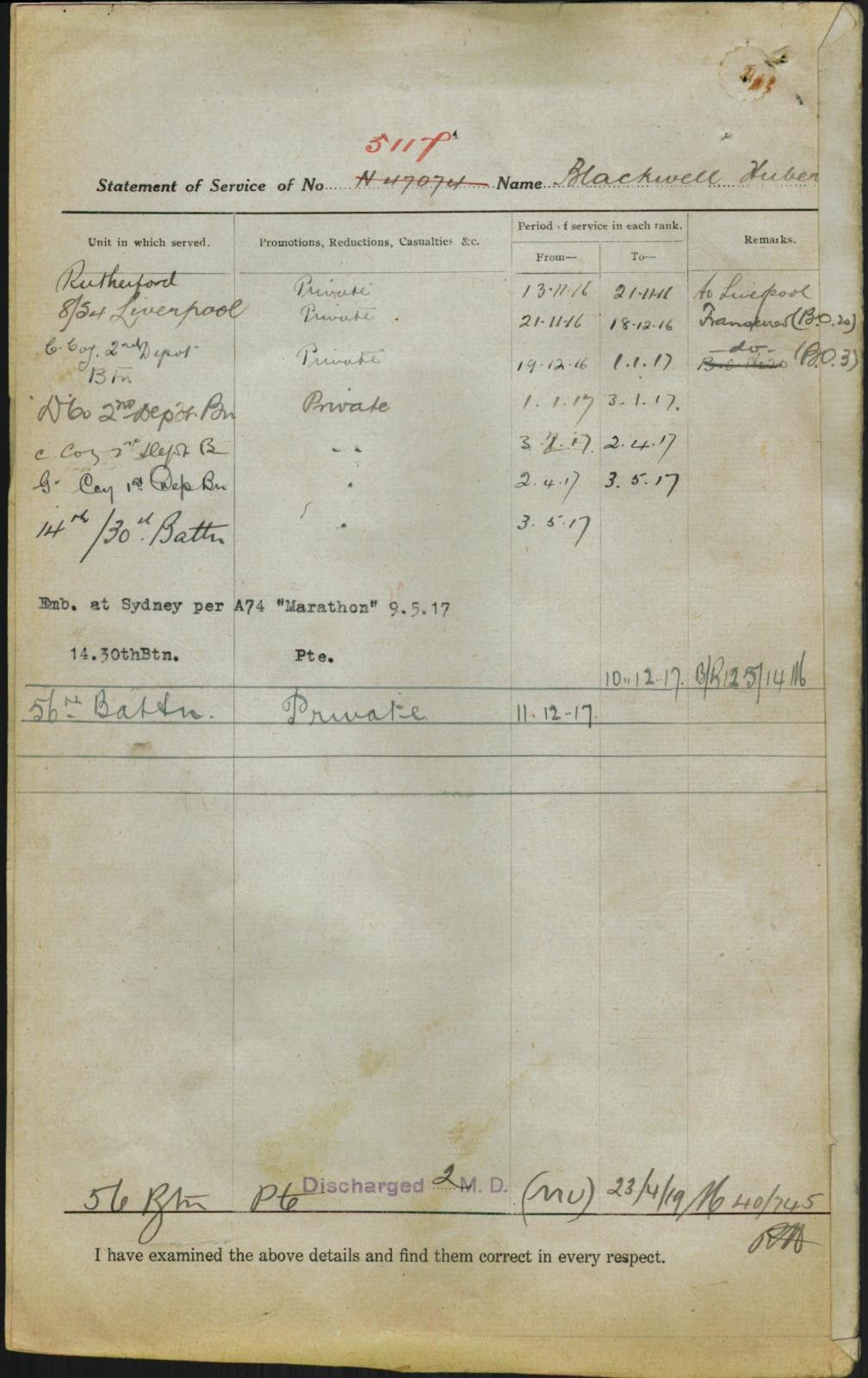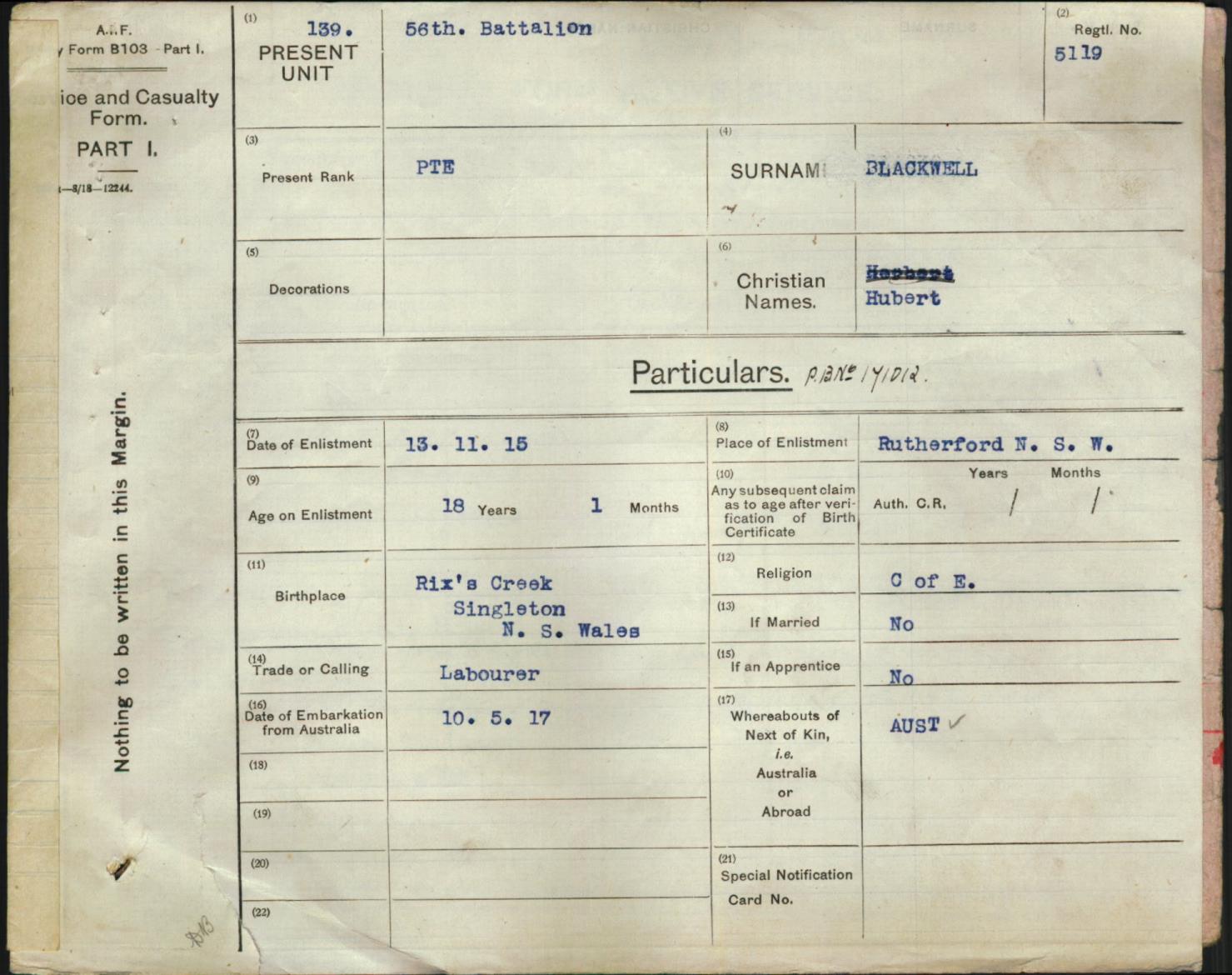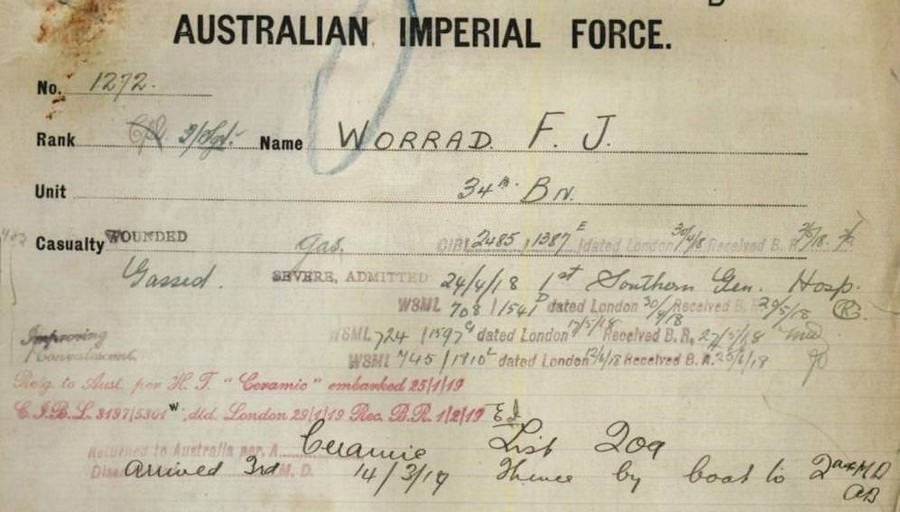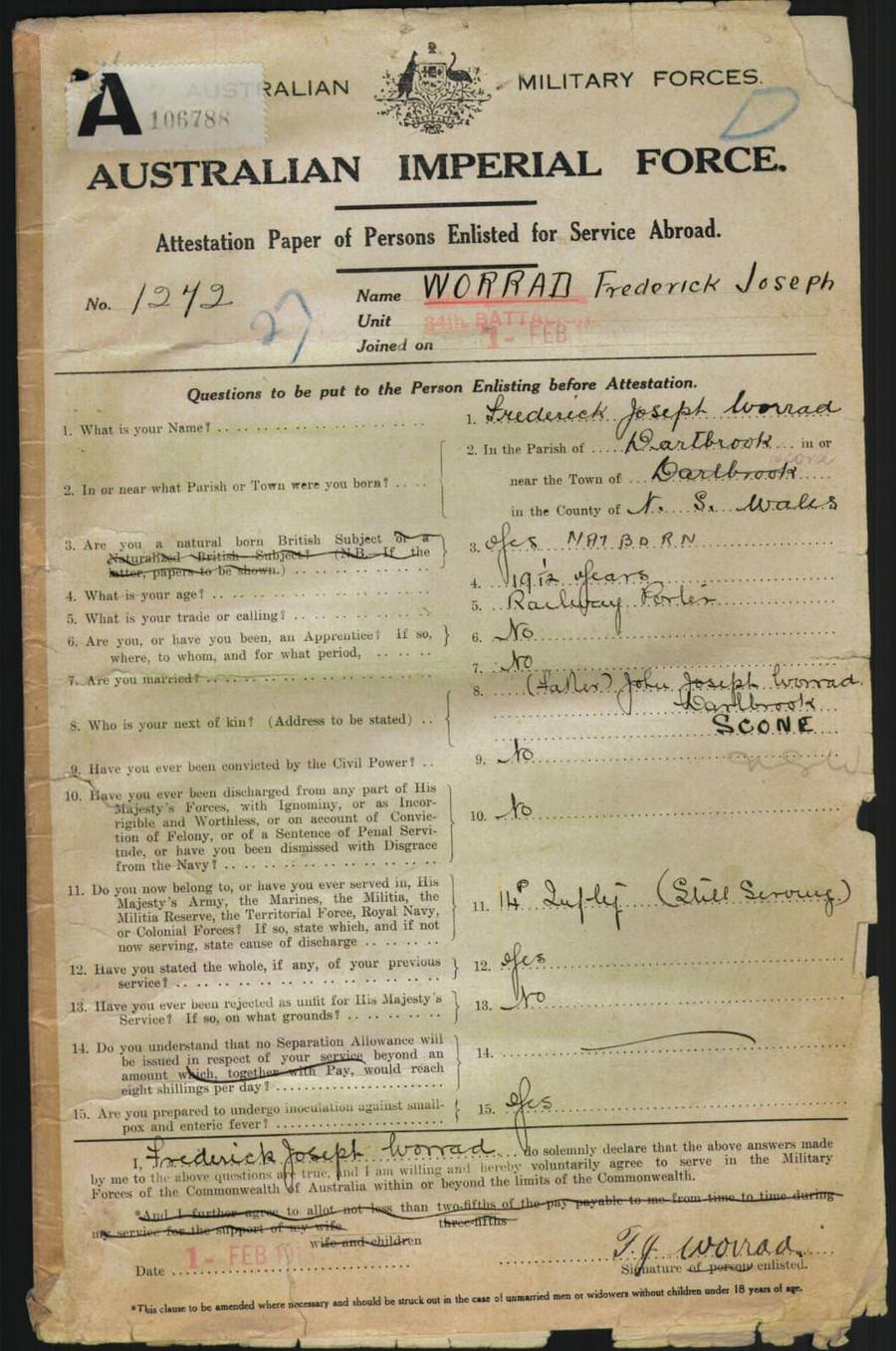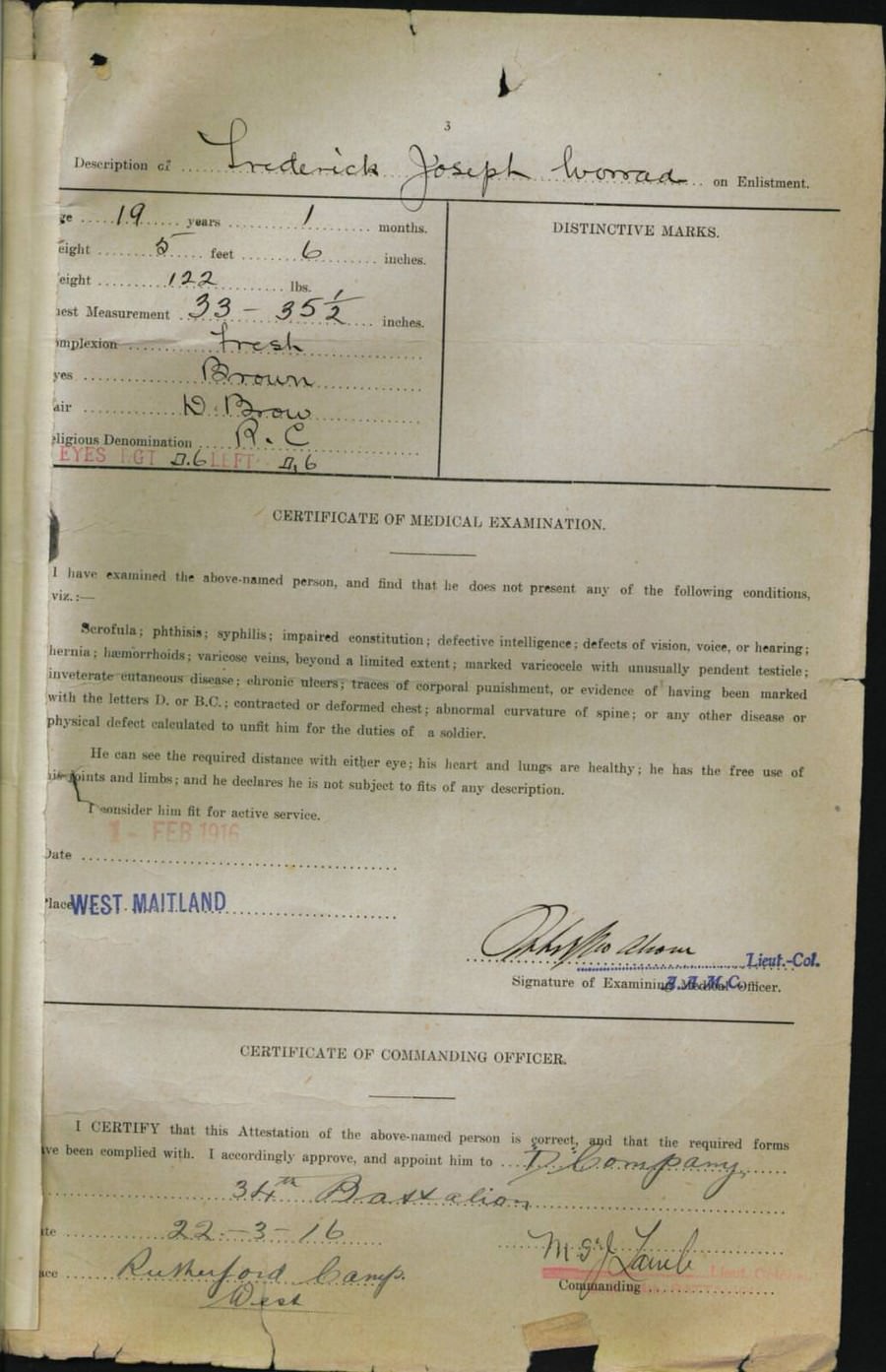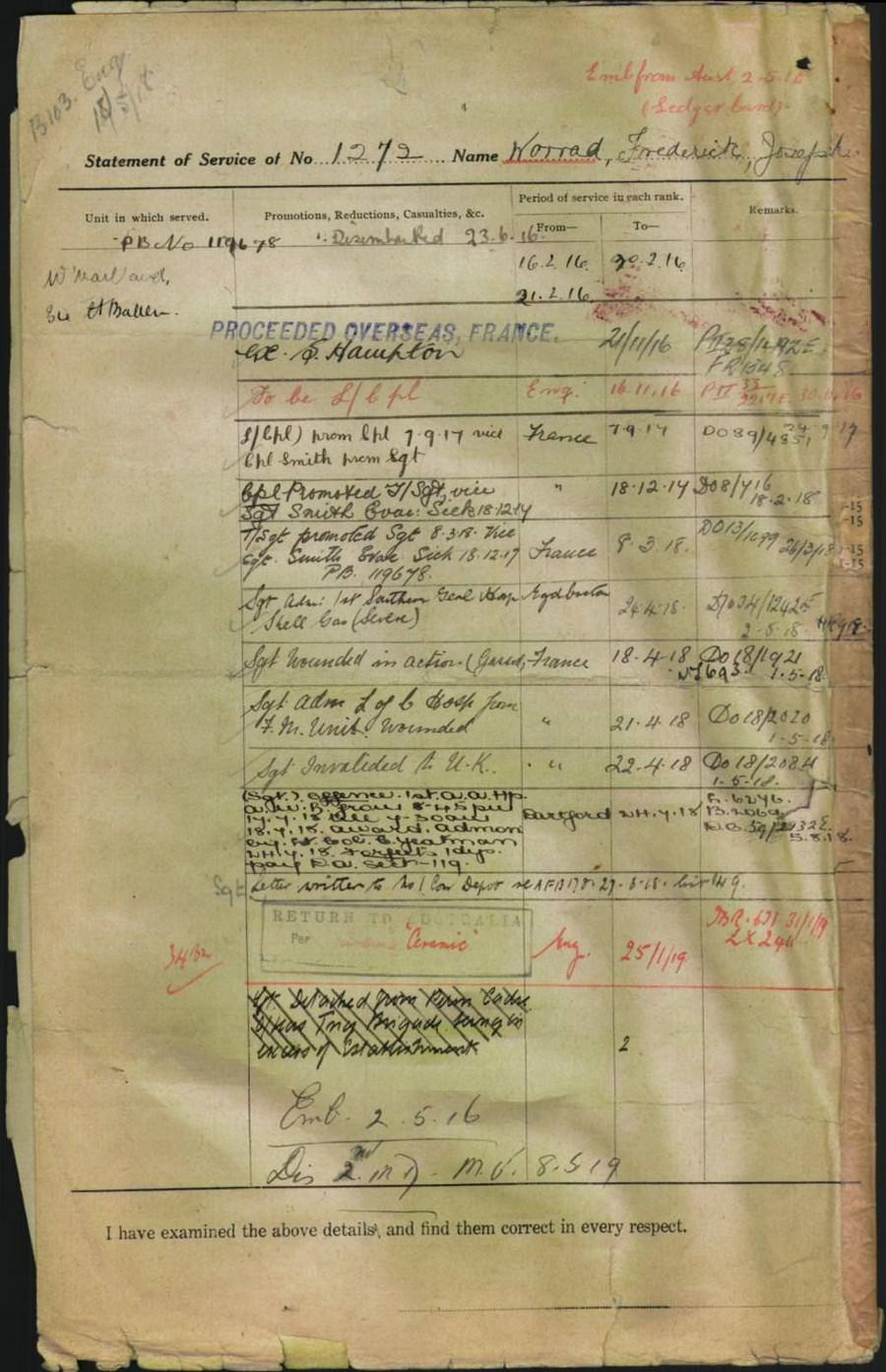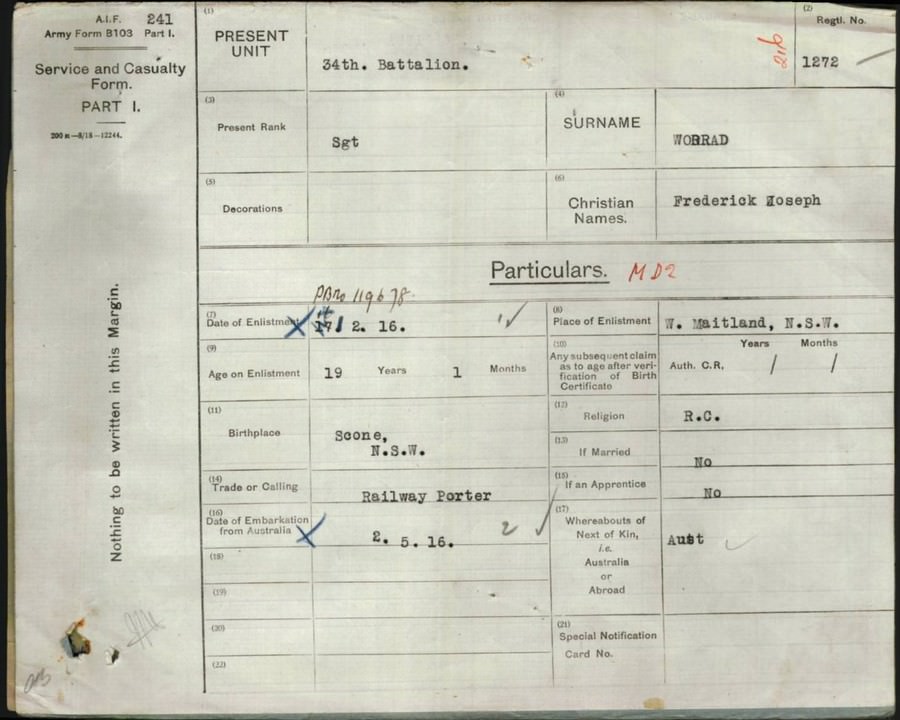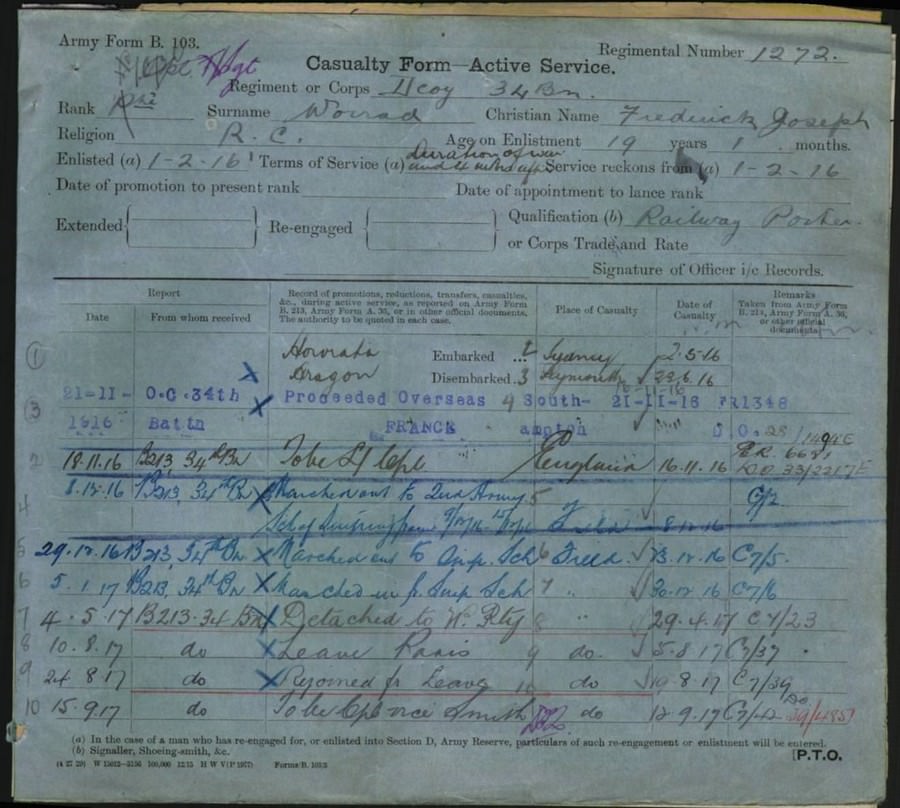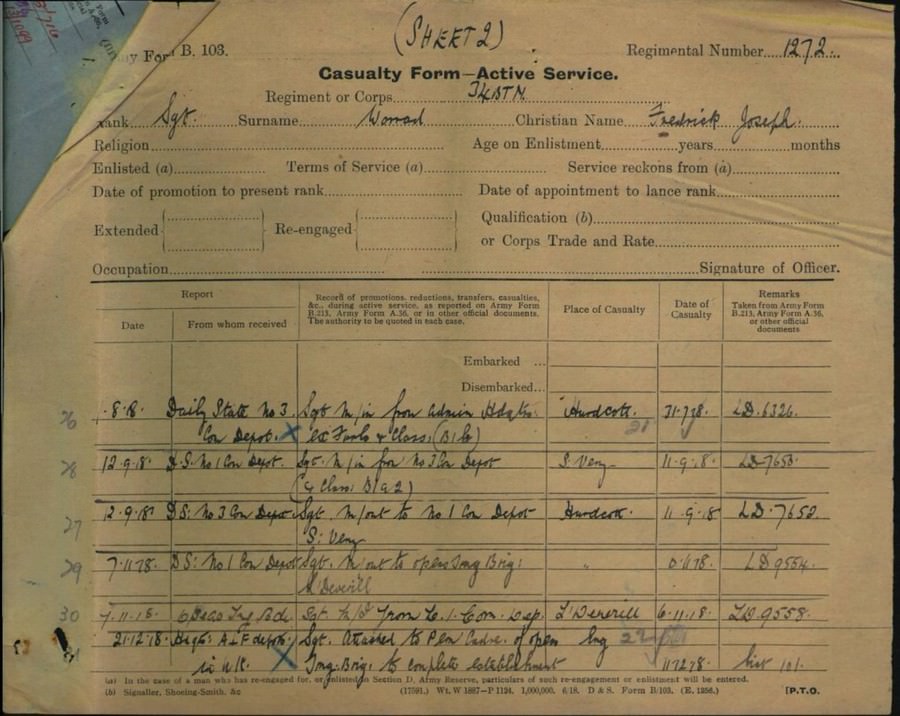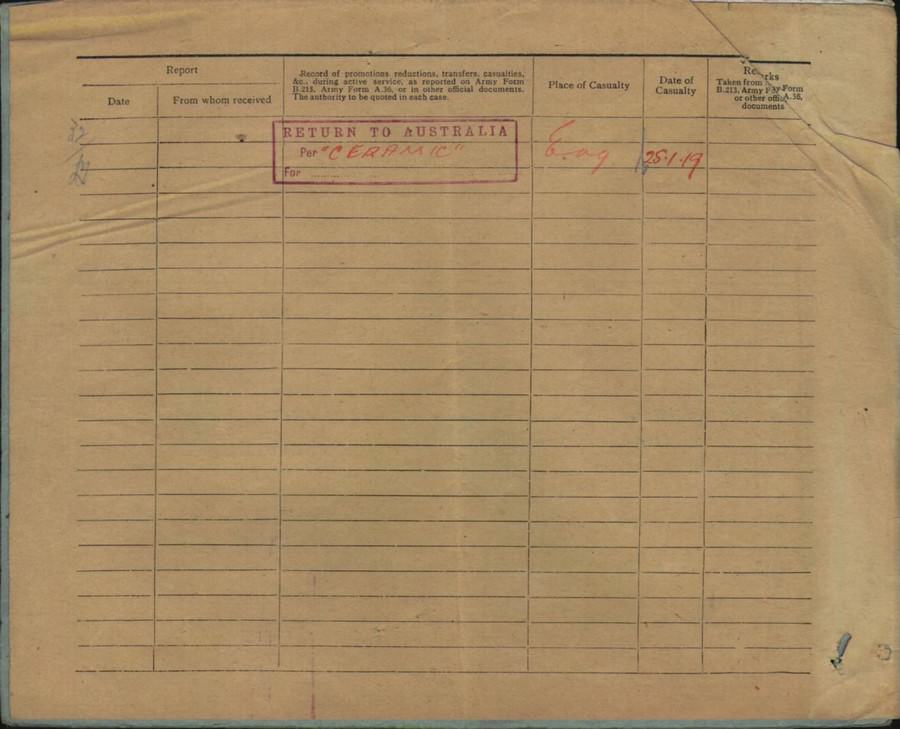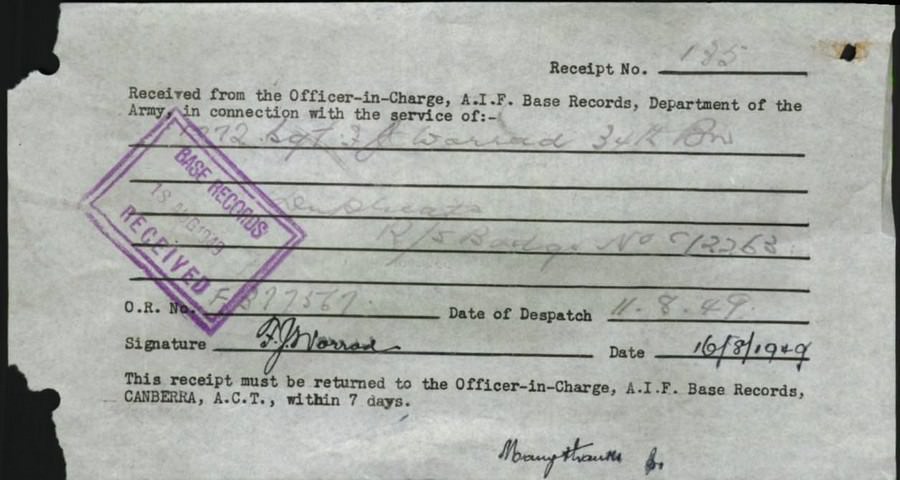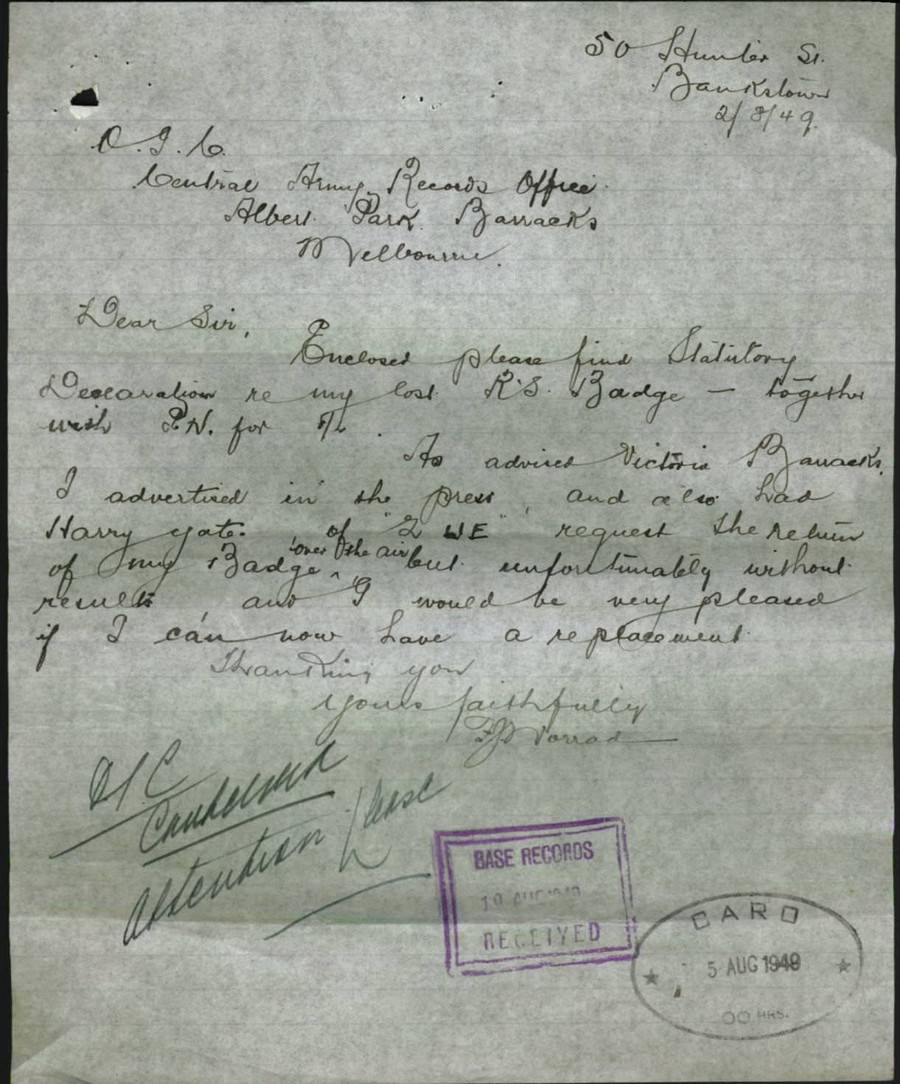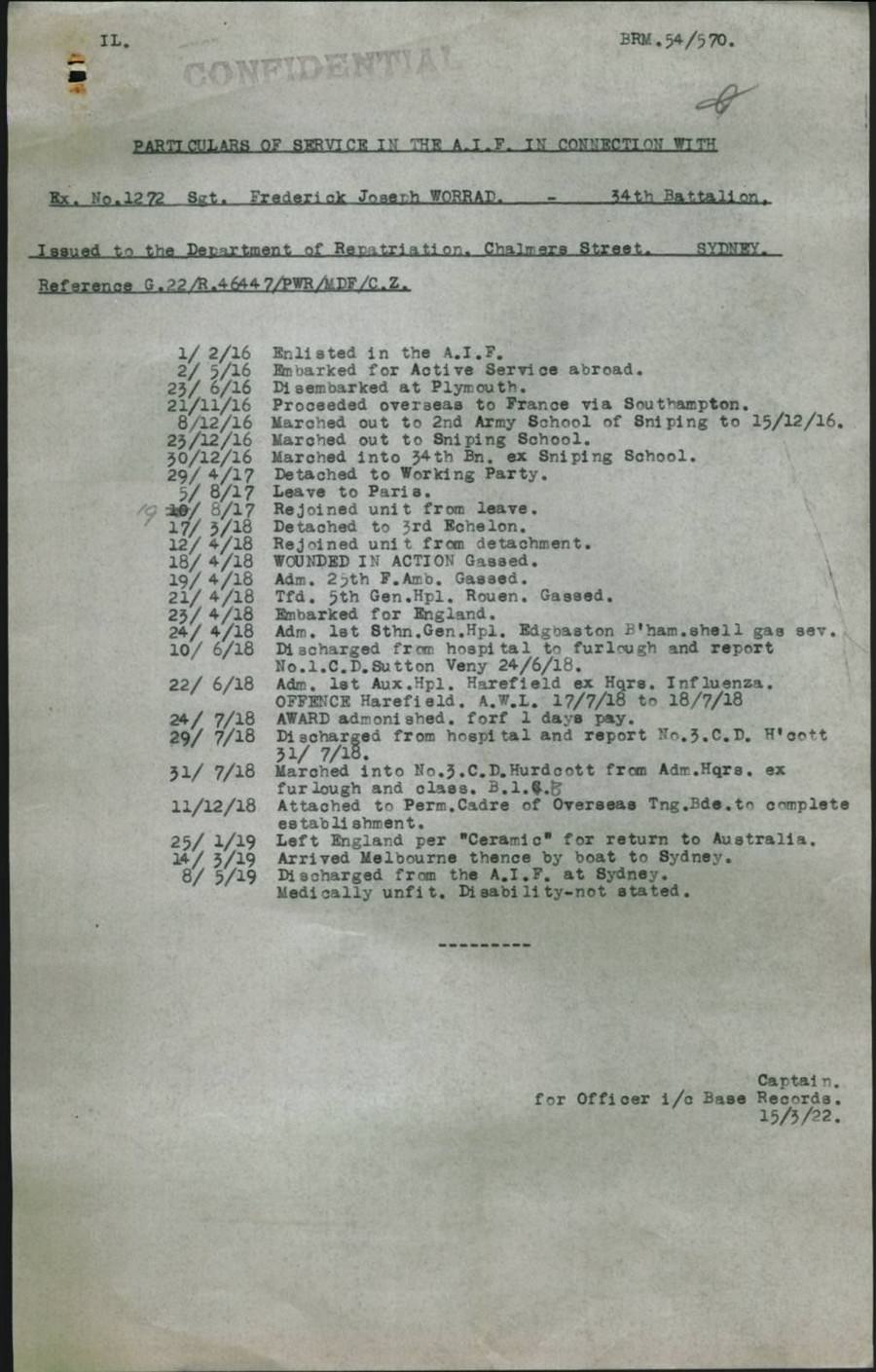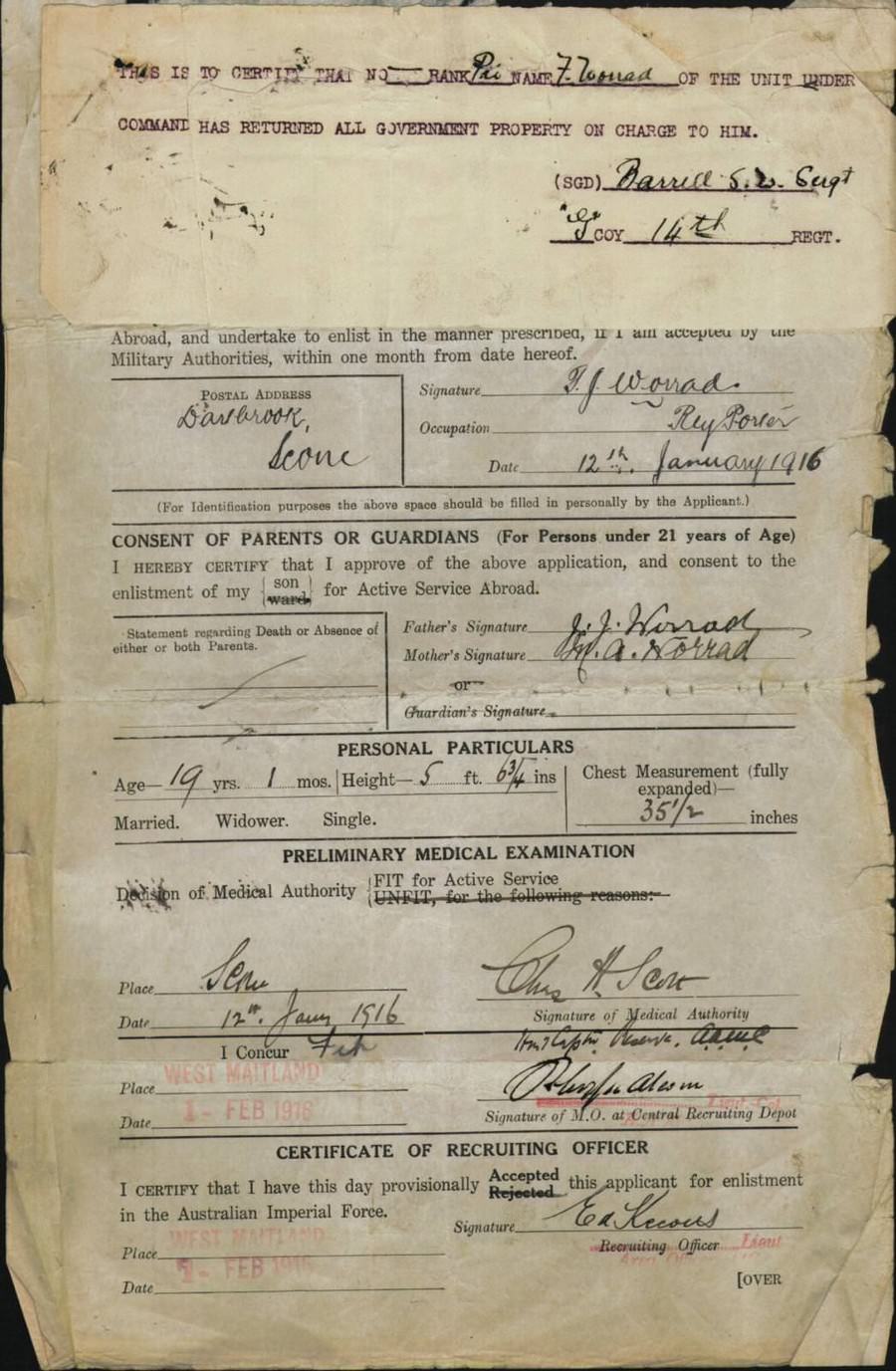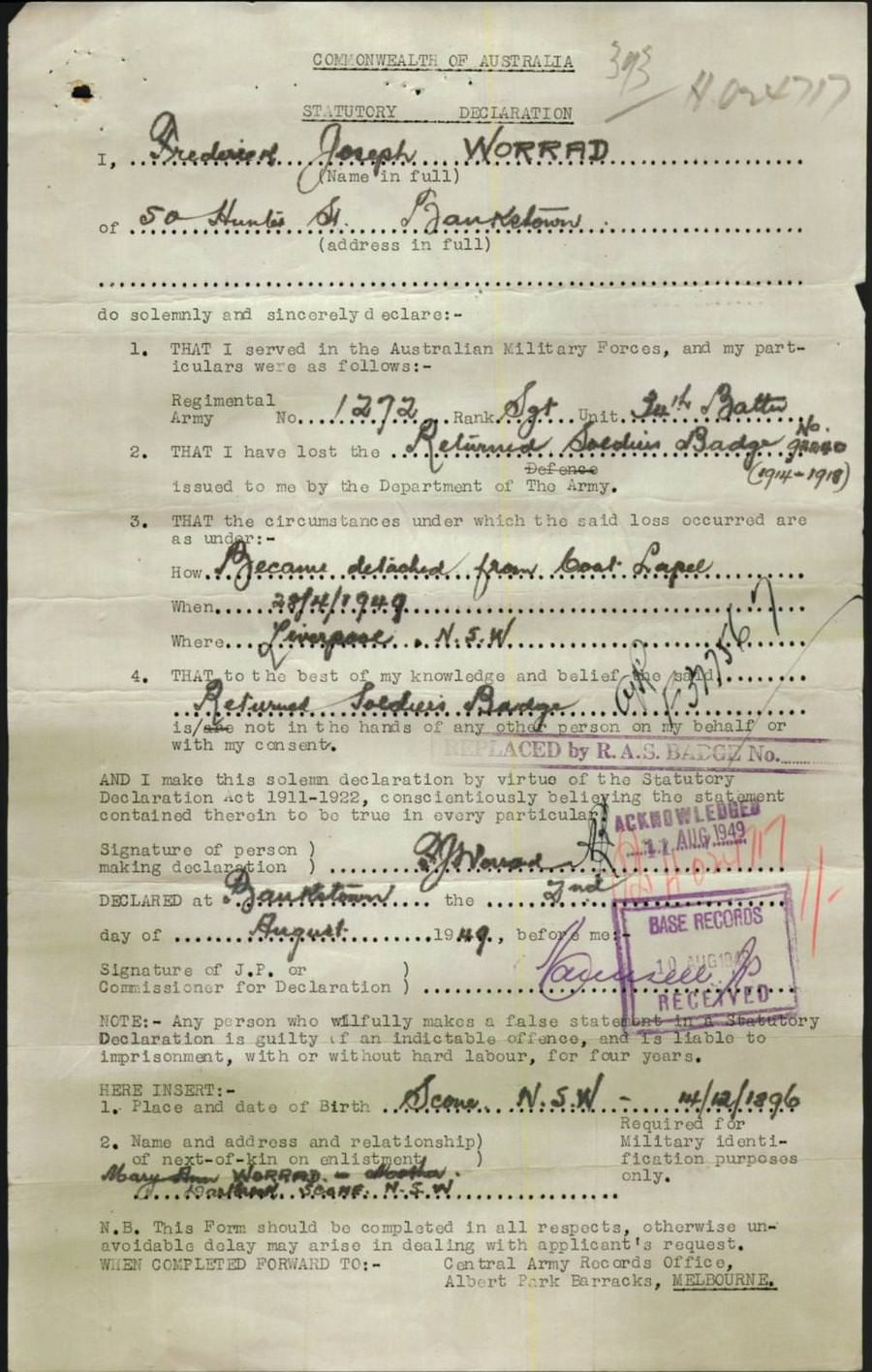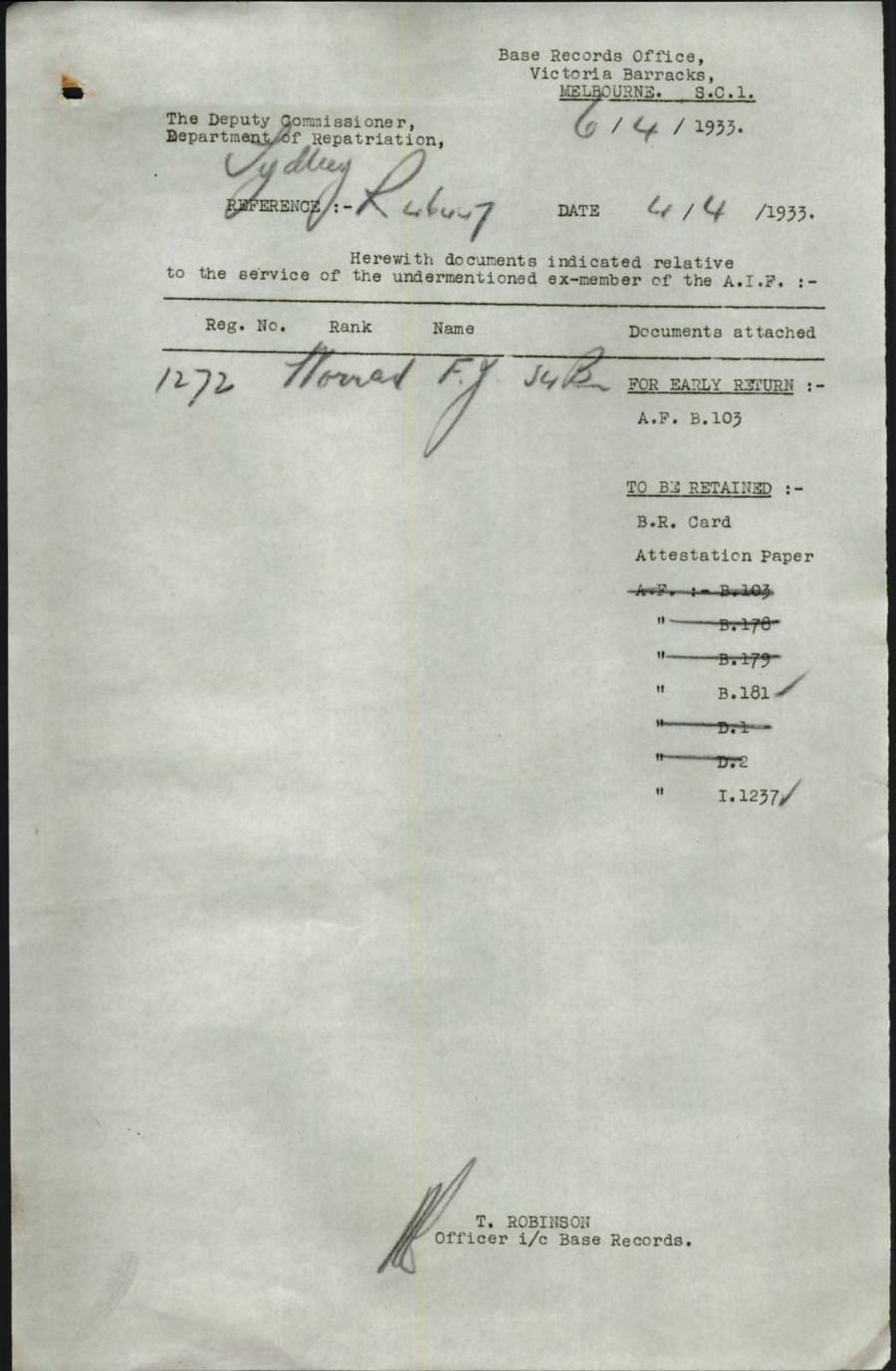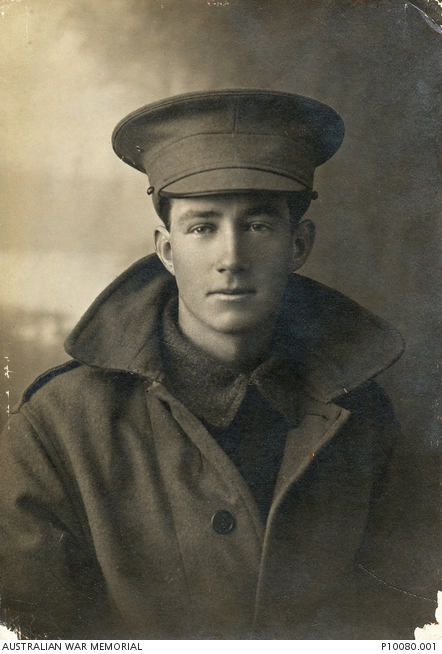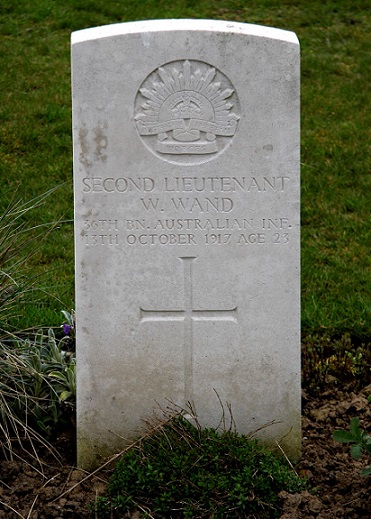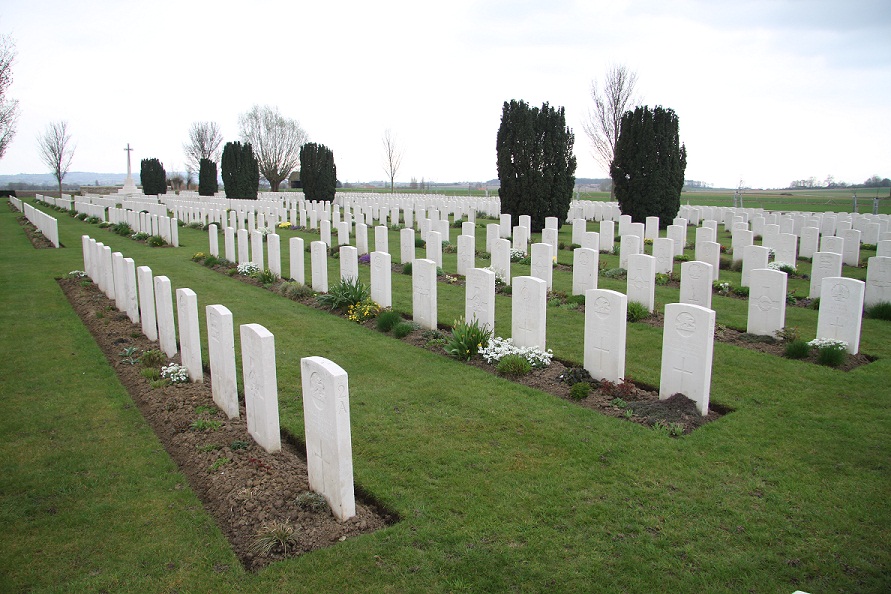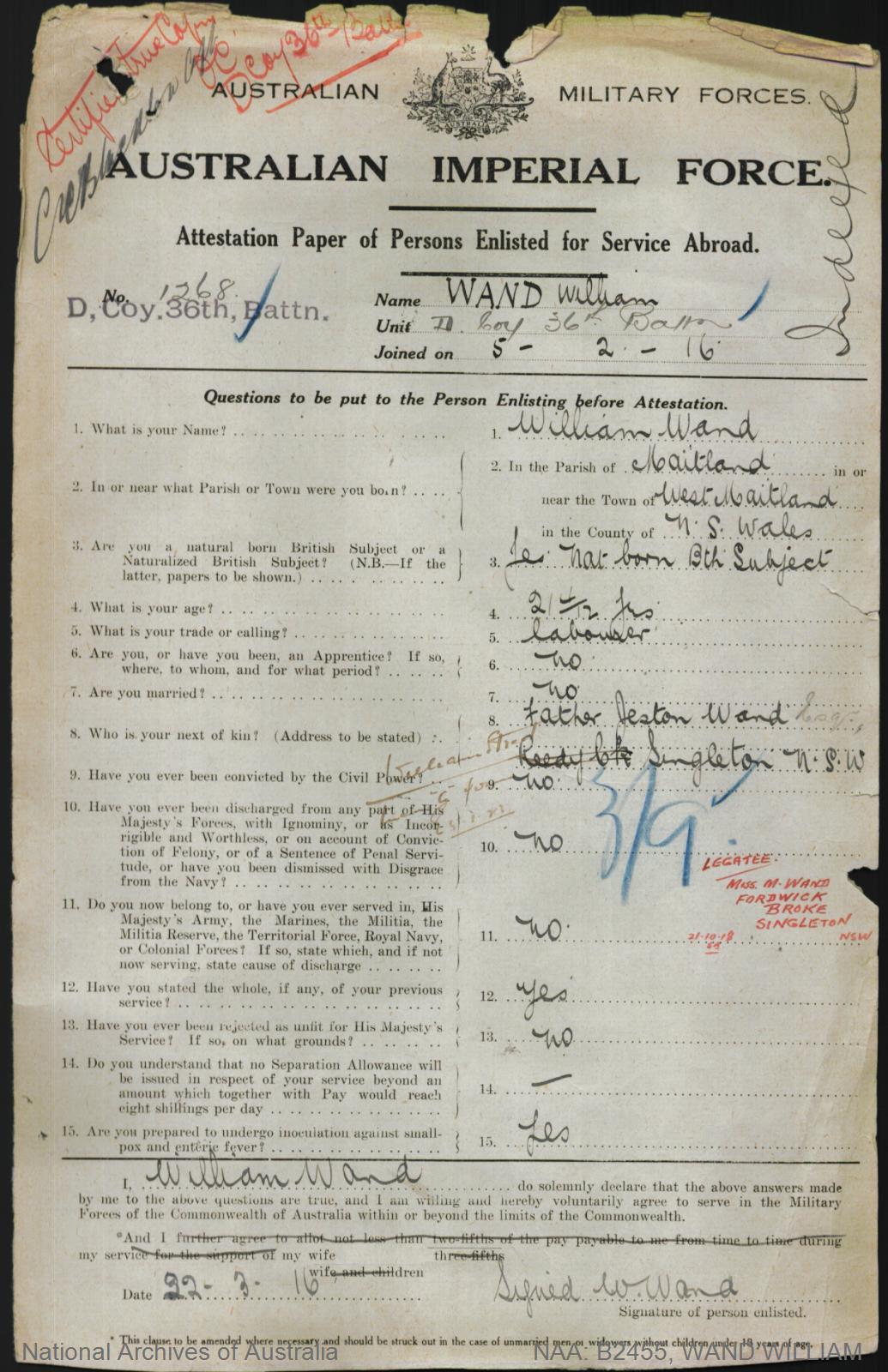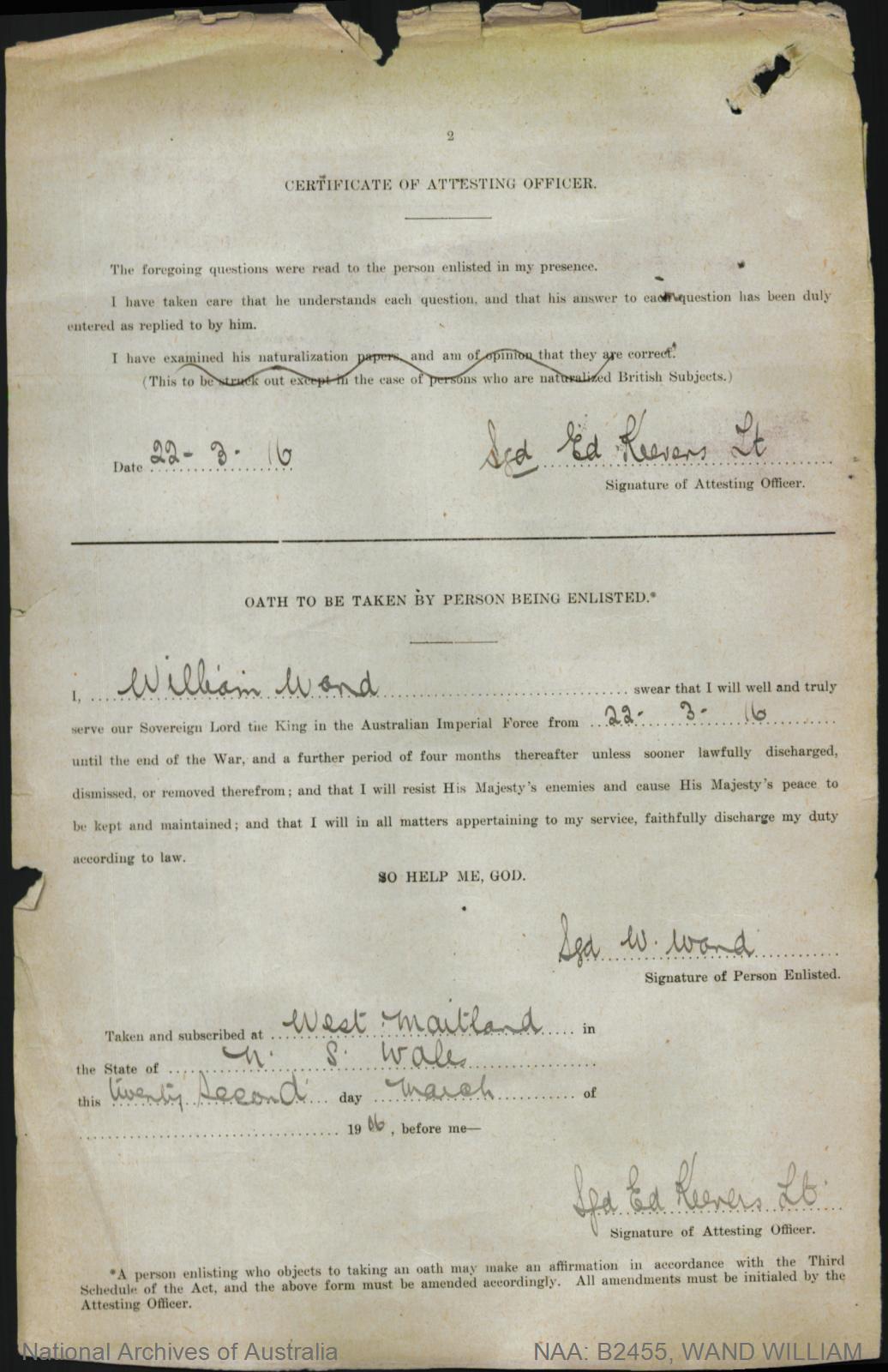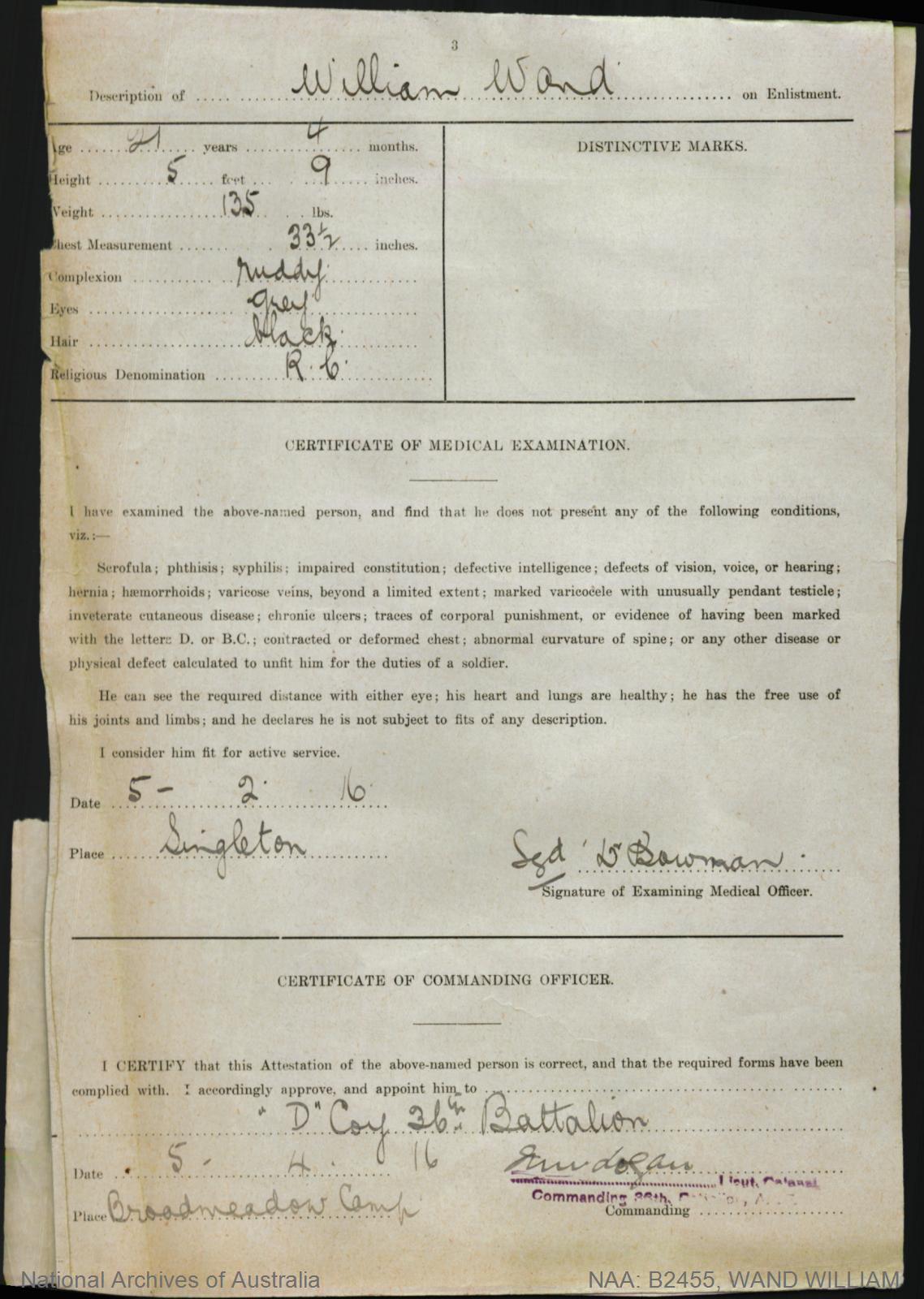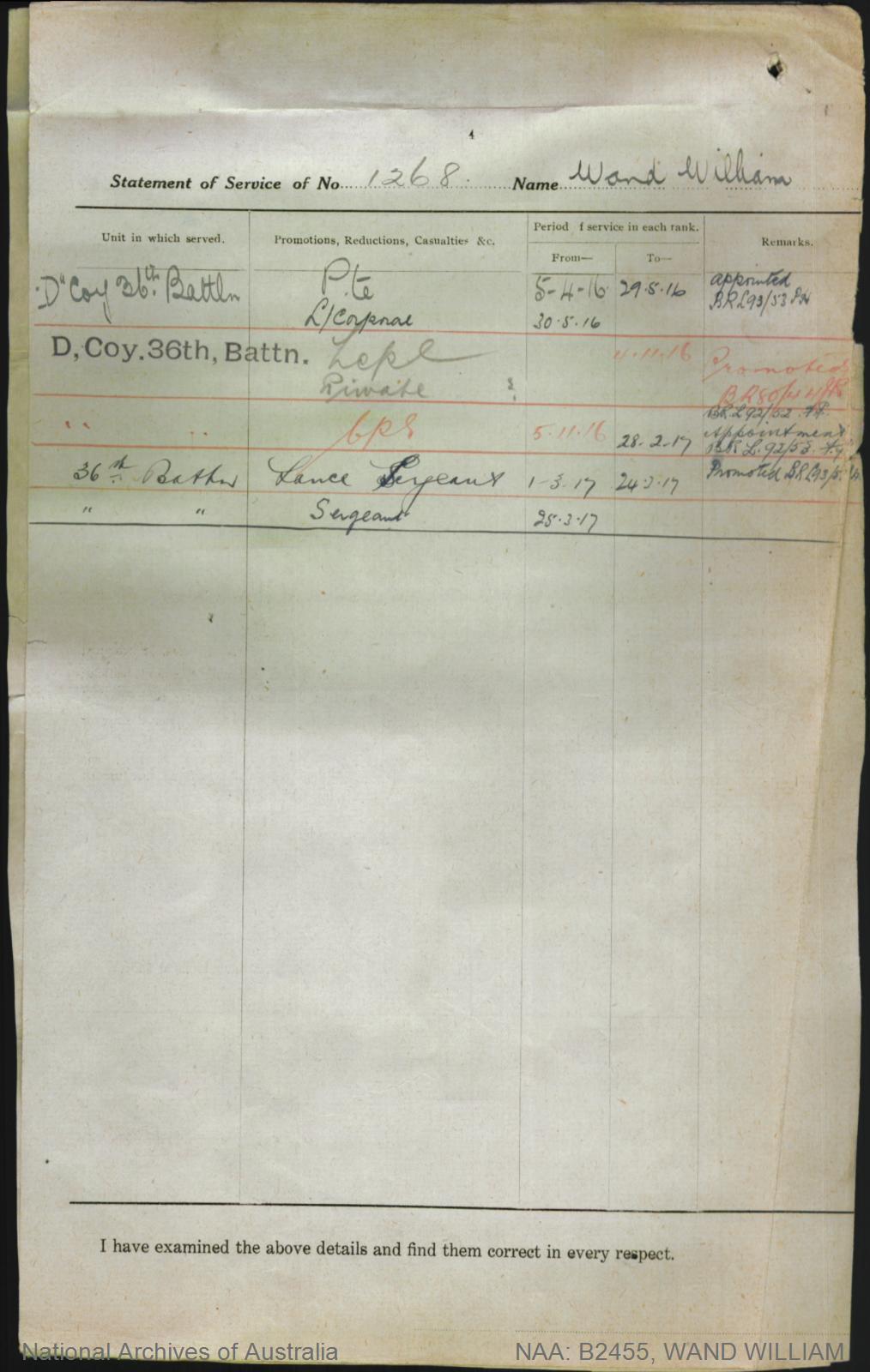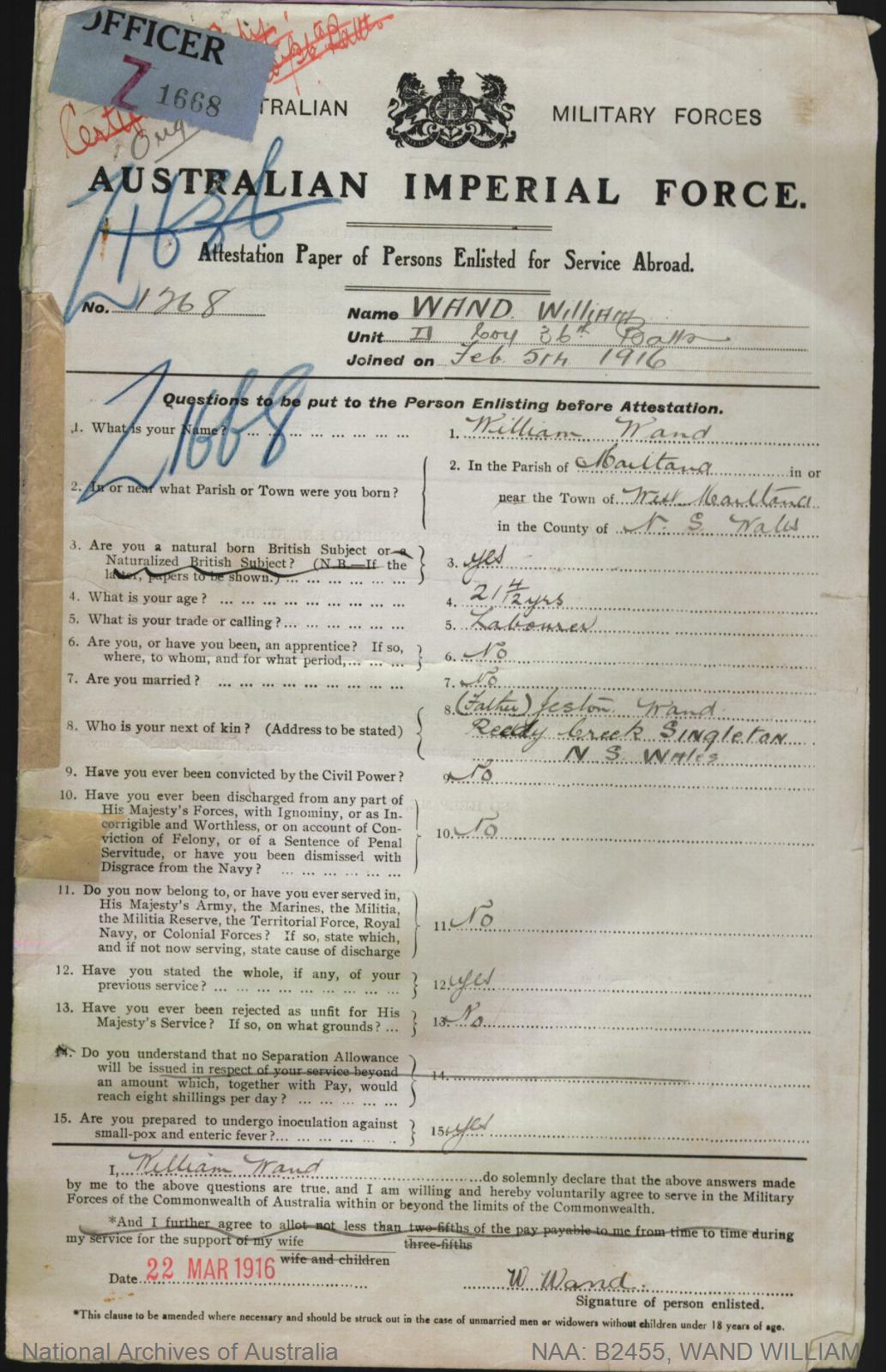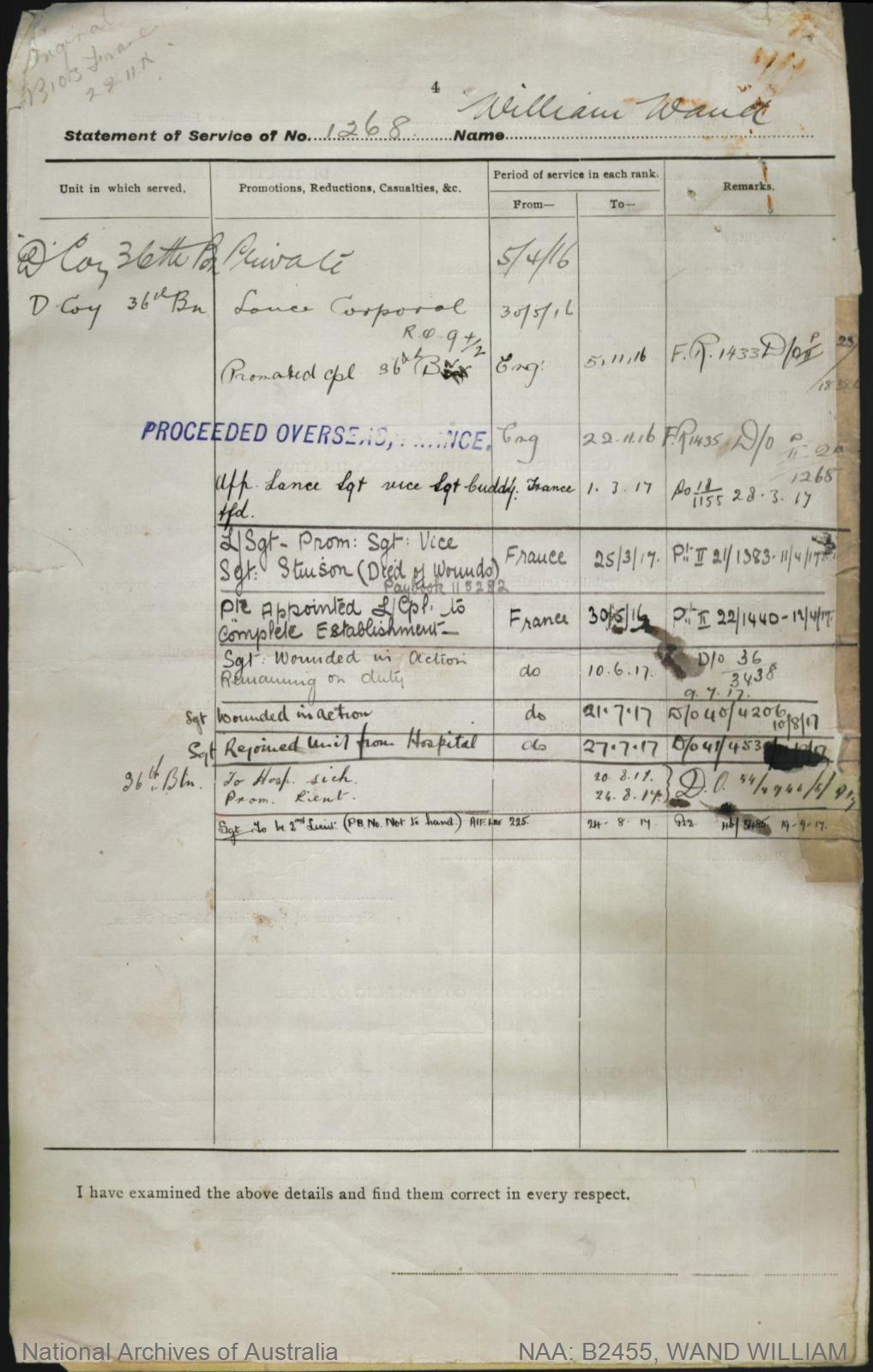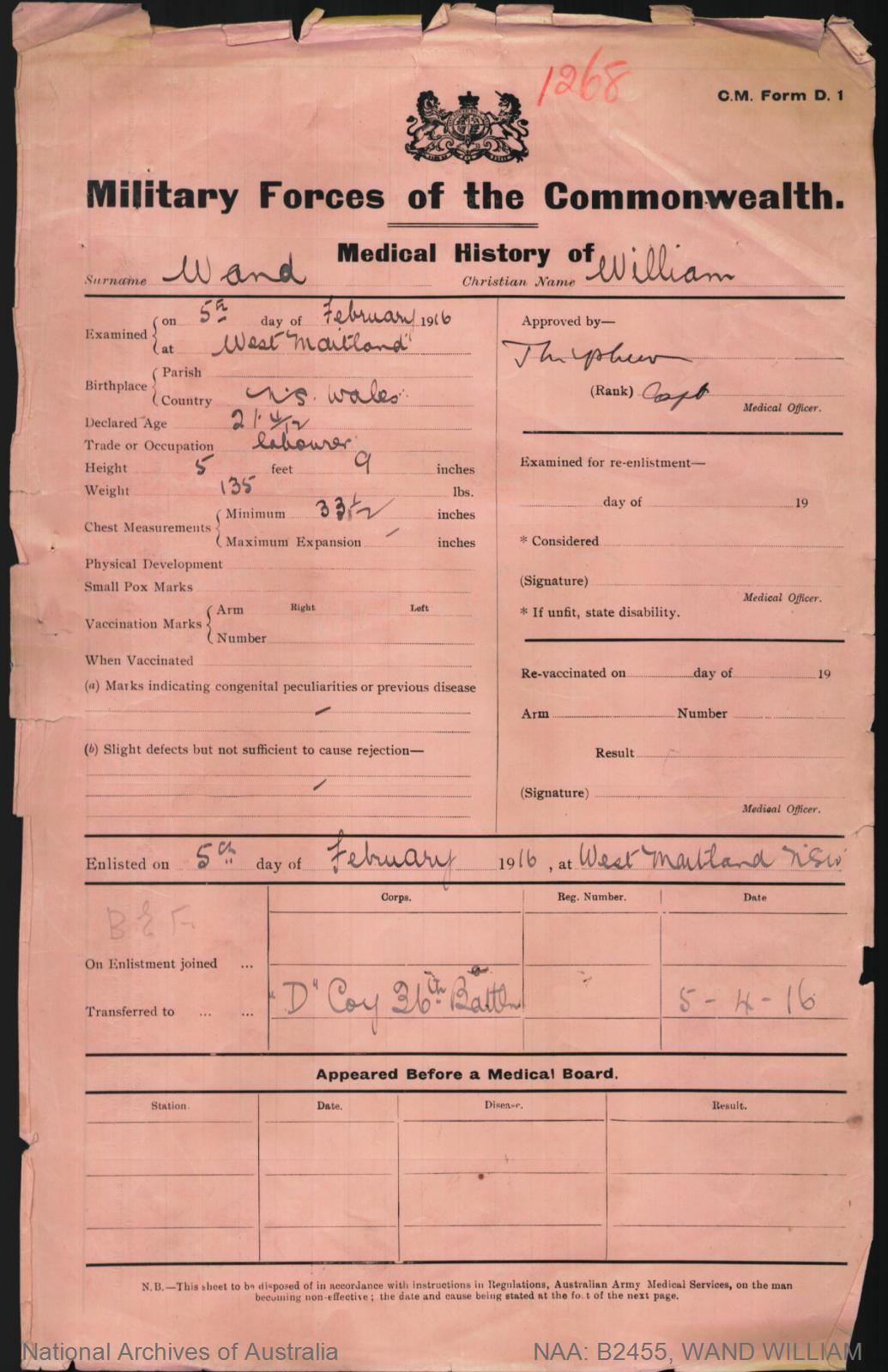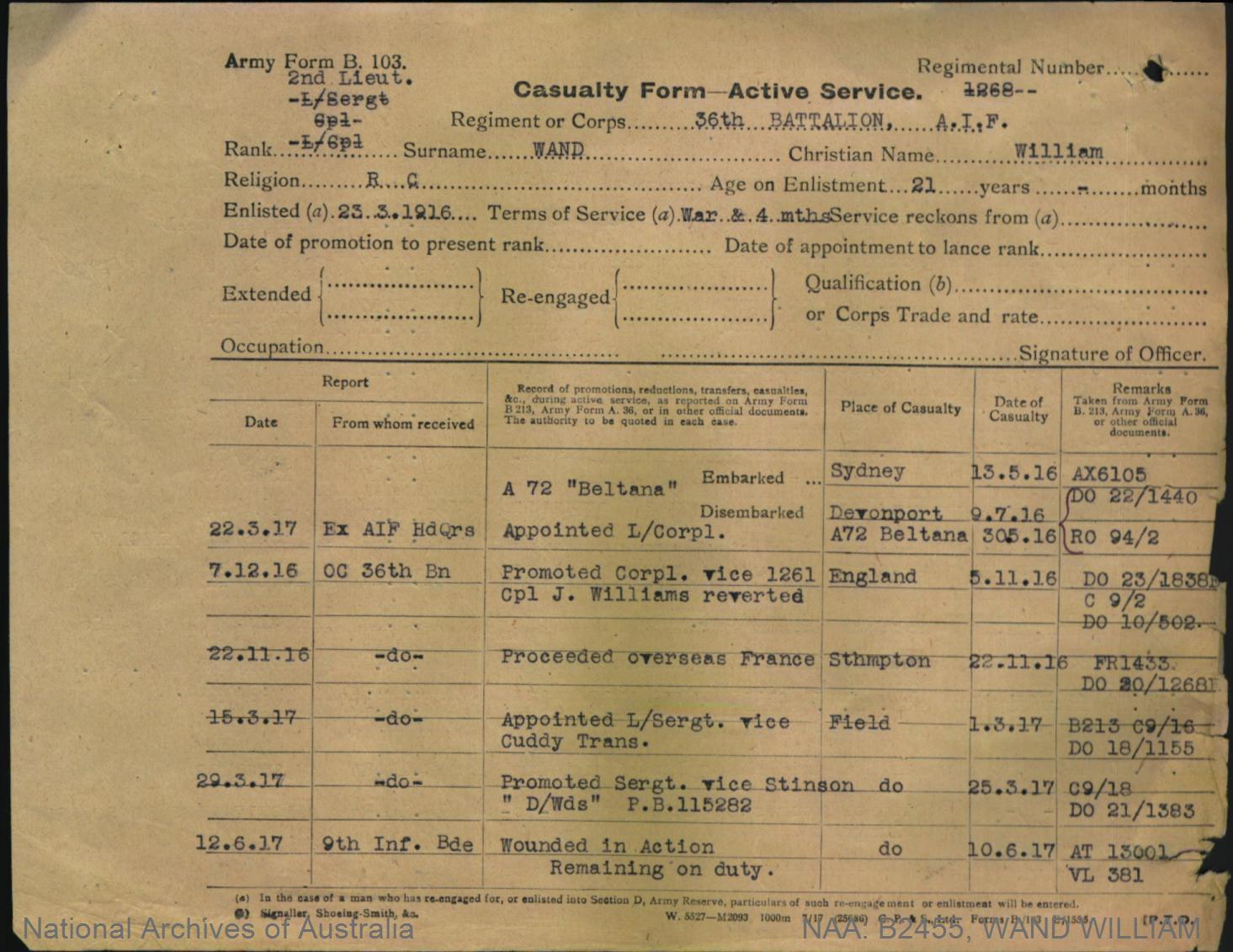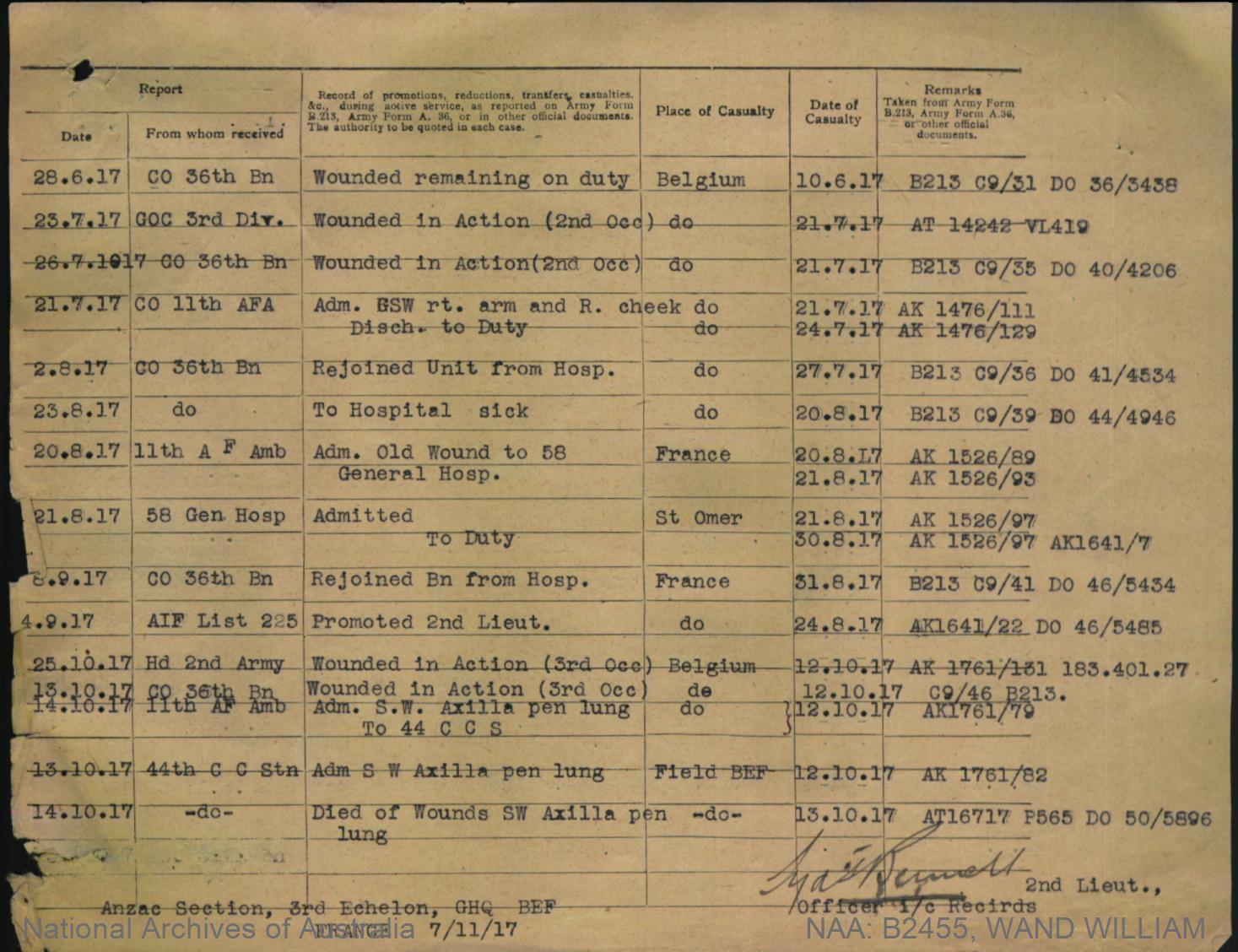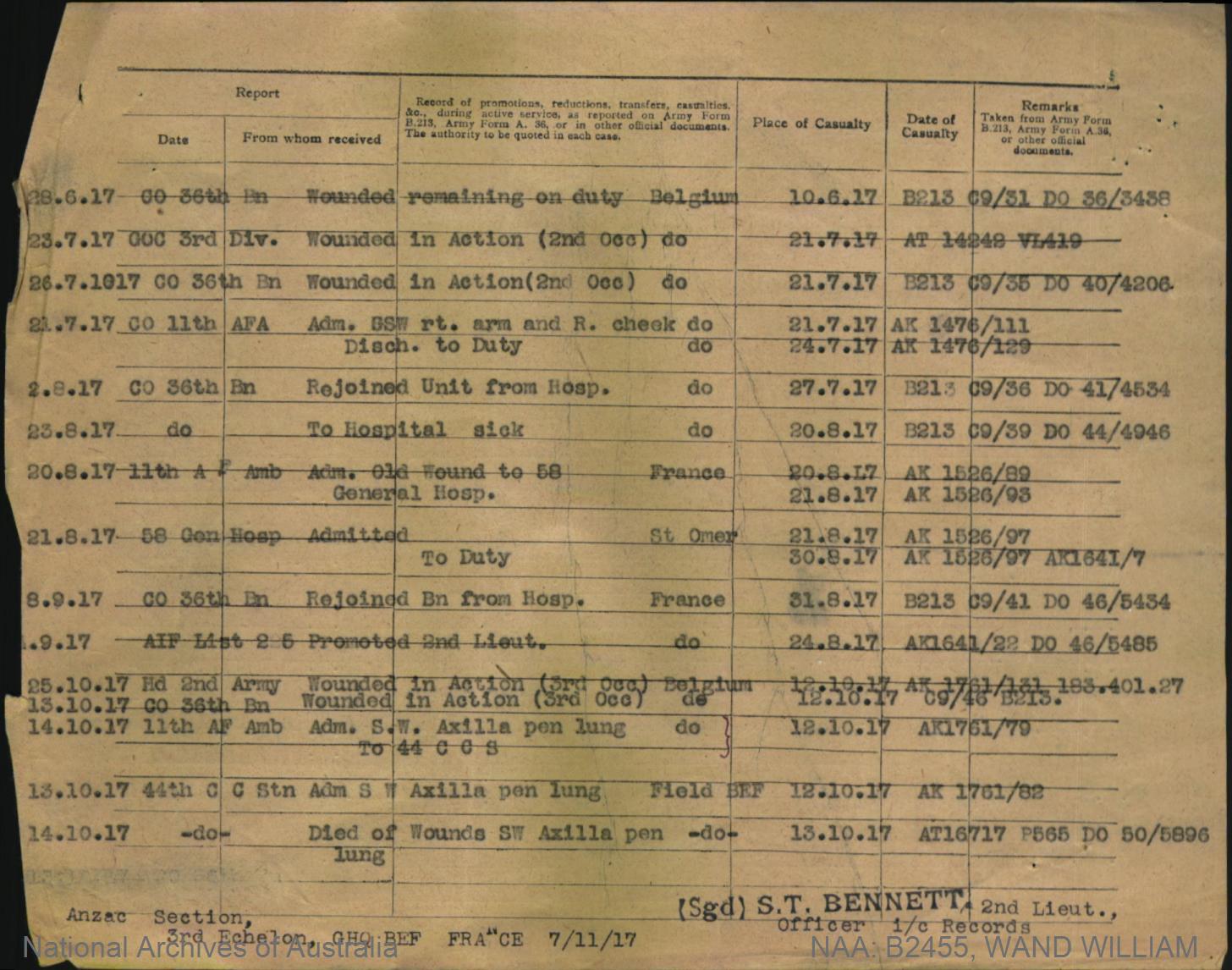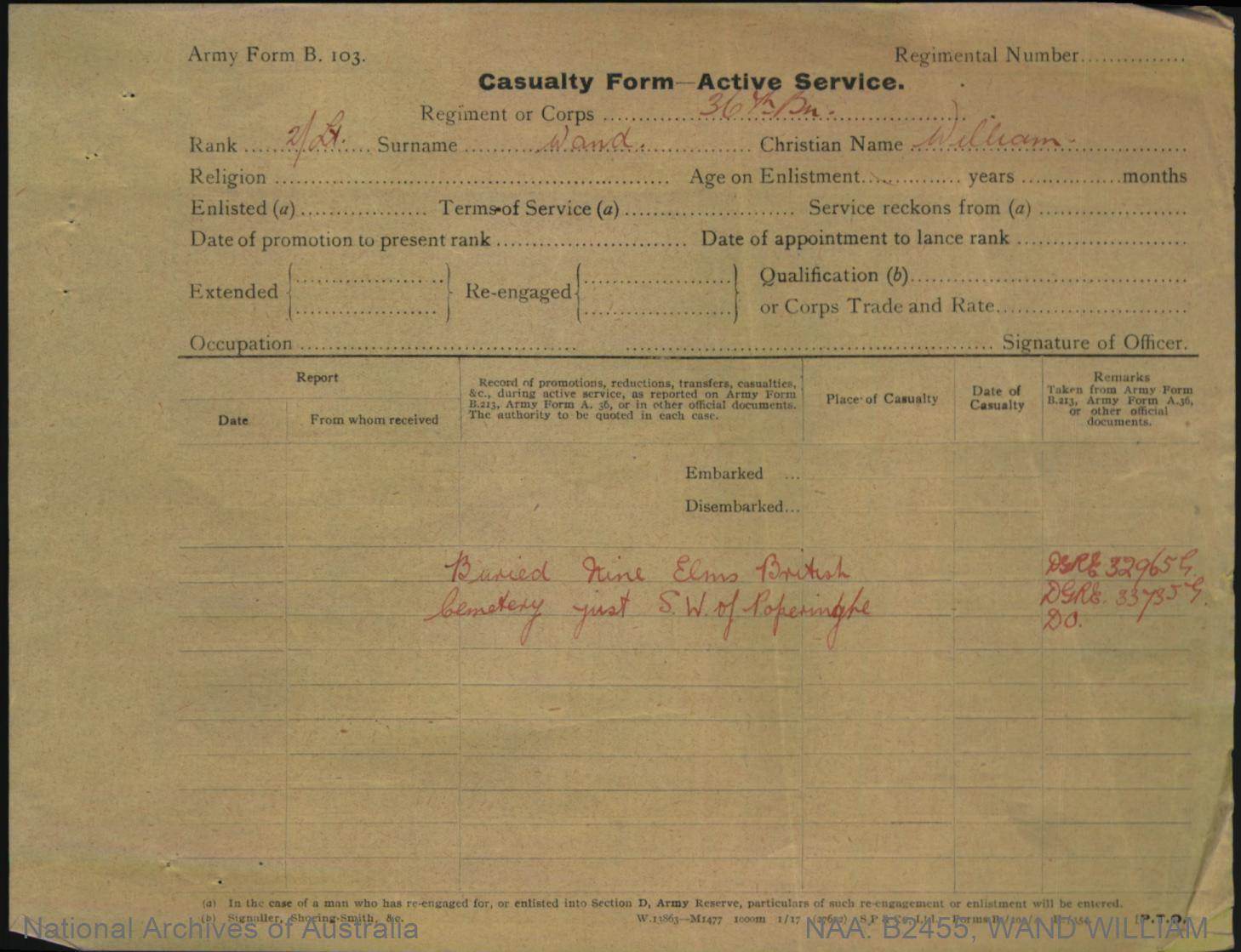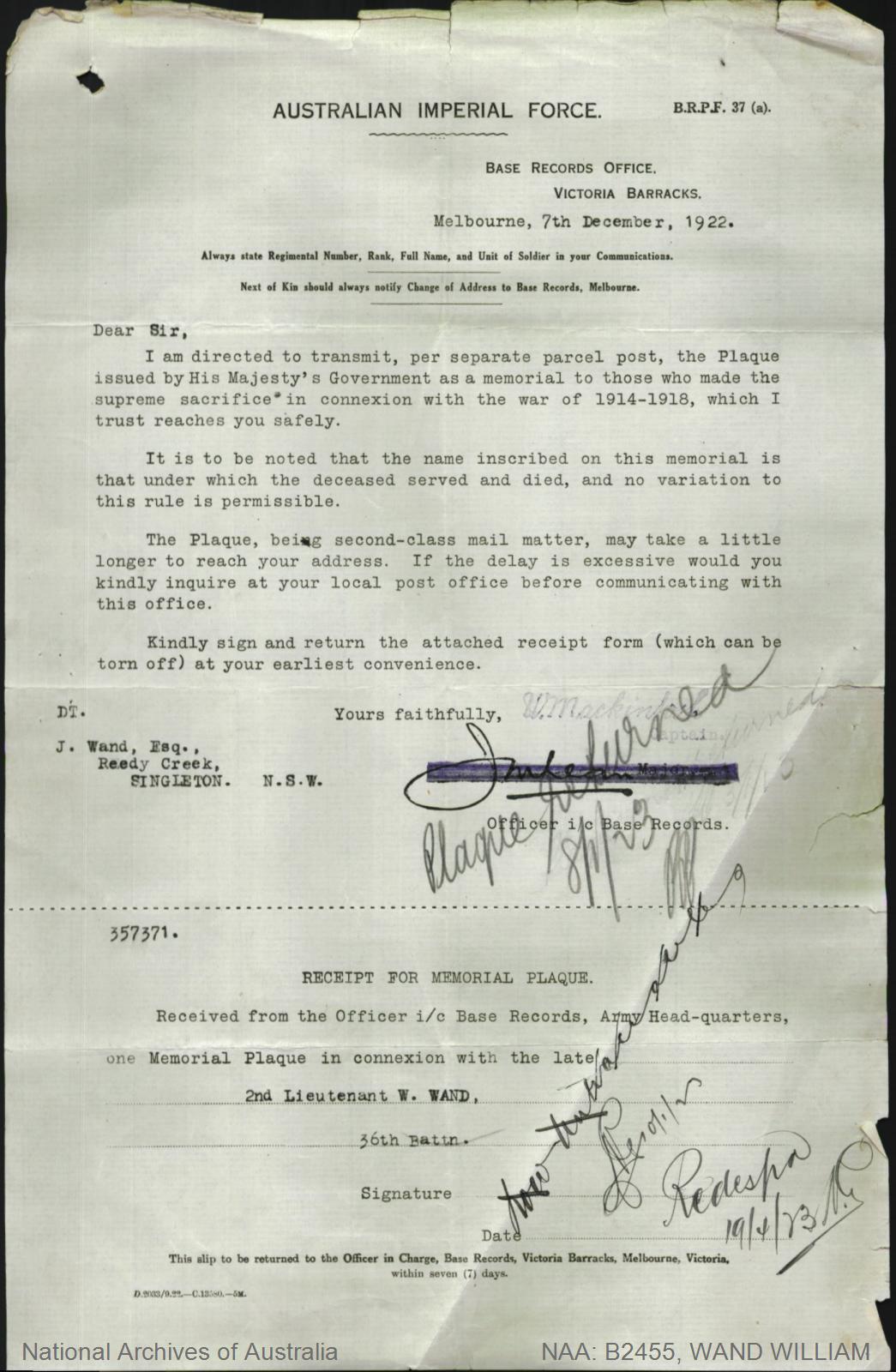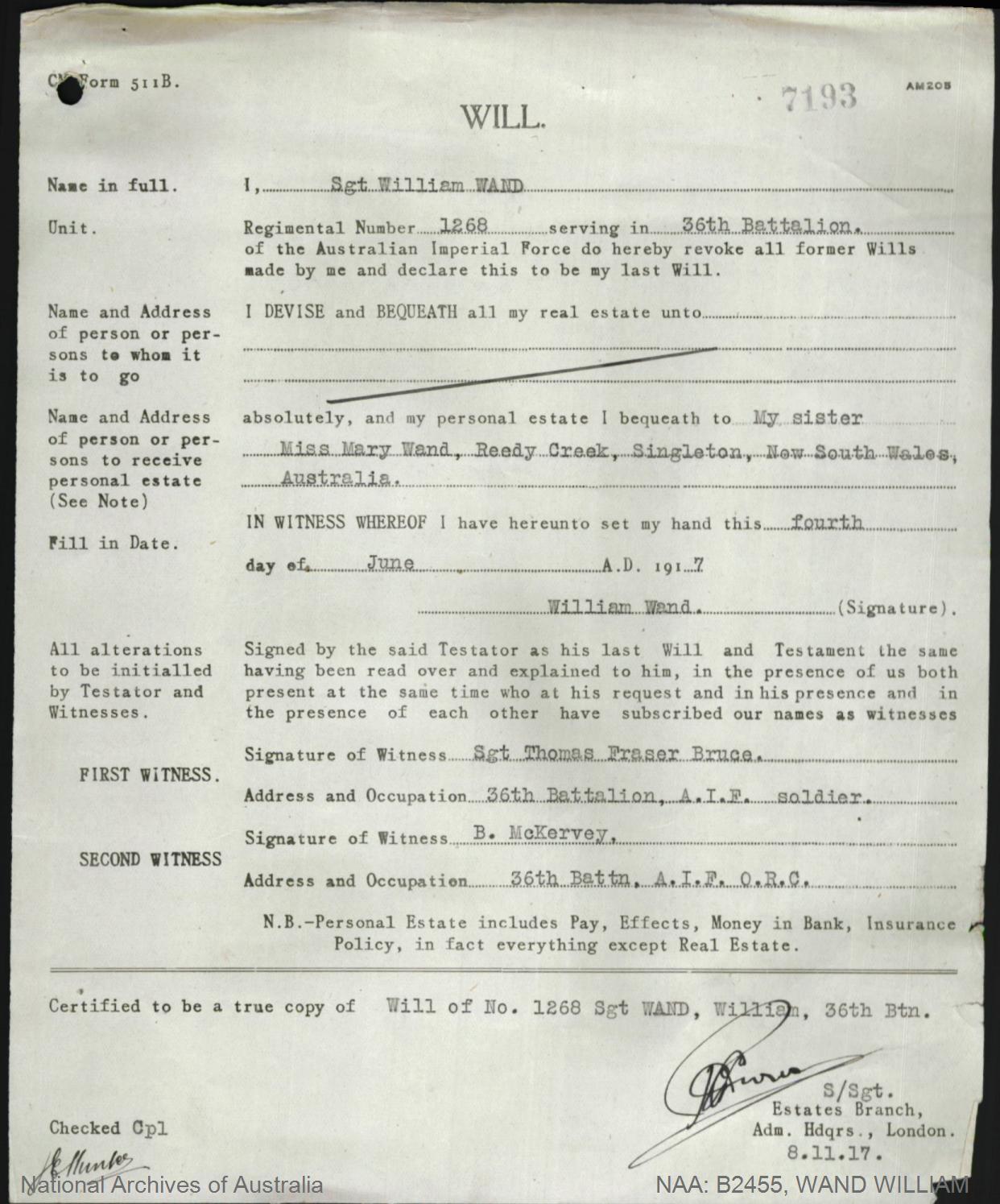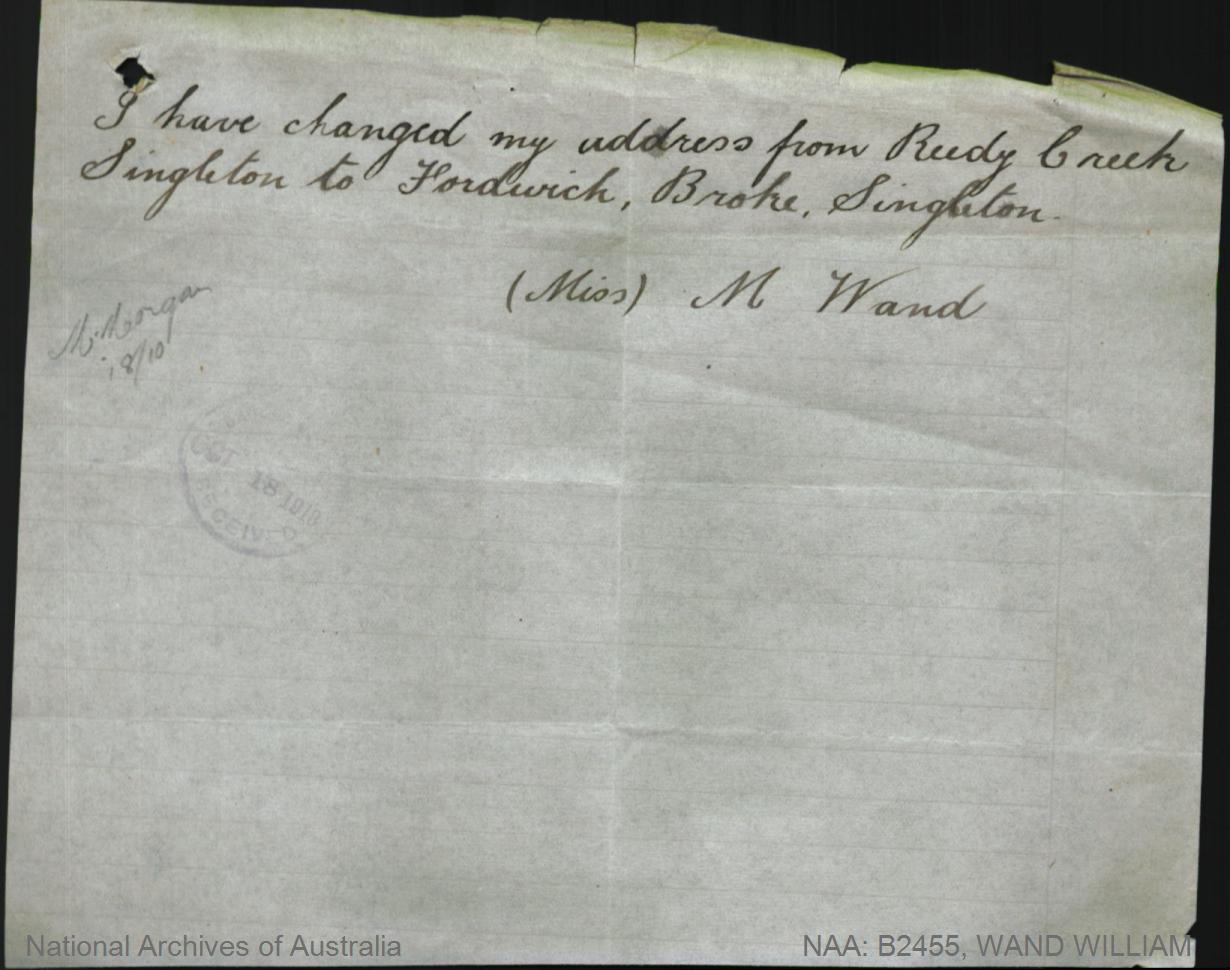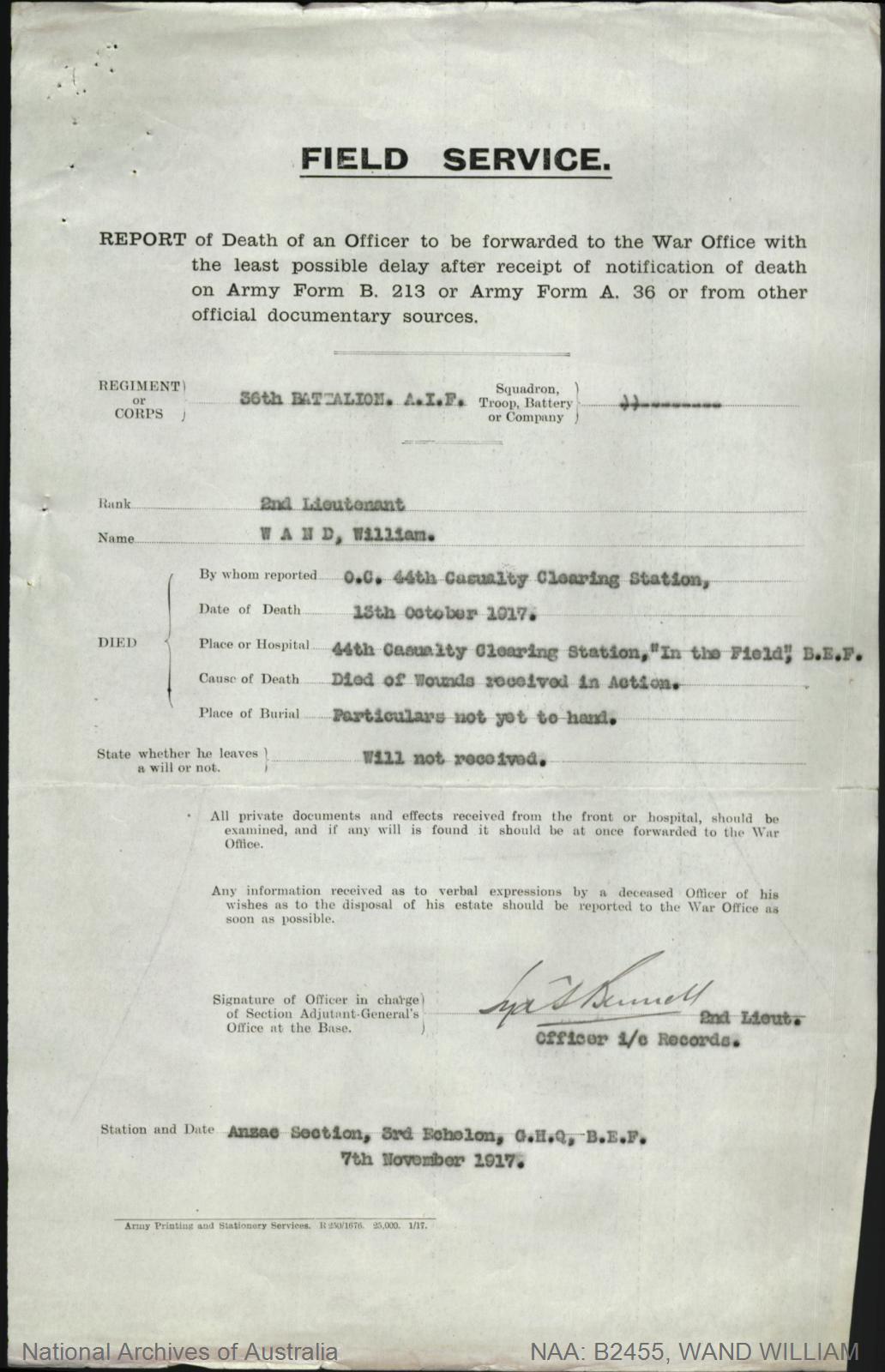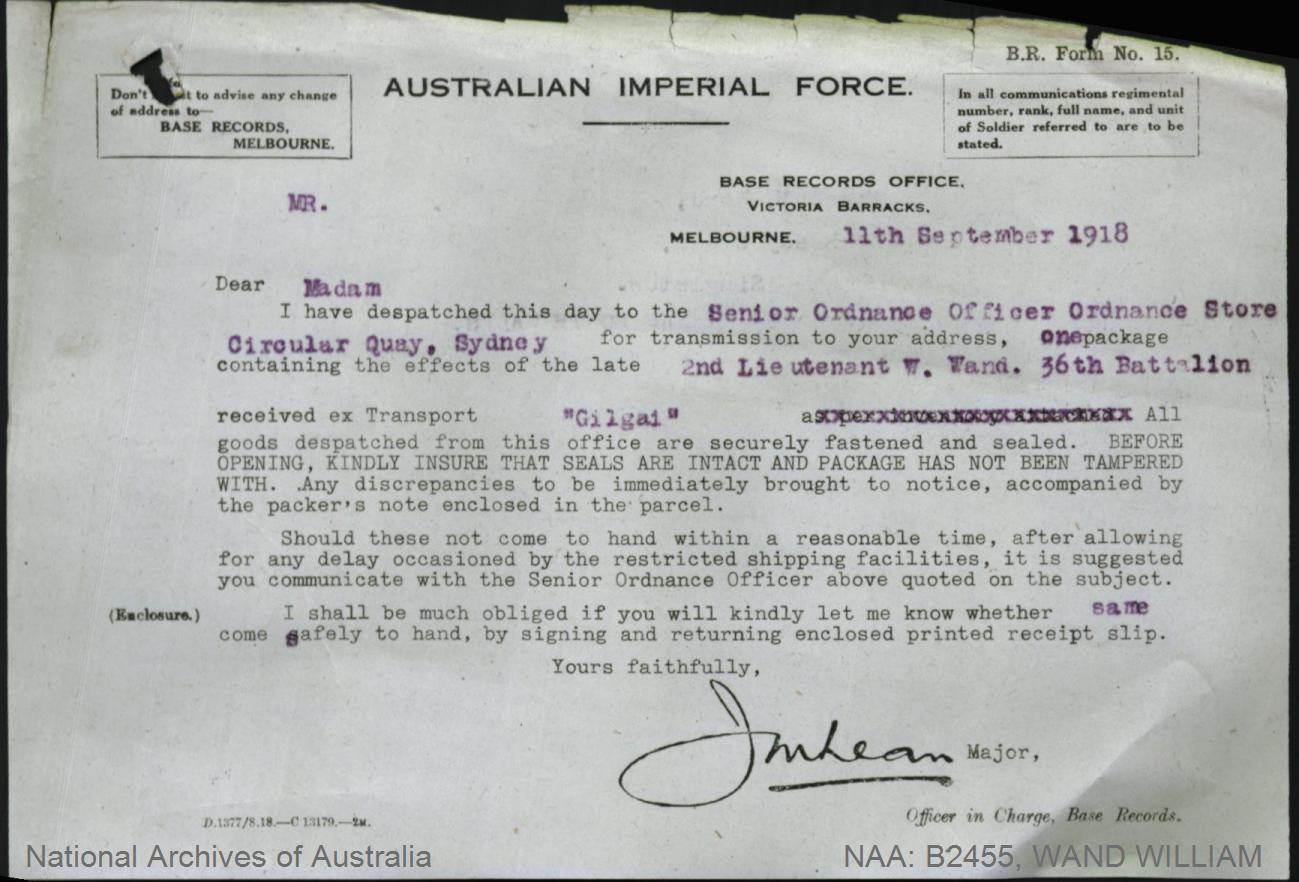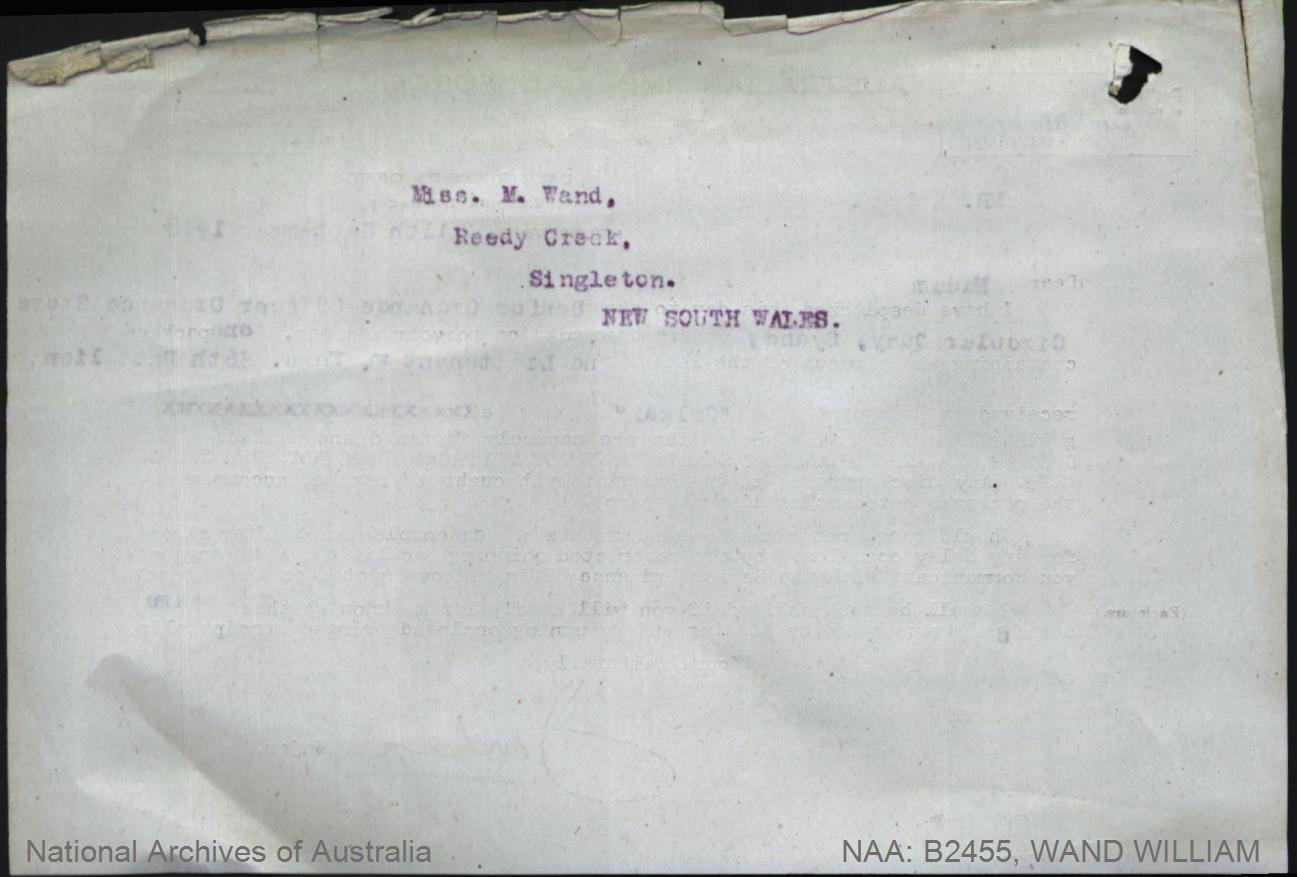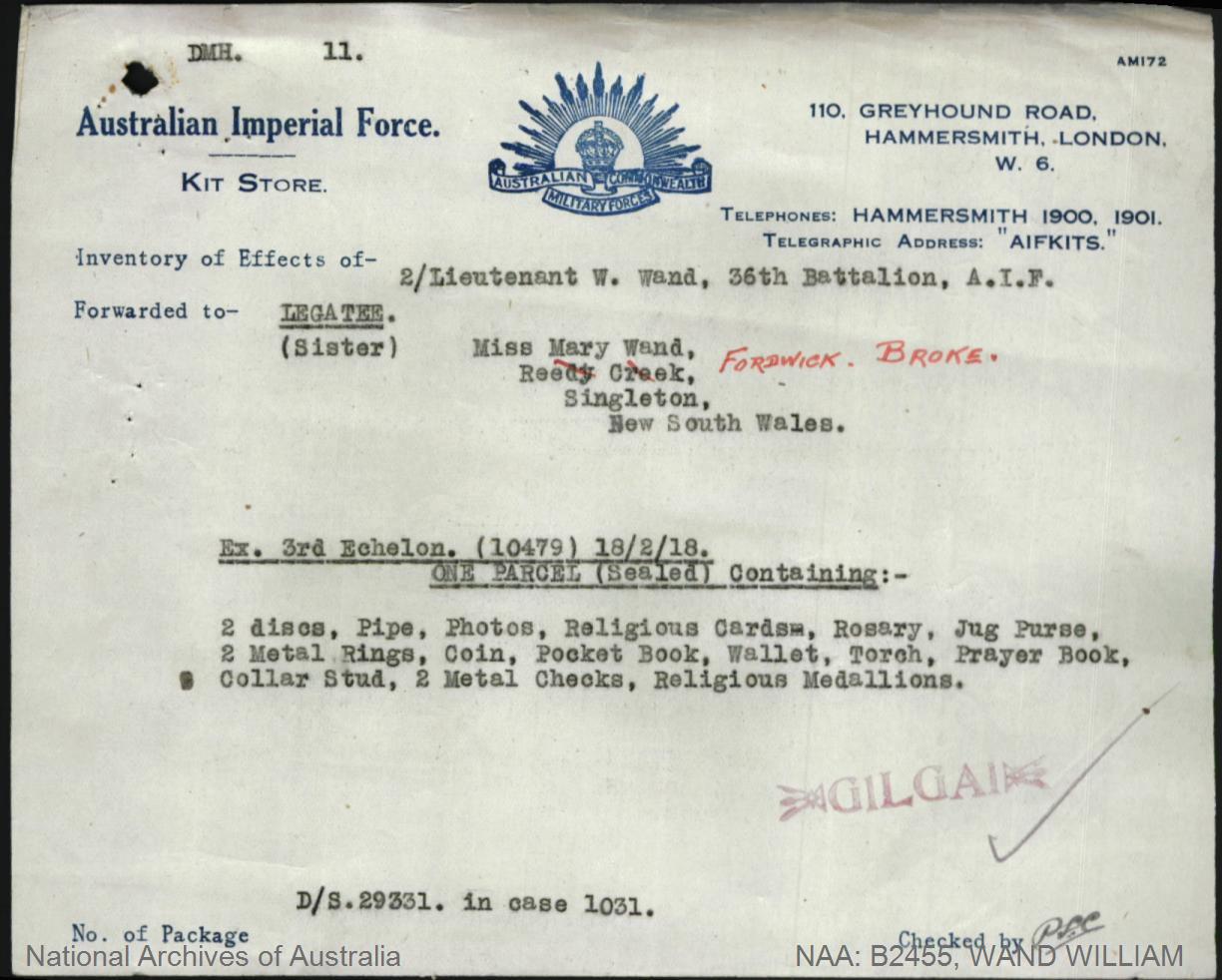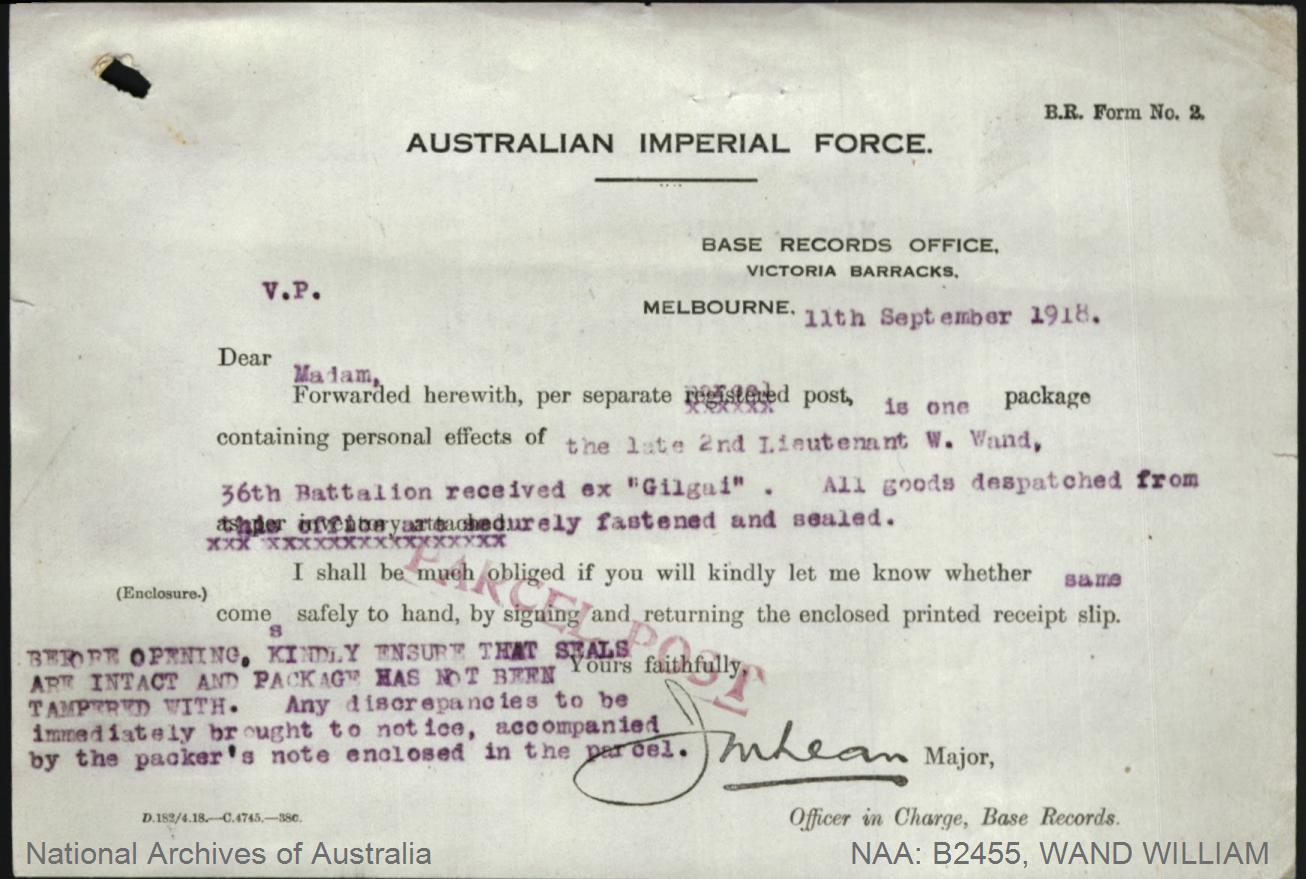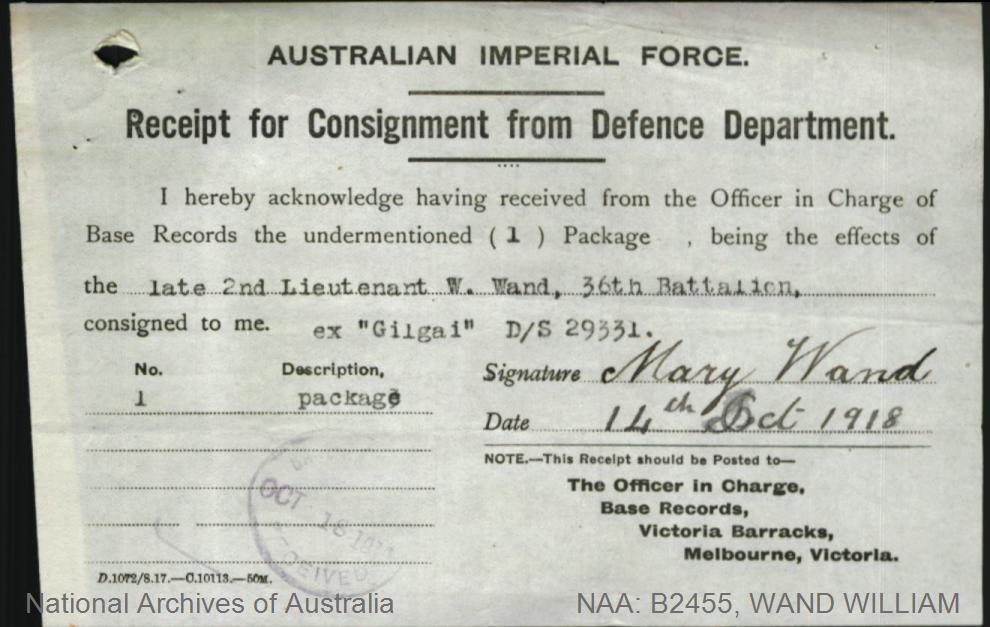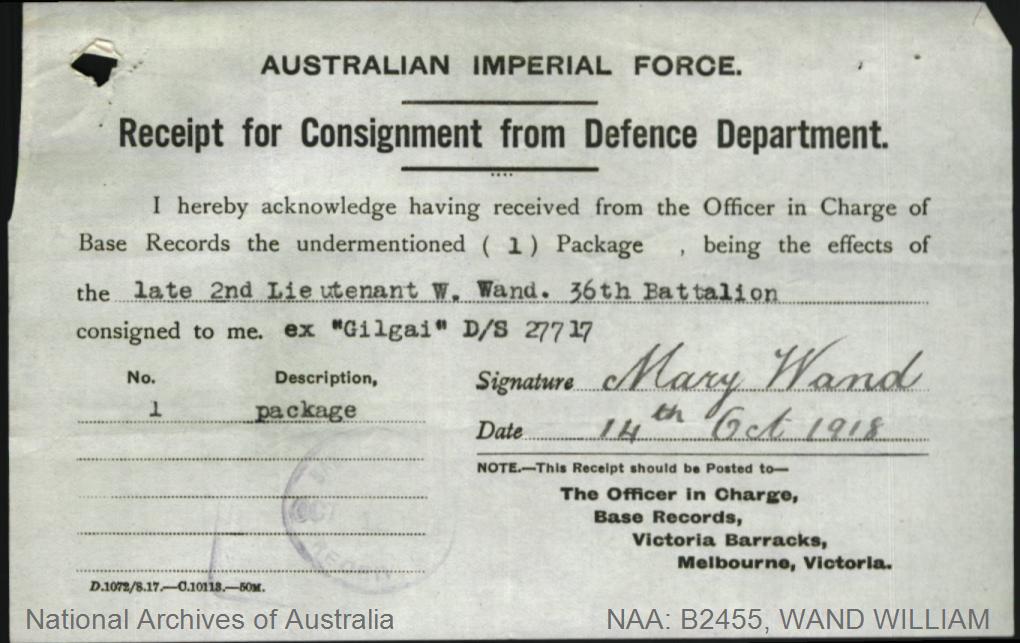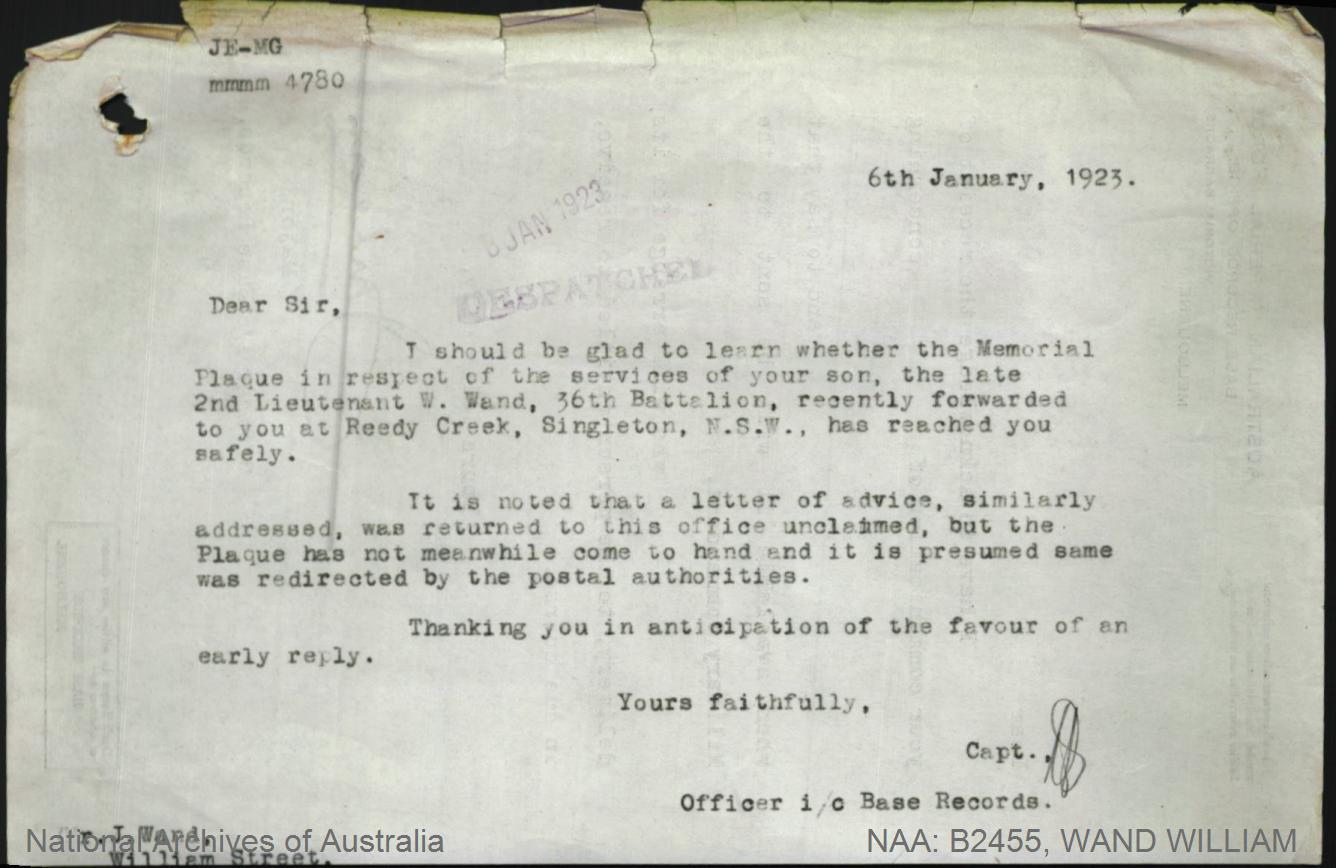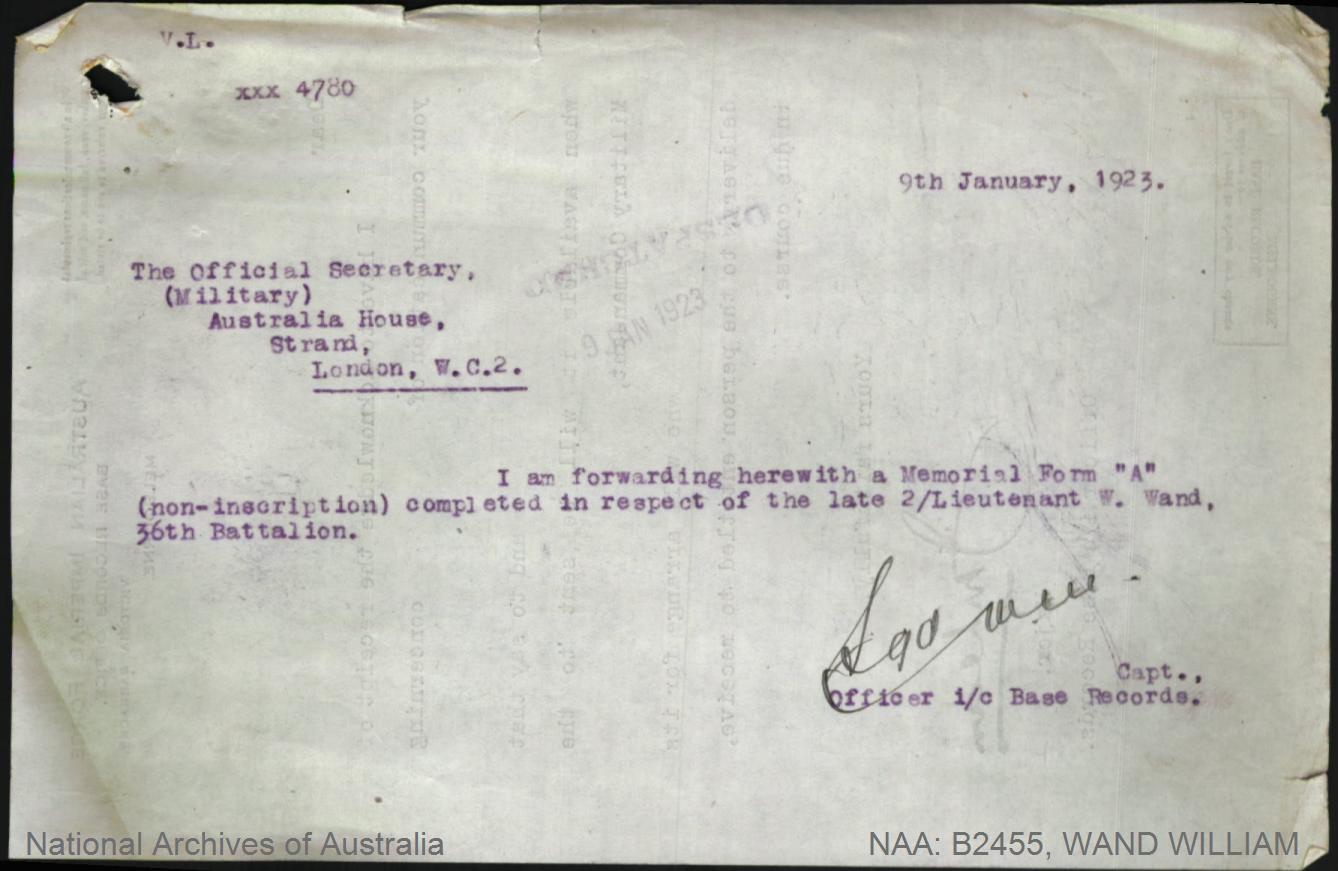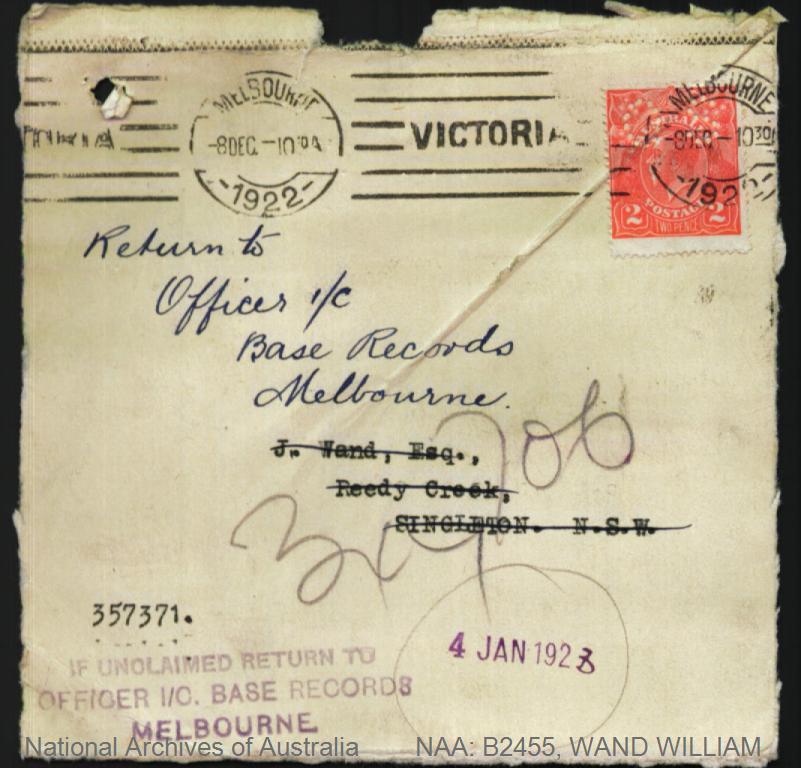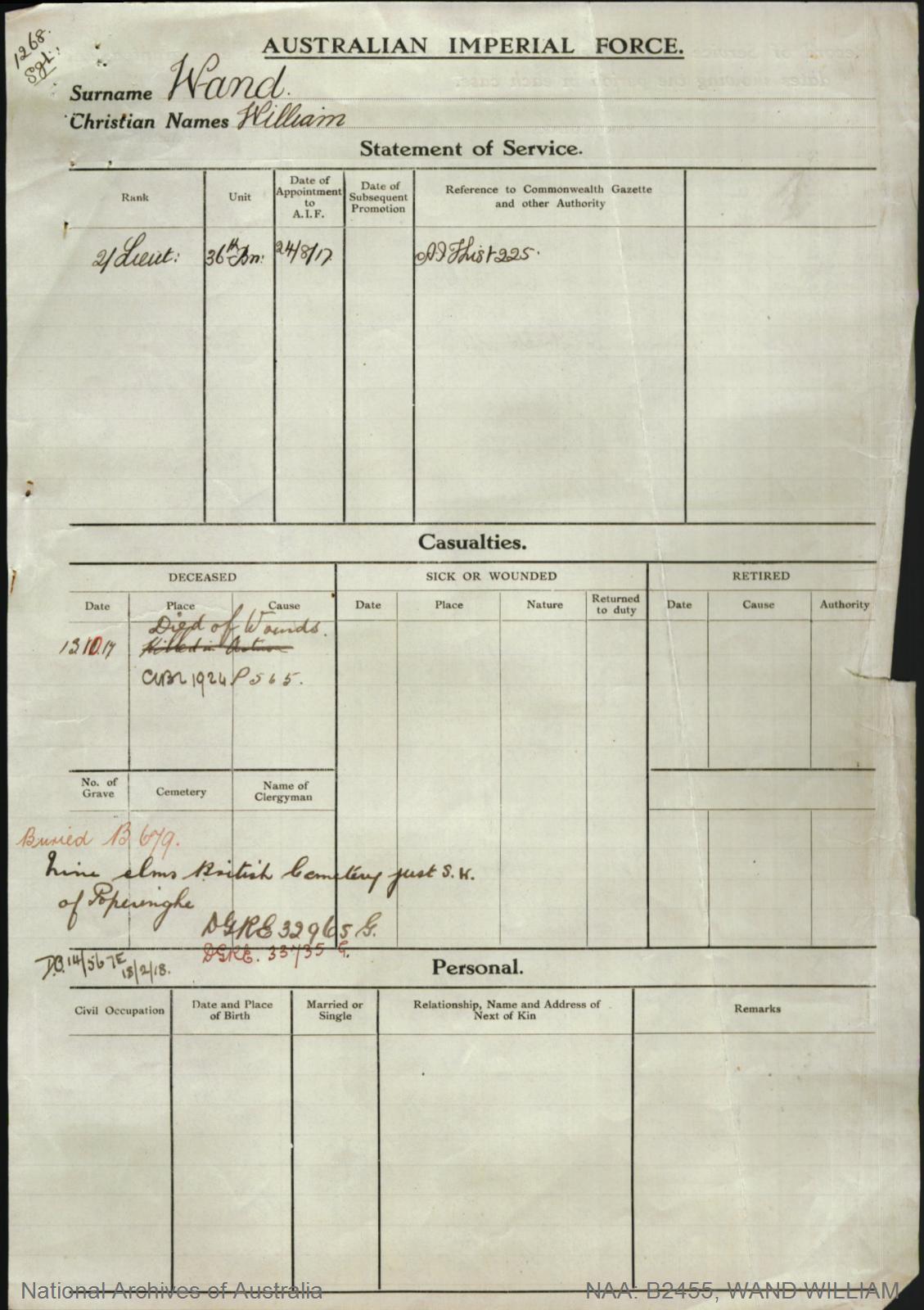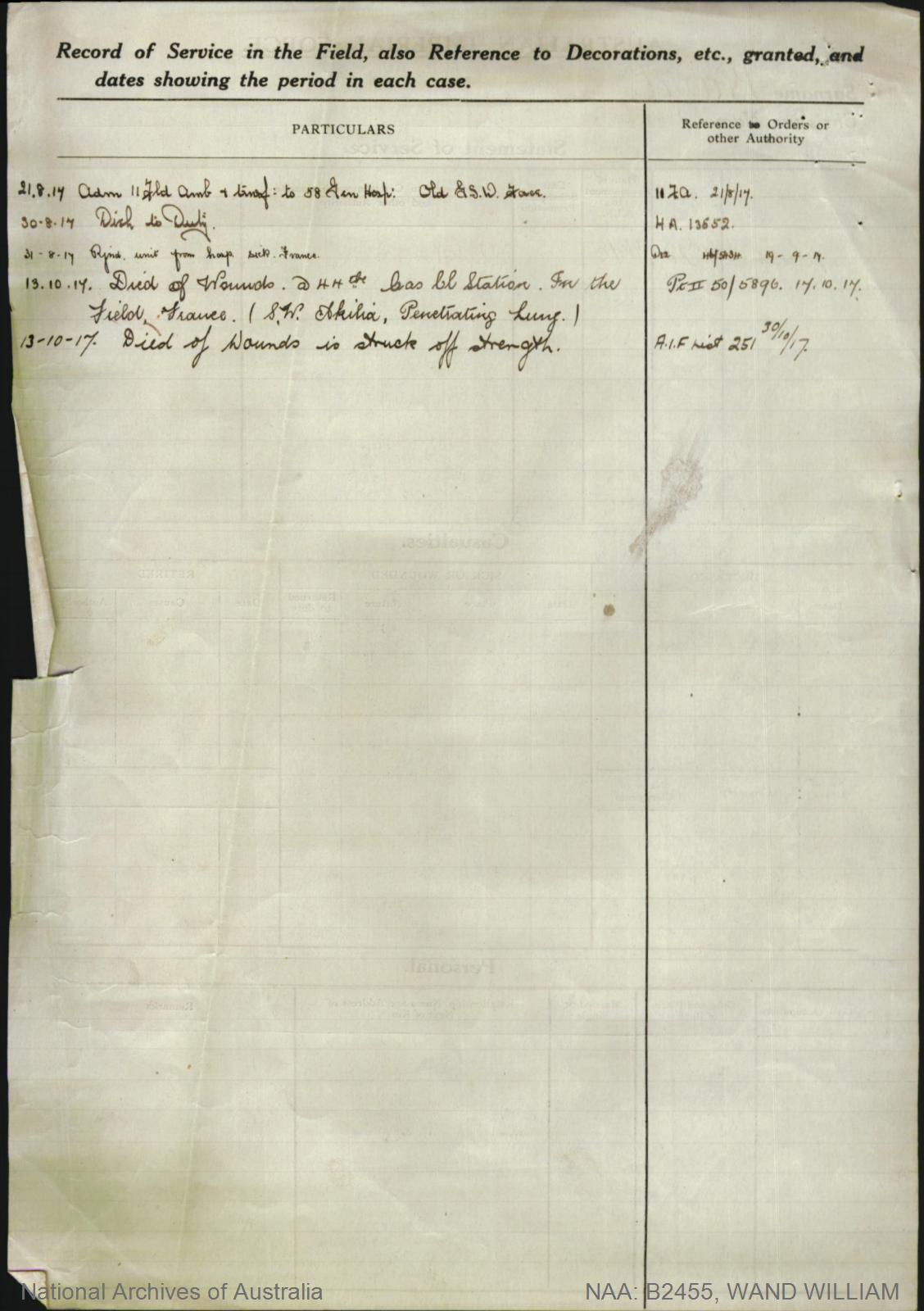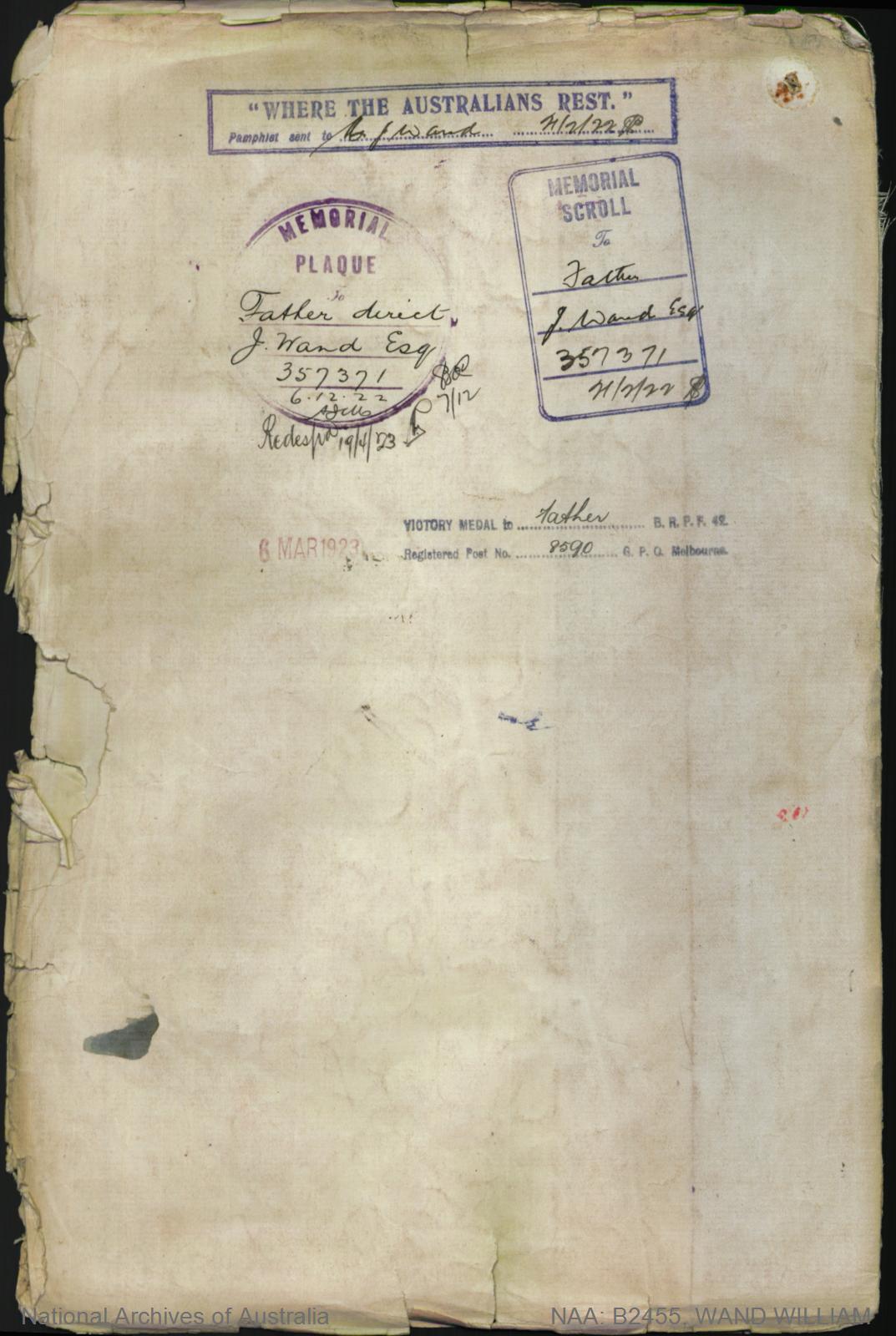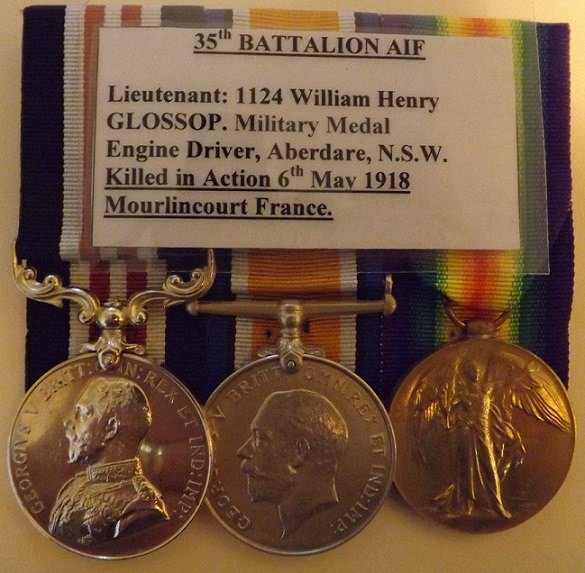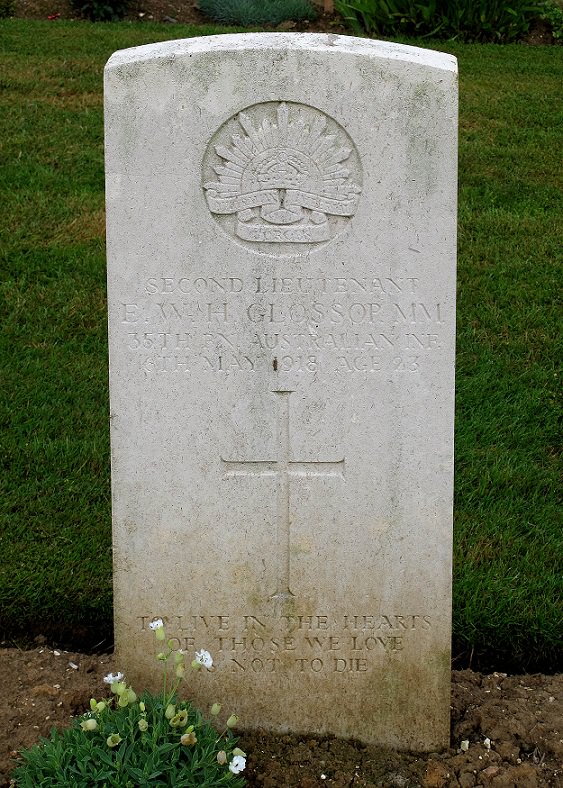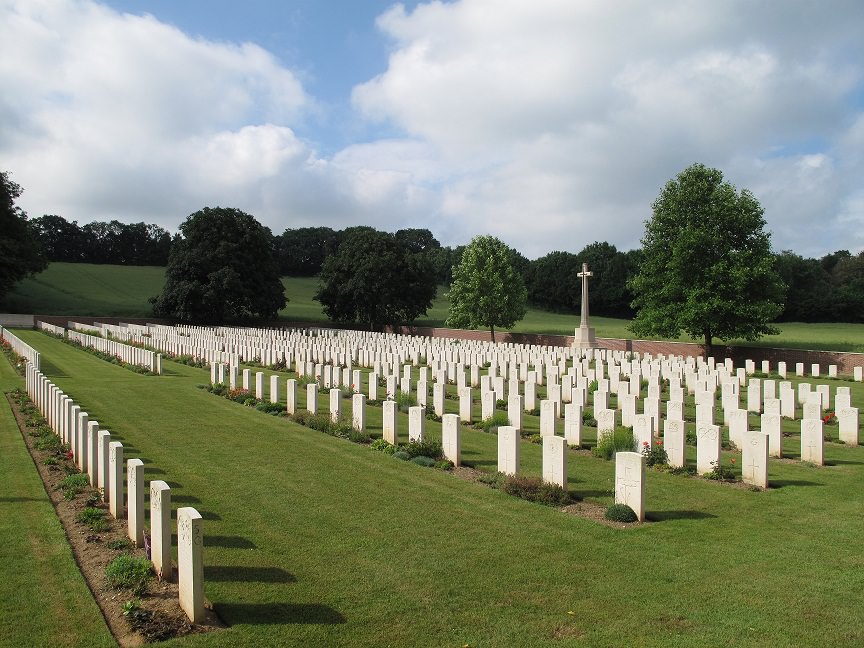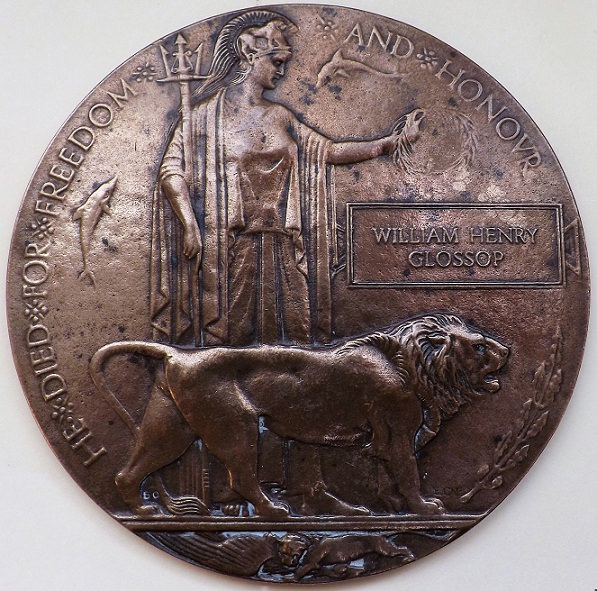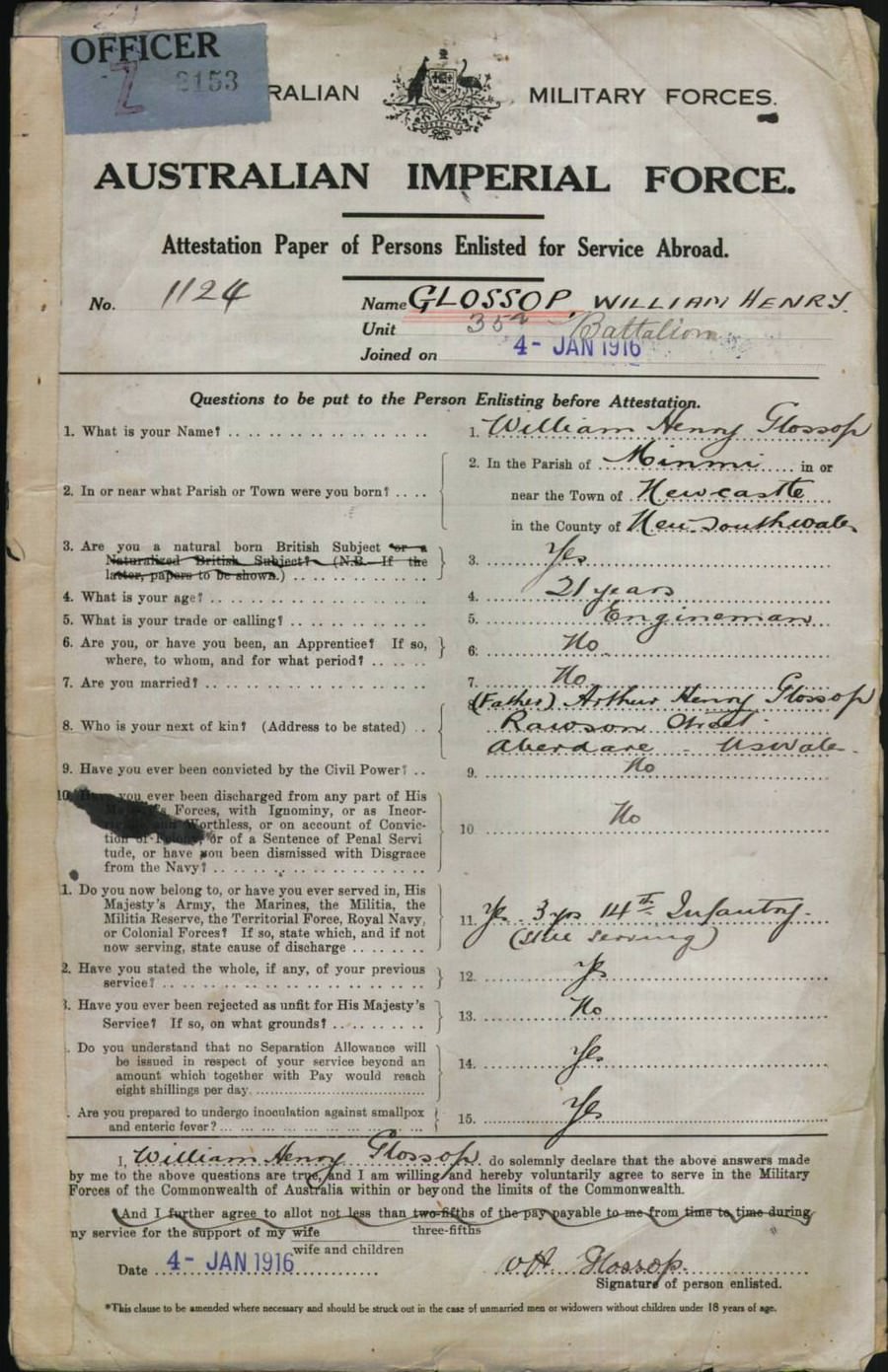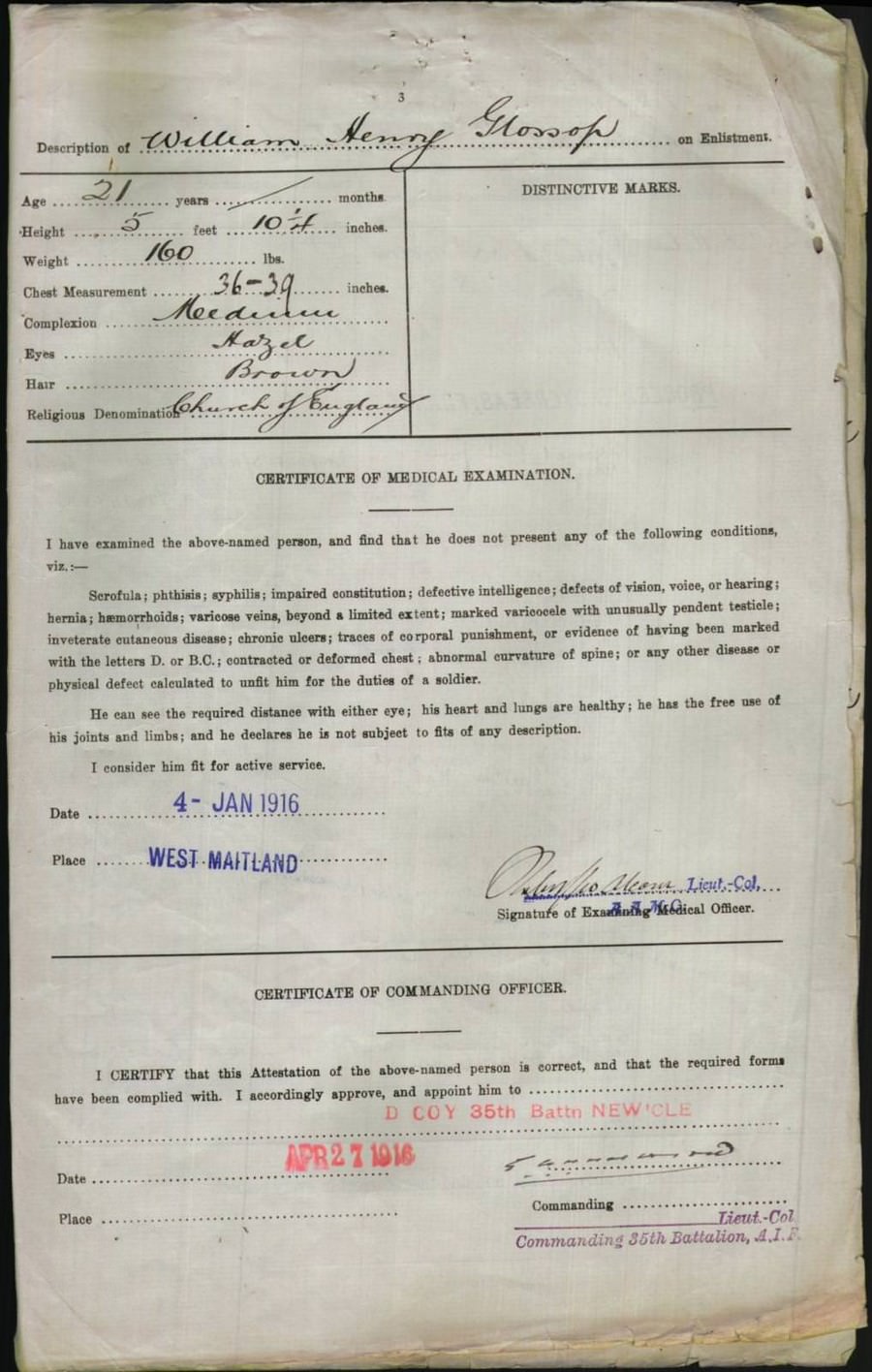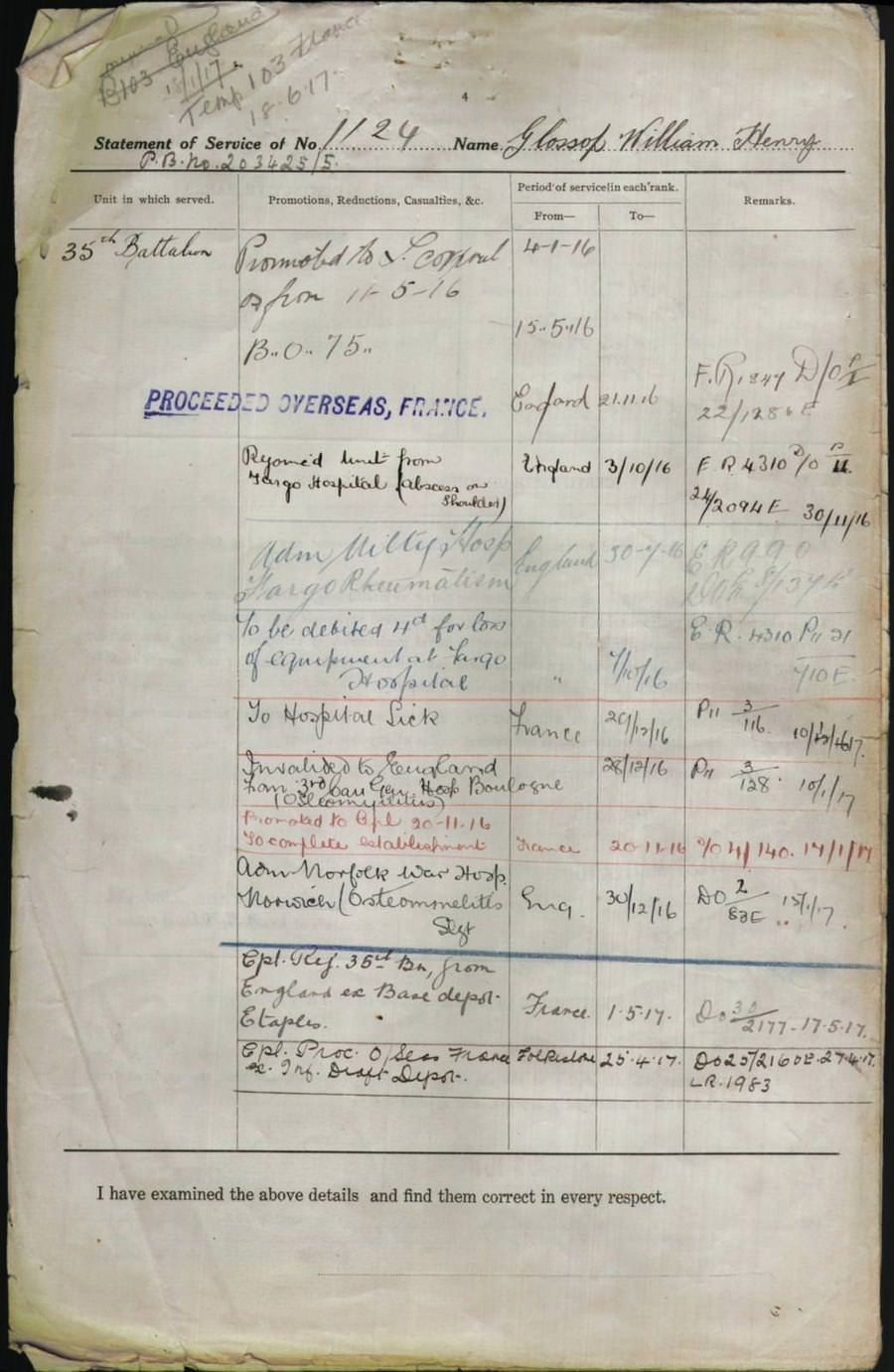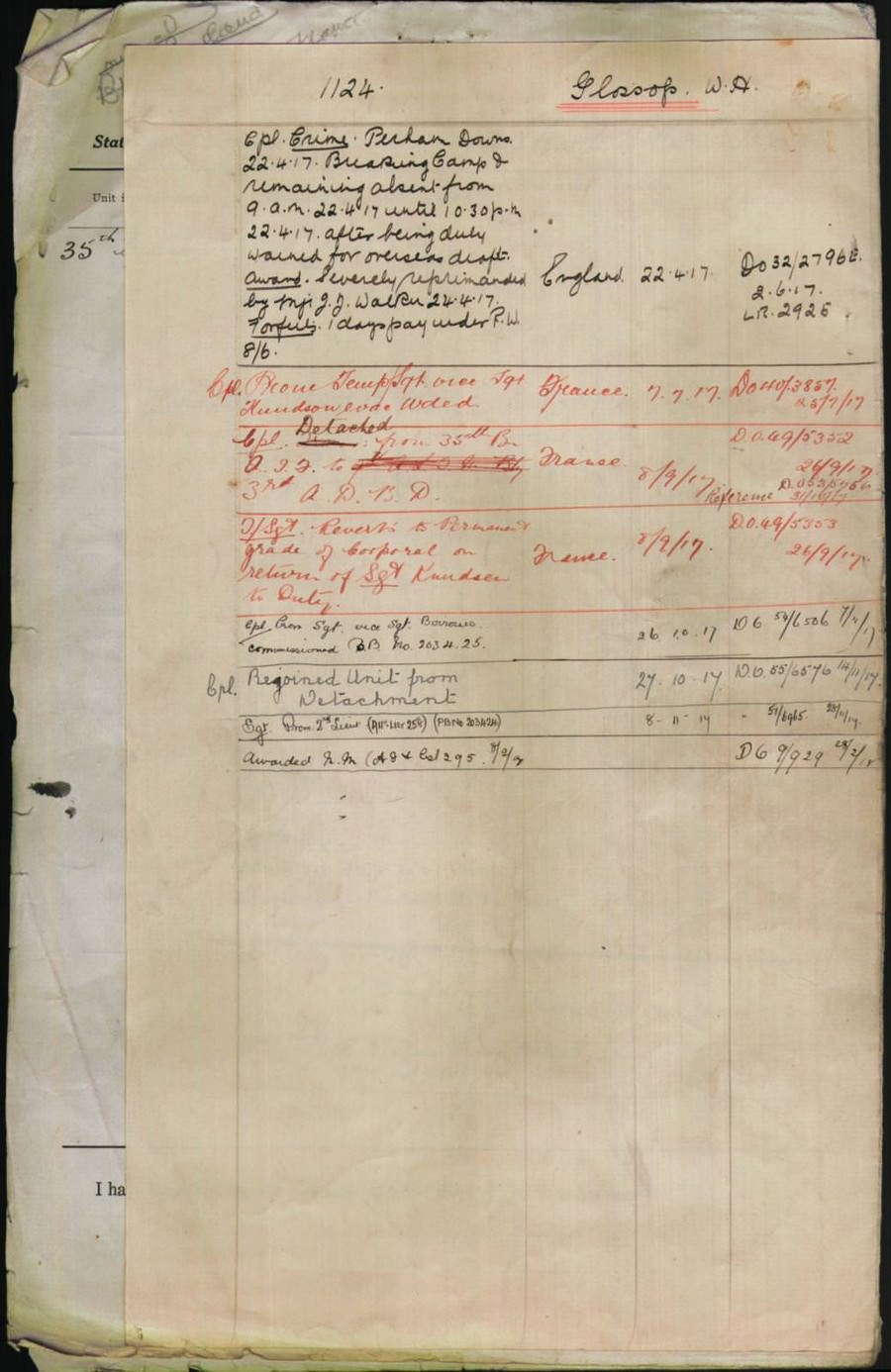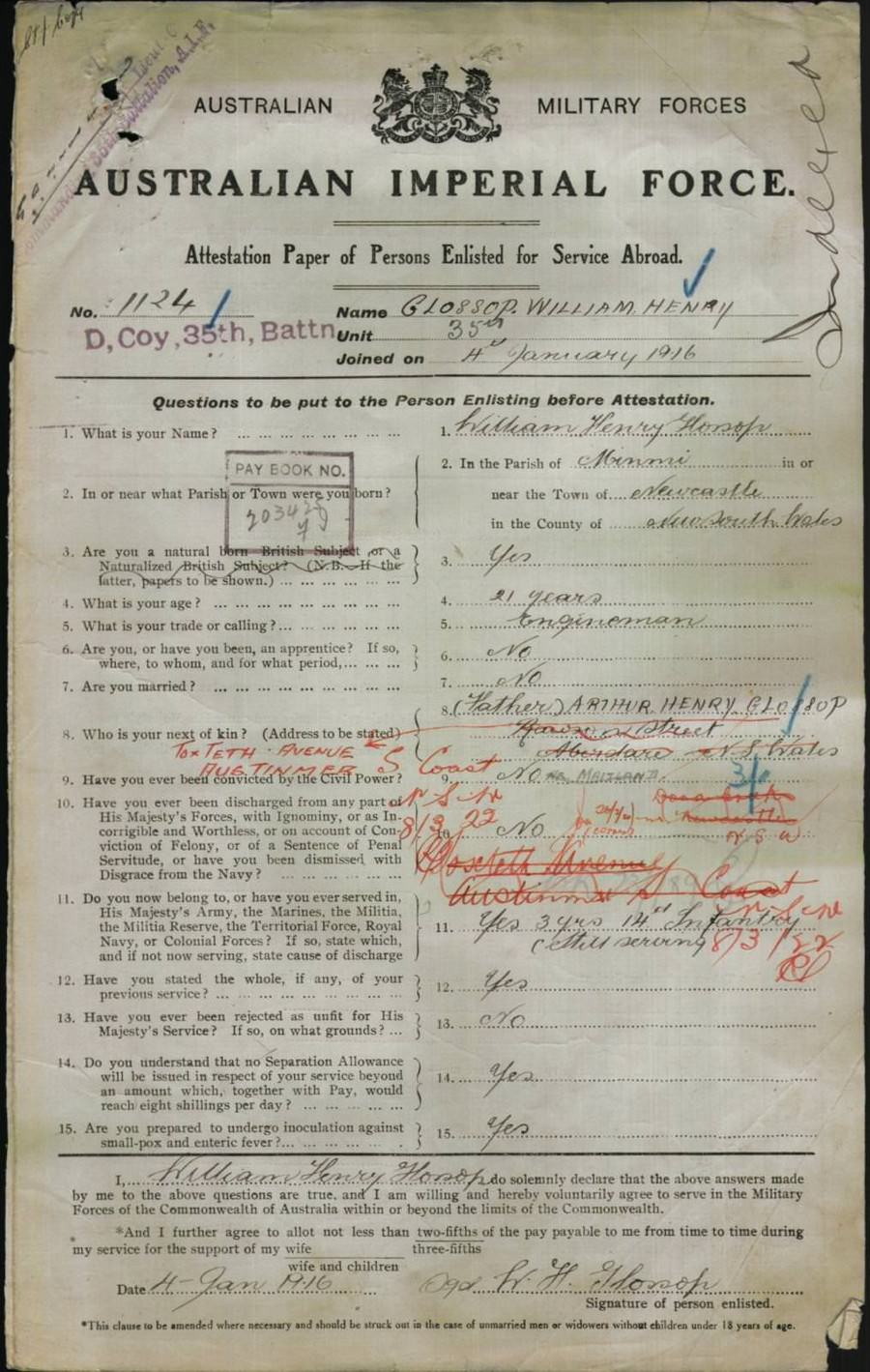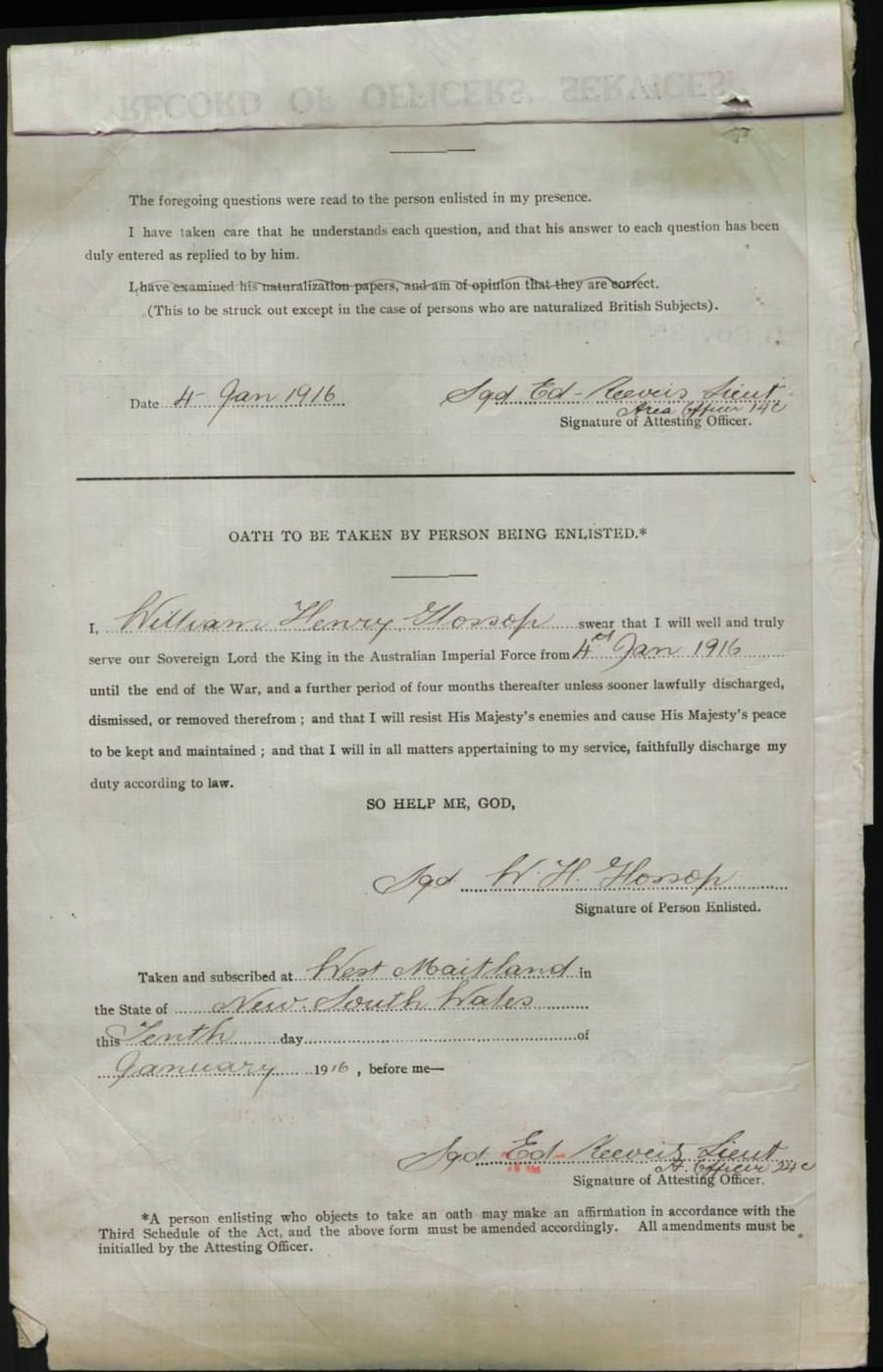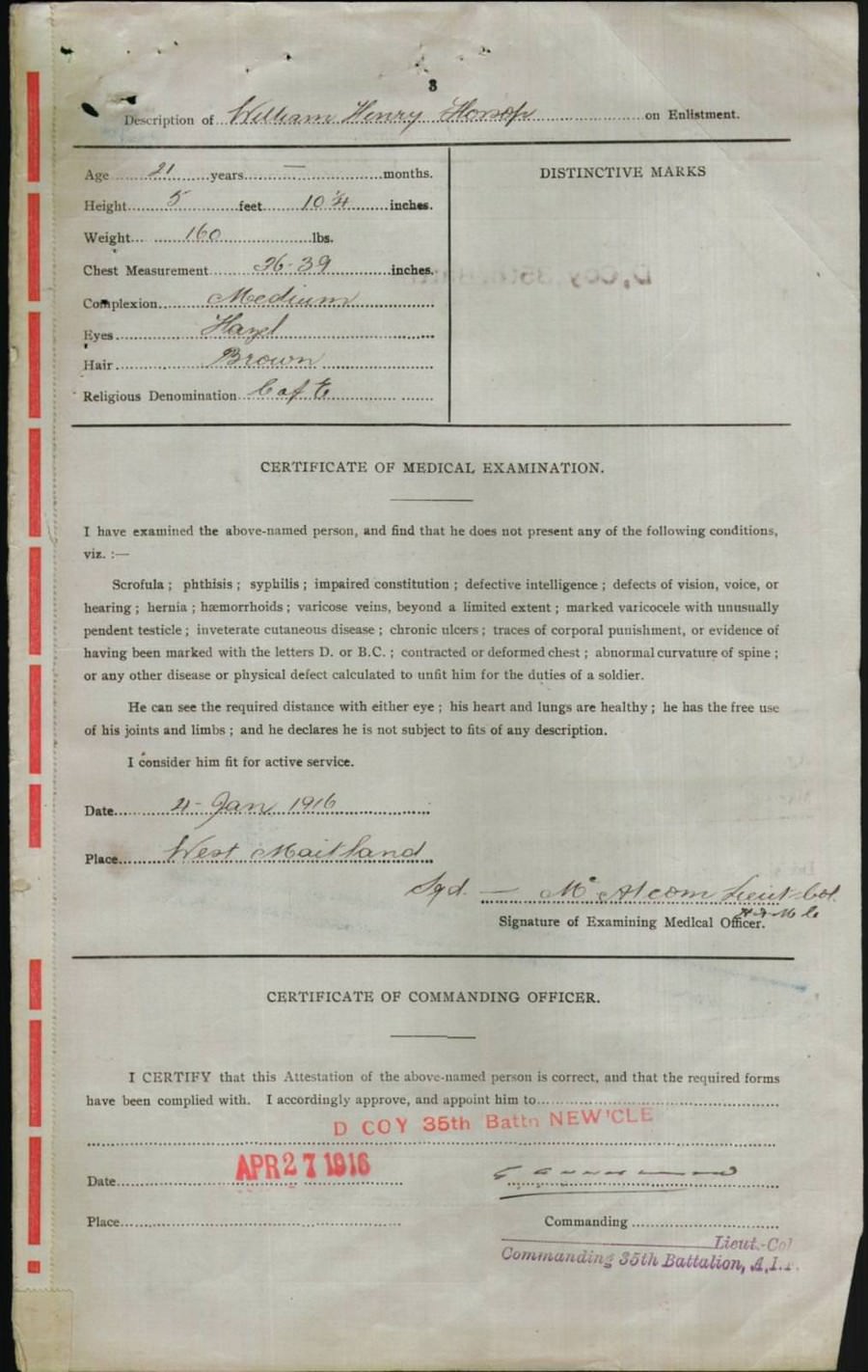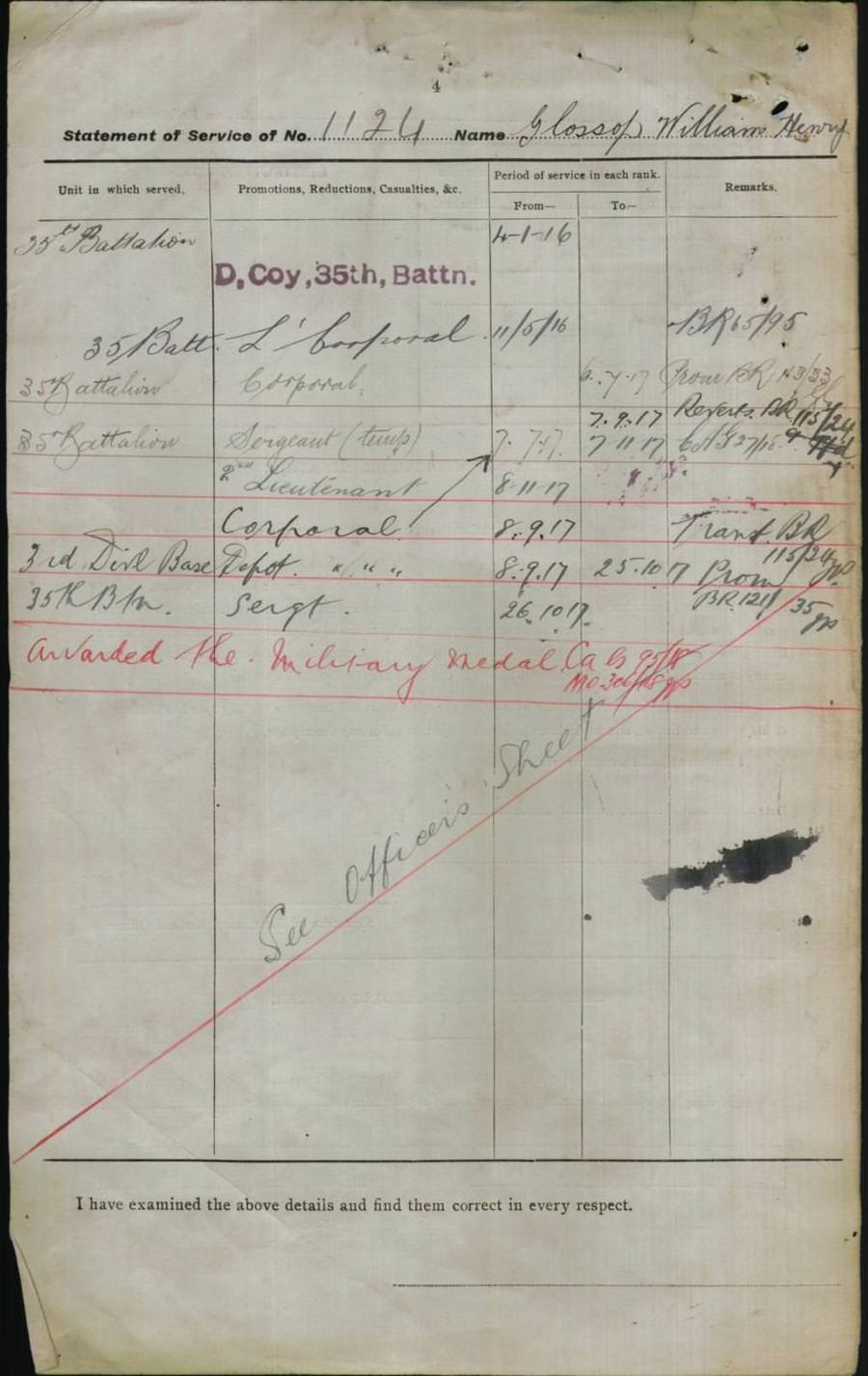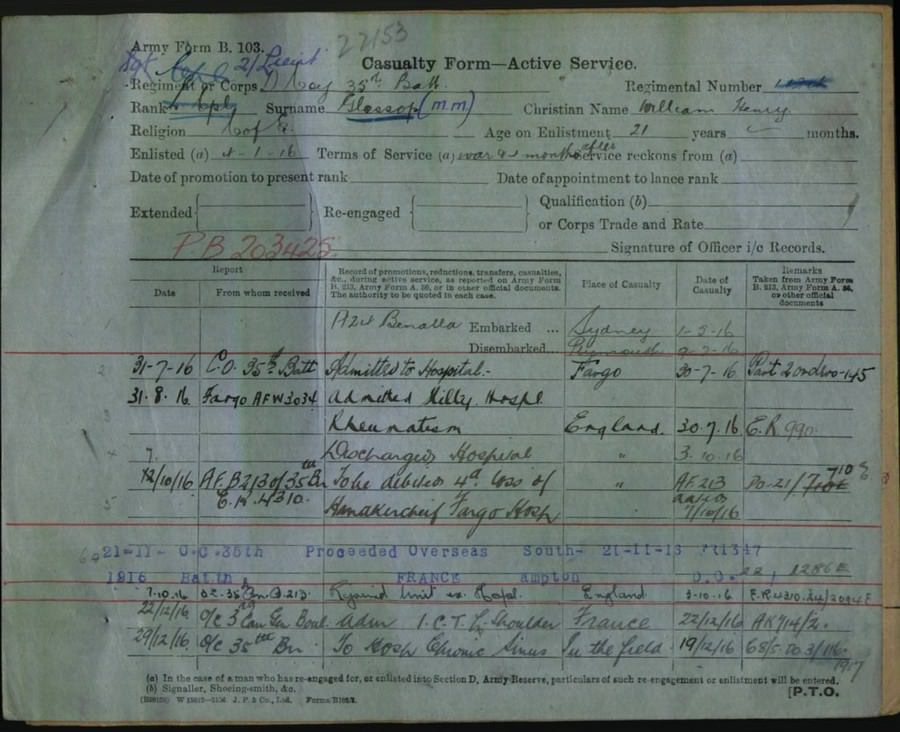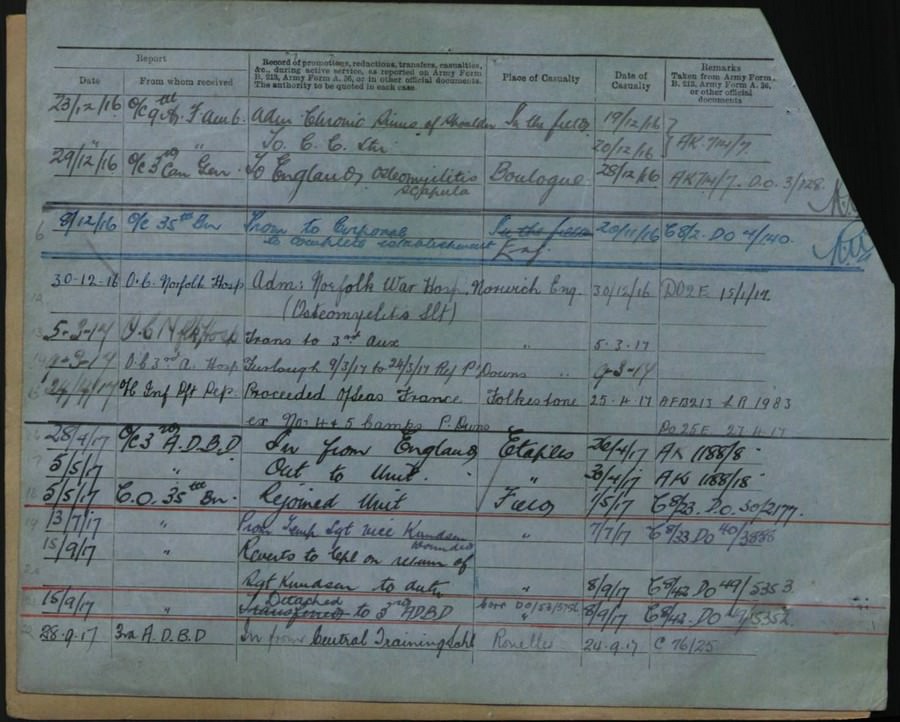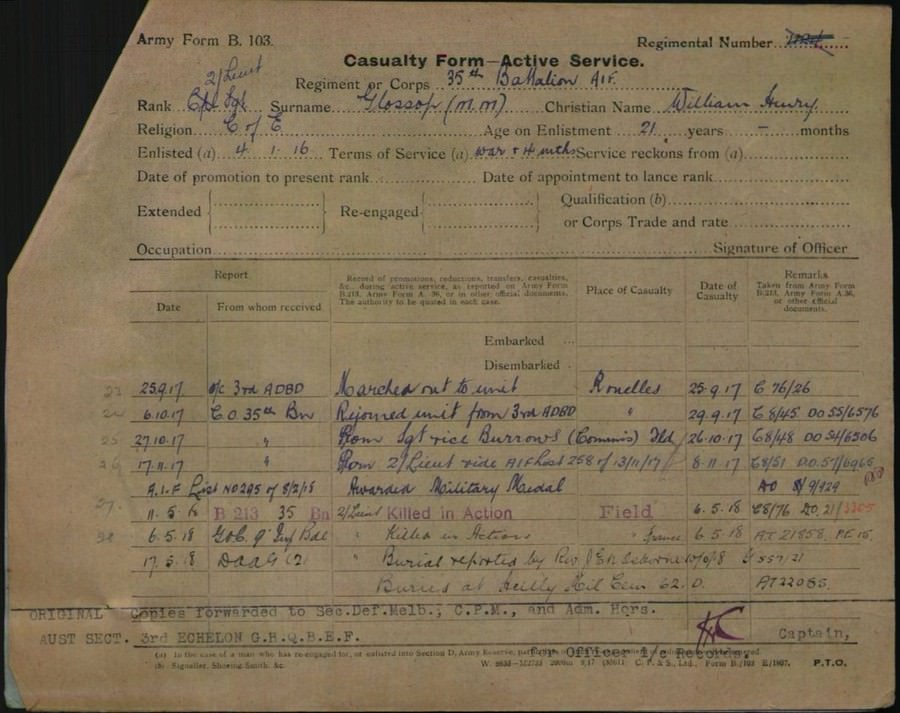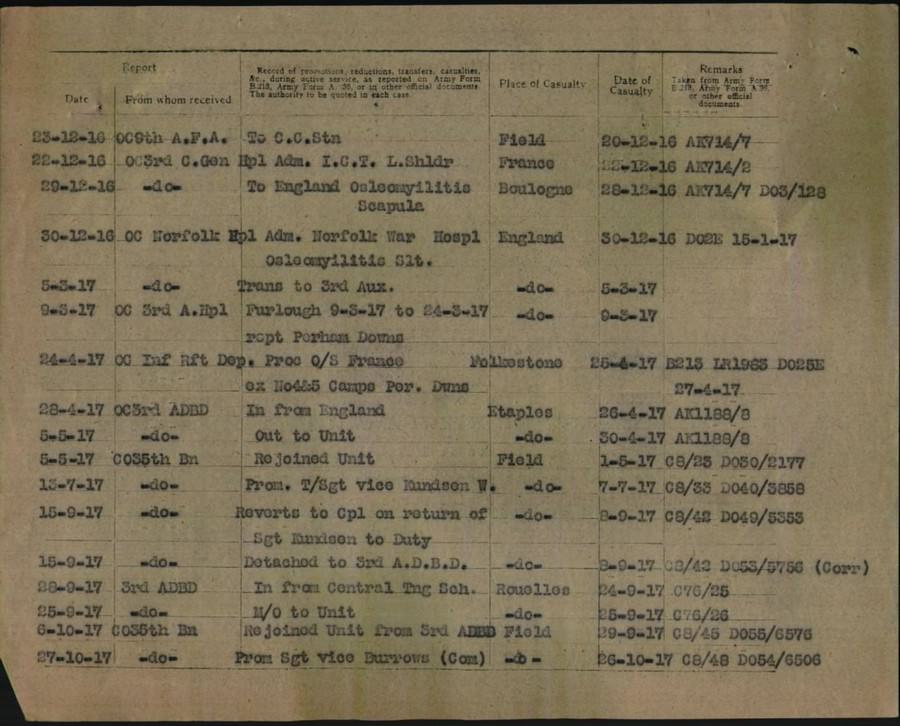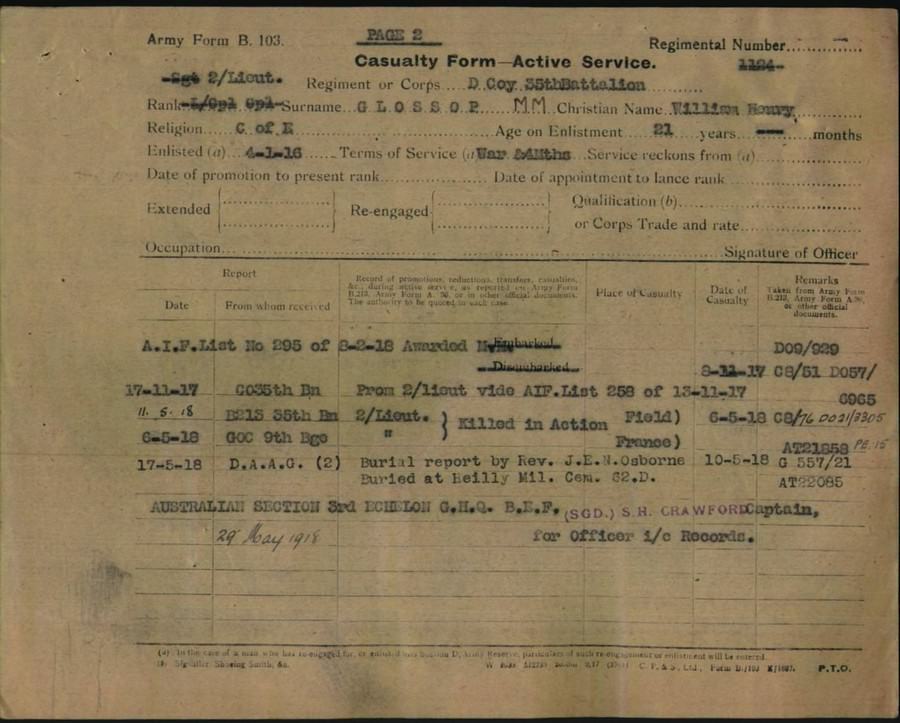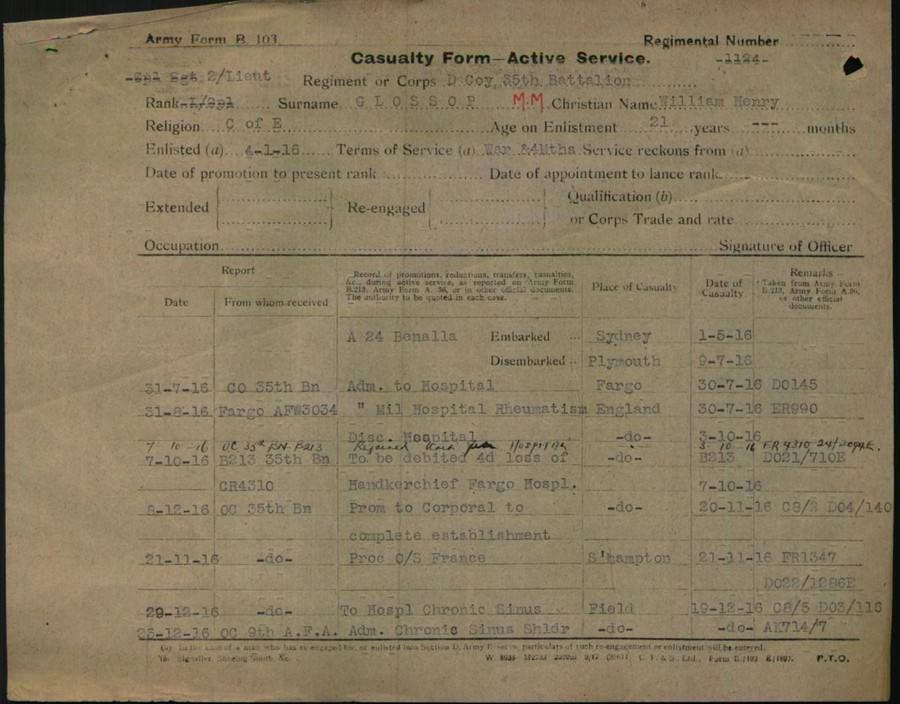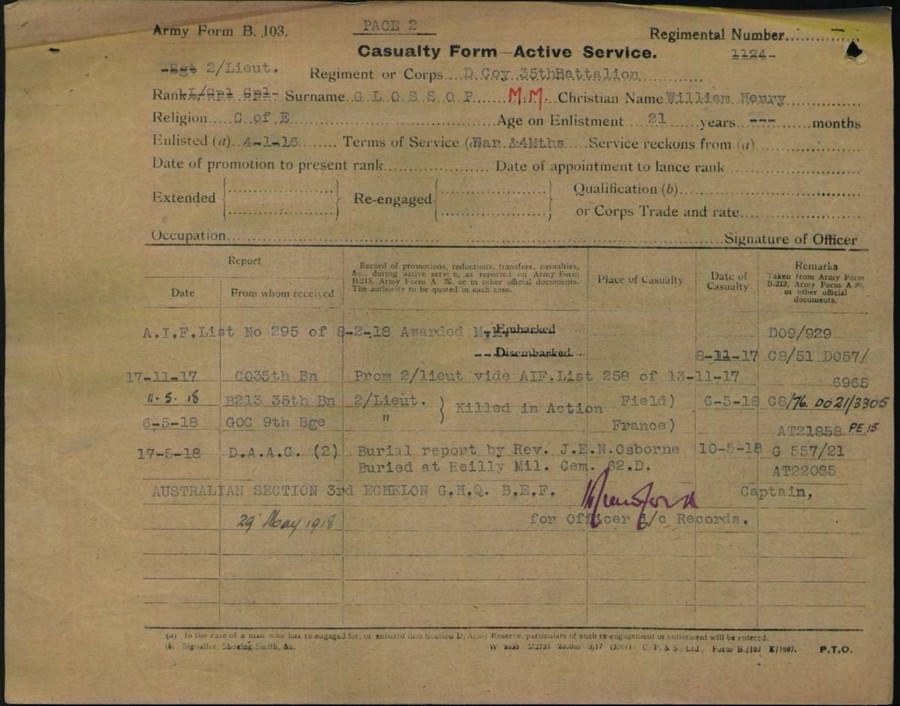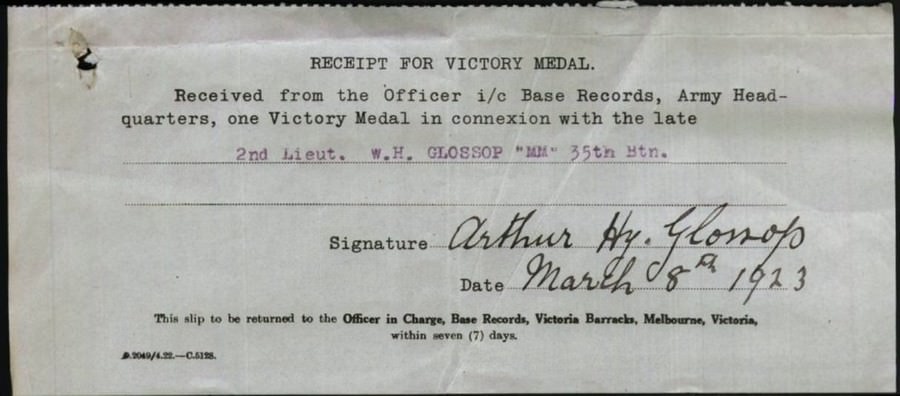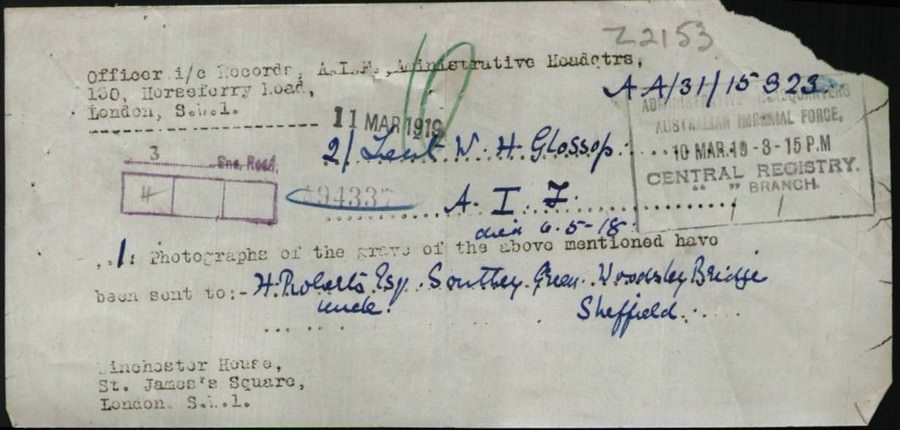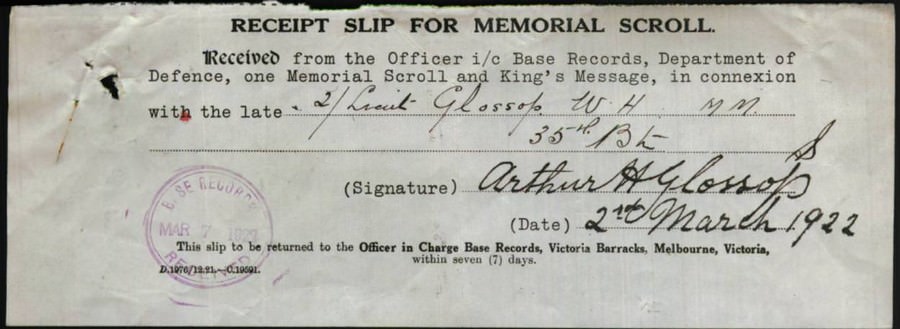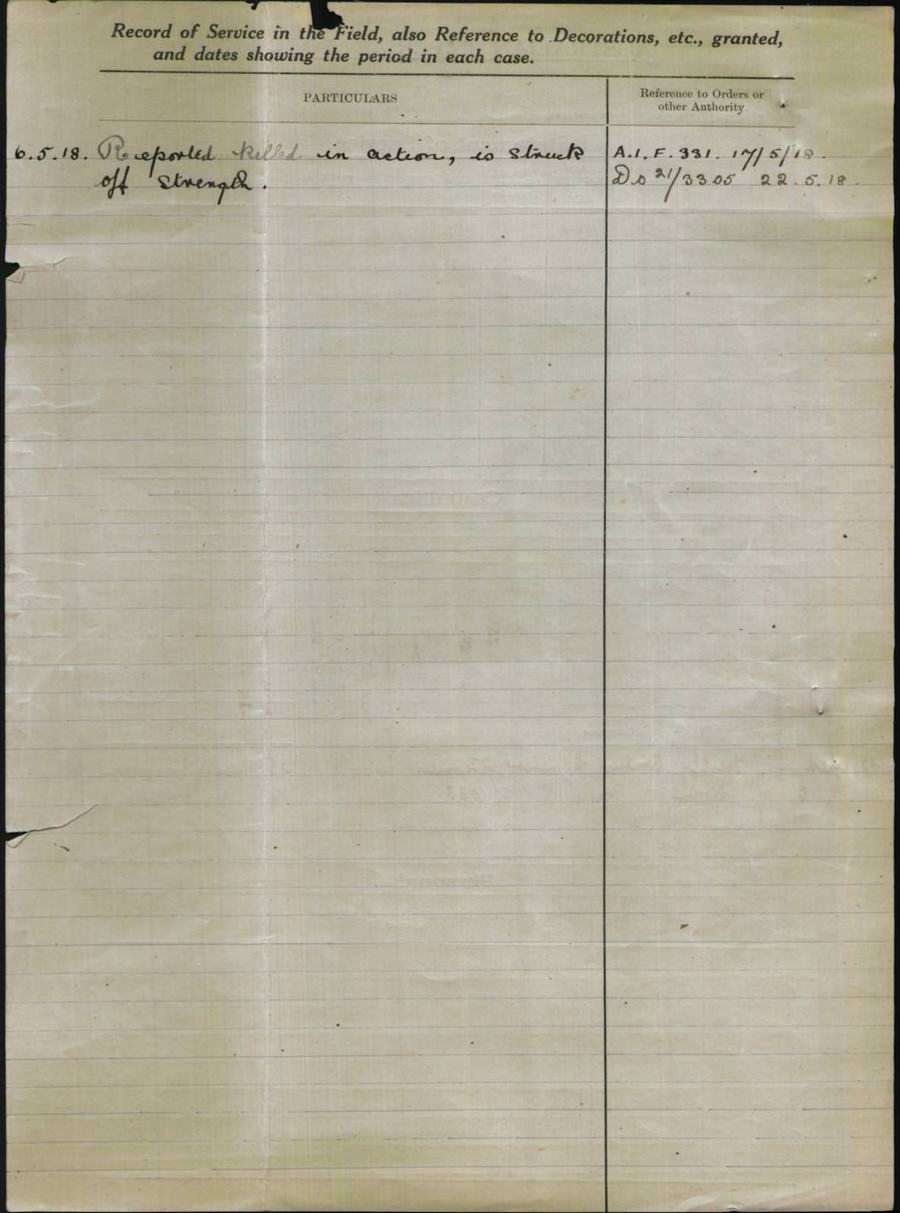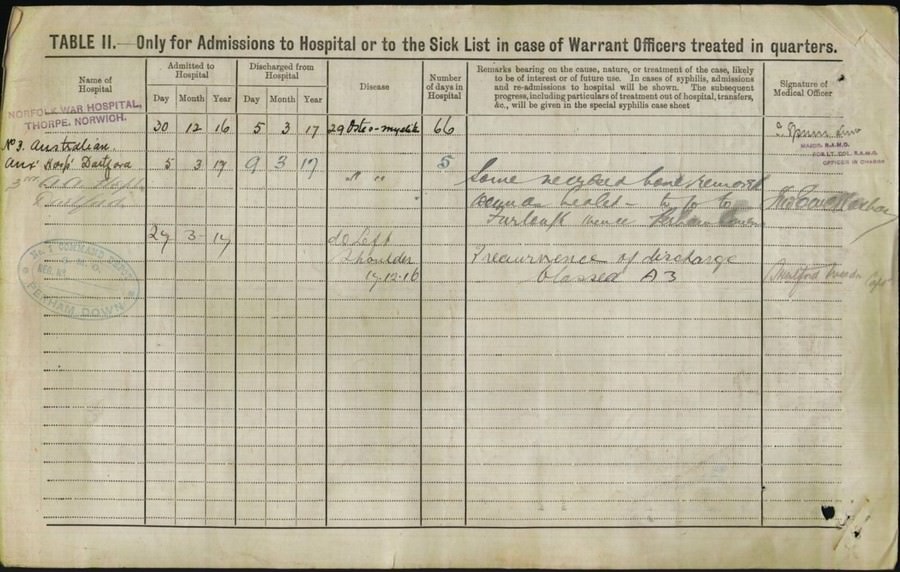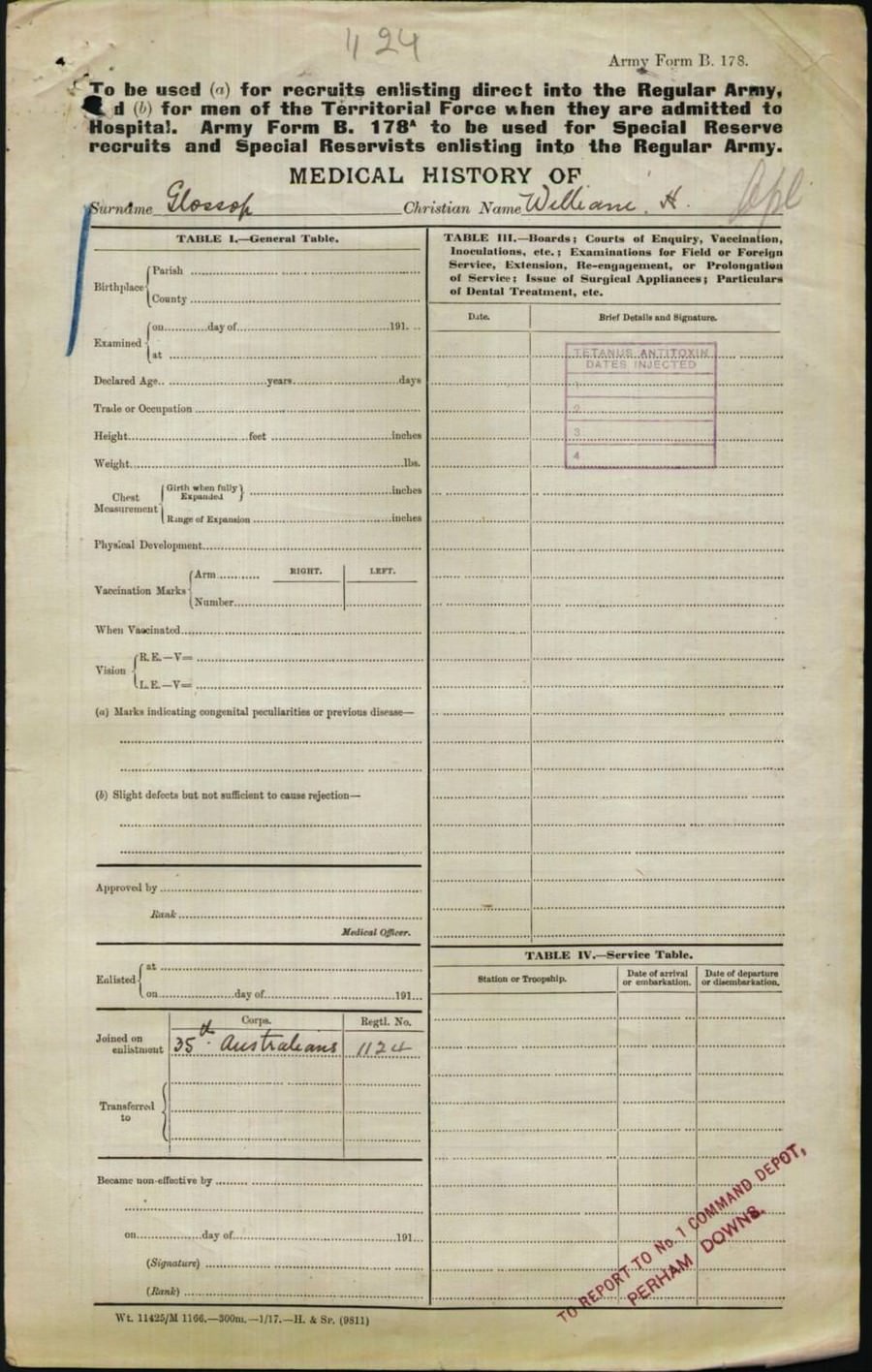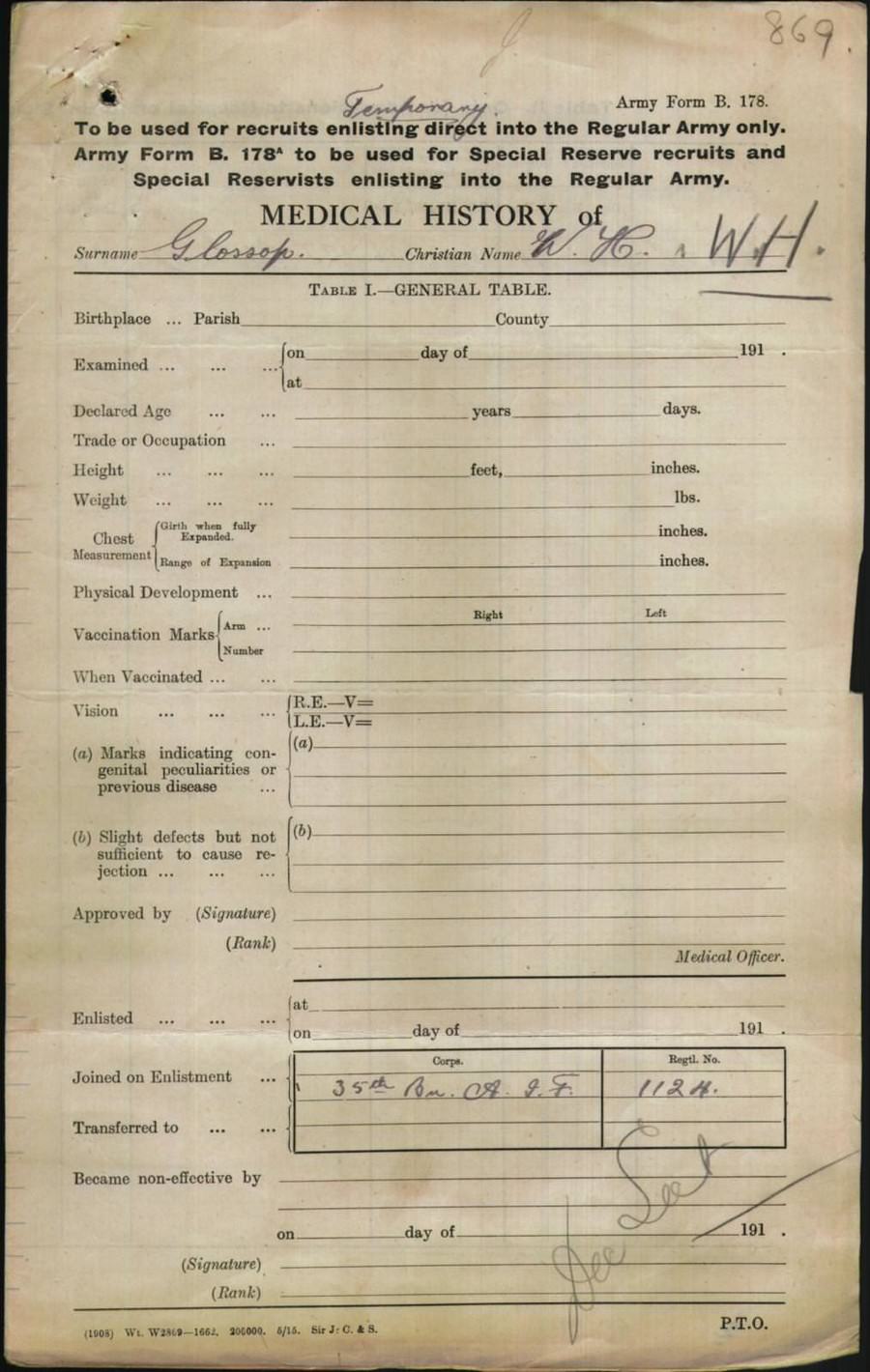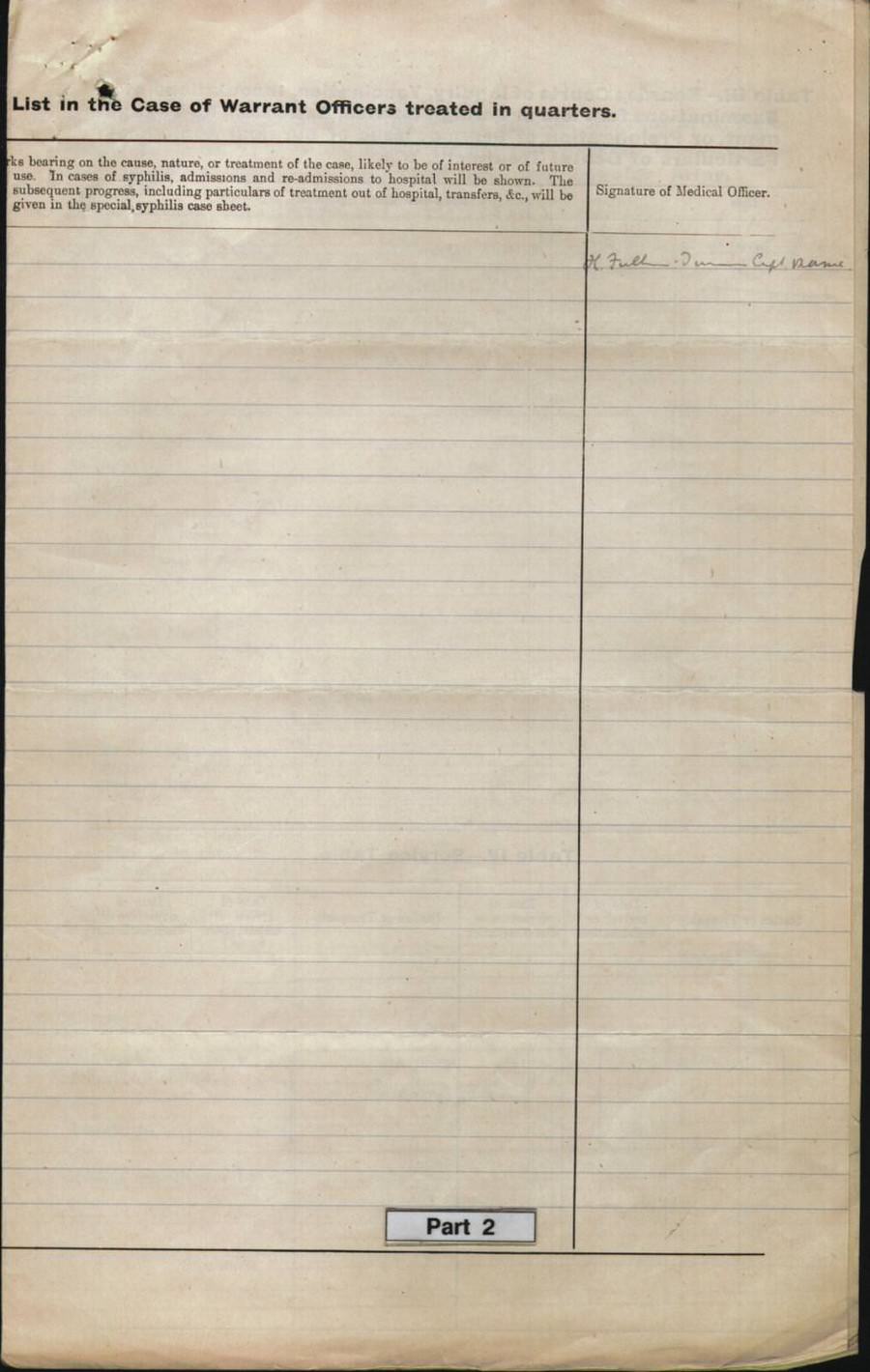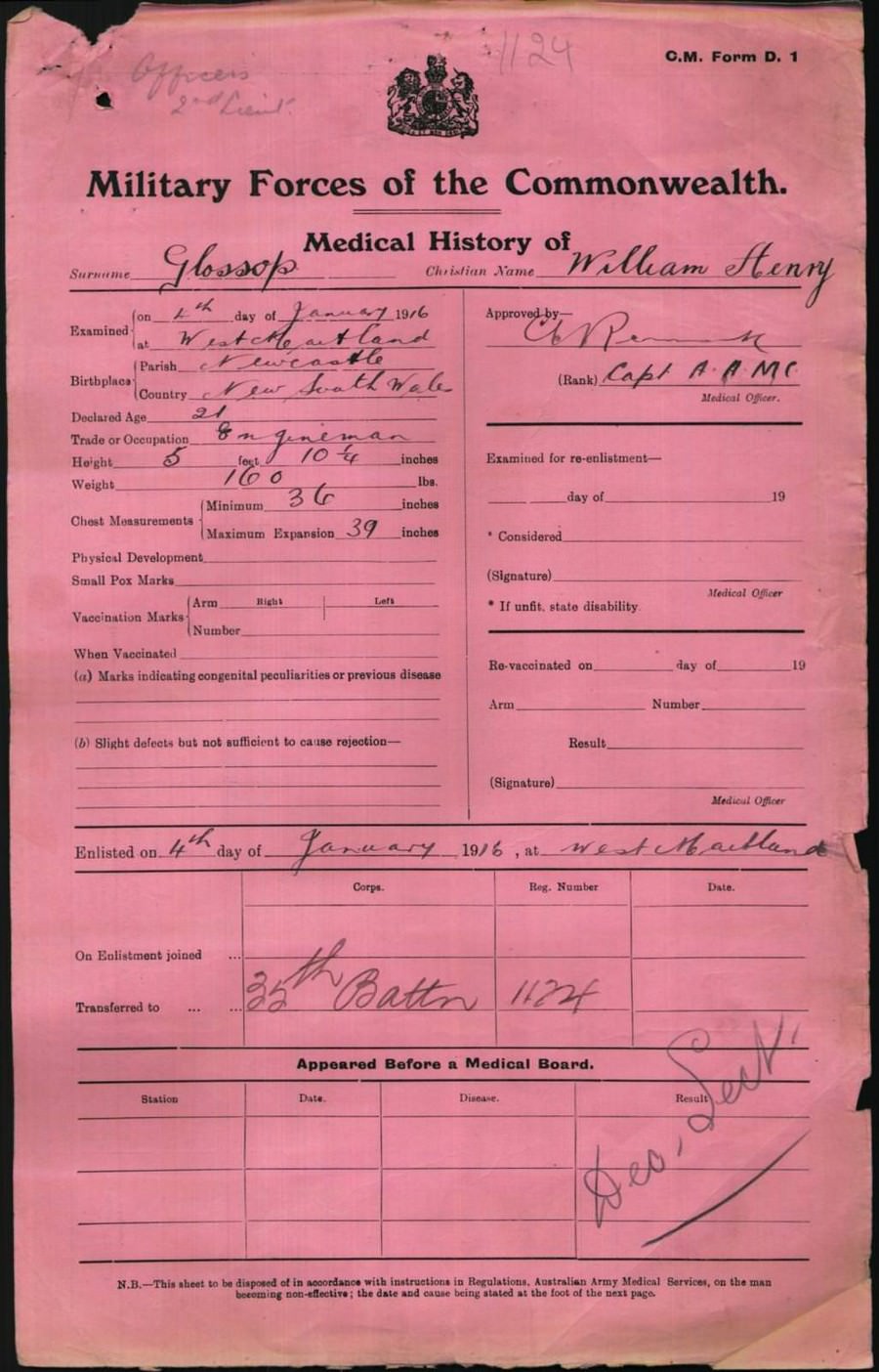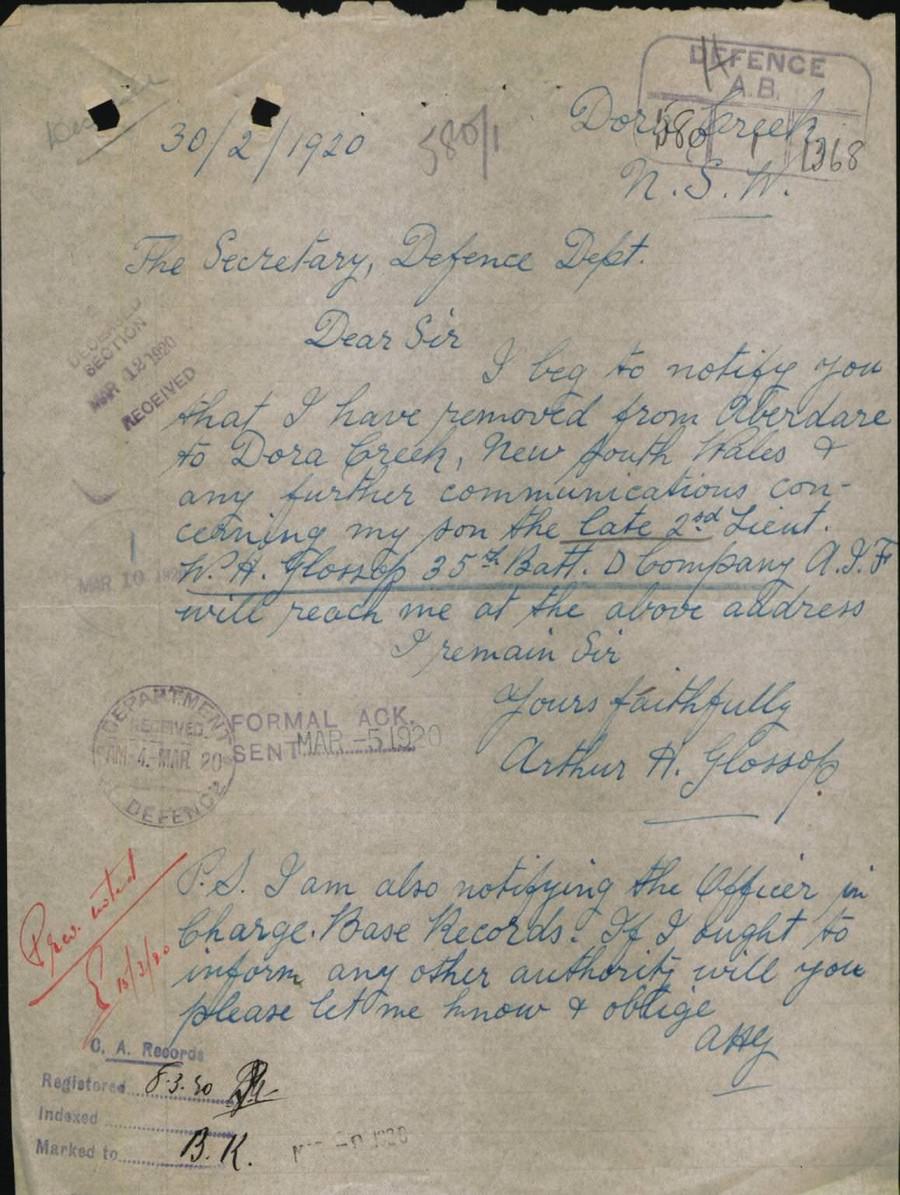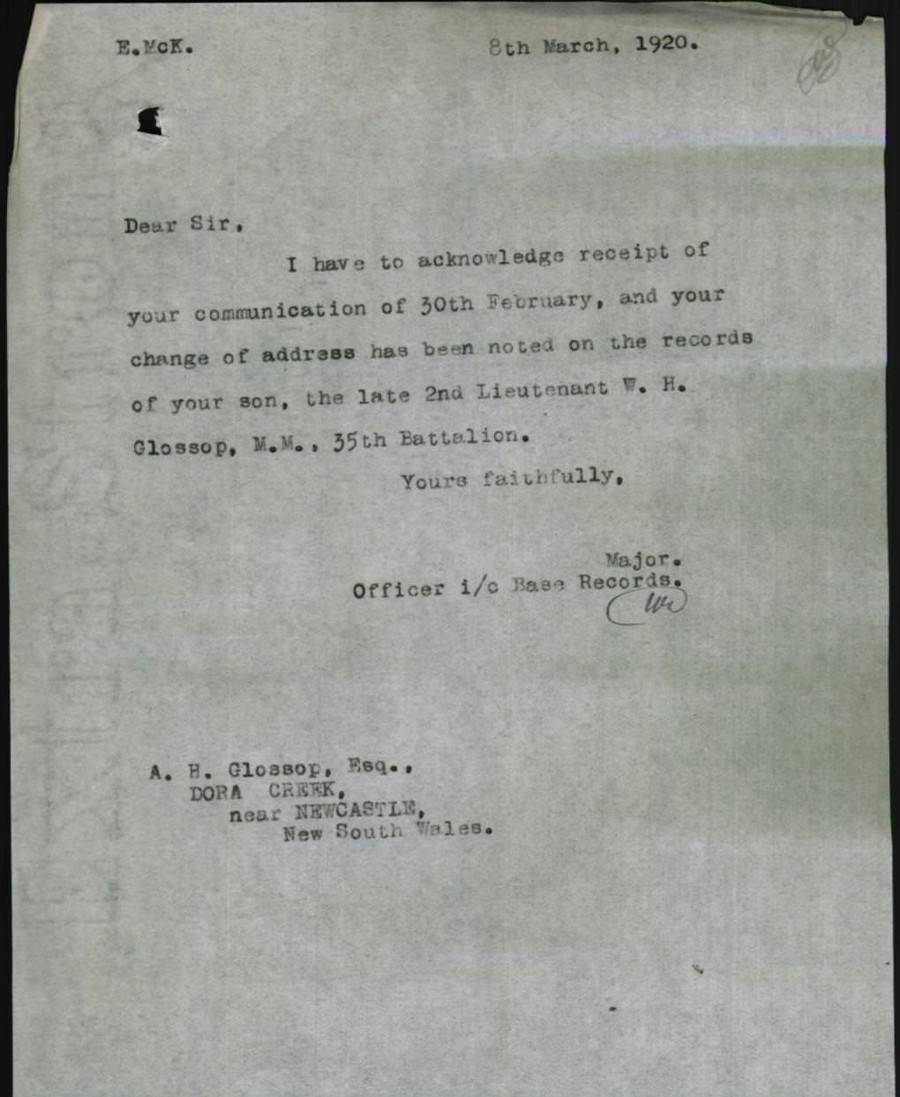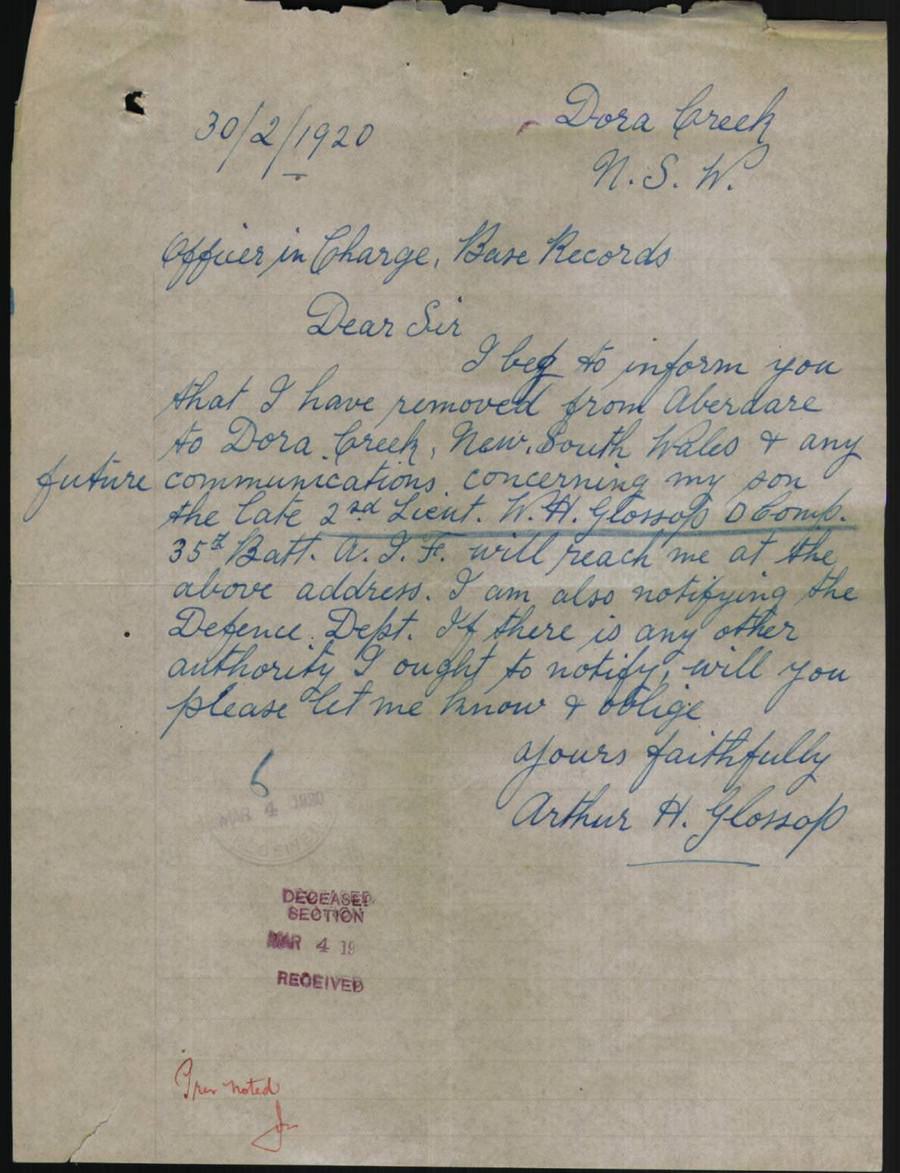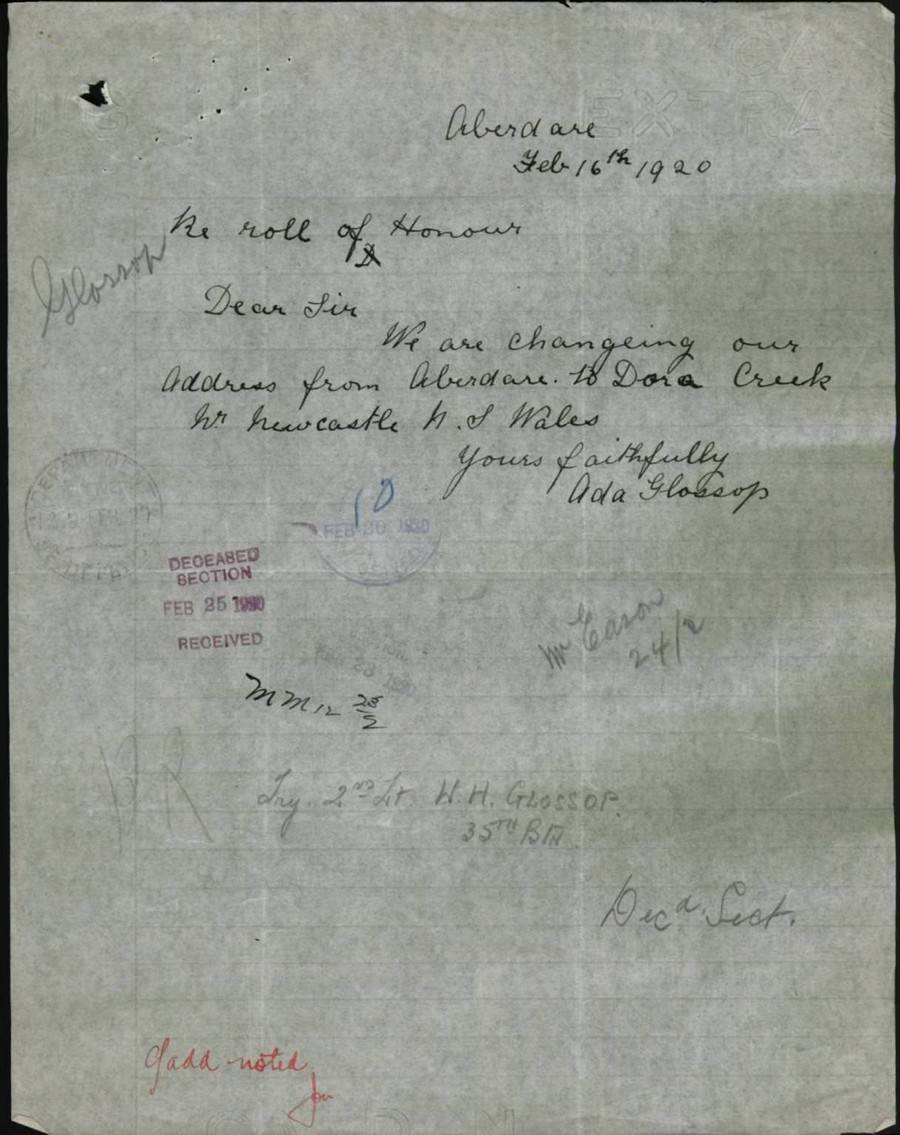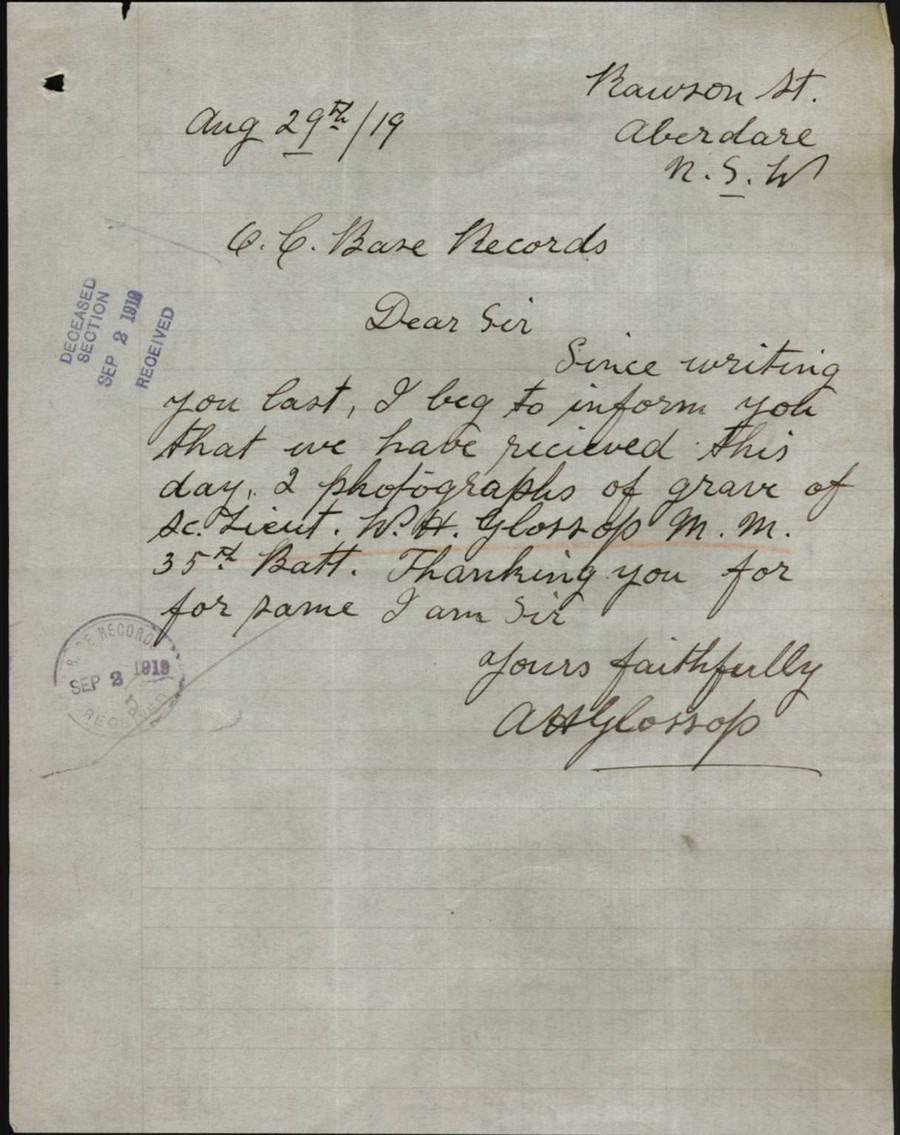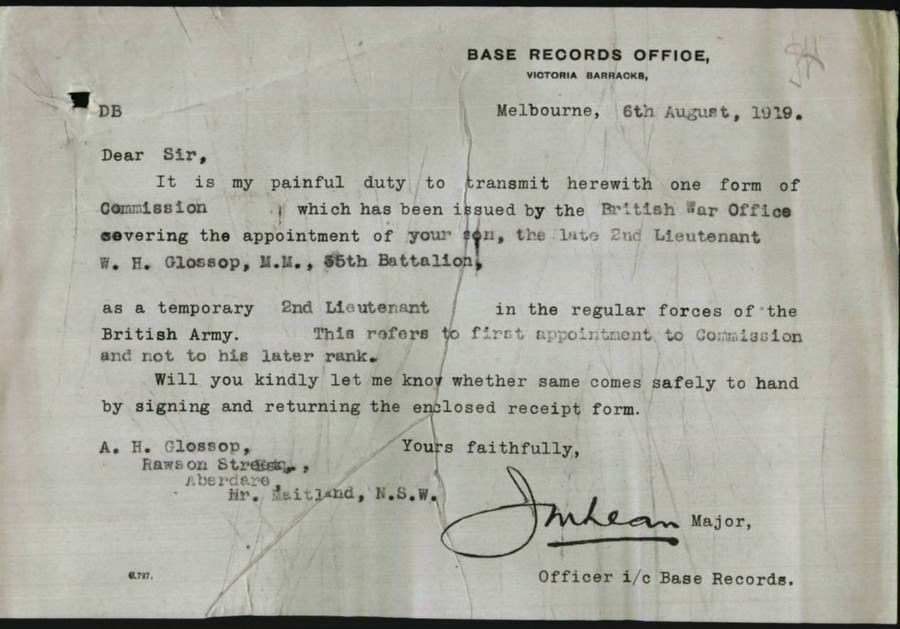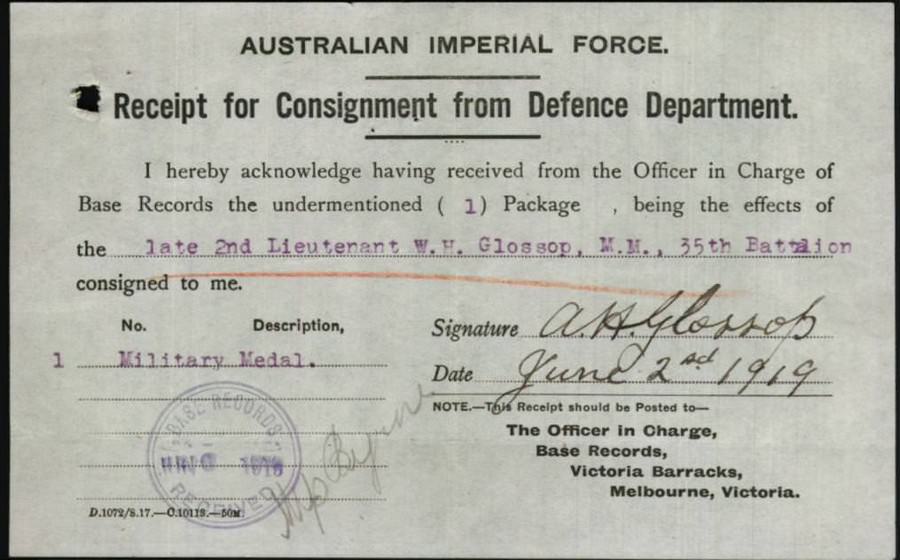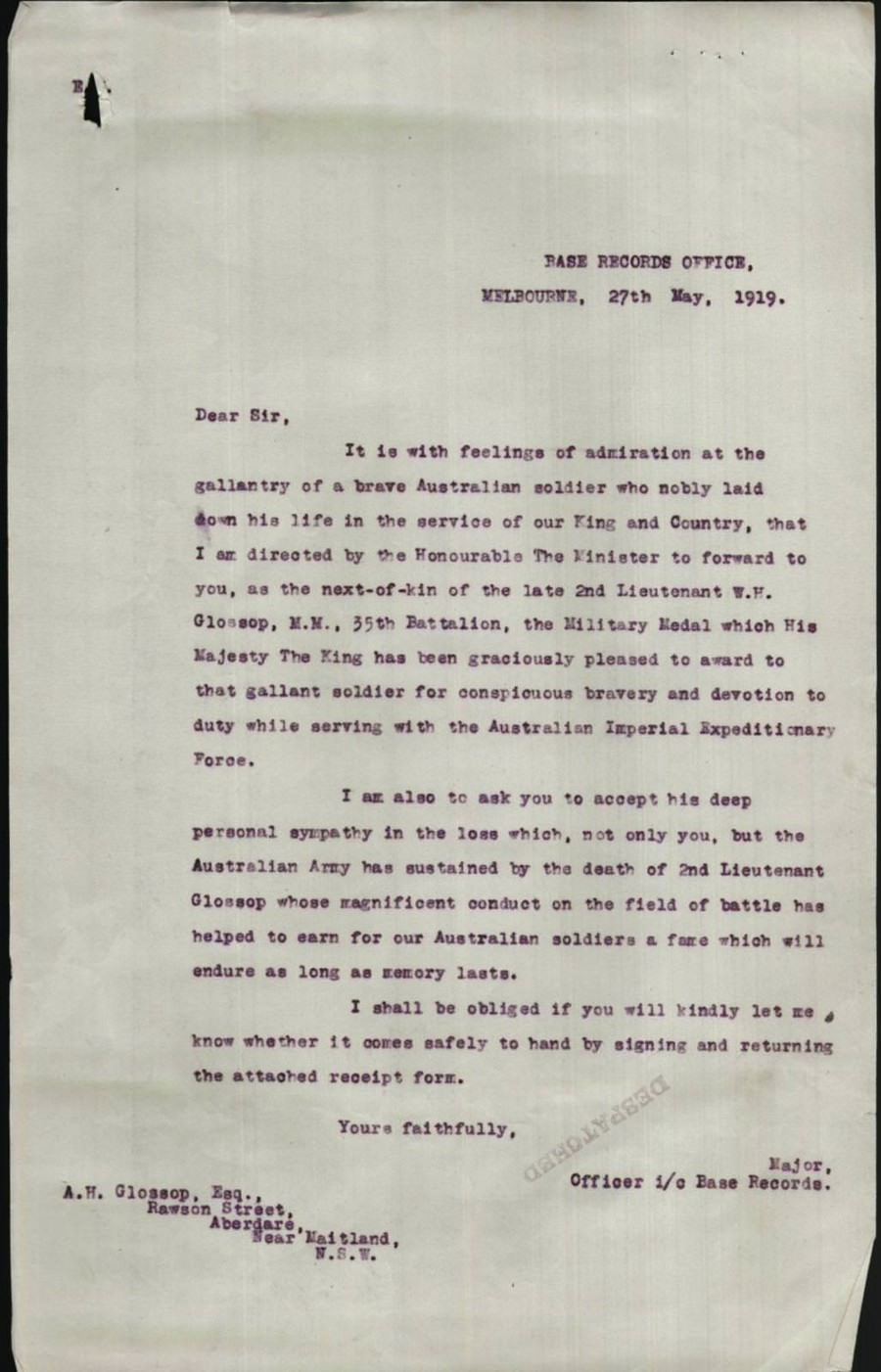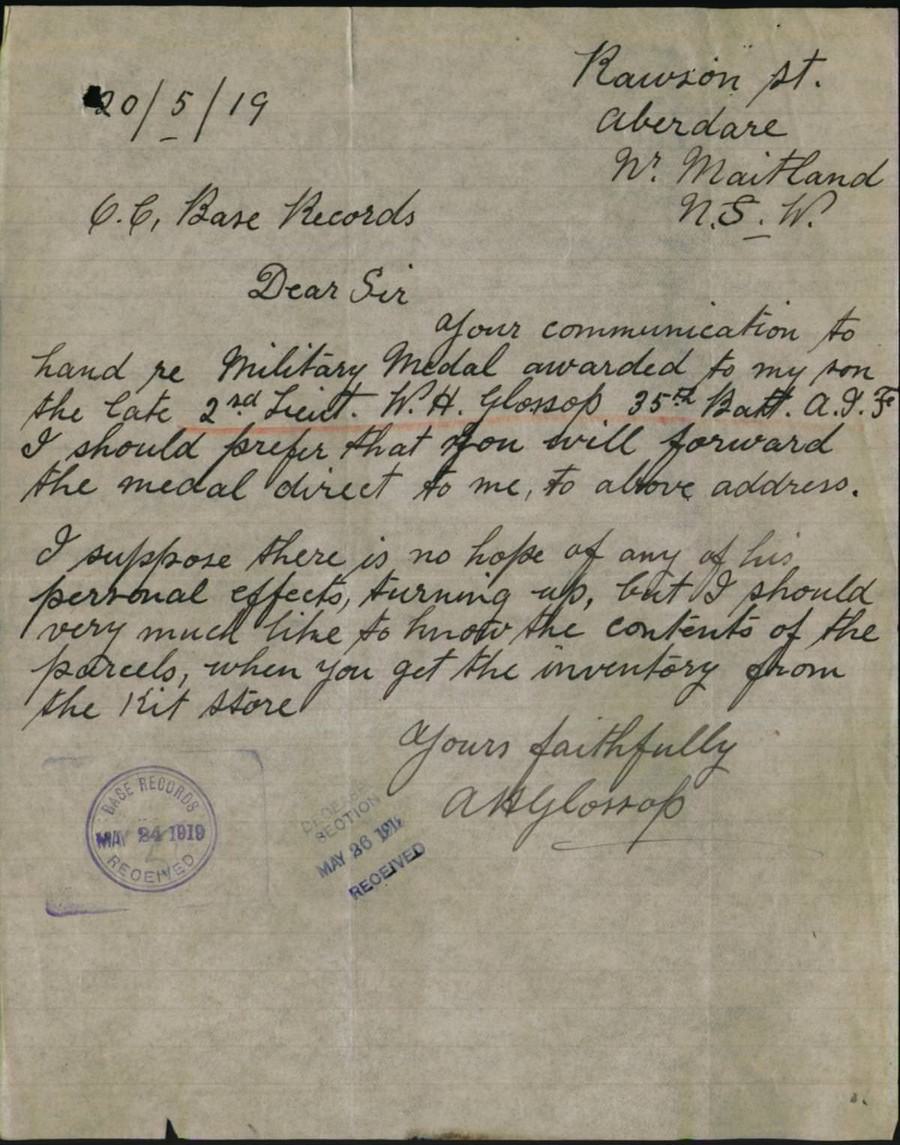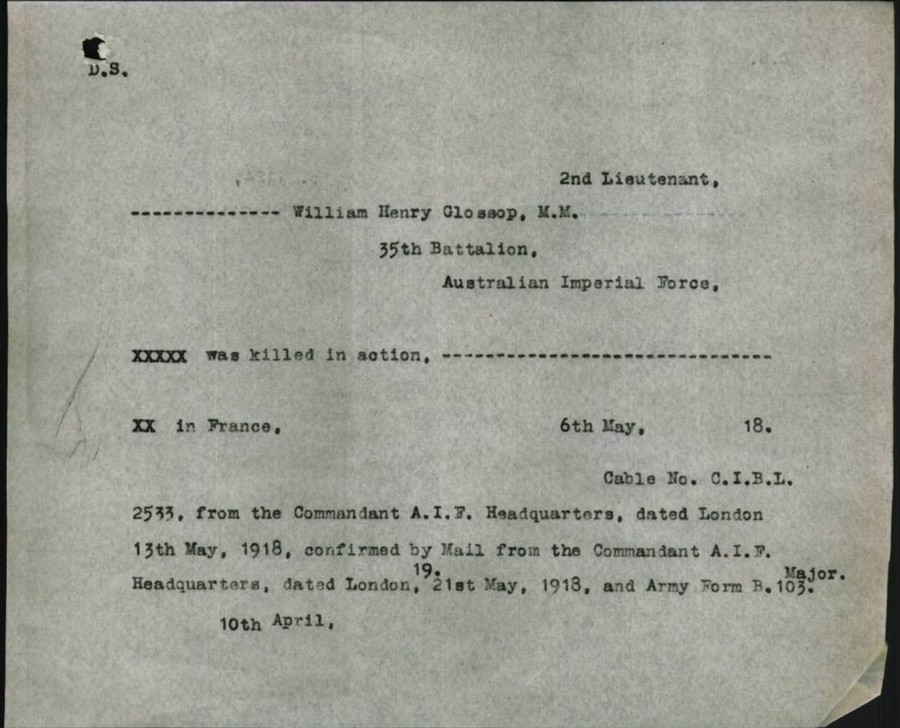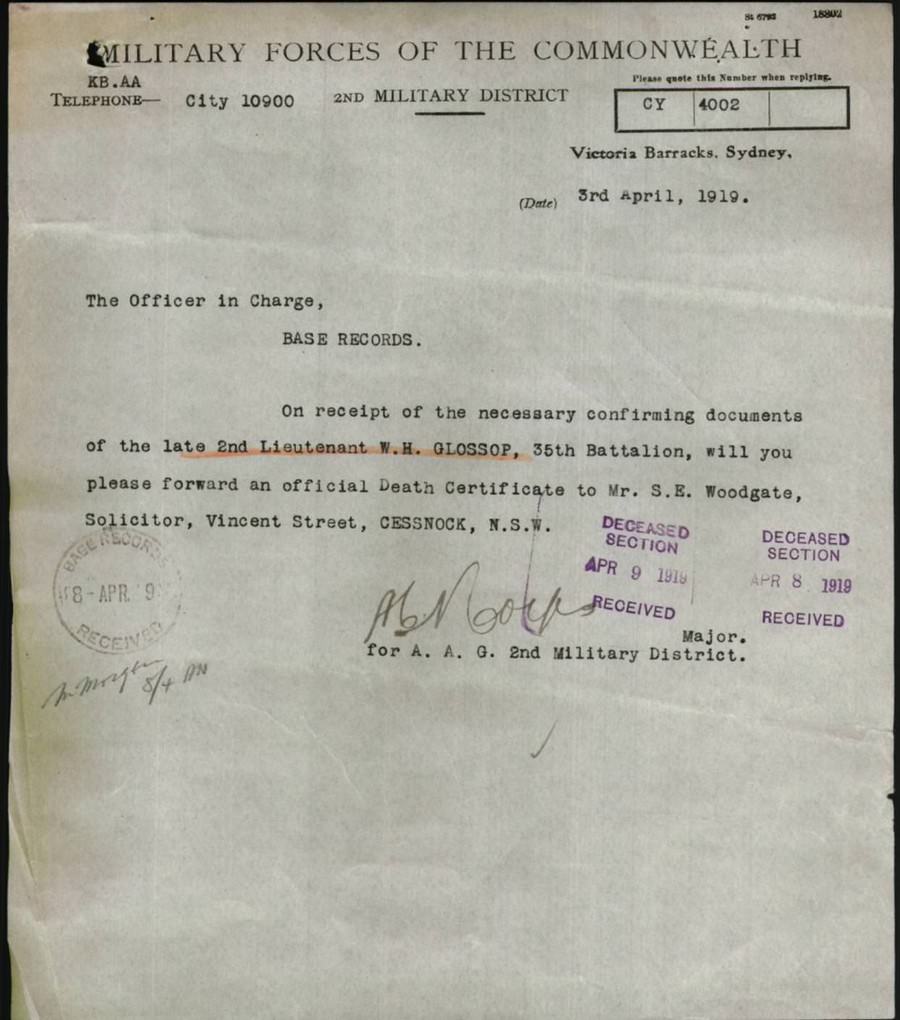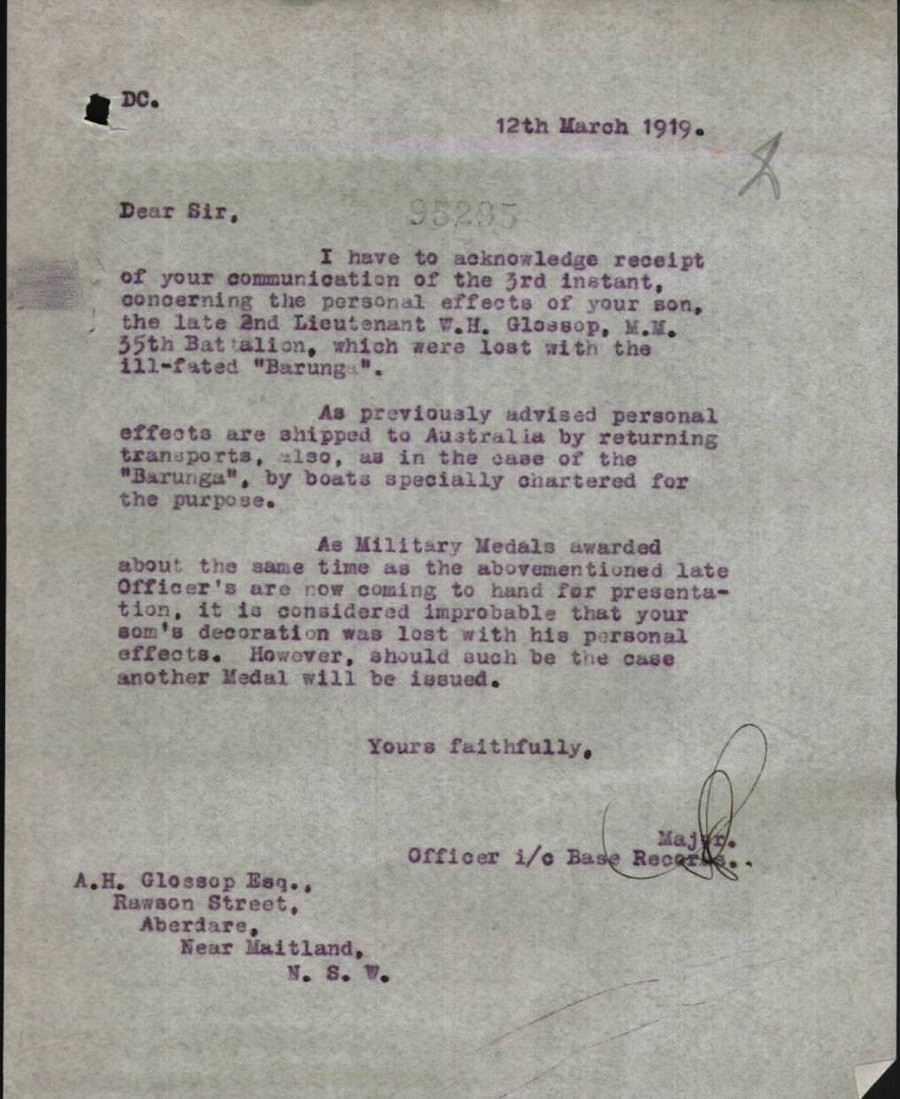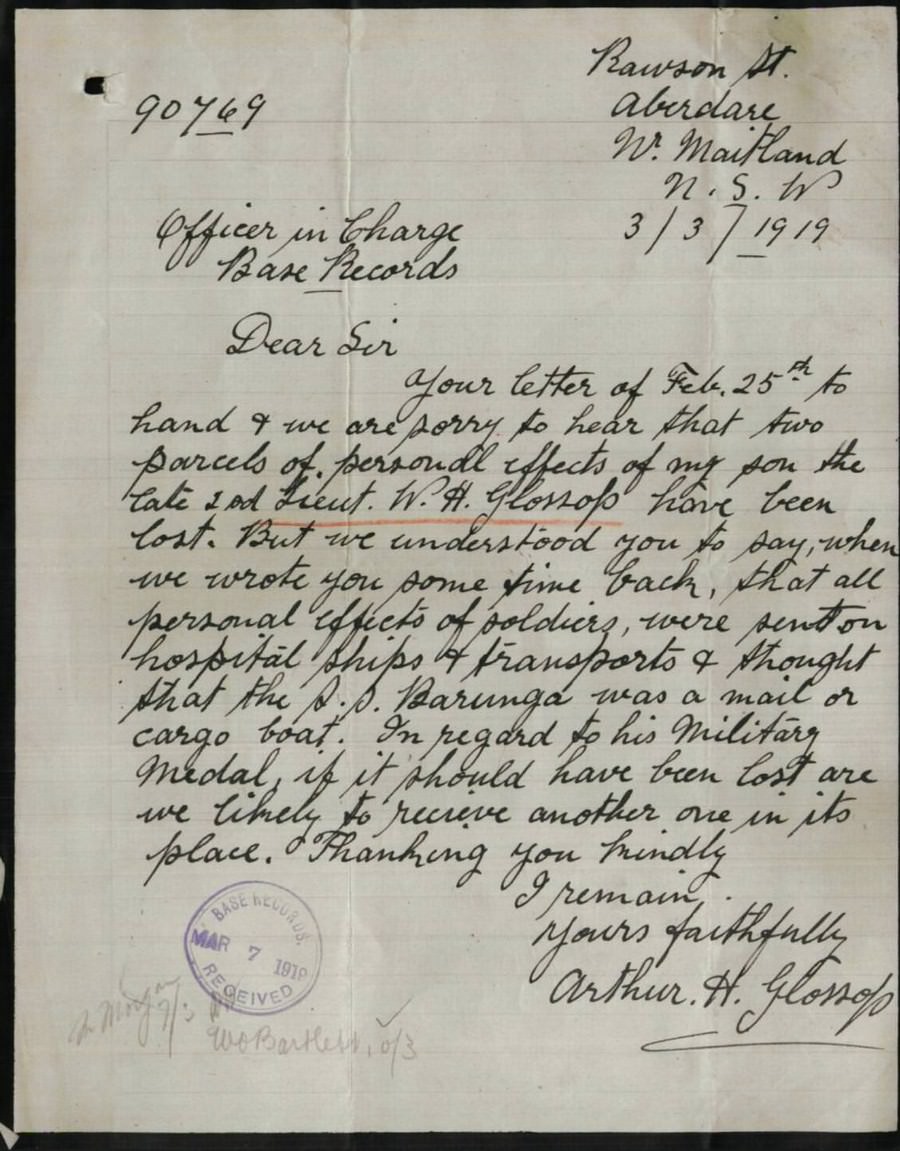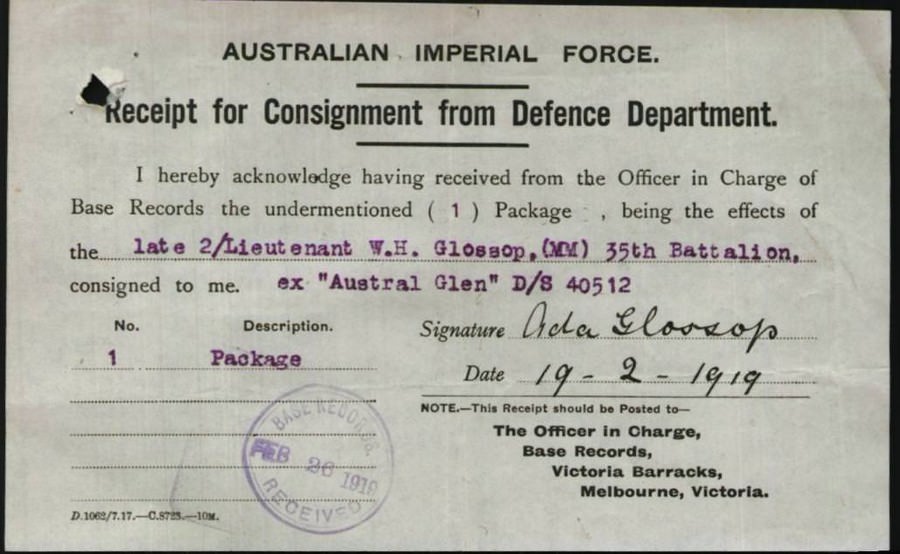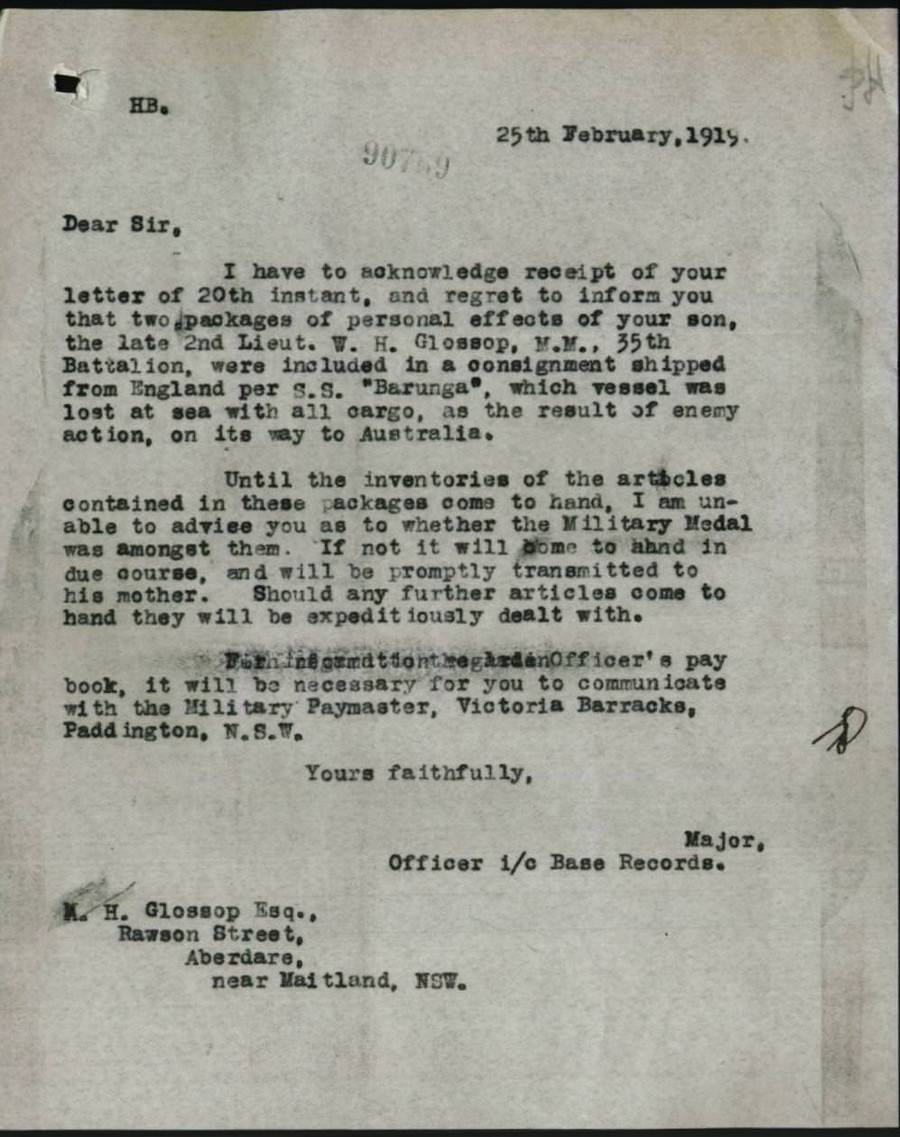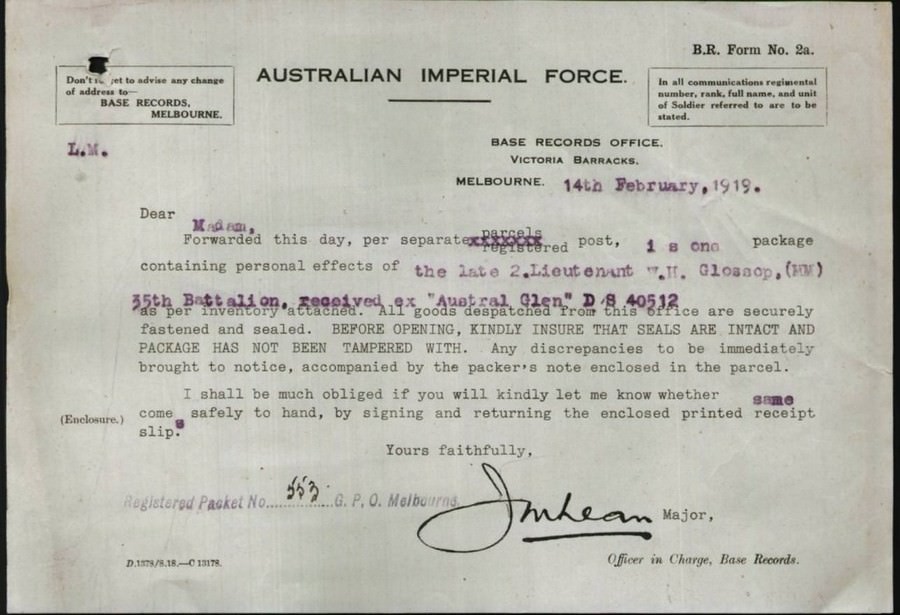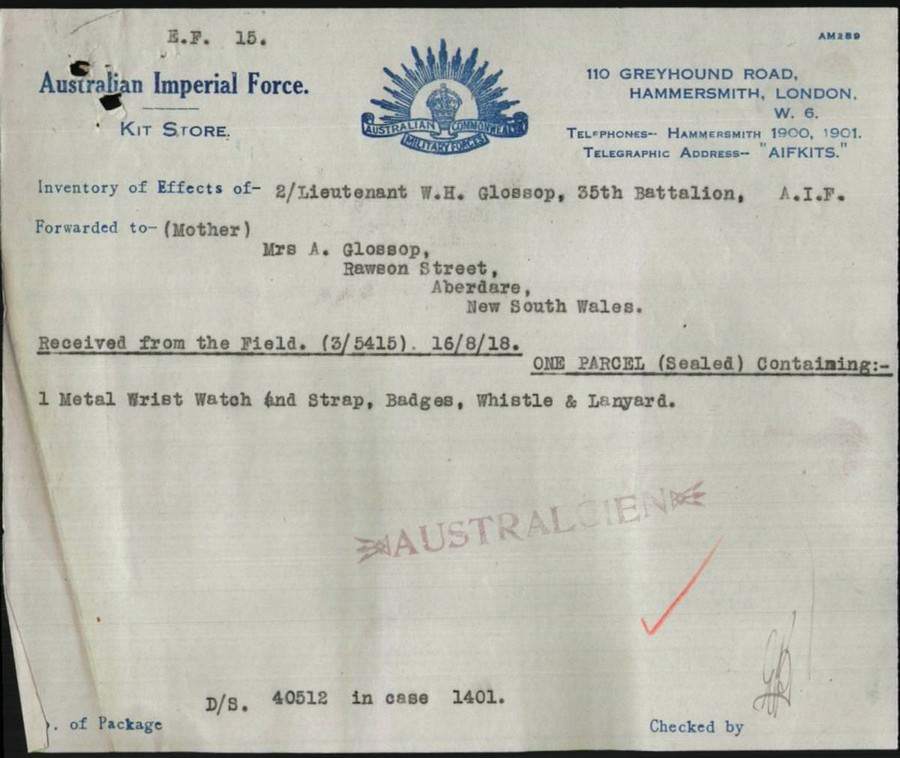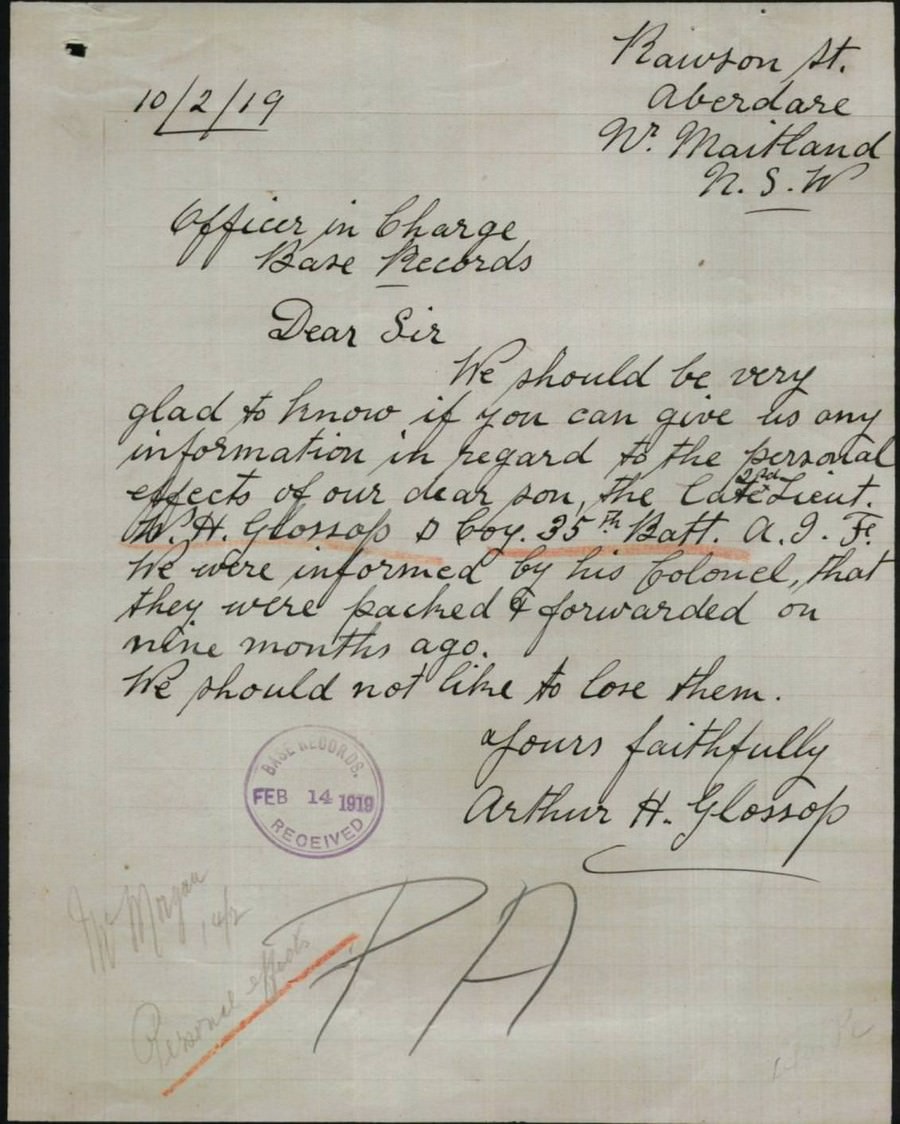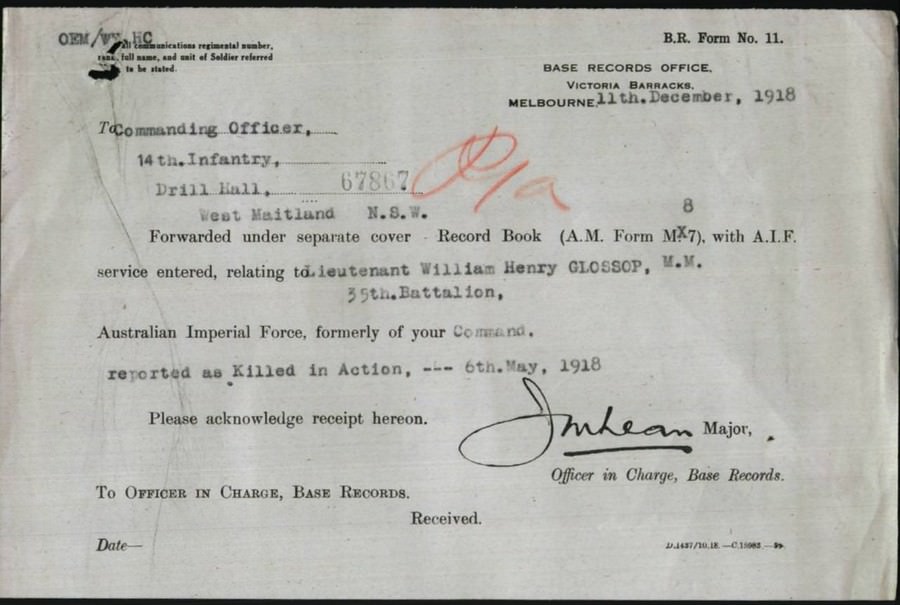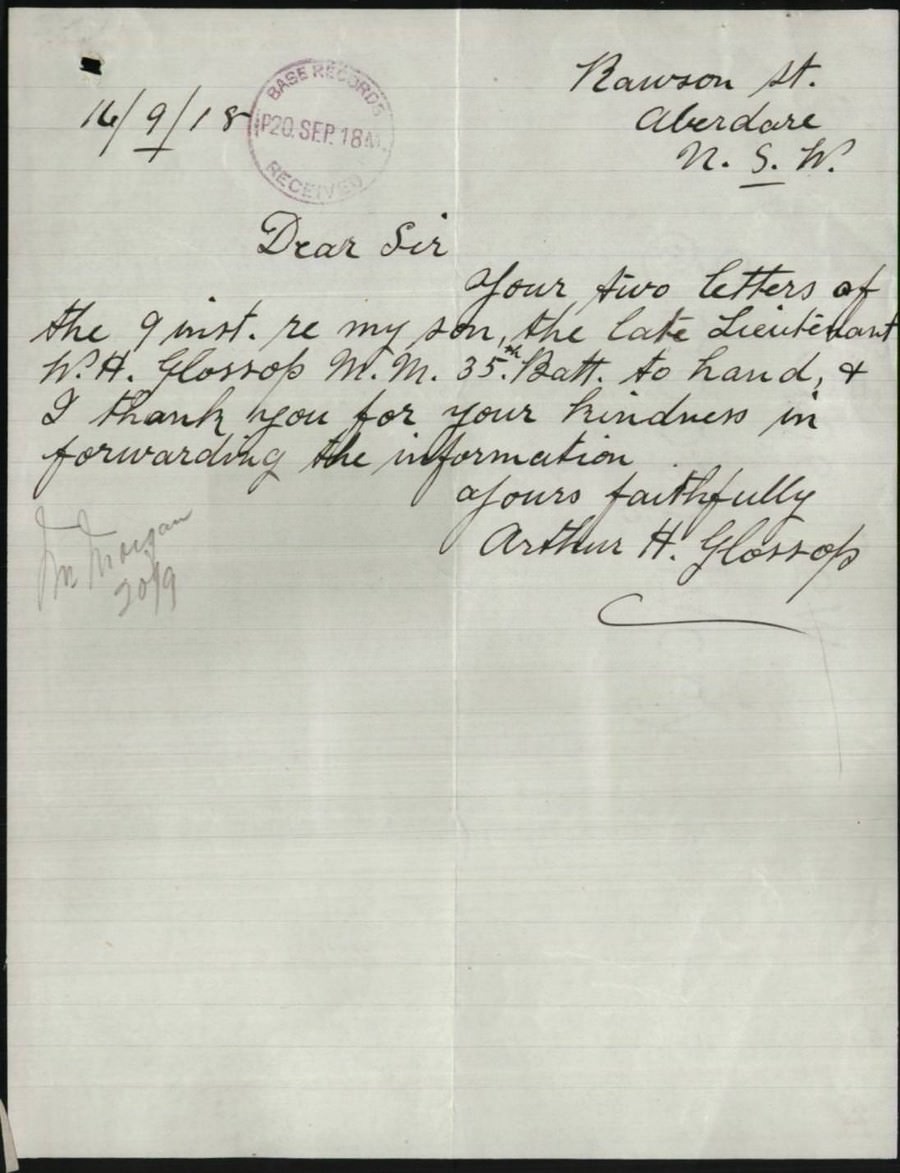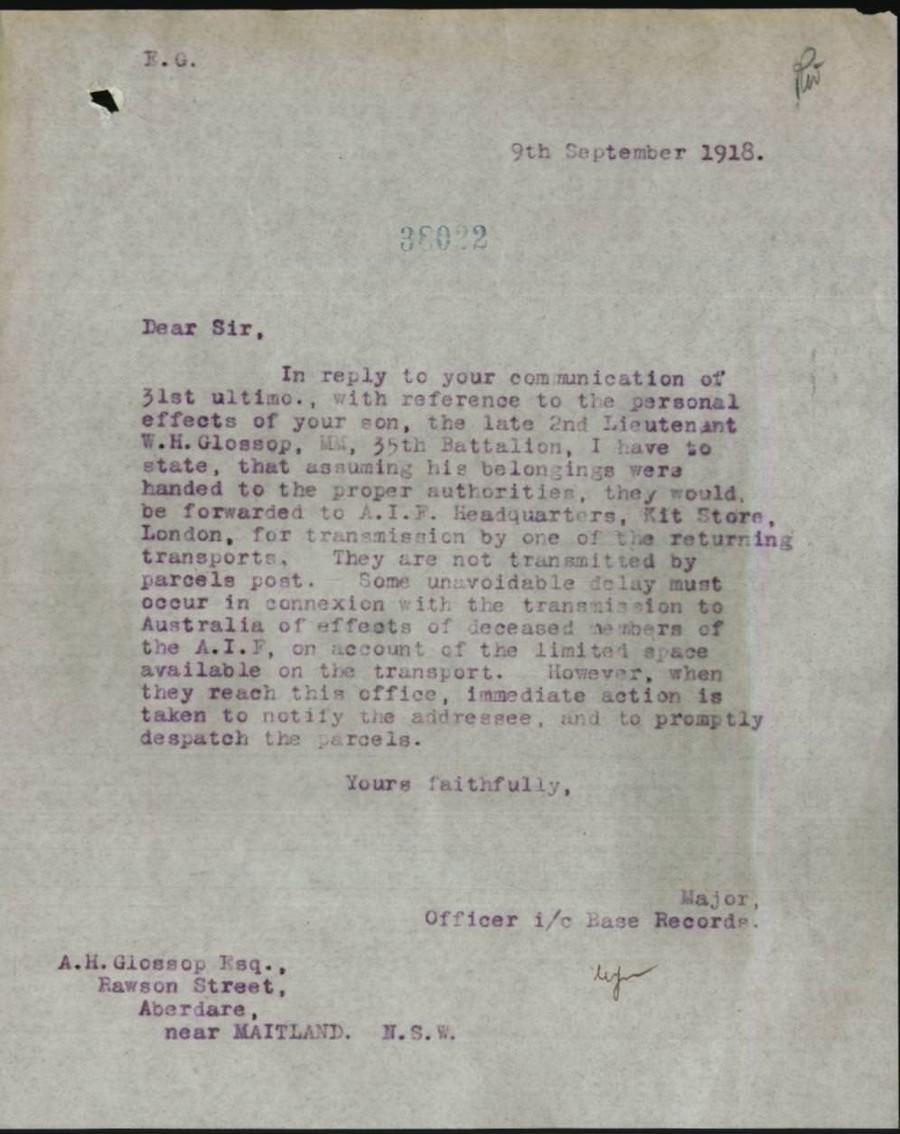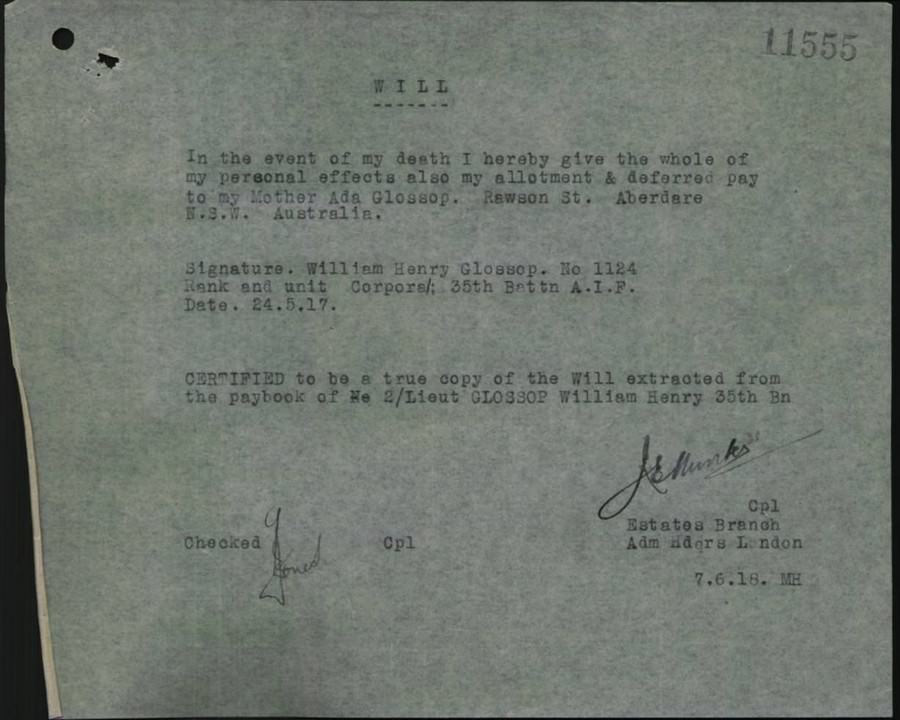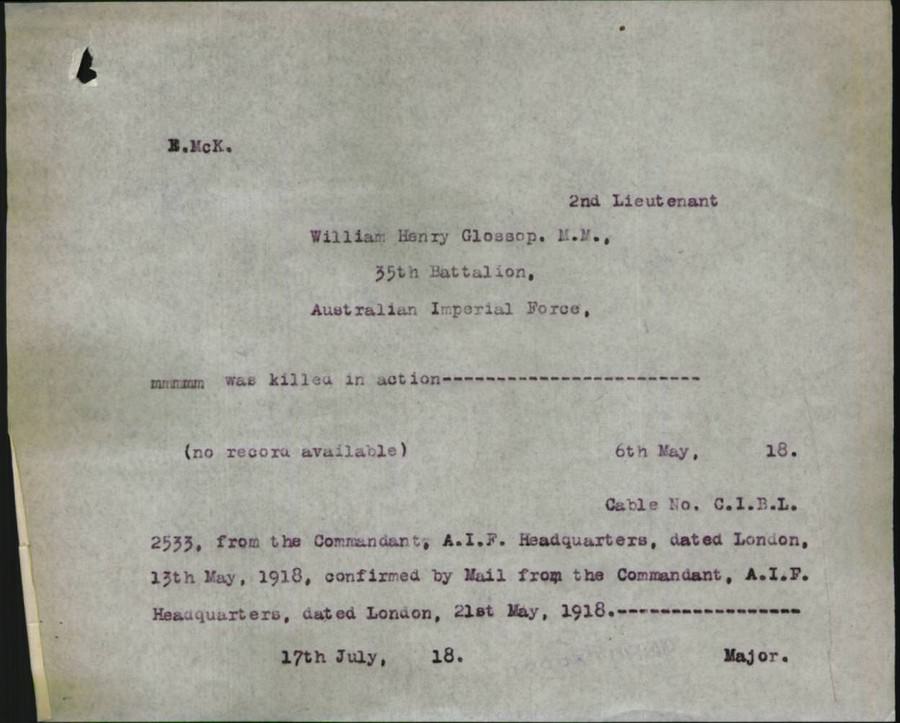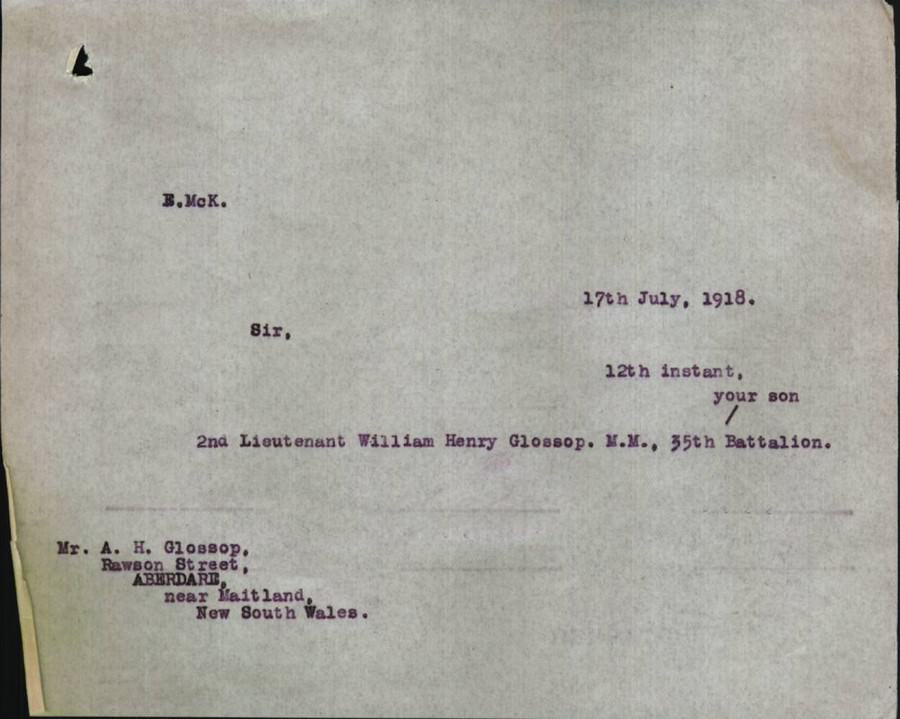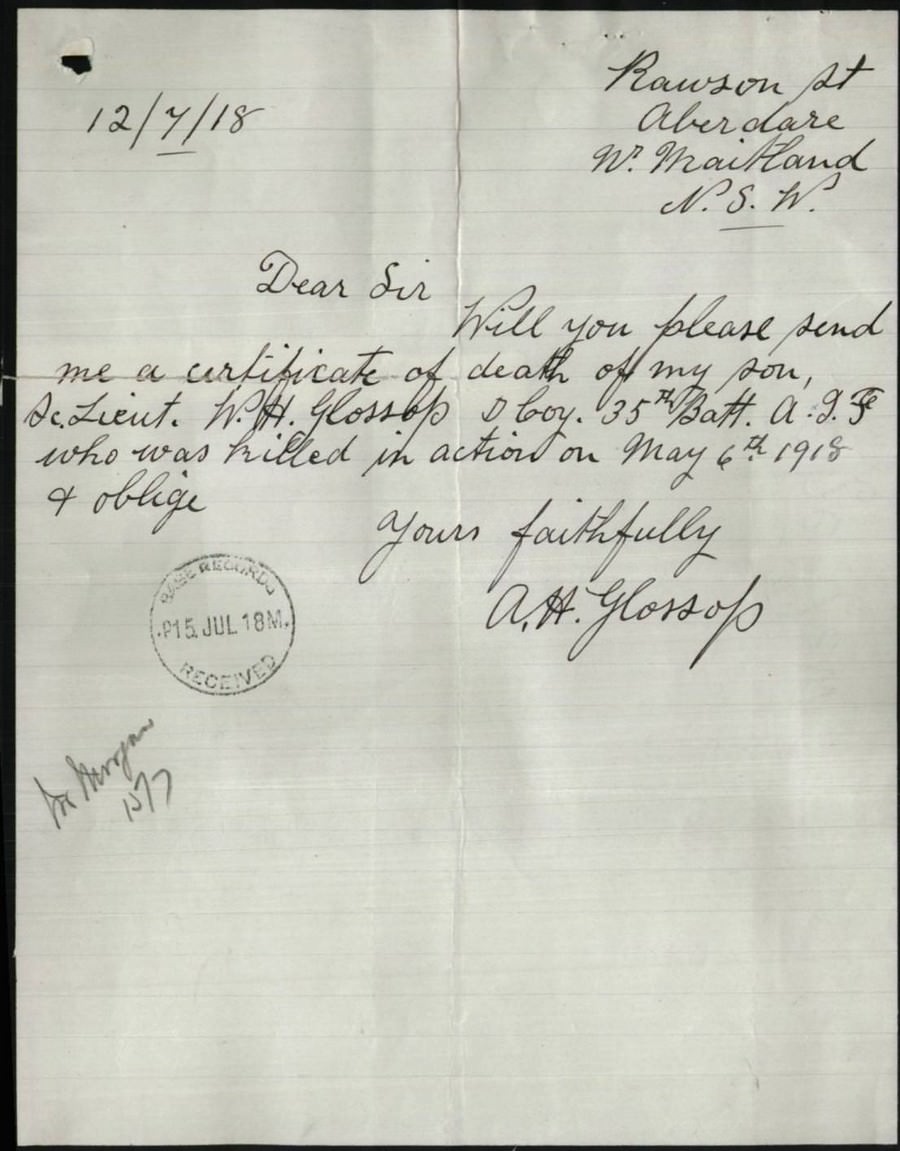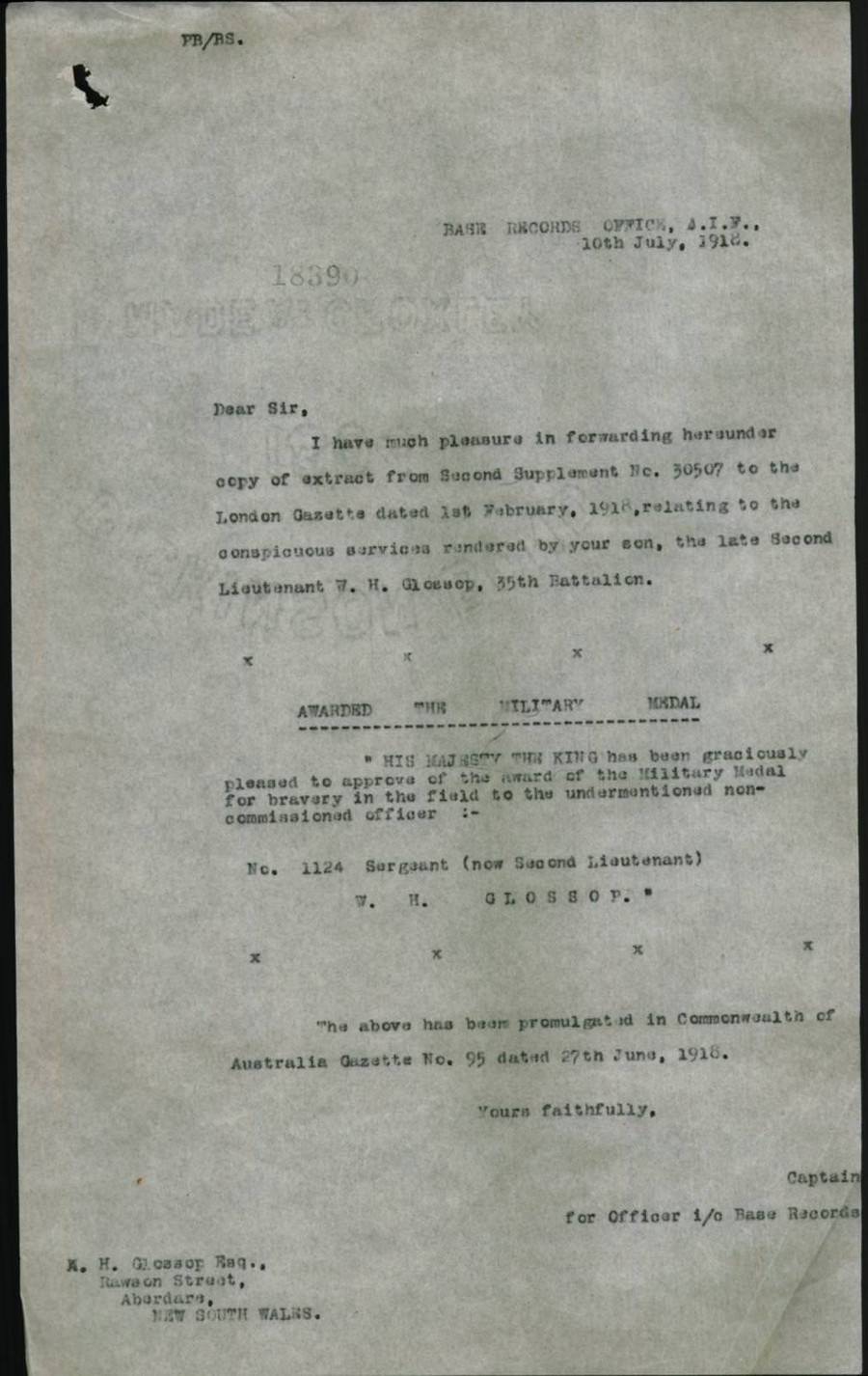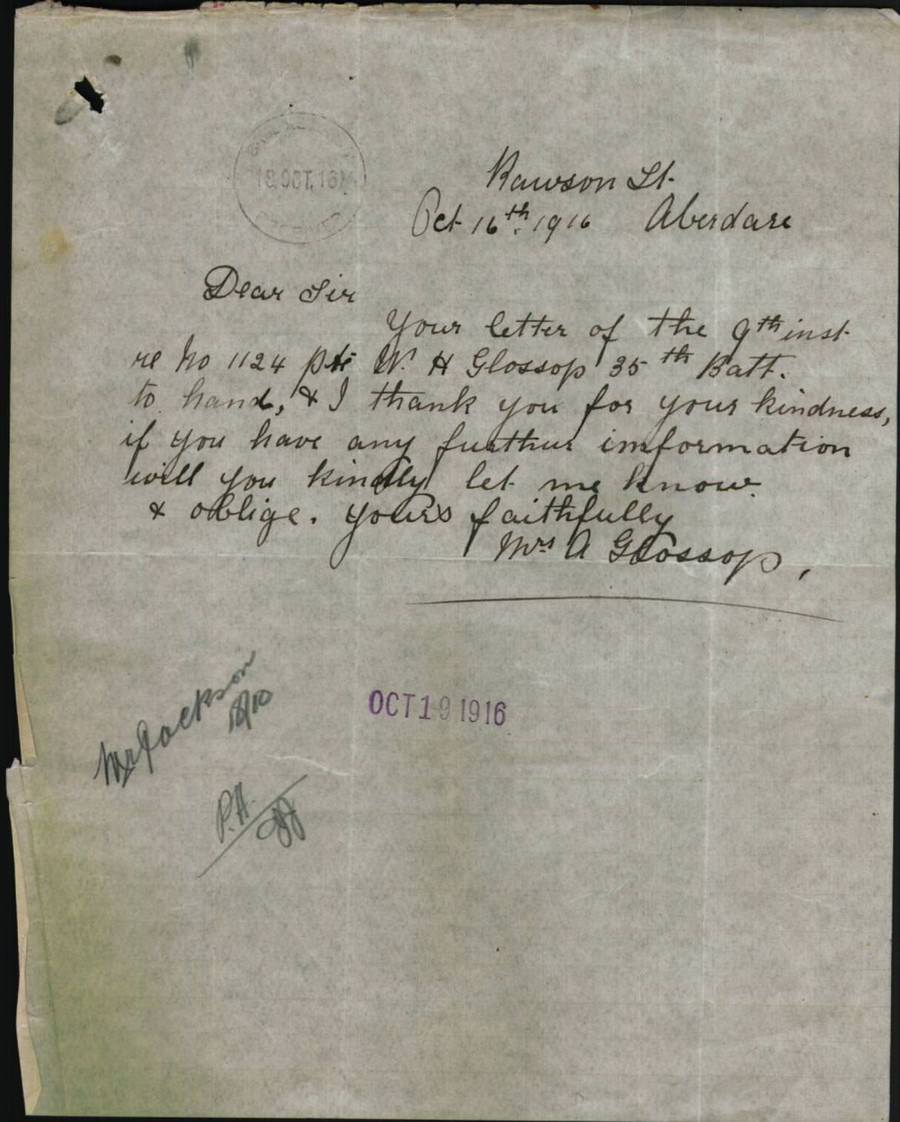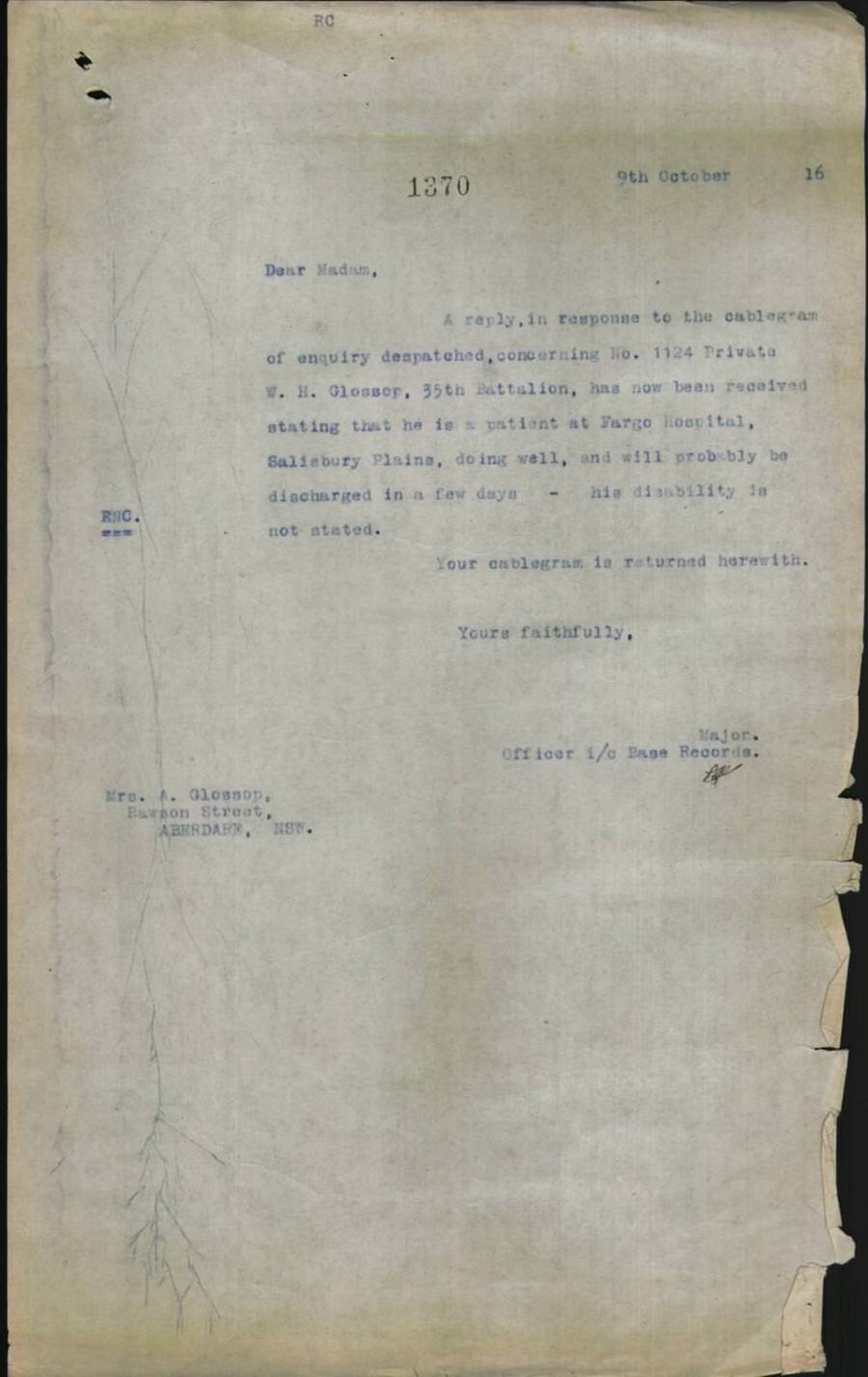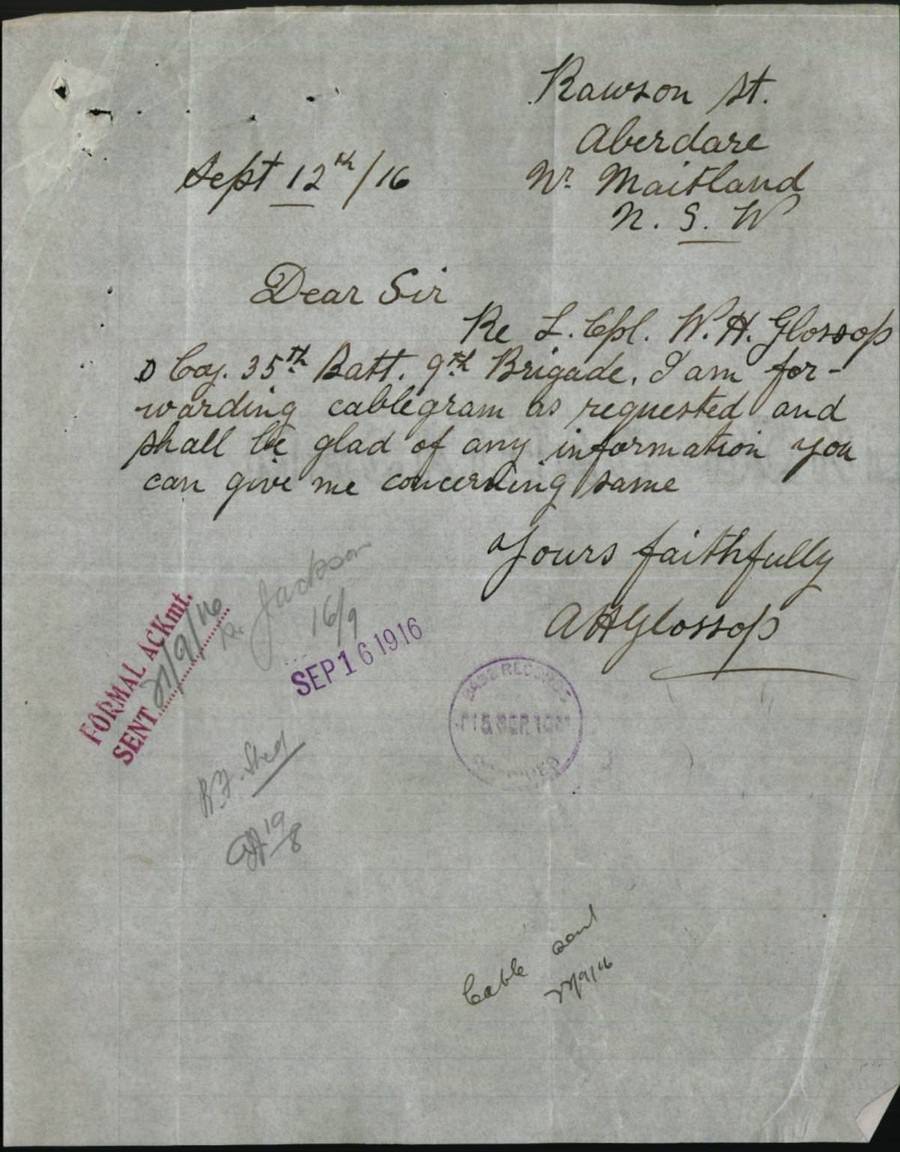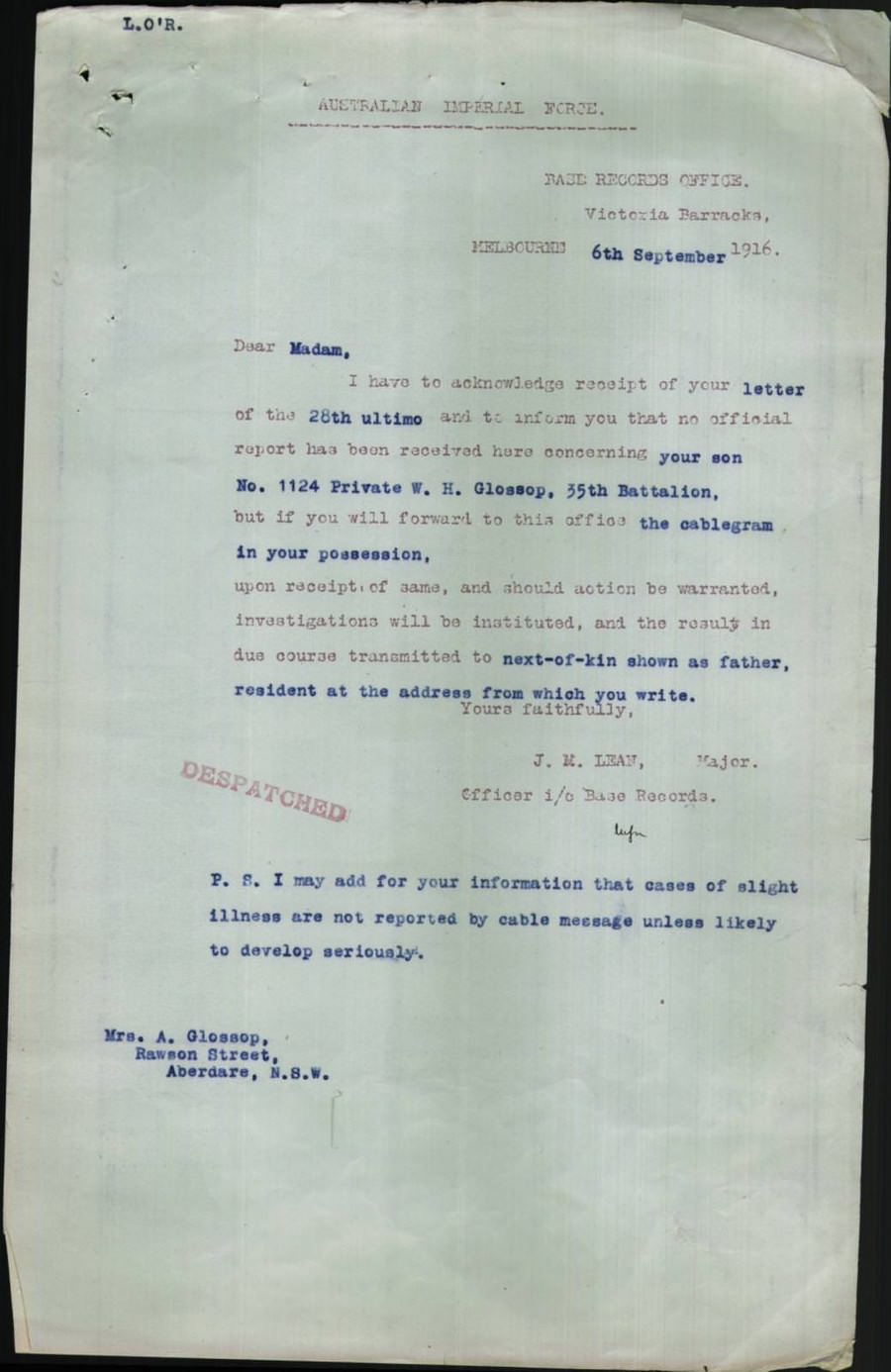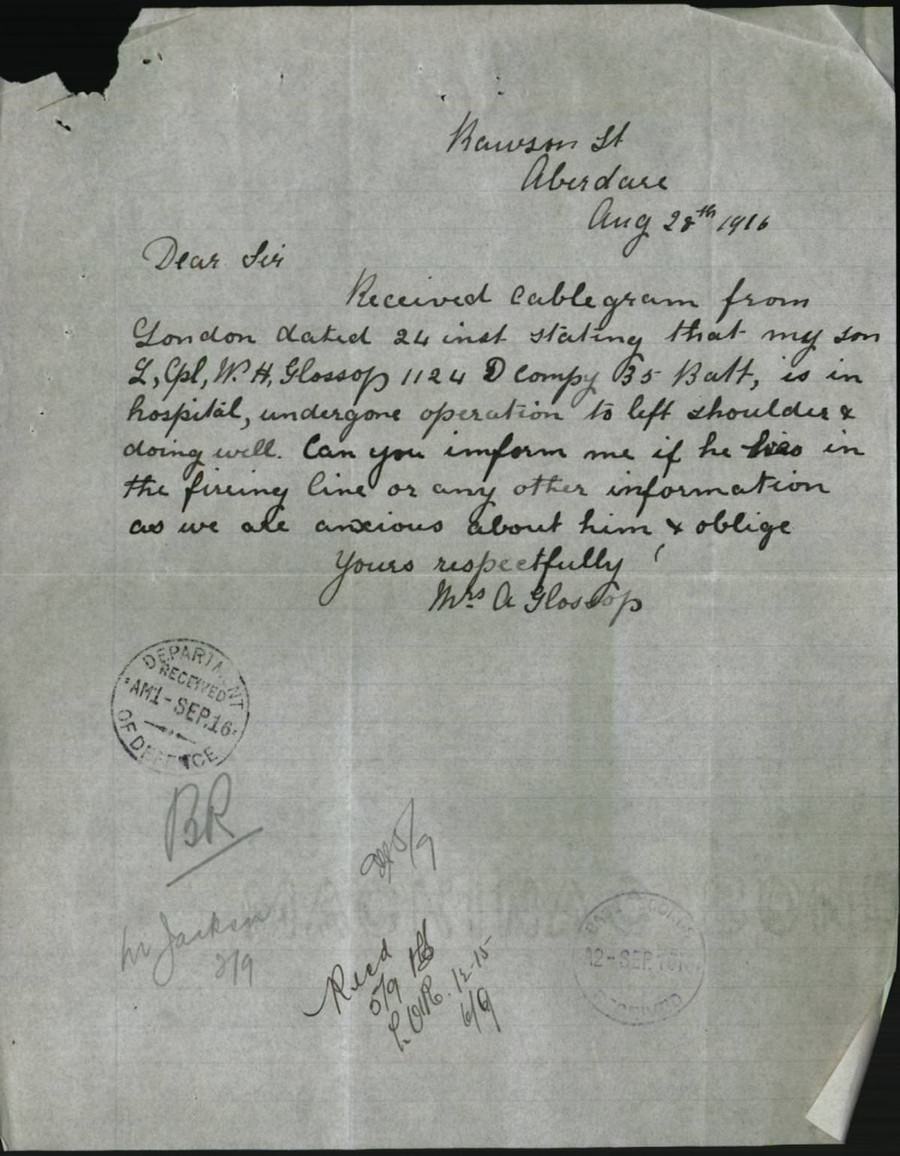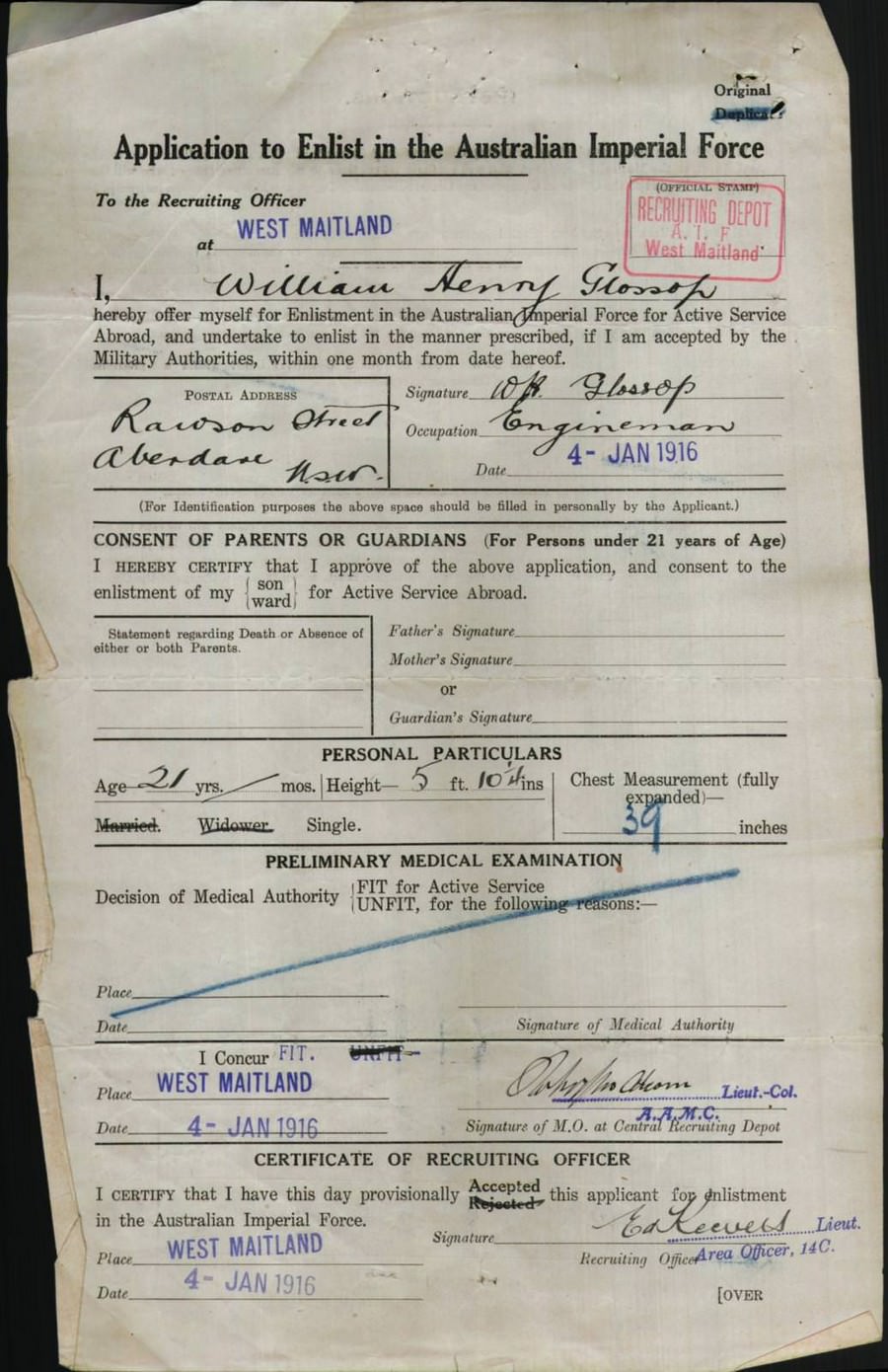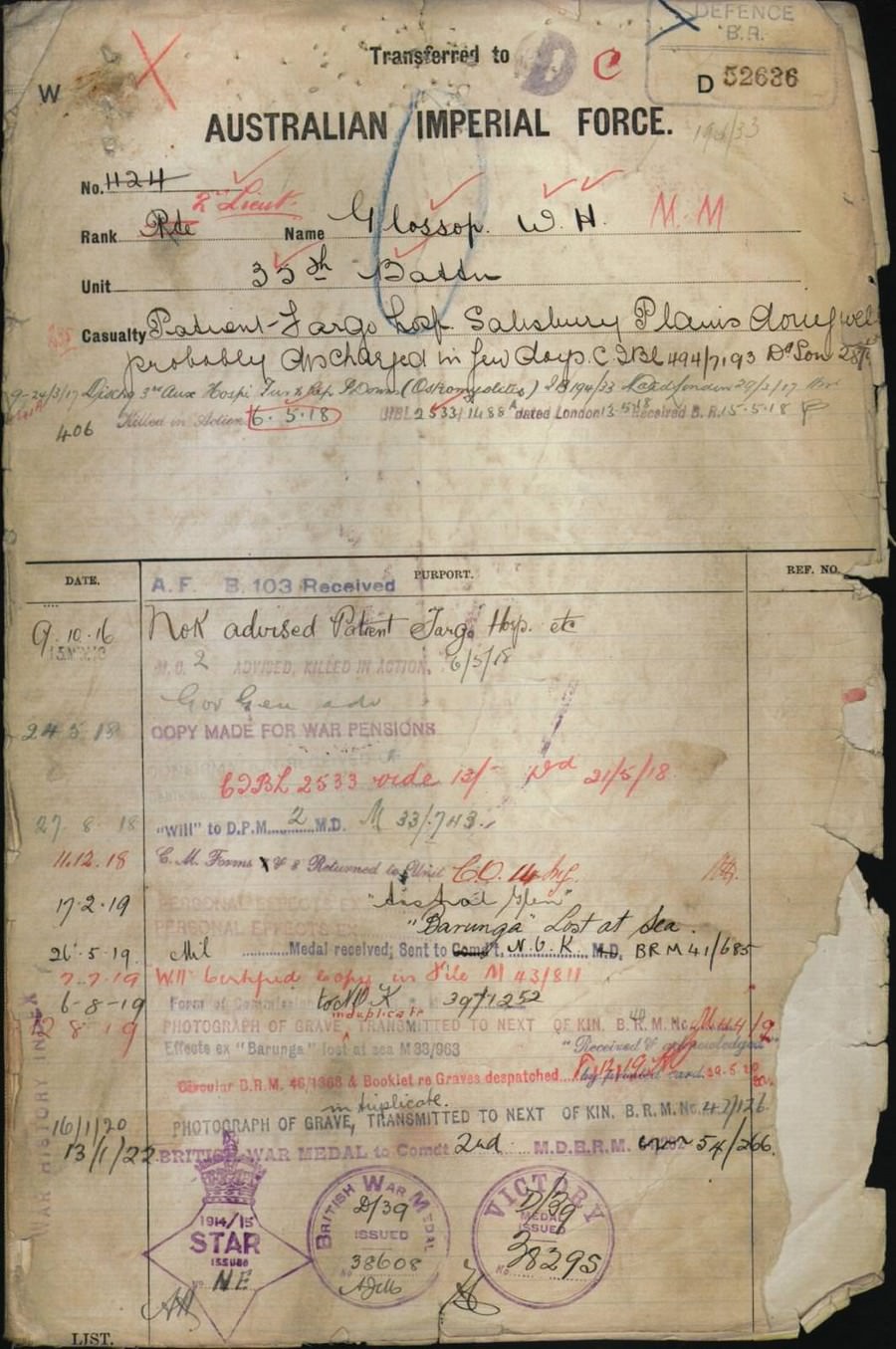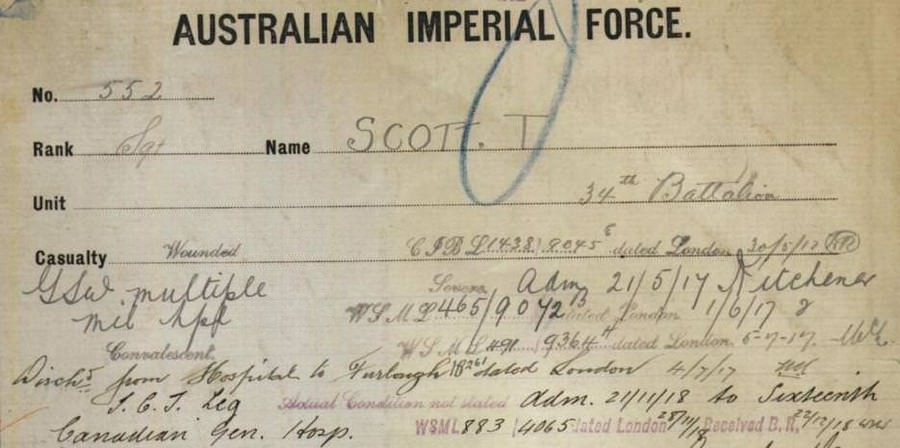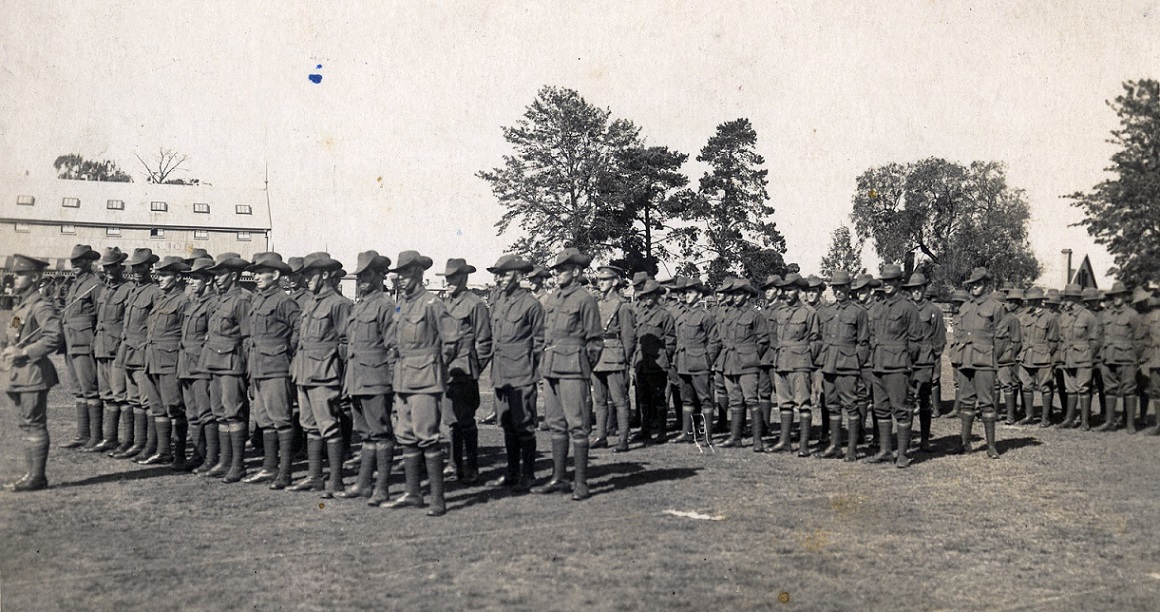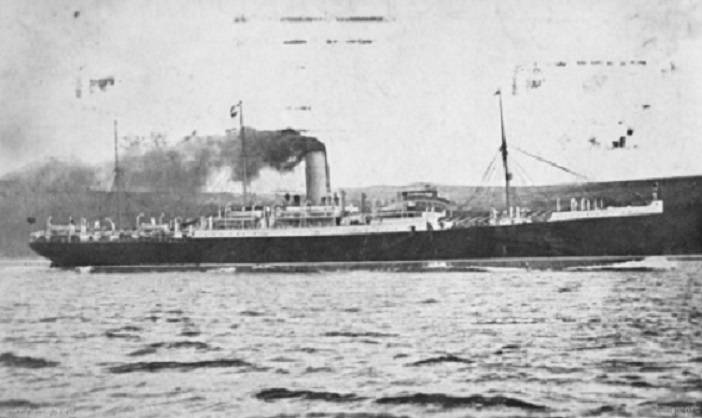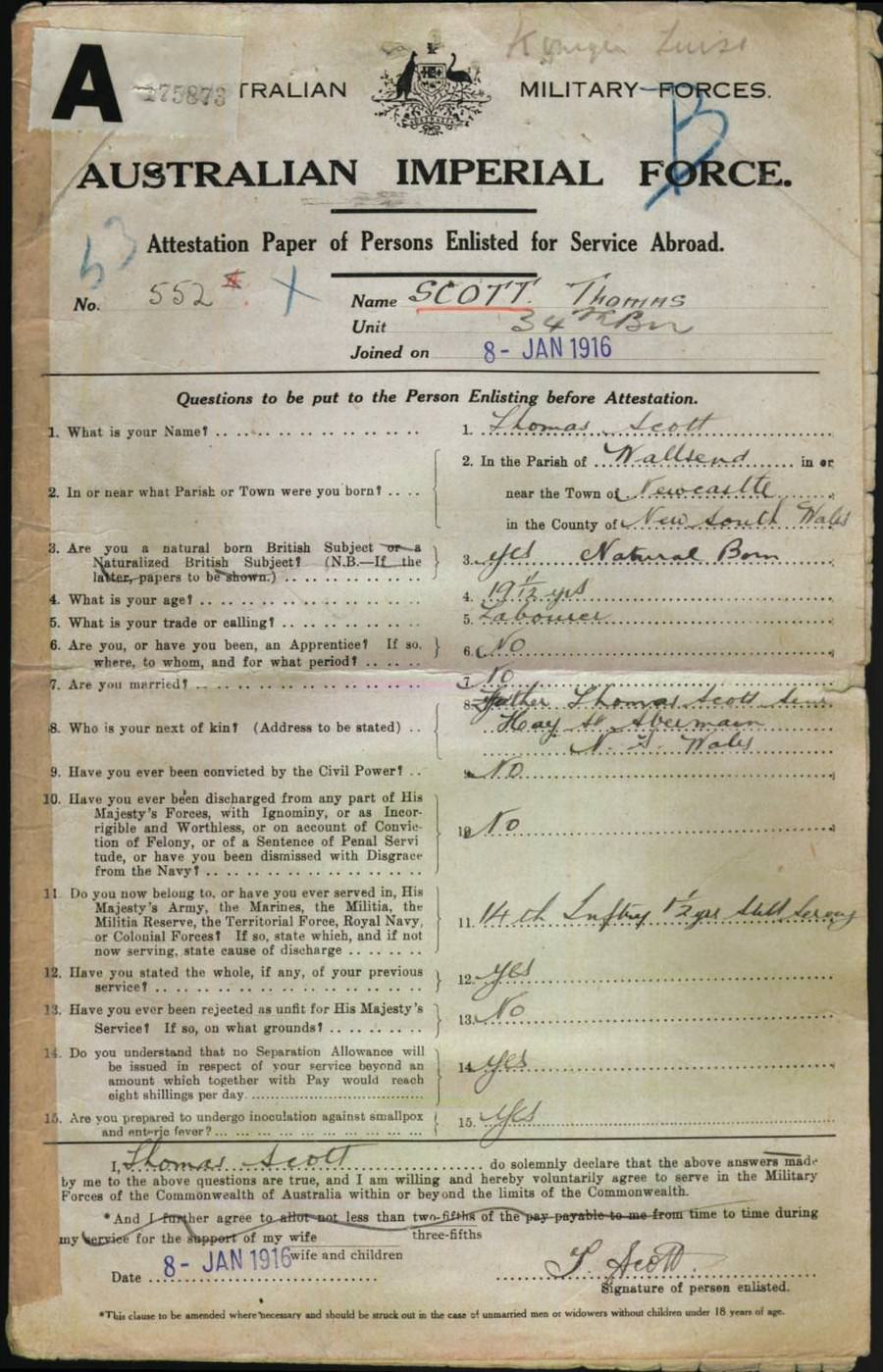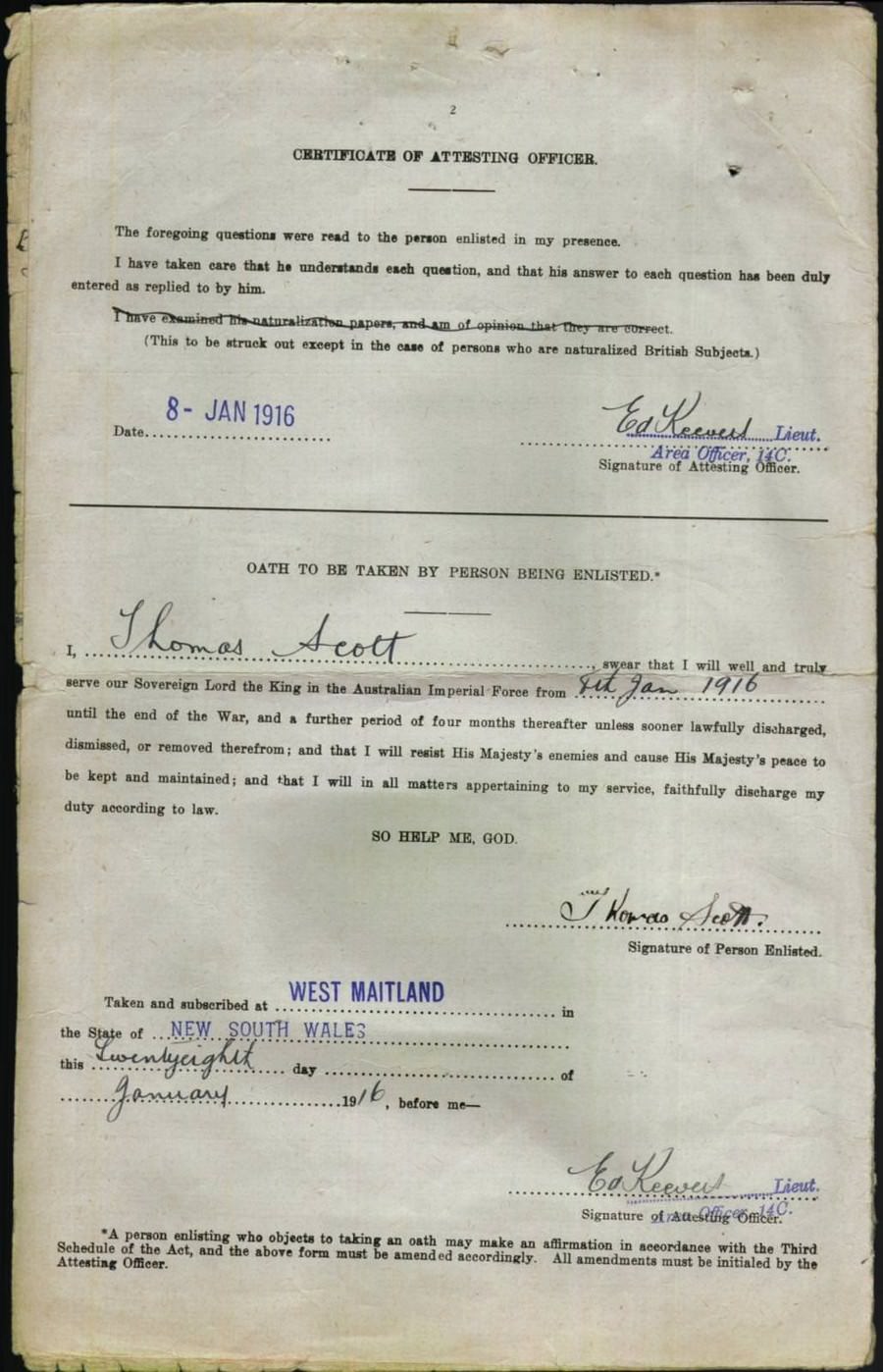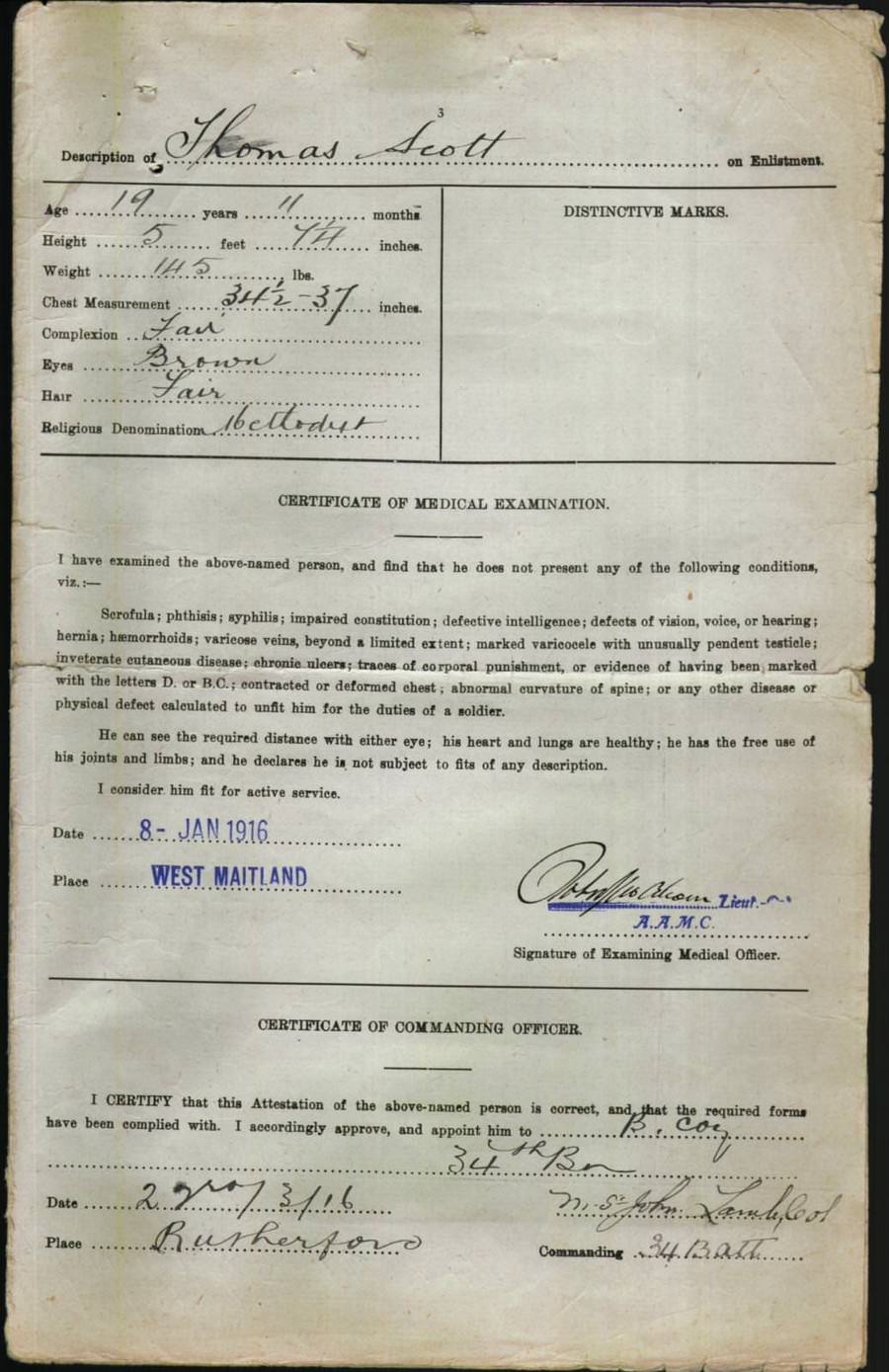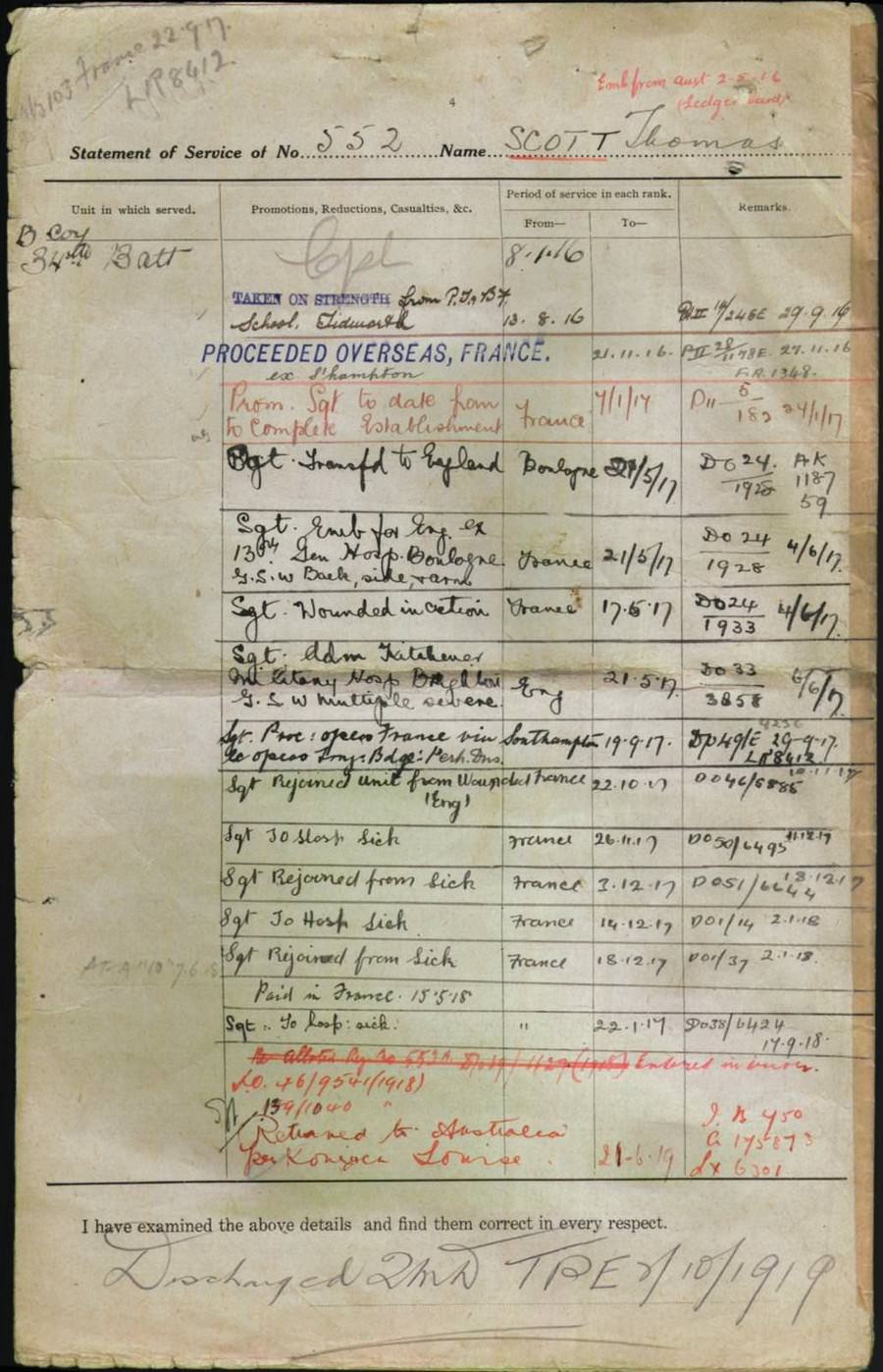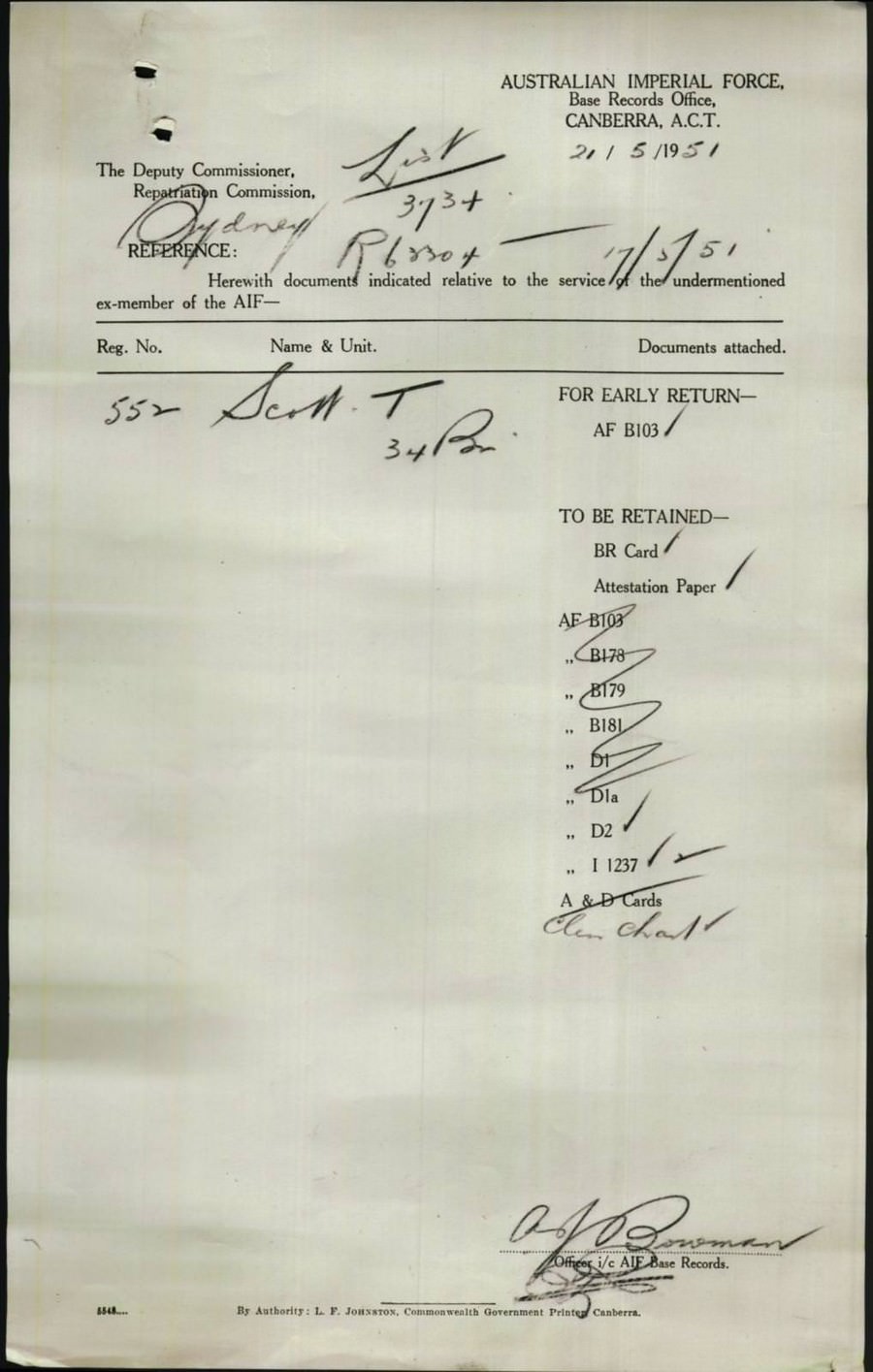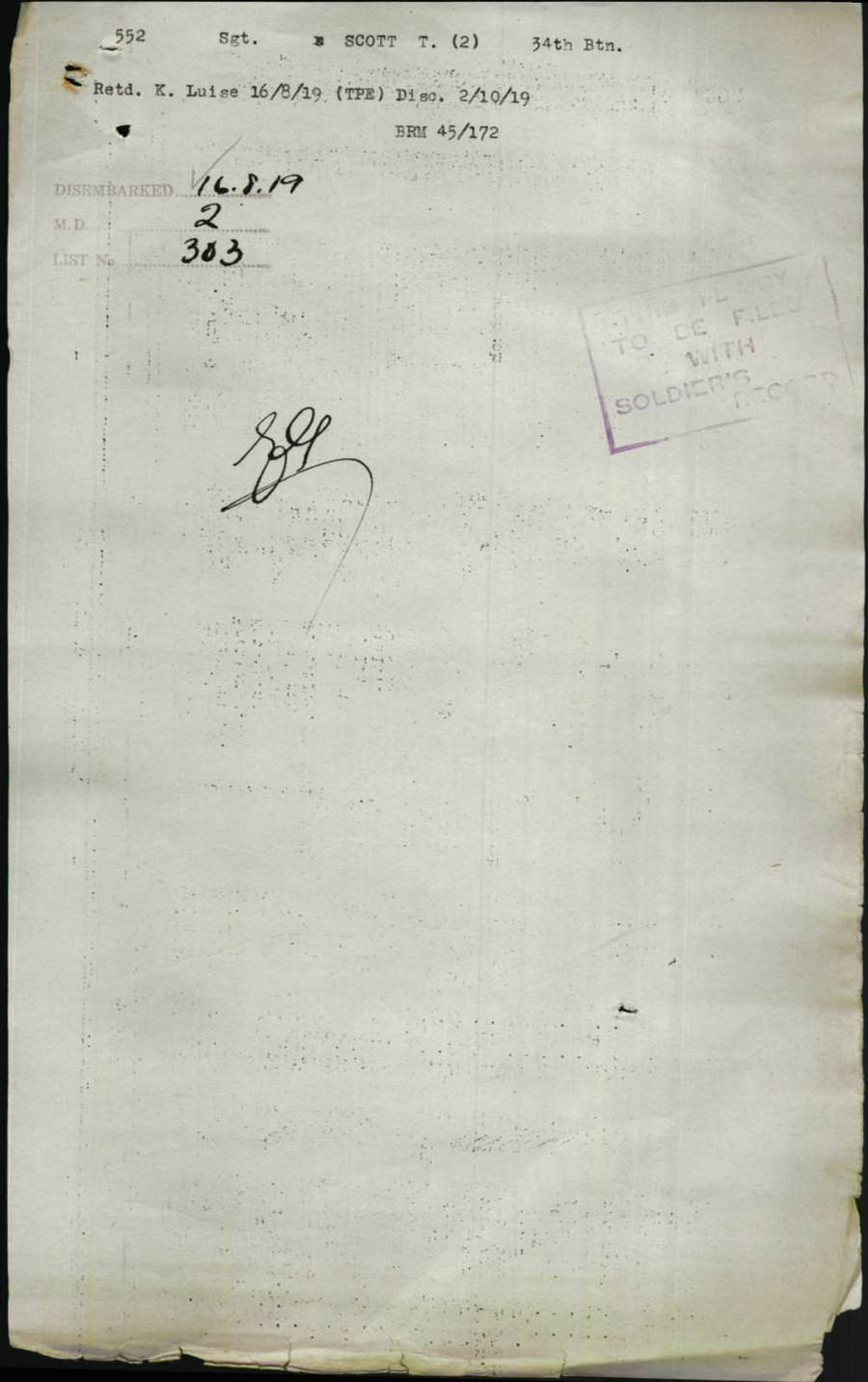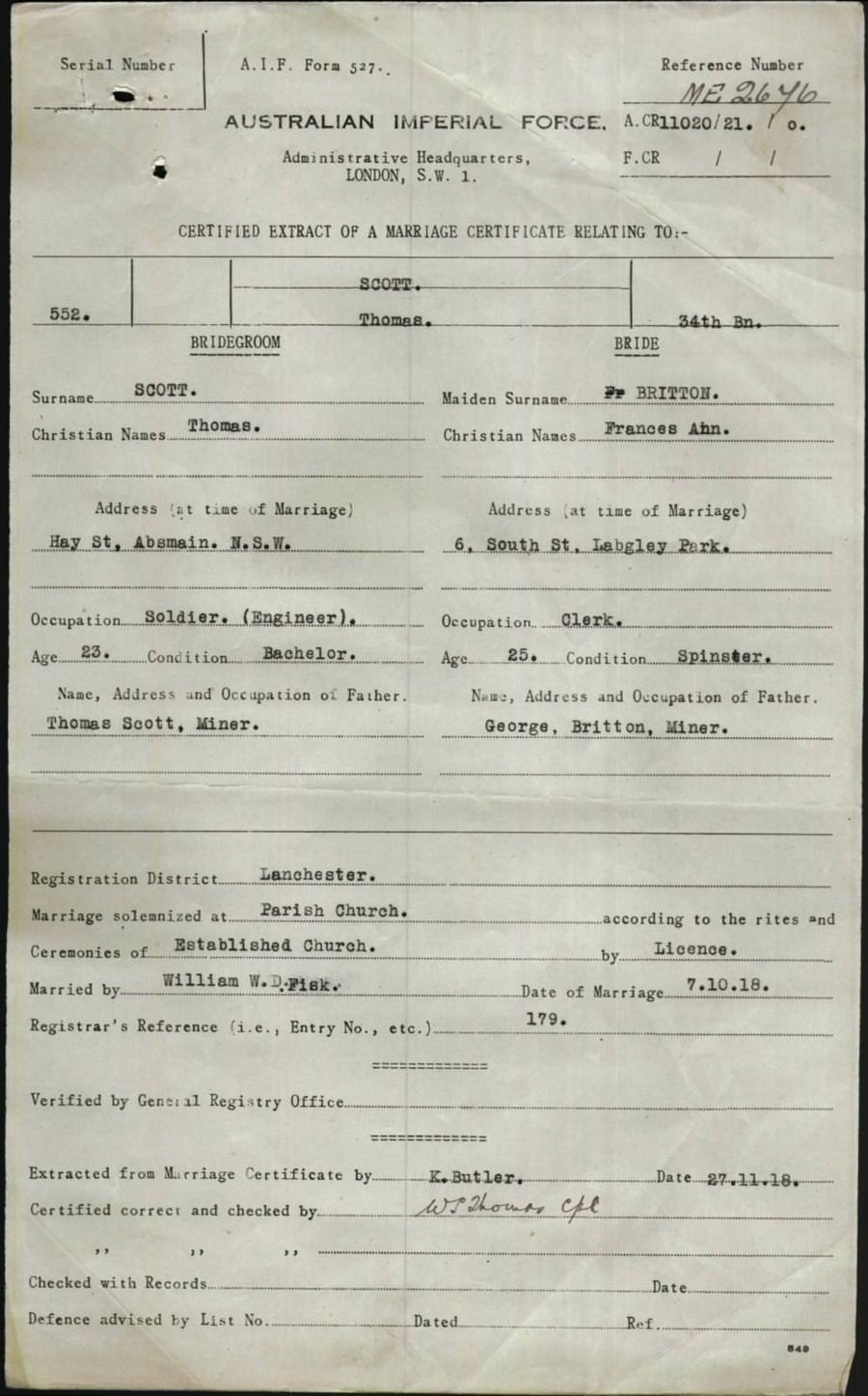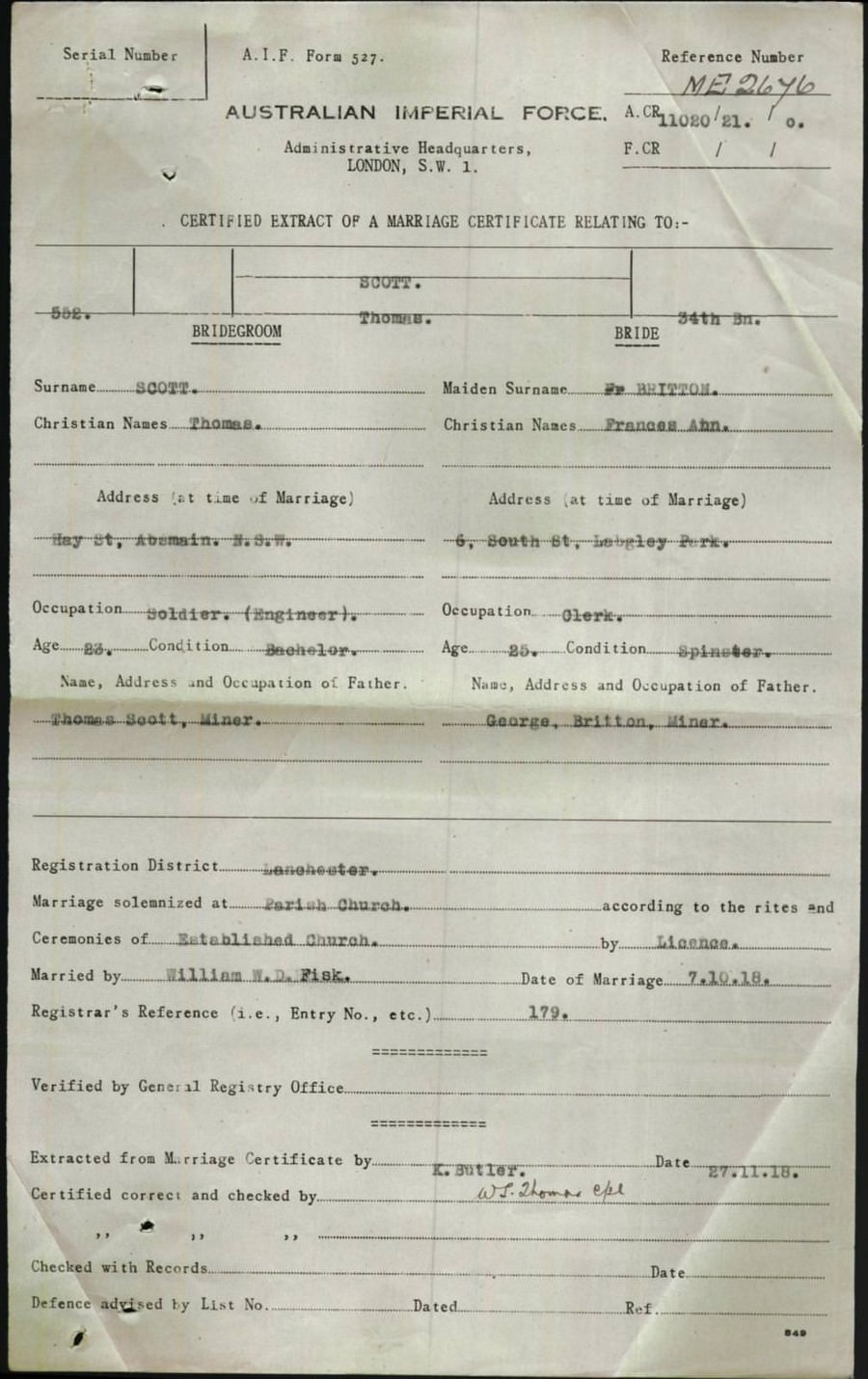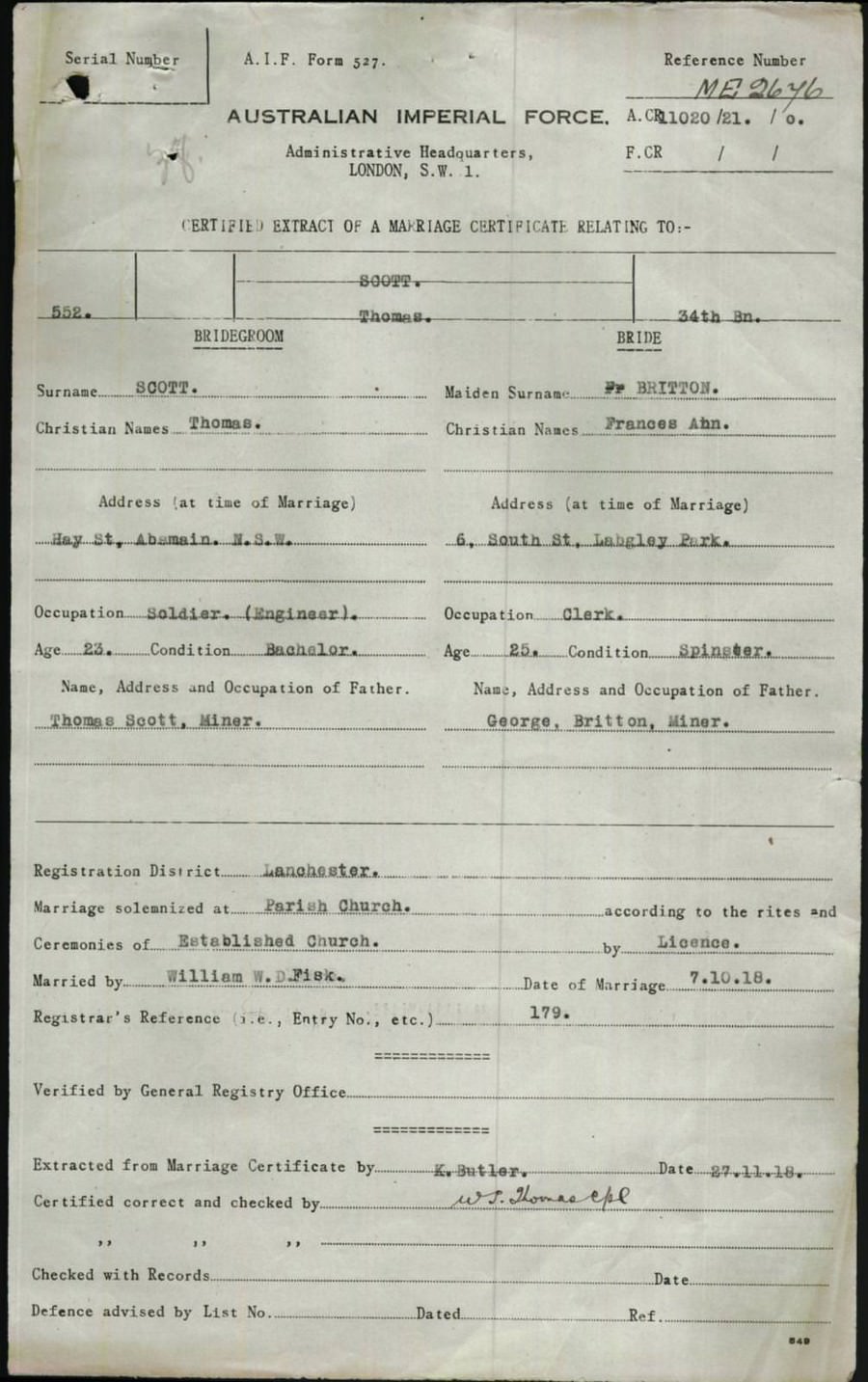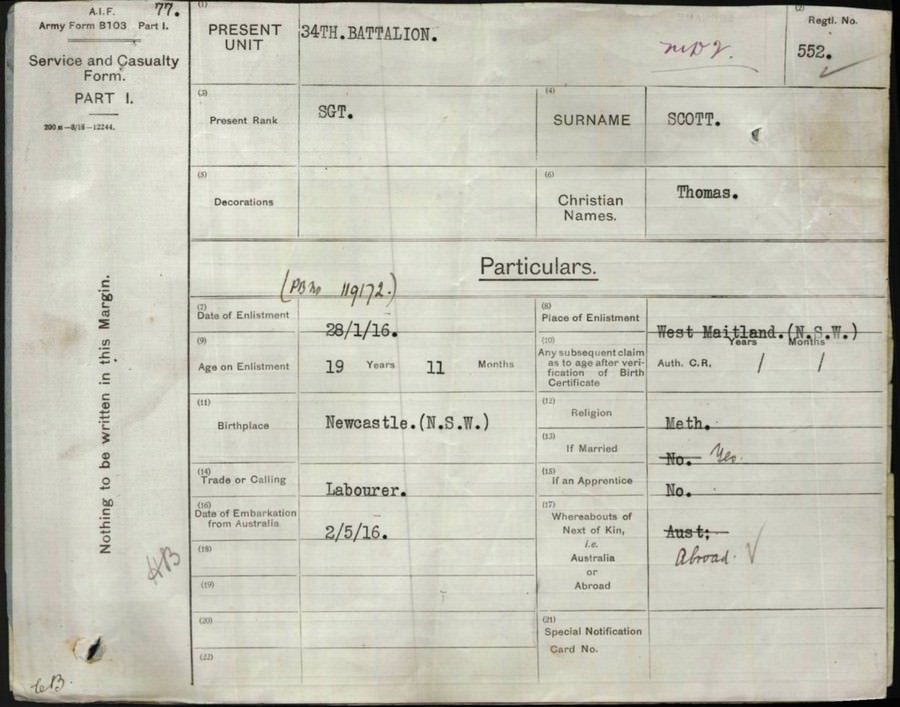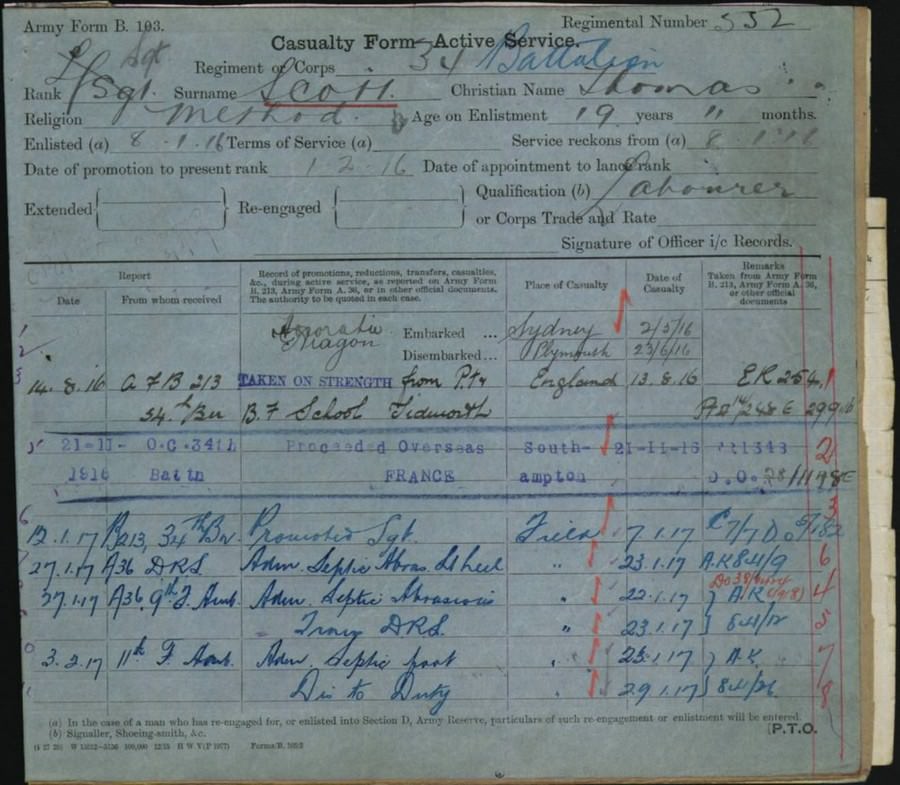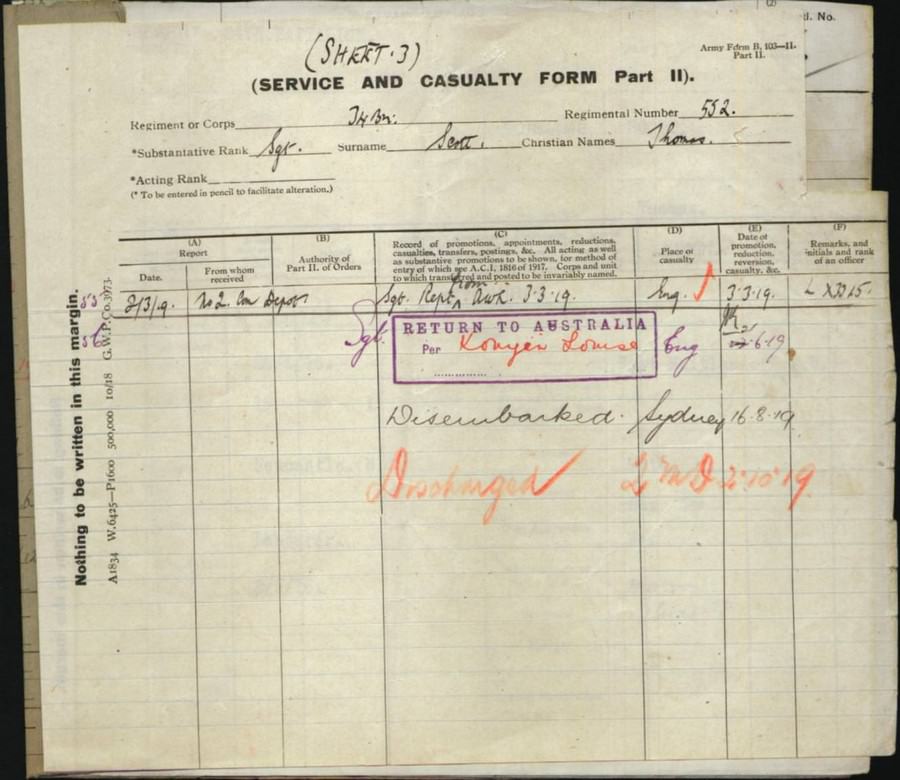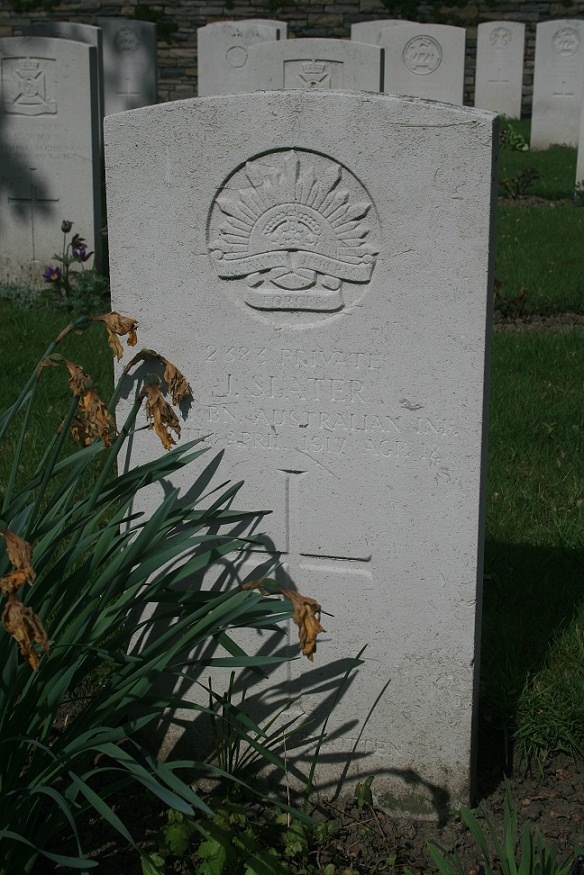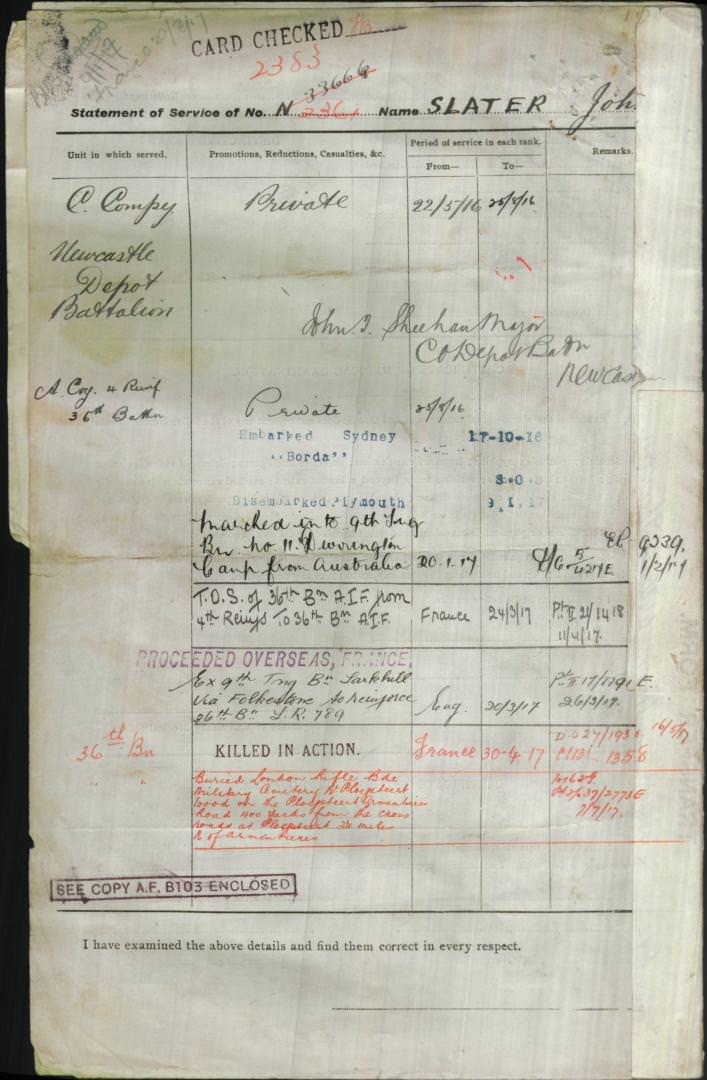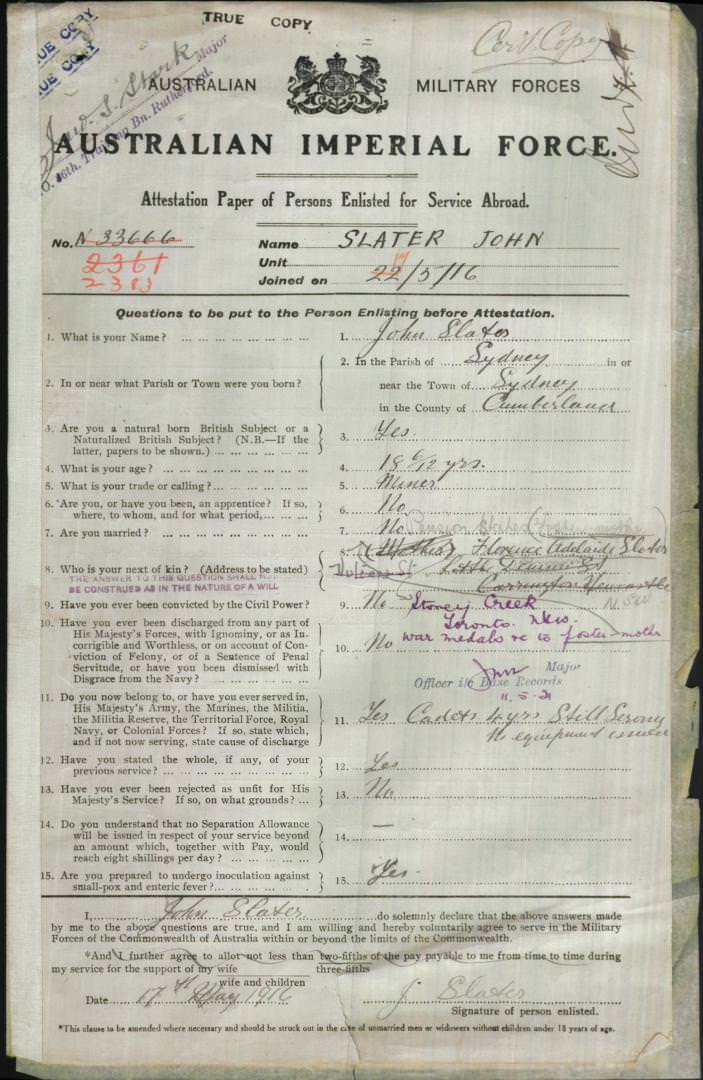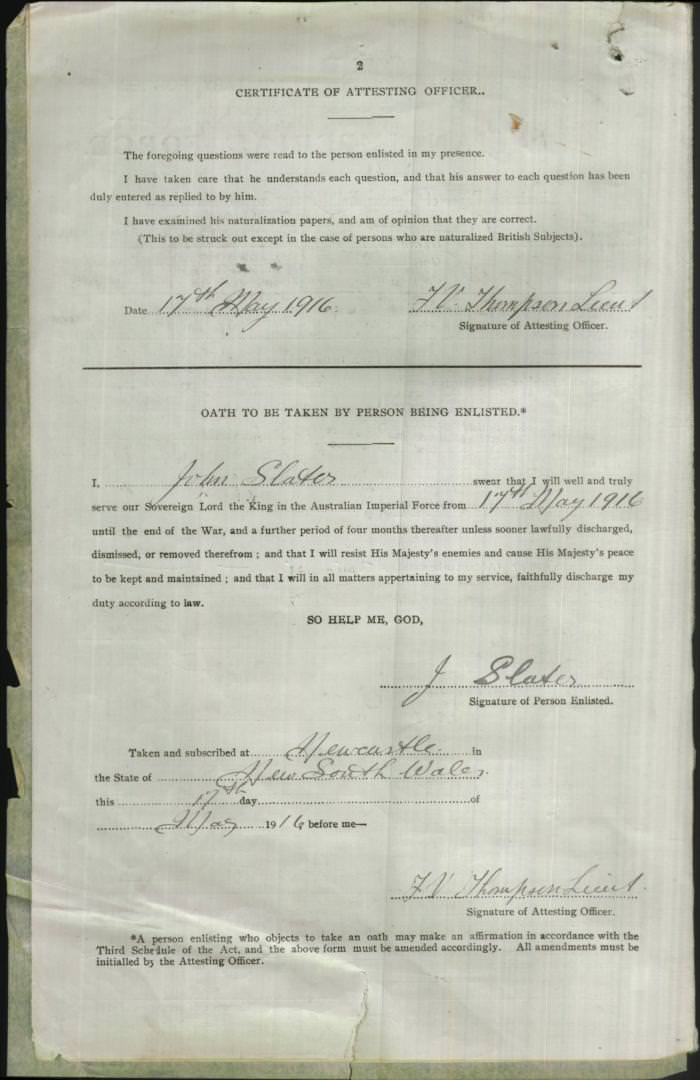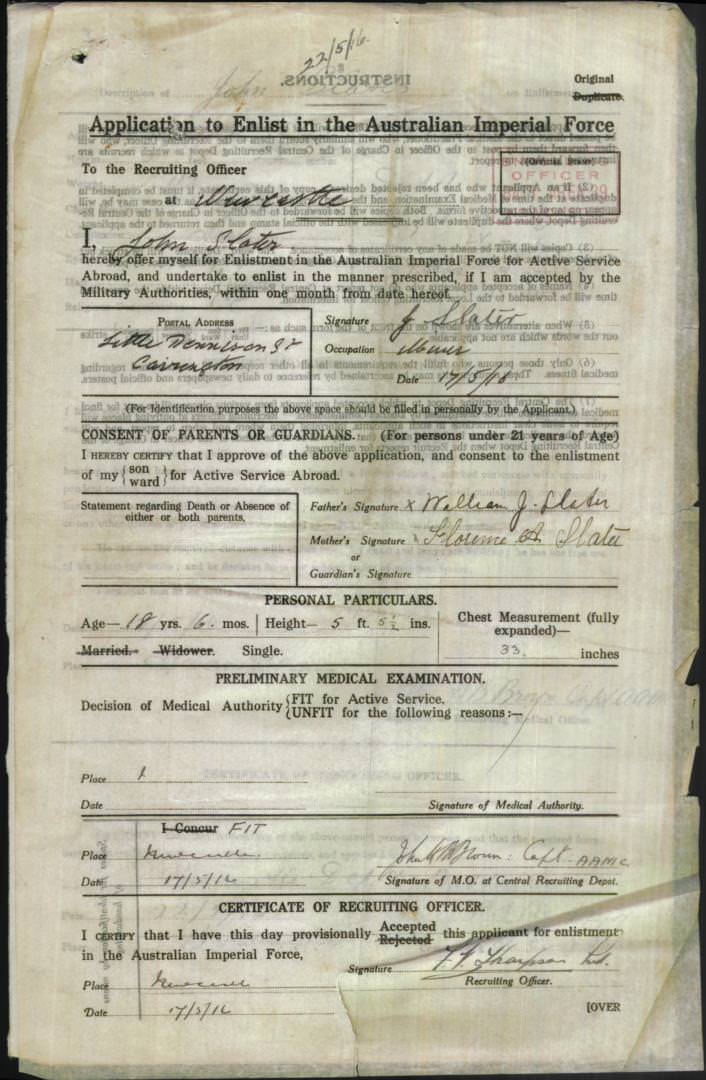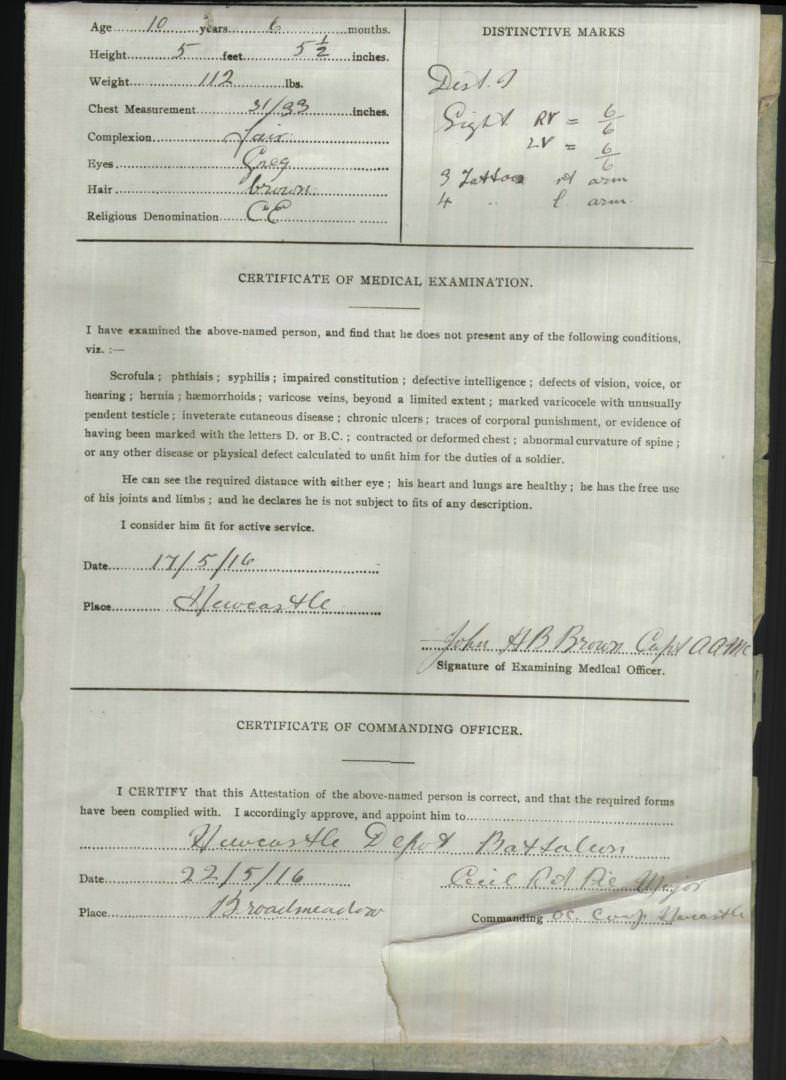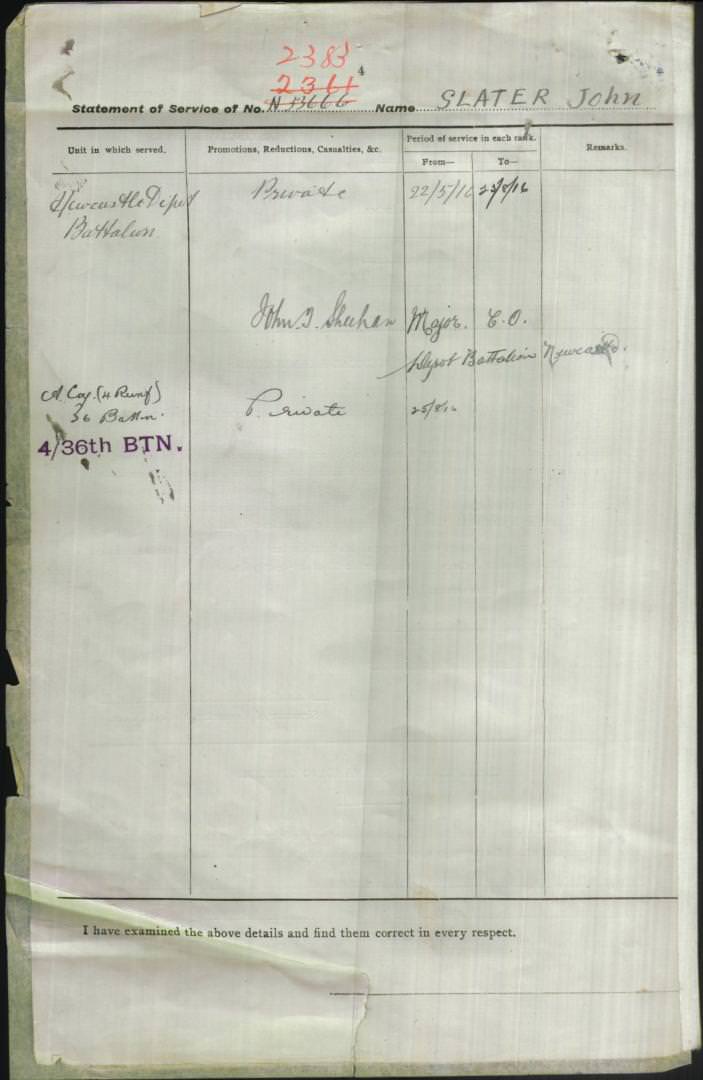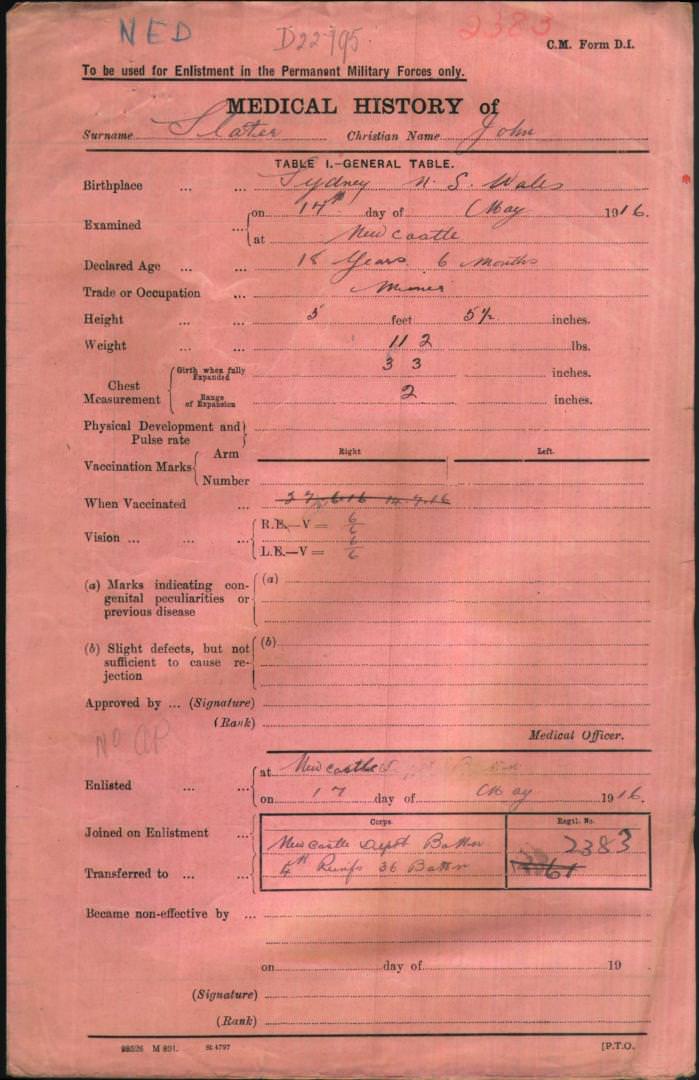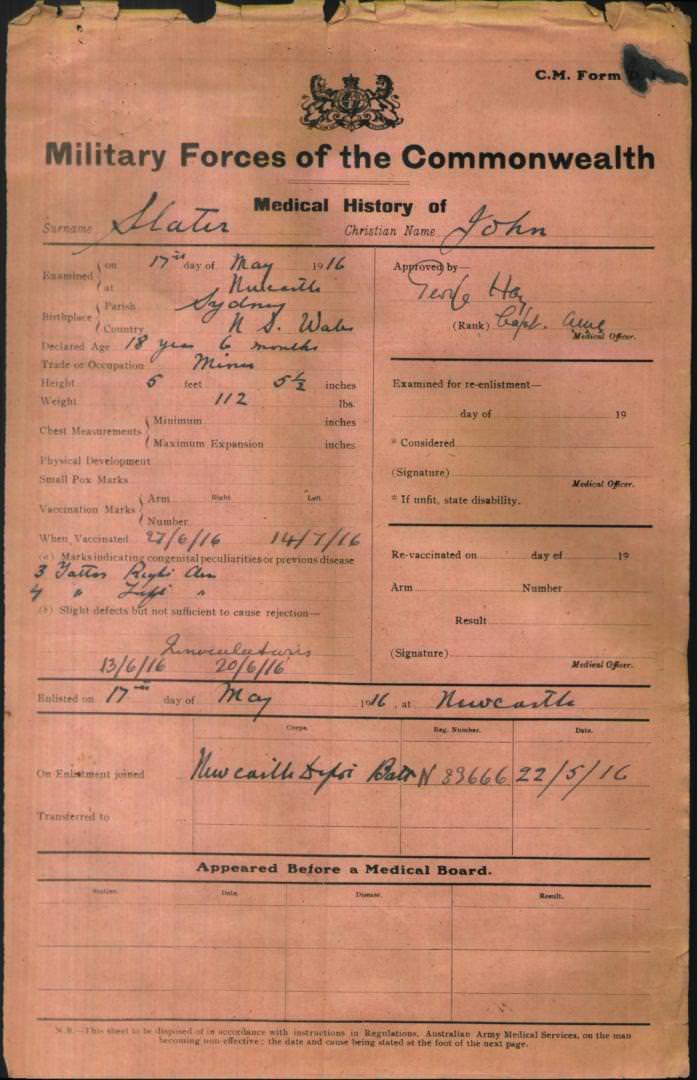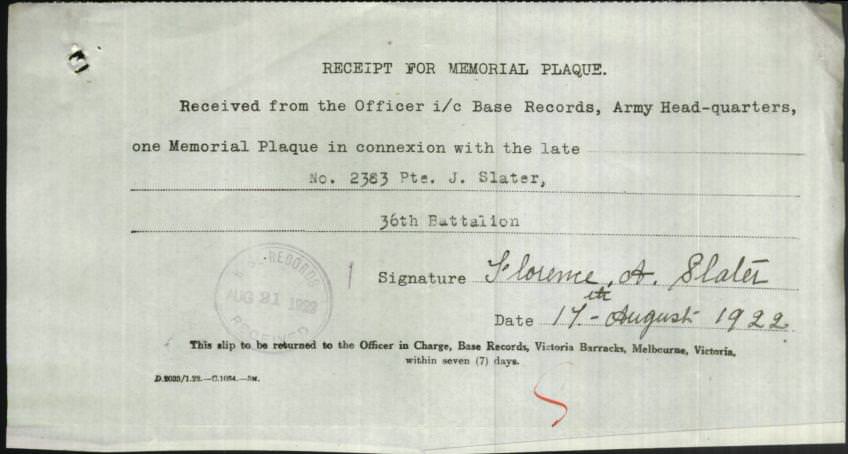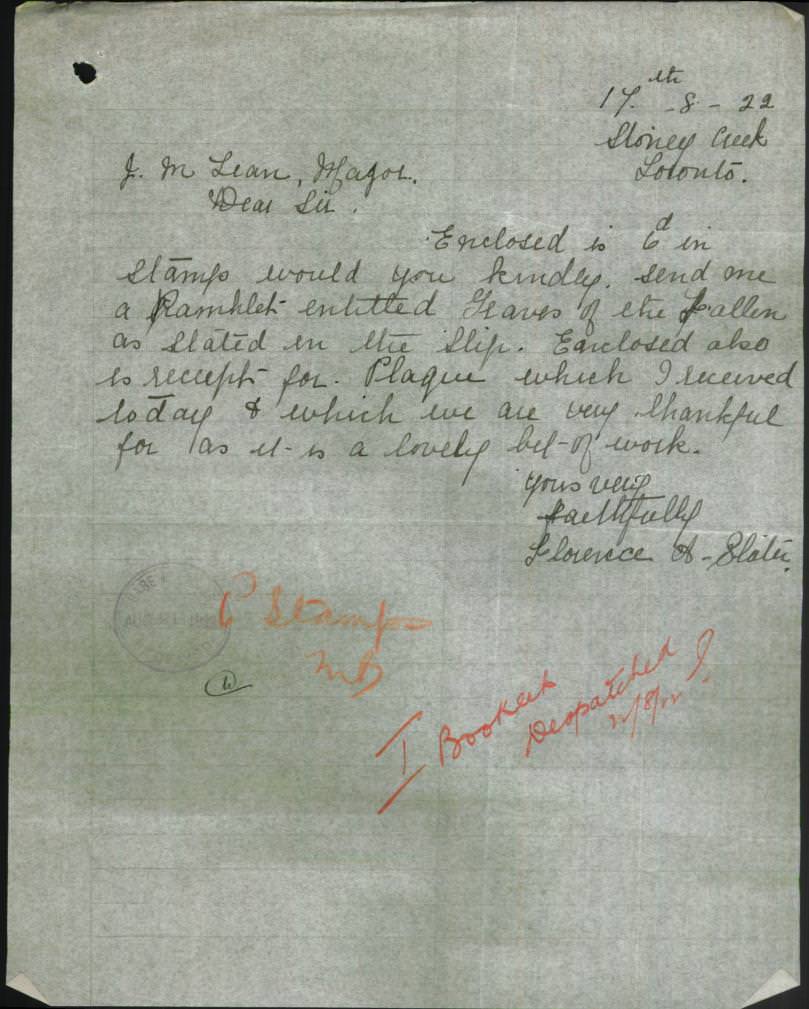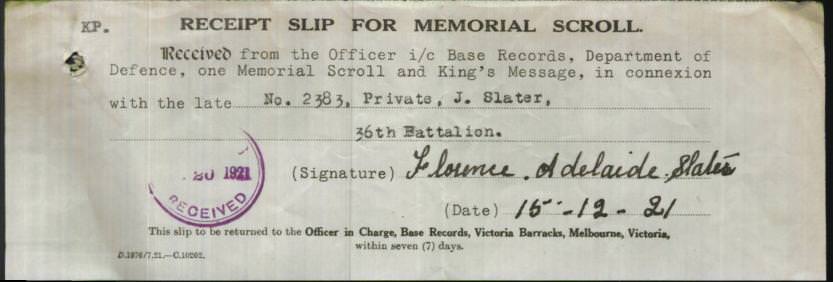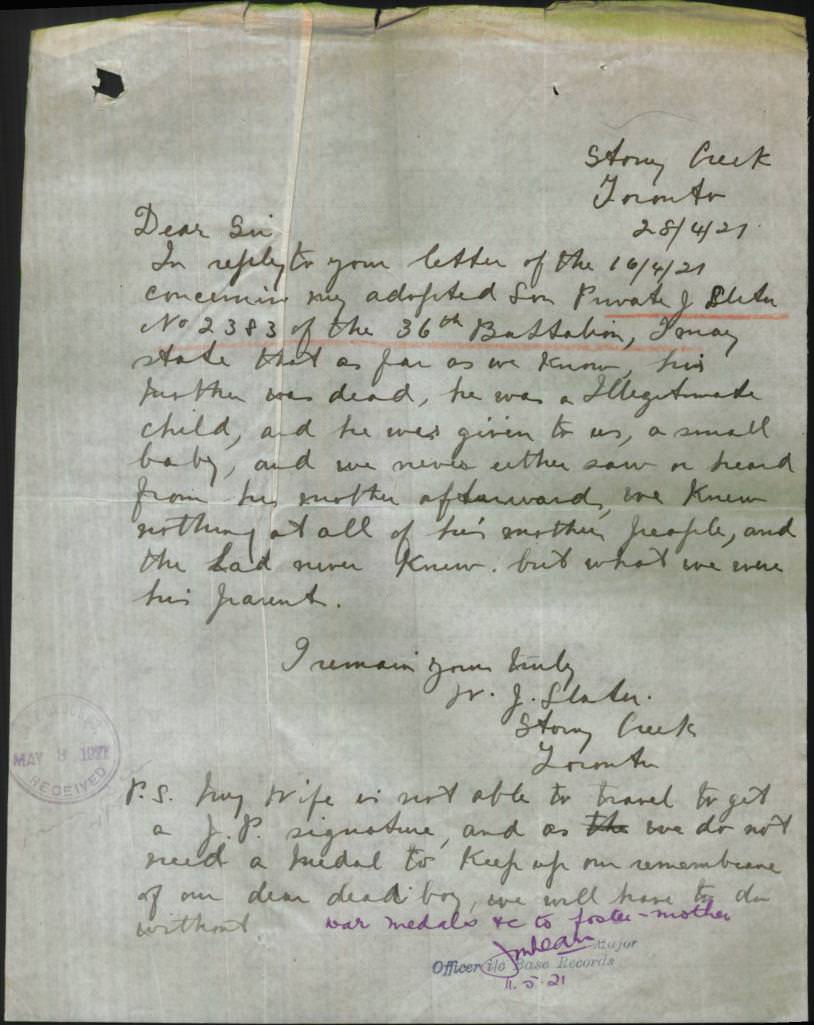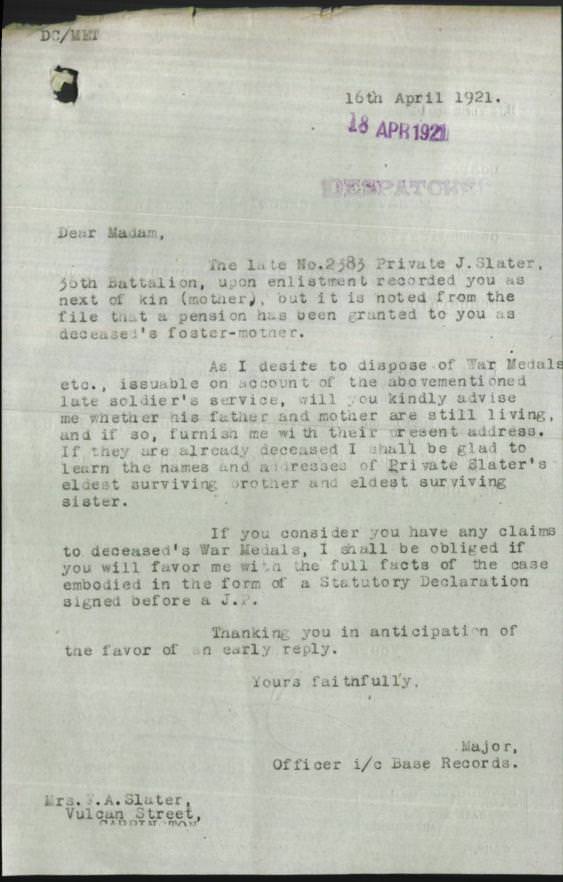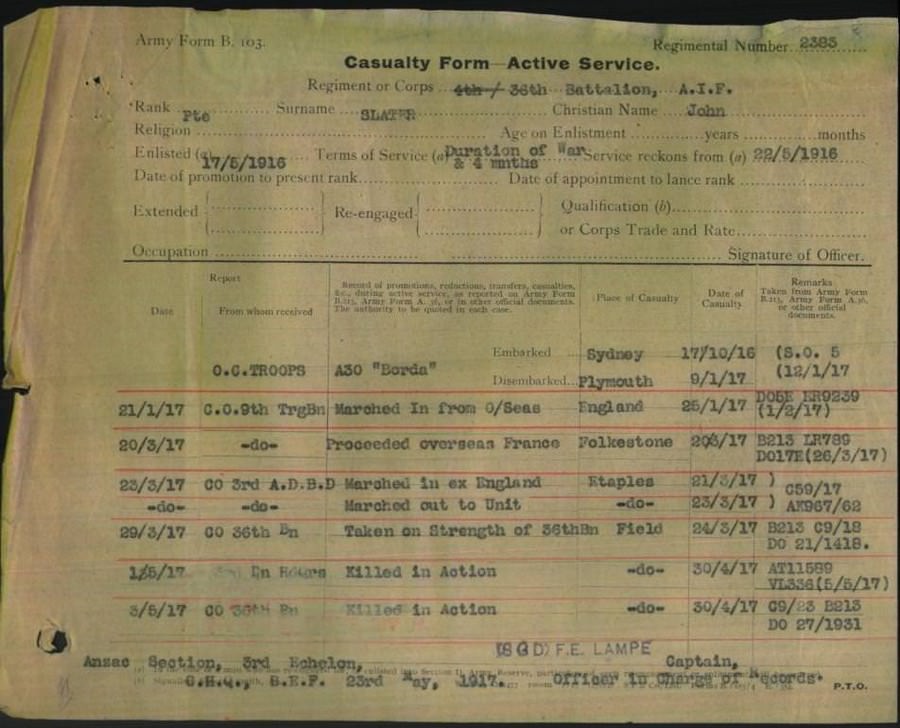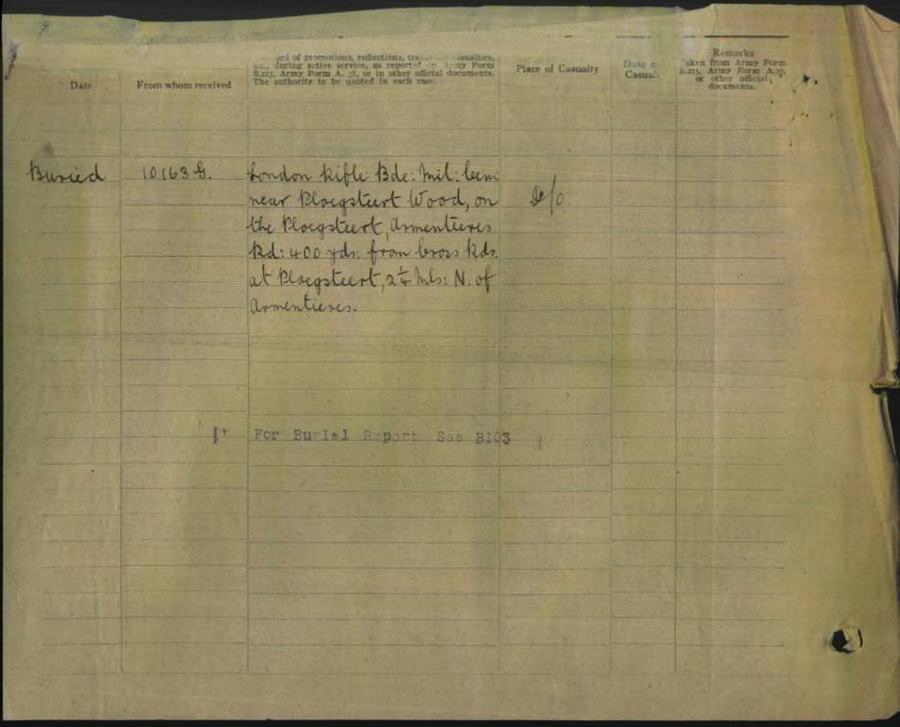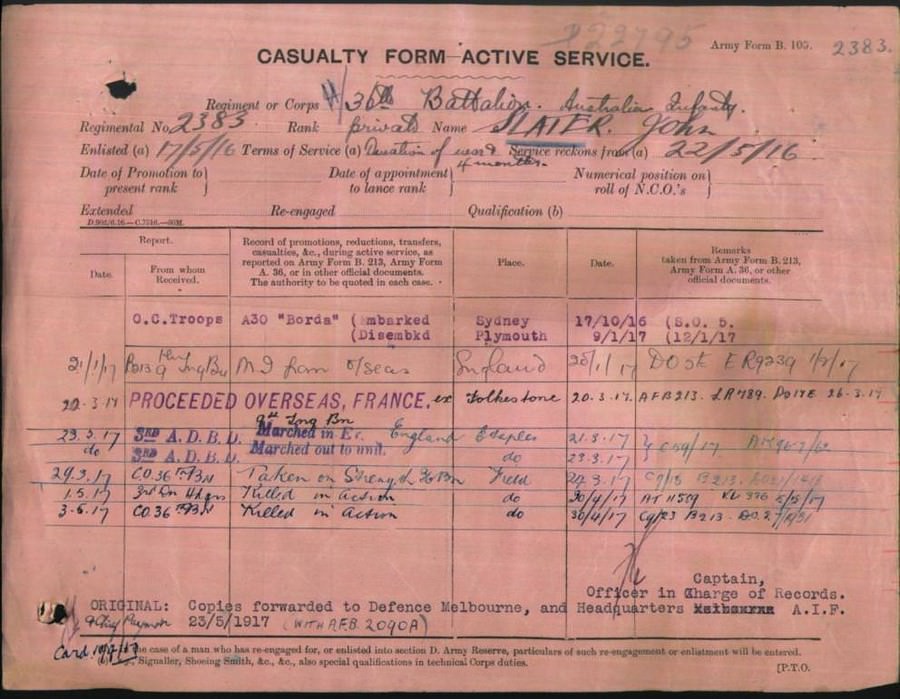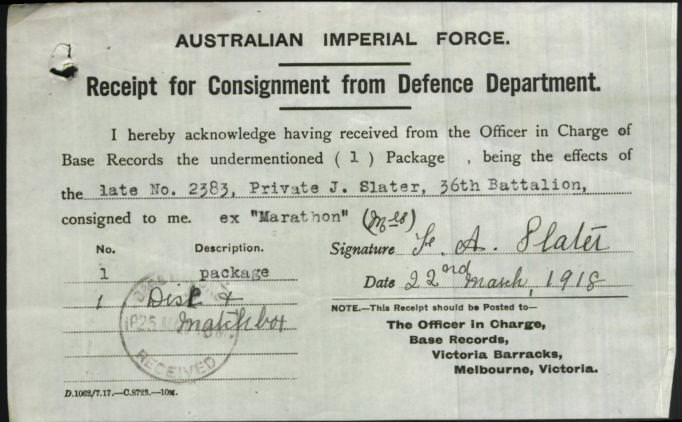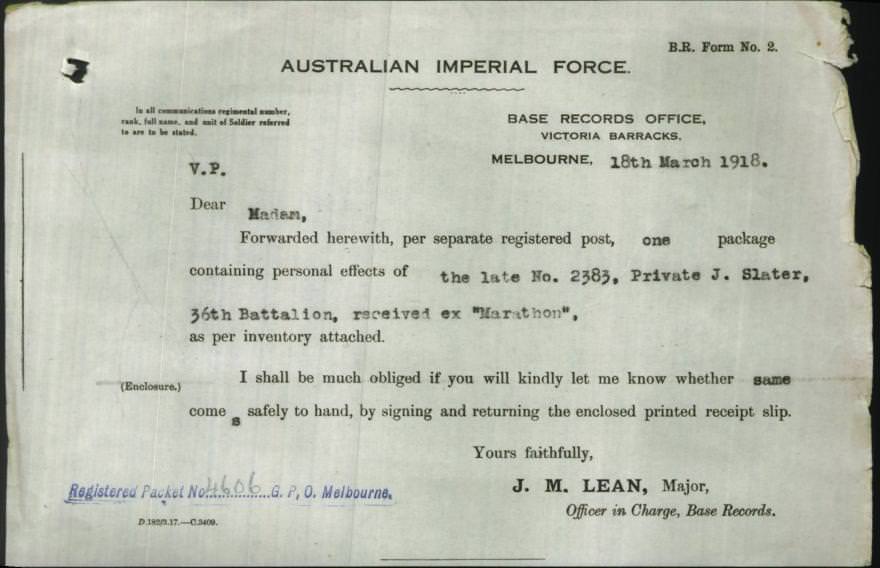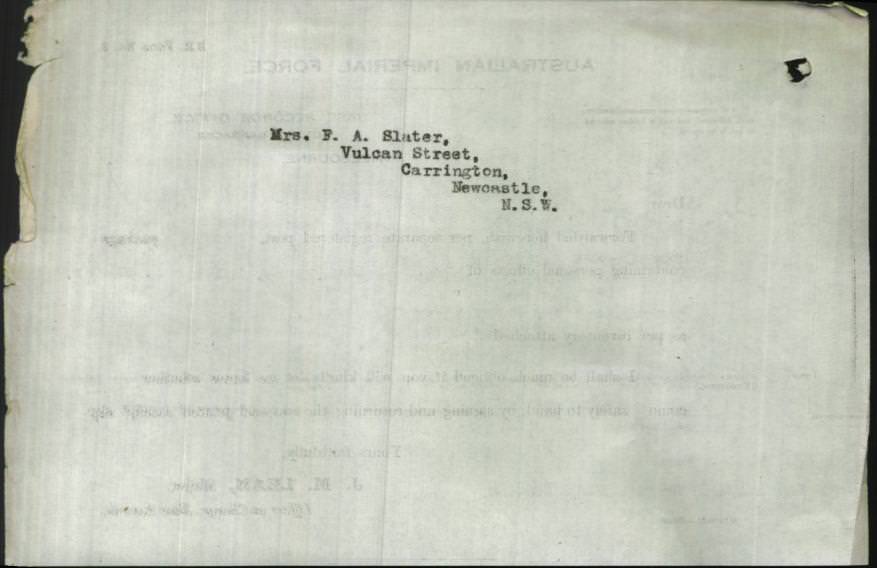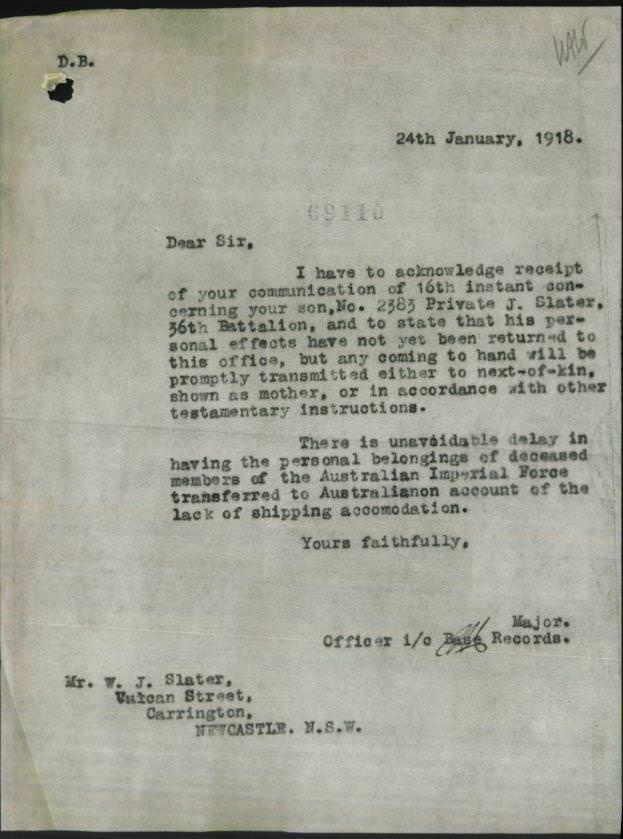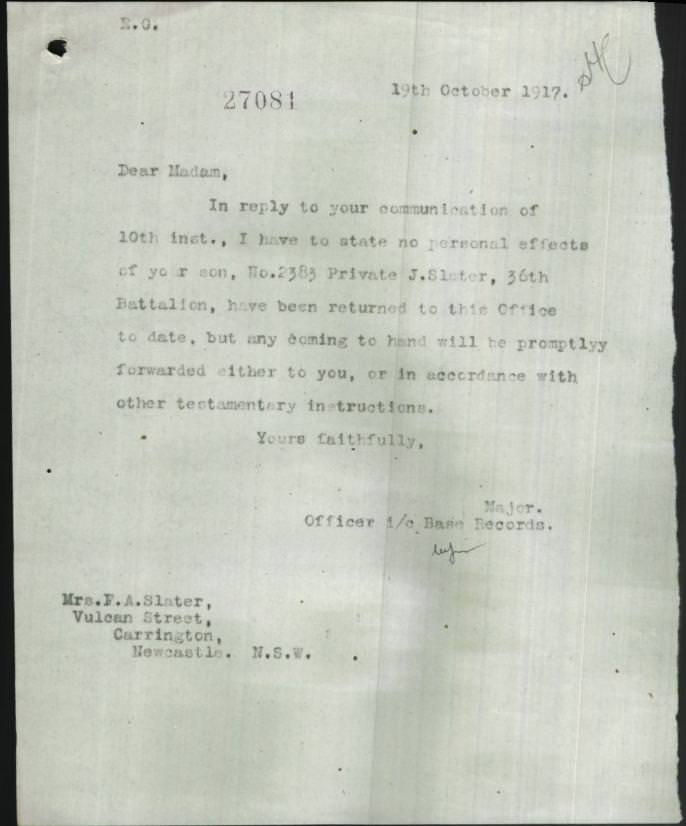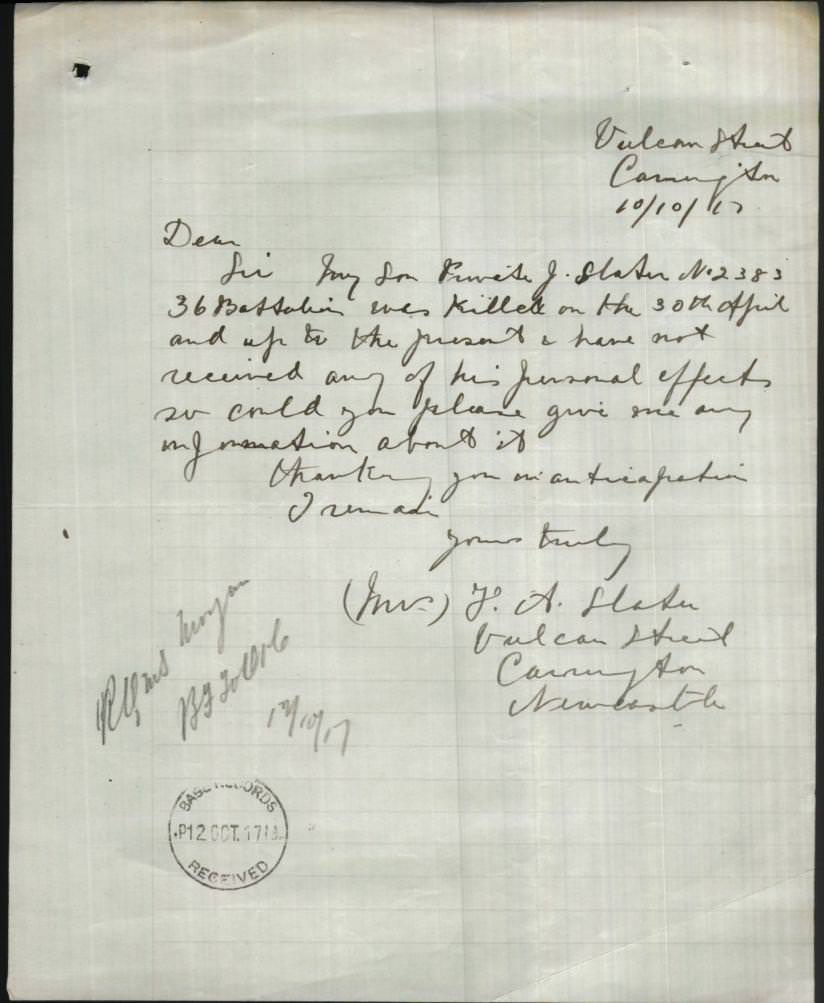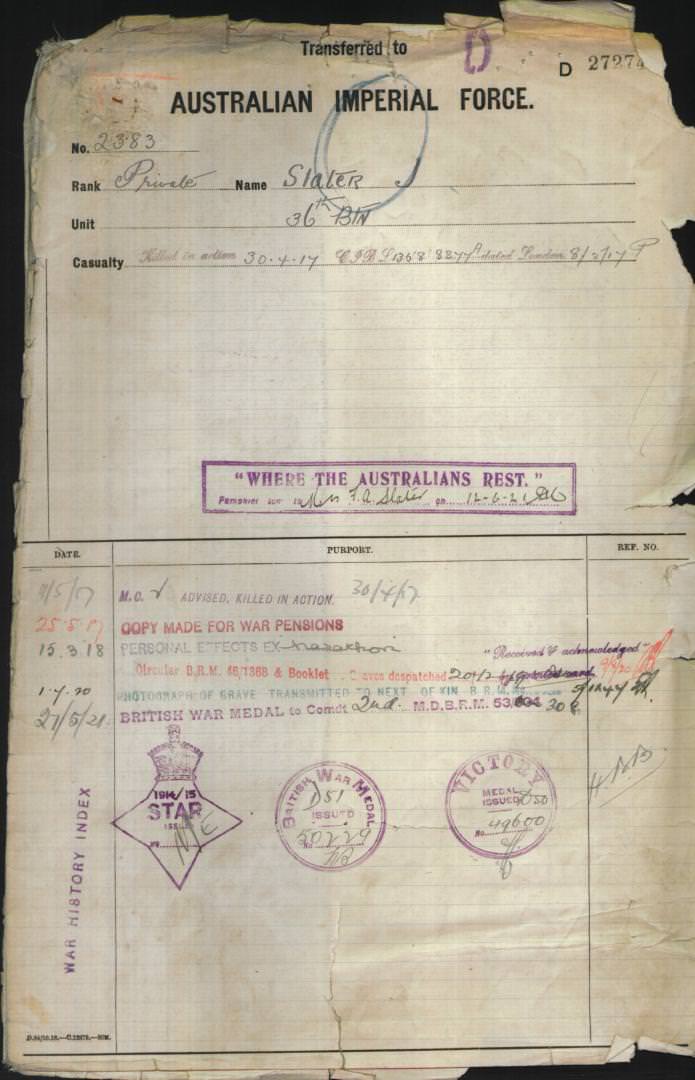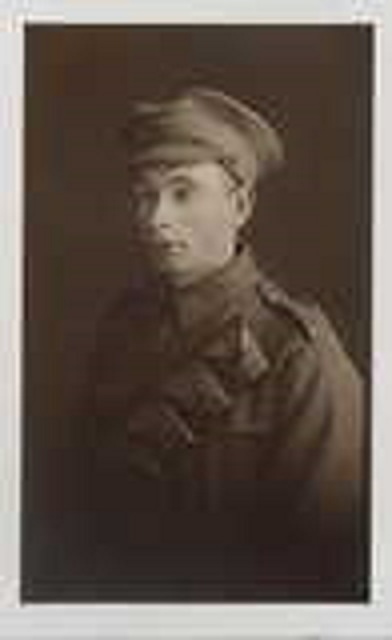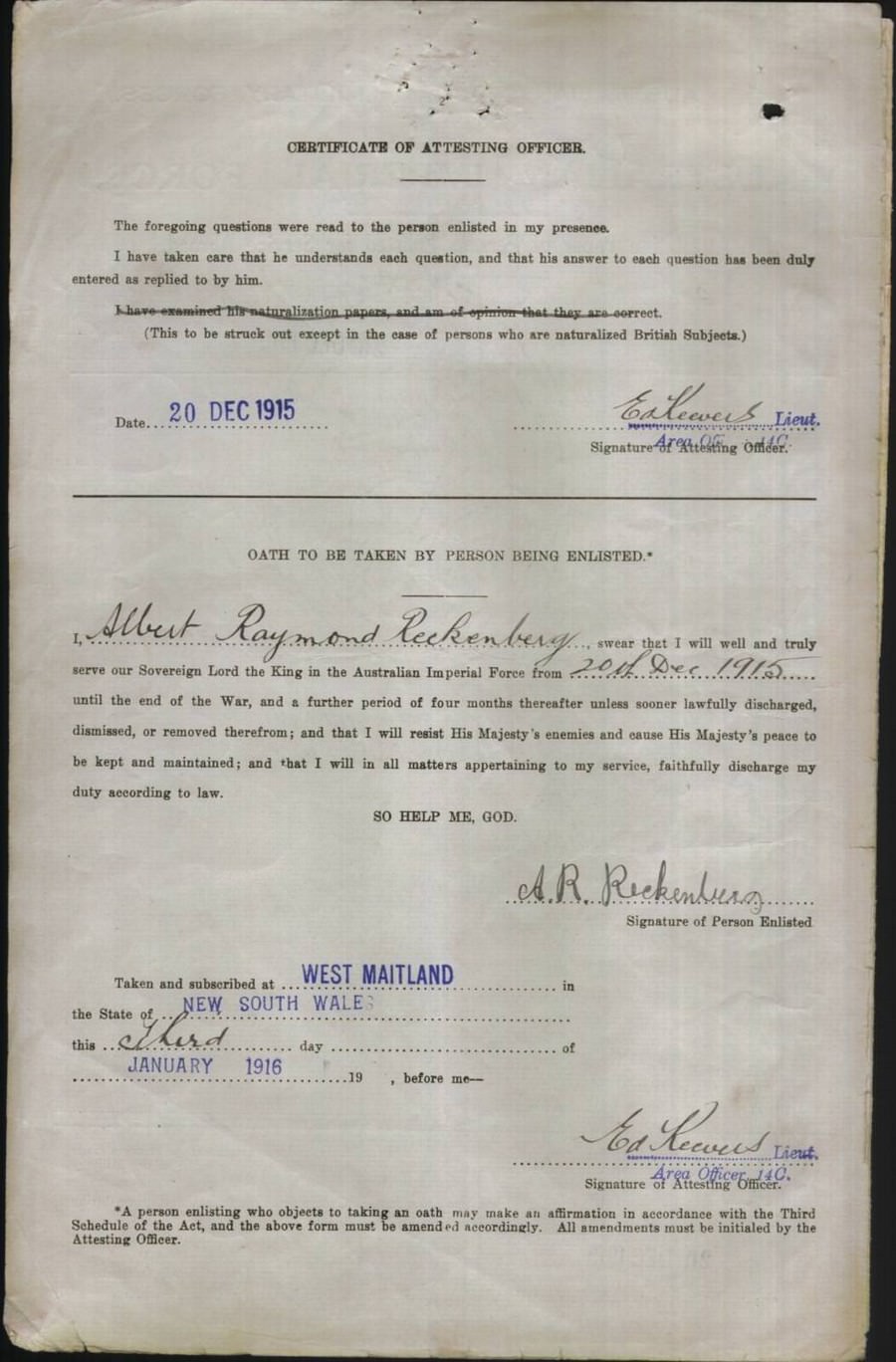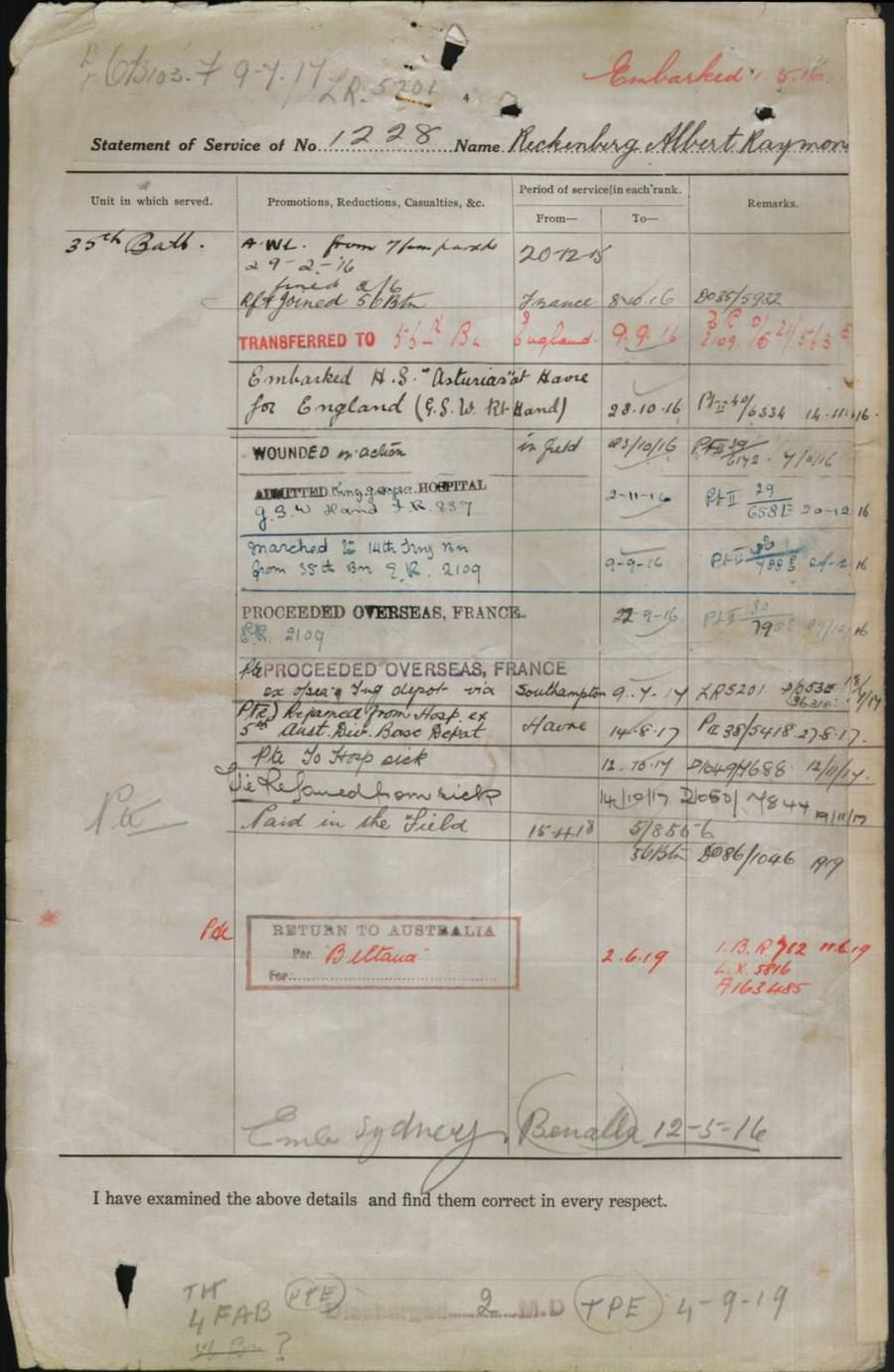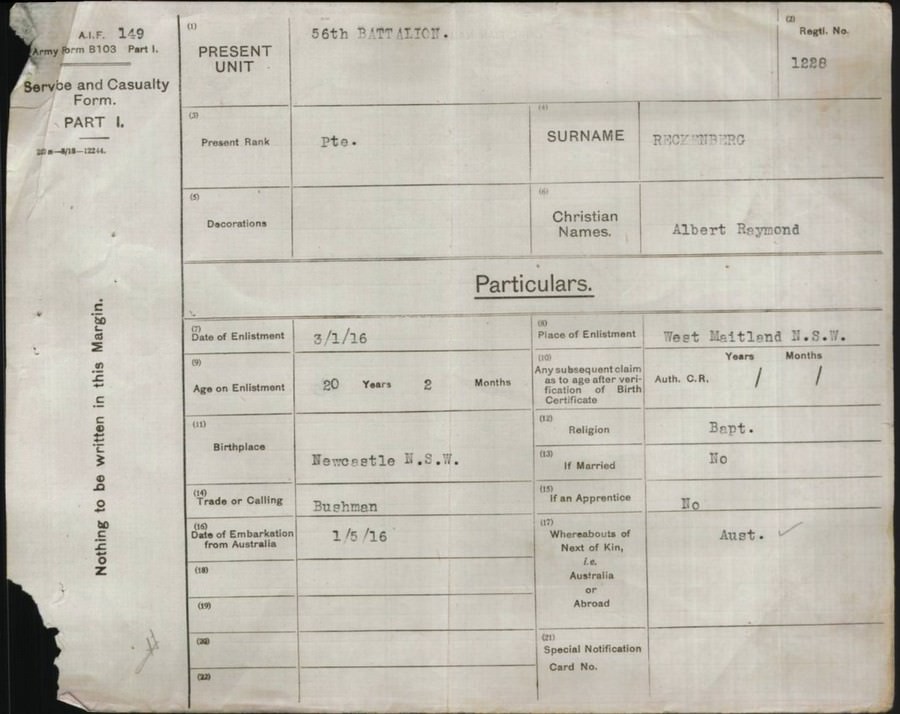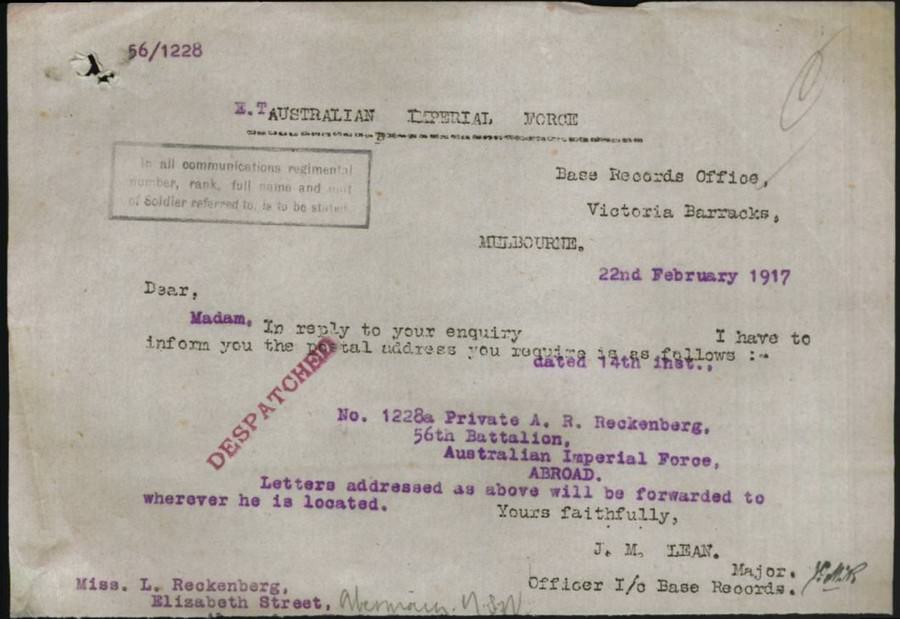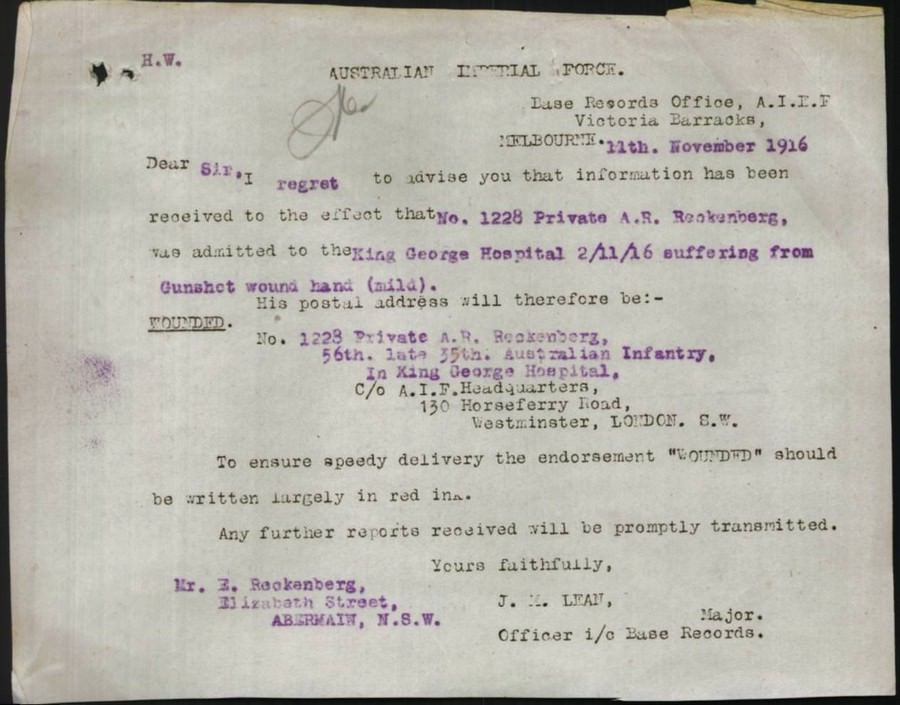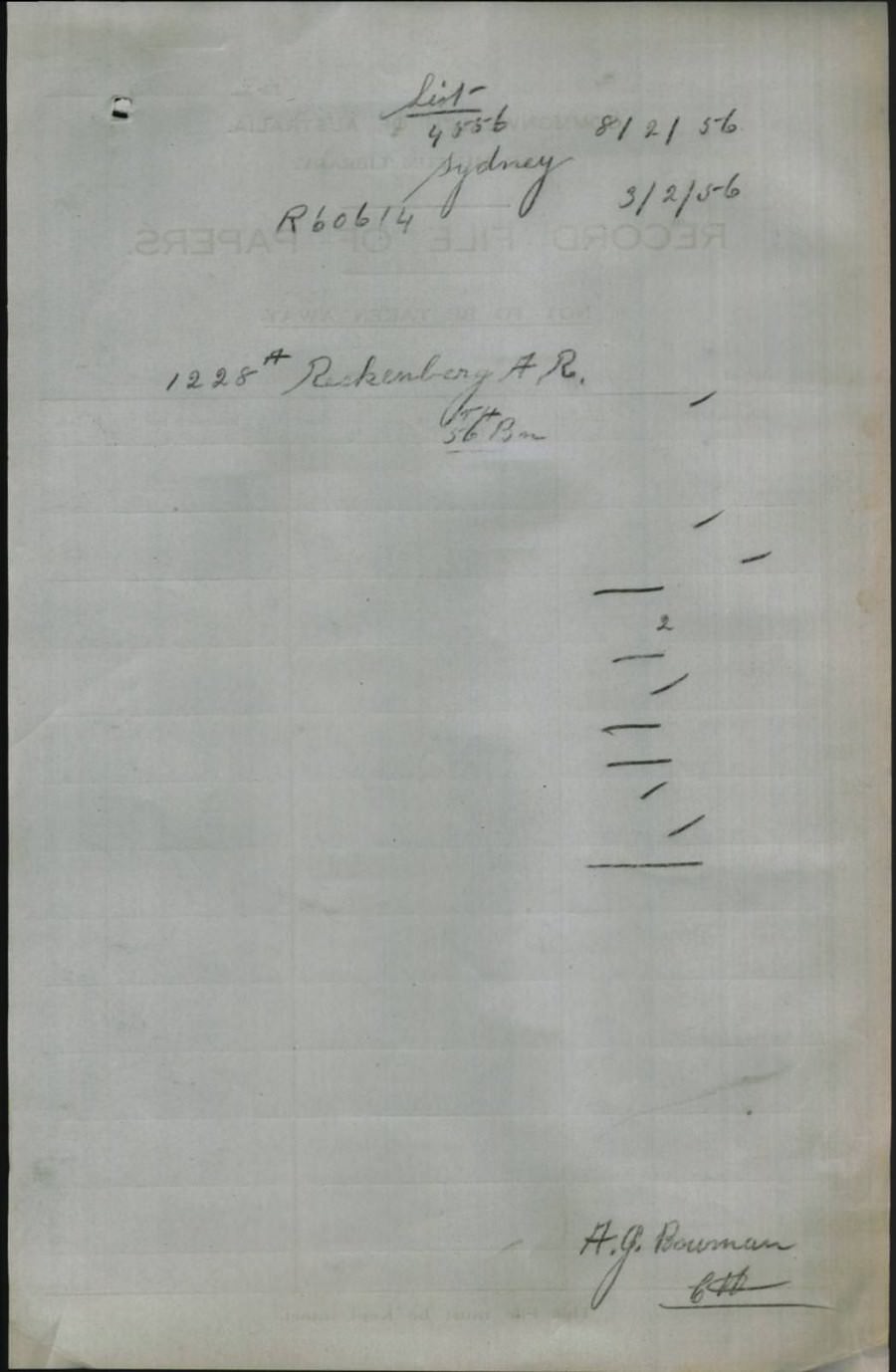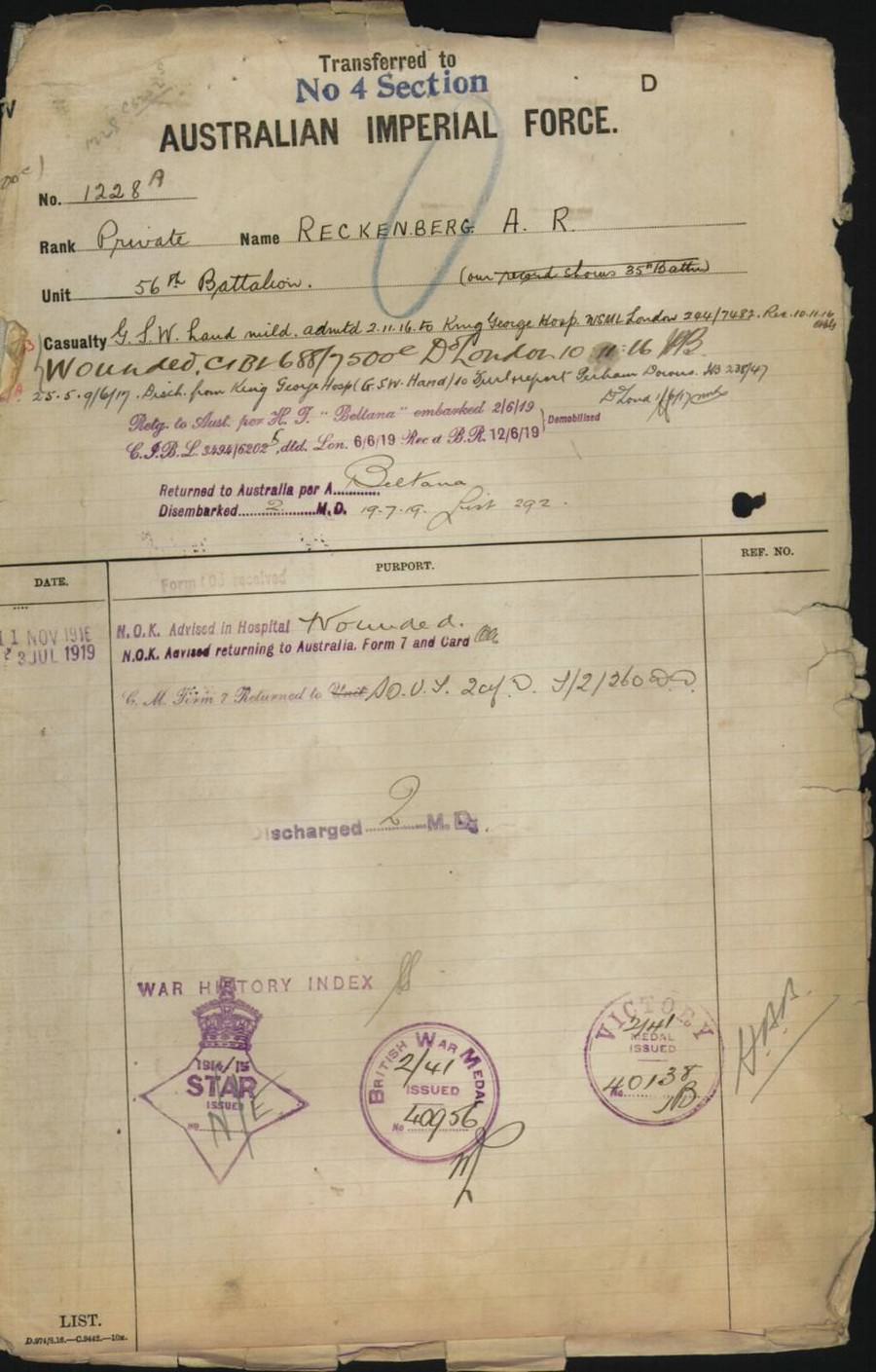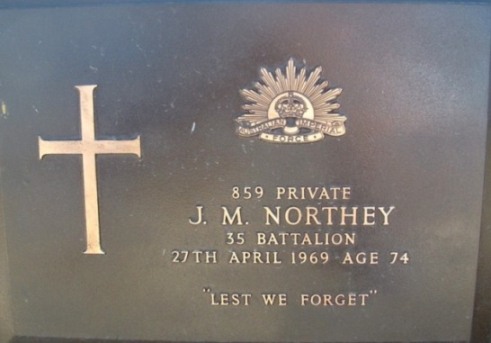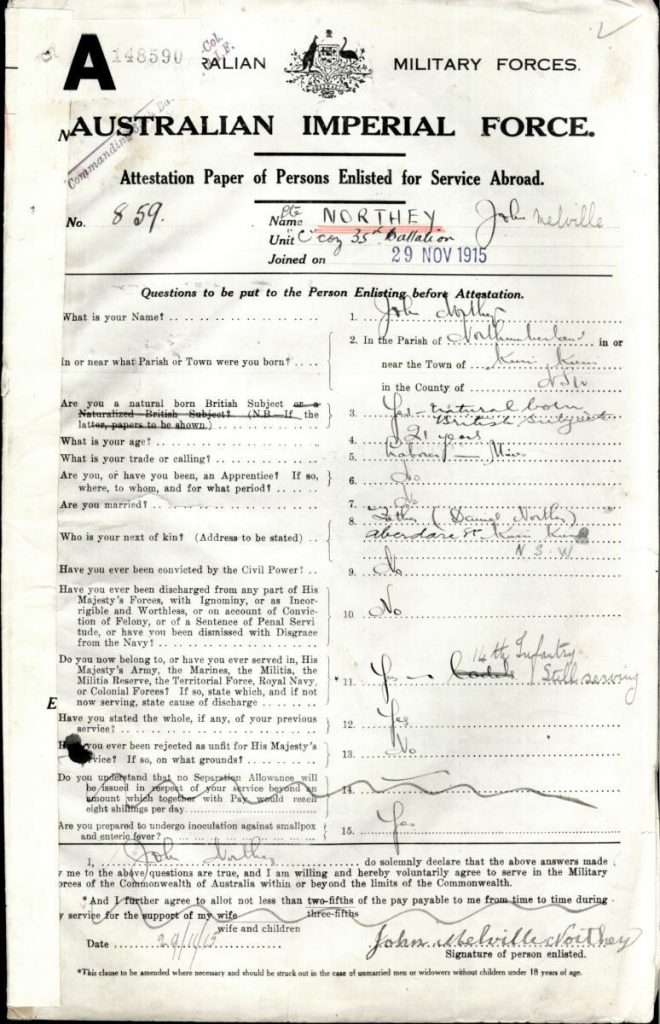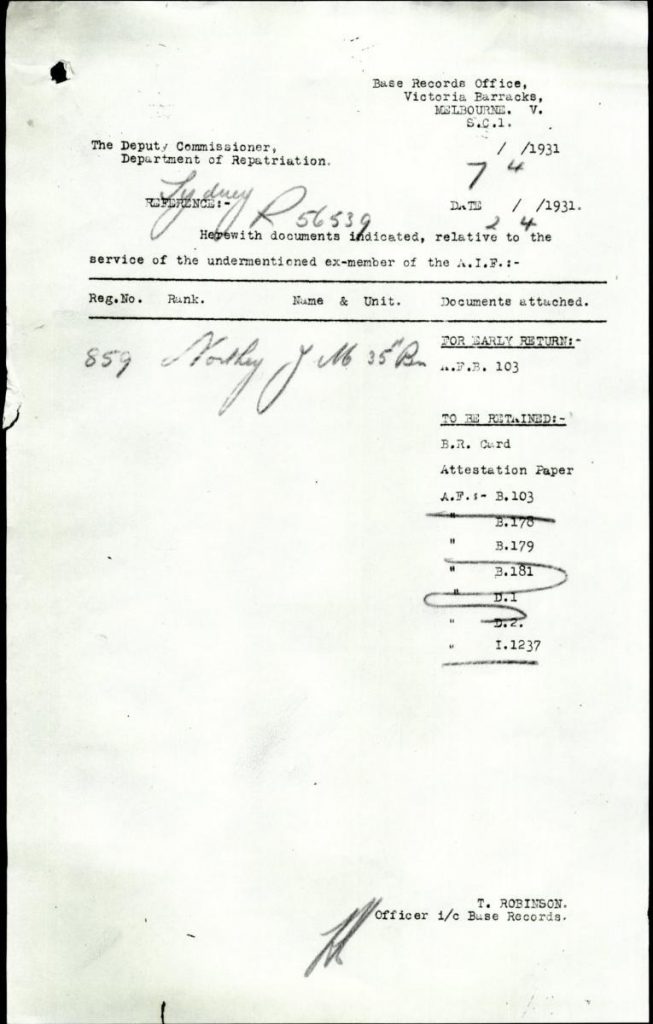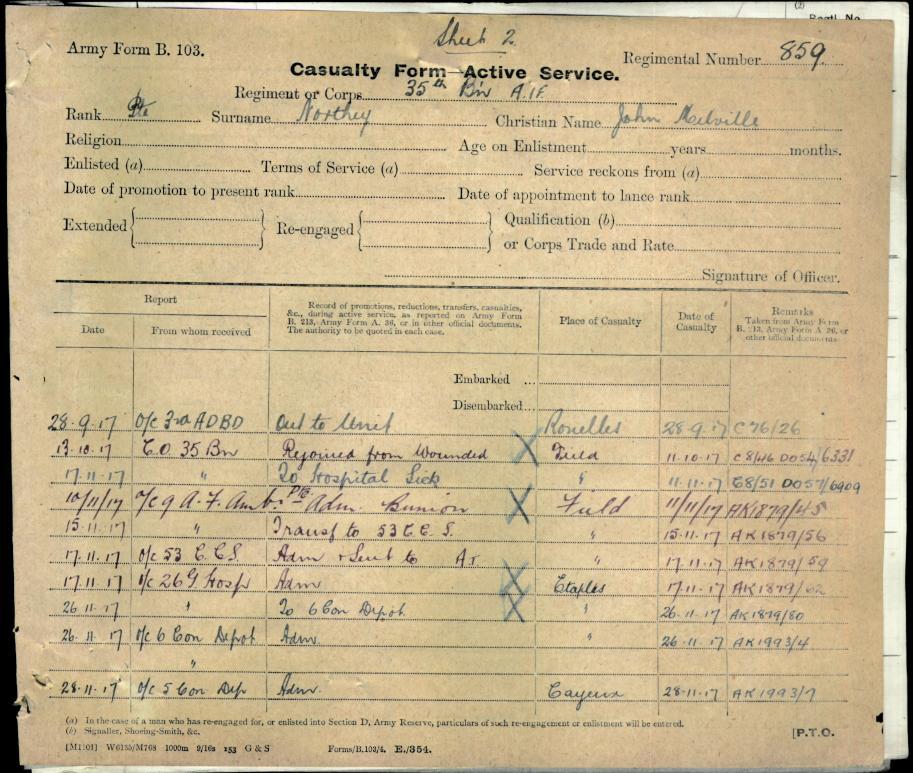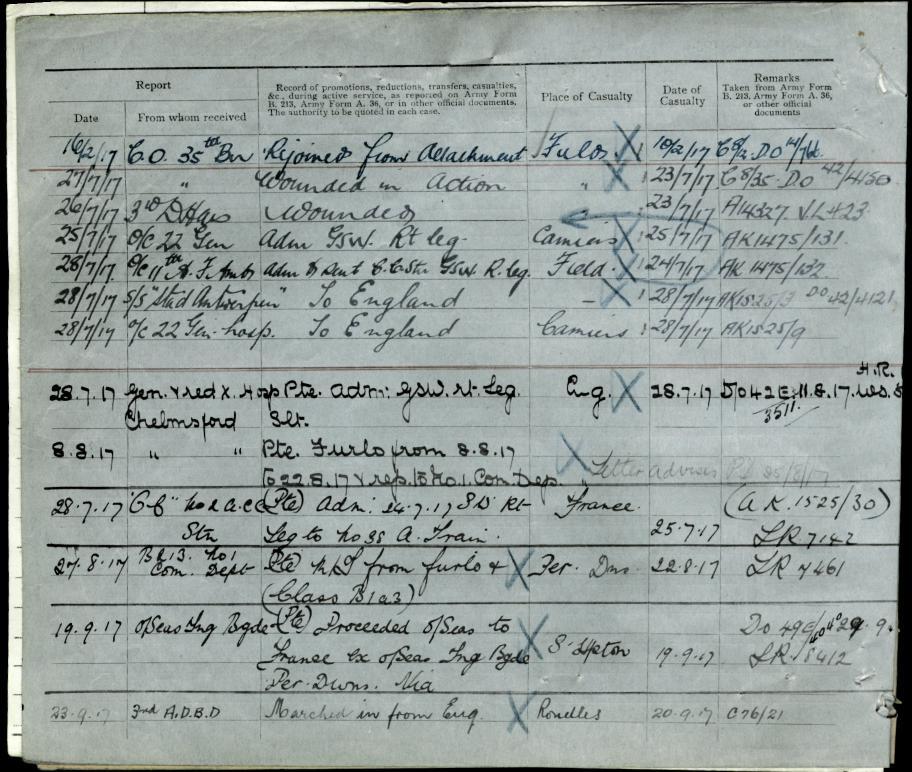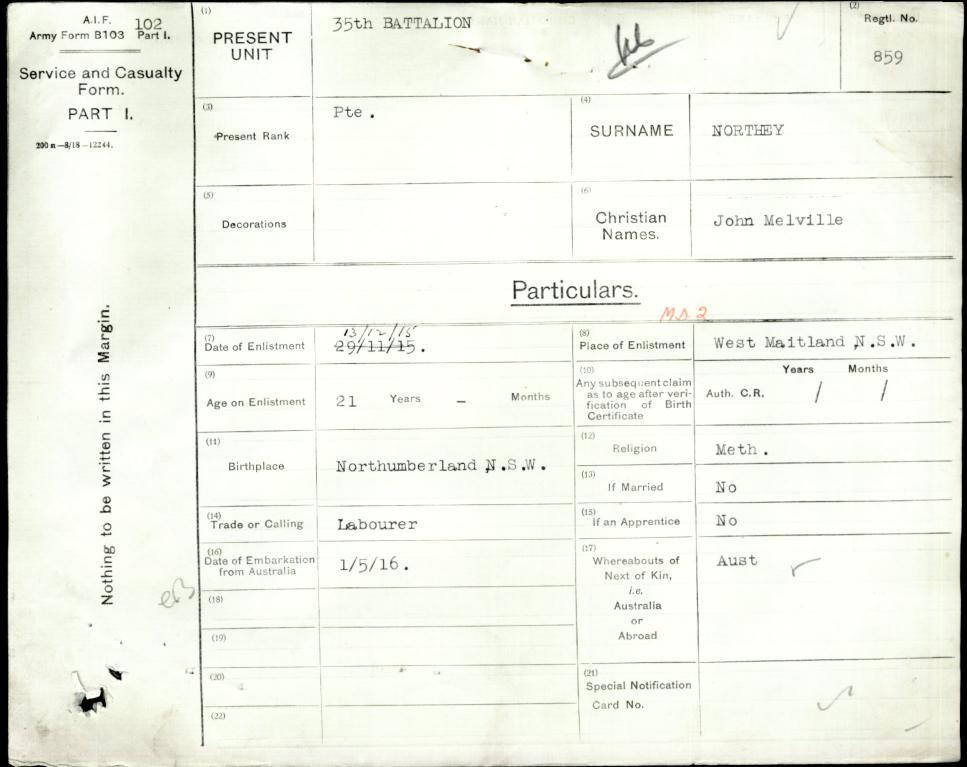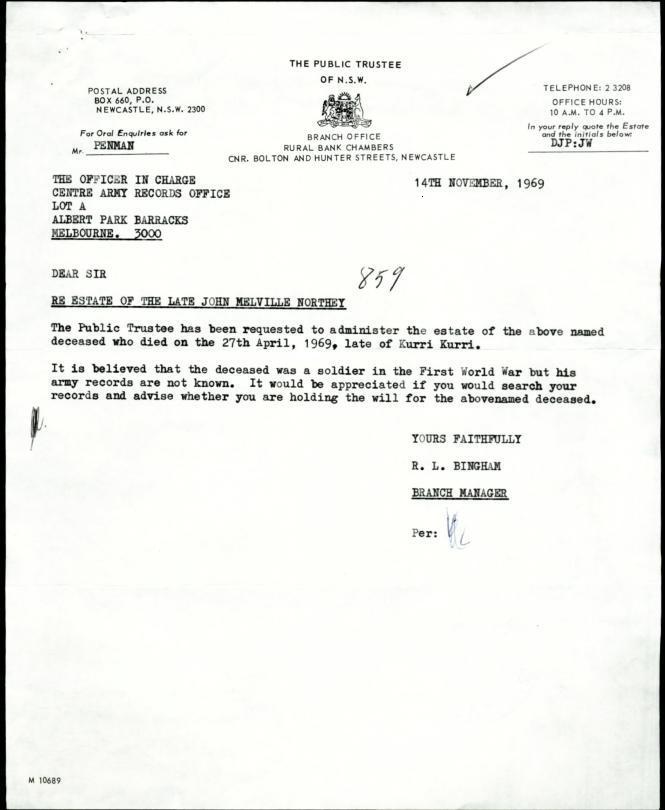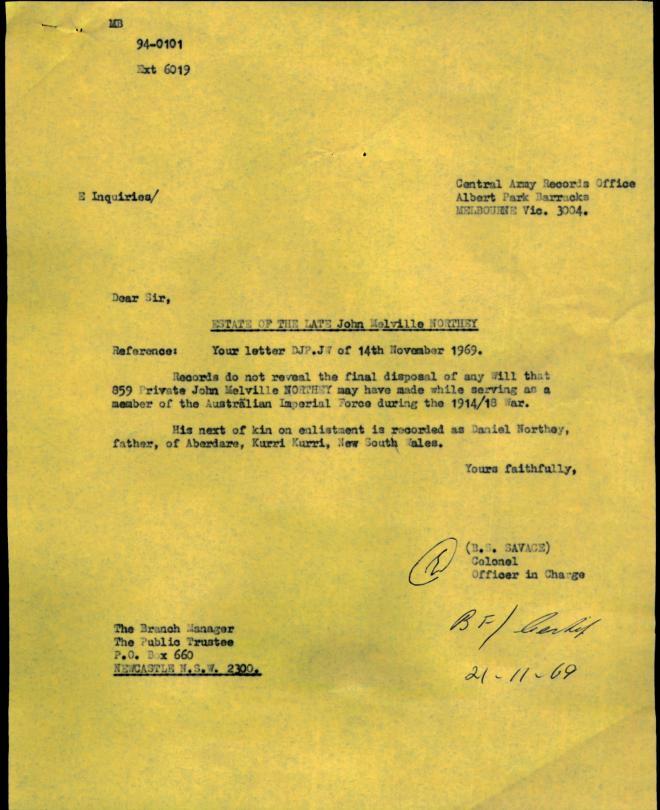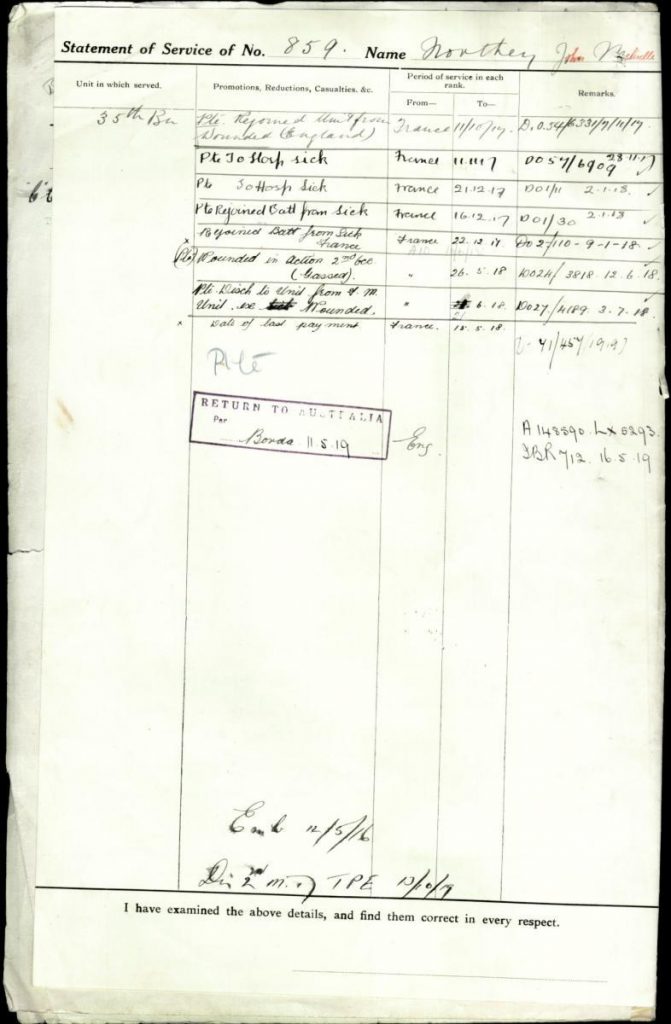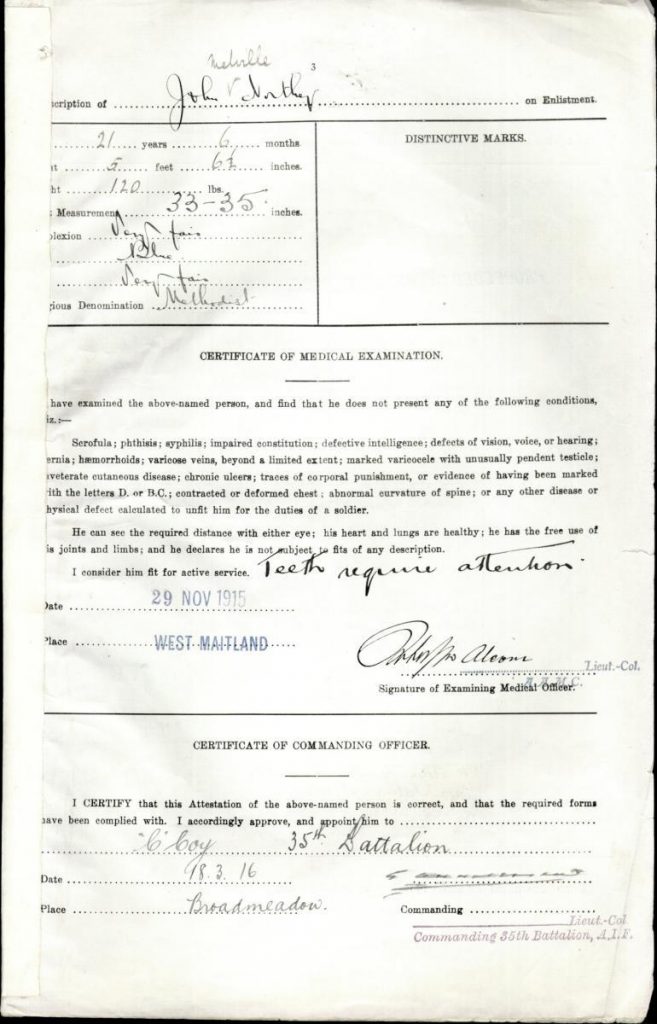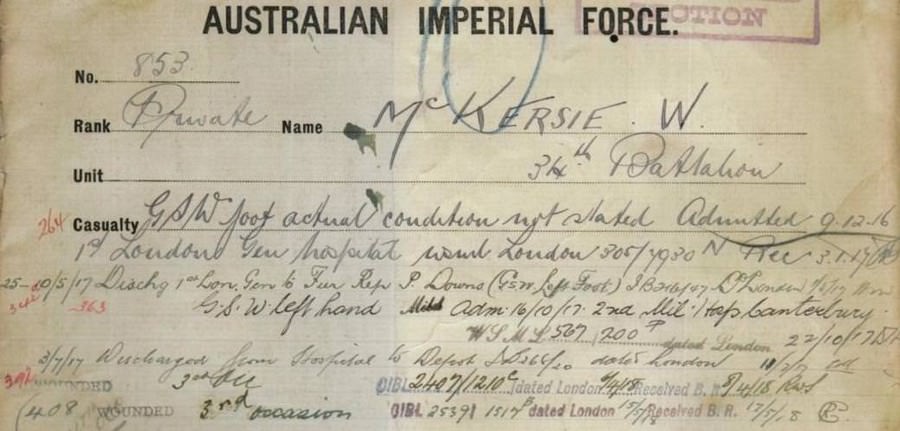
34th BATTALION A.I.F.
Private: 853 William McKERSIE.
Born: 1896. Wickham via Newcastle, New South Wales, Australia. Birth Cert:8785/1896.
Married: 1925. Cessnock, New South Wales, Australia. Marriage Cert:8147/1925.
Wife: Phyllis McKersie. nee: Price.
Died: 1927. Wickham, New South Wales, Australia. Death Cert:1391/1927.
Father: William McKersie.
Mother: Elizabeth C McKersie. nee: Grant.
INFORMATIONWilliam McKersie served with the 14th Infantry Militia when he enlisted with the 34th Battalion AIF on the 28th January 1916 at Newcastle N.S.W. and was an original member of the Battalion. William was sent to the Rutherford Army Camp at West Maitland. Here strenuous training was carried out. The men were very keen and fit, whilst their comfort and health were made a special study. Food was good and ample and sports and recreation were not overlooked.
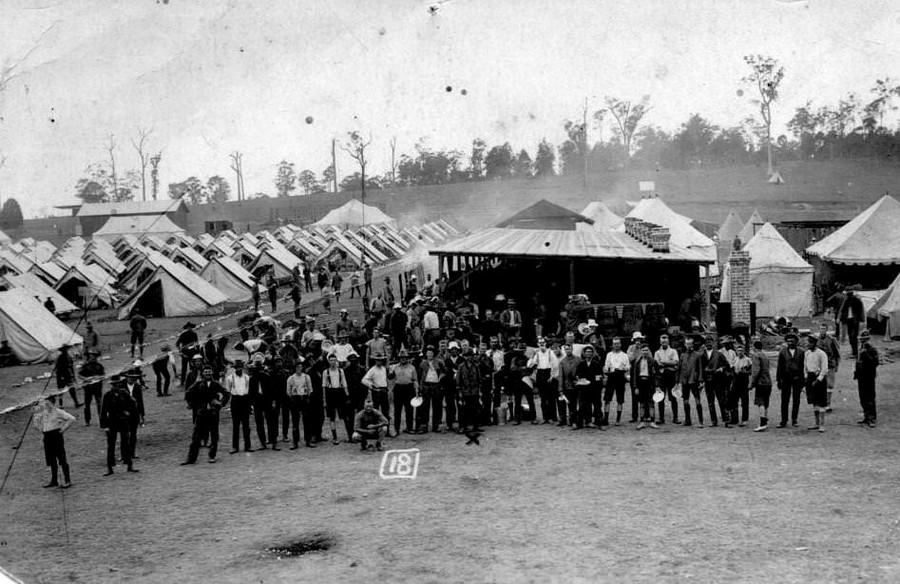 MAITLAND CAMP RUTHERFORD N.S.W. 1916.The Battalion en trained from Farley Station on the 1st on May. On the following morning, 2nd May 1916 the men embarked on the transport HMAT A20 "HORORATA" and sailed at 4:00 pm".
MAITLAND CAMP RUTHERFORD N.S.W. 1916.The Battalion en trained from Farley Station on the 1st on May. On the following morning, 2nd May 1916 the men embarked on the transport HMAT A20 "HORORATA" and sailed at 4:00 pm".
 H.M.A.T. A20 "HORORATA"The Battalion disembarked at Plymouth at 1:00pm and entrained during the afternoon for Amesbury, arriving at midnight and marching to hutments at No: 1 Camp, Larkhill. Here the Battalion settled down to hard training, which included Route Marching, Trench Digging, Bomb Practice, Musketry and general Camp Routine. Later the Battalion moved to the No: 25 Camp and finished off their training, which included six days' battle practice and field work at the Bustard Trenches.
H.M.A.T. A20 "HORORATA"The Battalion disembarked at Plymouth at 1:00pm and entrained during the afternoon for Amesbury, arriving at midnight and marching to hutments at No: 1 Camp, Larkhill. Here the Battalion settled down to hard training, which included Route Marching, Trench Digging, Bomb Practice, Musketry and general Camp Routine. Later the Battalion moved to the No: 25 Camp and finished off their training, which included six days' battle practice and field work at the Bustard Trenches.
Whilst at Larkhill William was Charged A.W.L. from Midnight 20.10.16 until Midnight 23.10.16. Award 14 days Pay. No:2 by Major: Malcolm St John LAMB. Forfeit 17 Days Pay 24.10.16.
The 34th Battalion left Larkhill on the 21st November and en trained at Amesbury for Southampton, embarking on the S.S "Arundel". The transport section left by S.S. "Princess Victoria". The Battalion arrived at Le Harve, France on the 22nd November 1916. Disembarkation commenced at 8:00 am and the Battalion marched to No;1 camp on the Hill, arriving at 2:00 pm. The men carried heavy loads, in some cases amounting to miniature Q.M.' Stores. The march over cobblestones was very tiring, notwithstanding the many route marches which had been carried out at Larkhill. However, after bathing their feet and receiving treatment, as well partaking of a good meal, some spent a comfortable night.
The following morning the Battalion moved to Le Harve Railway Station, leaving D Company behind. On arrival at the Station en training commenced at 8:00 am and the train left at 11:15 am. The journey was slow and occupied until 4:30 pm on the 24th. On arrival at Bailleul the men de trained and marched to Outtersteene. D Company arrived at 4:00 pm the following day. The Battalion rested here in billets for two days previous to taking over garrison duties in the Line at Armenties. The Commanding Officer Lieutenant Colonel. Malcolm St John LAMB. with the Adjutant, Company Commanders, N.C.O's and Specialists went into the Line to inspect Trenches, Stores, Plans and to arrange for the taking over this Section of the line on the following day.
The specialists and N.C.O's remained in the Line. On 27th November the Battalion went into the Line in the L'Epinette Sector. The men were taken up by motor lorries as far as the Square near Houplines Station, and marched via Butterne Avenue and Willow Walk to the Line, carrying their packs and blankets into the trenches. Lewis Gun ammunition was taken into the Line with the tin cases. The going was difficult owing to the conditions of the Trenches and the heavy and bulky loads. Later the blankets were dumped near Tussage Dump, from which most of them disappeared. This was the main incident of our relief in the Line.
The Sector taken over had been held by the NORTHUMBERLAND FUSILLIERS whom the 34th Battalion relieved. Specialists of this Regiment remained for a couple of days to arrange and assist in the routine. We were greeted with a display of Verey Lights and, apparently anxious to see the newcomers, the enemy searched our Sector with his searchlights throughout the night, which was misty and dark. Our Artillery and Trench Mortars put over a heavy barrage, either to let Fritz know we had arrived or to cover the change over; this was the signal for increased activity of enemy Machine Gun and Rifle fire to which the Battalion energetically replied.
During the night Patrols were sent out, Listening Posts established and wiring was commenced. Dawn broke with a thick mist hanging over the Sector and our men could get very little idea of the new frontage. Our Artillery and Trench Mortars were busy registering on the enemy positions throughout the day and Fritz retaliated with Machine Gun and Rifle fire.
William was wounded in Action; 1st occasion on the 29th of November where he received a Gun Shot wound to his Ankle William was invalided to England from Wimereux on the 8th December and the next day he was admitted to the 1st London General Hospital. After William was discharged from Hospital on the 25th April he was granted a furlo until the 10th of May where he reported to Perham Down. William proceeded overseas for France via Southampton on the 25th of August and disembarked at Rouelles the next morning and marching in with the 3rd Australian Divisional Brigade Depot. William rejoined his unit on the 2nd of September as the Brigade was moving towards the Passchendaele Sector.
12th October 1917
THE BATTLE OF PASSCHENDAELE I
At 1:30 am rain showers began. By 2:30 am it was raining lightly but steadily, by 3:30 fairly heavily. the infantry moved through the pitch dark in single file. In some battalions each man held on to the equipment of the man ahead of him; if touch was broken, those in front had to come back. The news that the line as reported by the 66th division was not held only just reached the incoming troops. Accordingly, in the right brigade (9th) the leading Company Commanders Captain: Clarence Smith JEFFRIES. V.C. and Captain: Telford Graham GILDER M.C. both of the 34th Battalion stopped their men at the entrance to Broodseinde railway cutting, and themselves went to make sure that their column might not run into the enemy.
At Keerselaarhoek Cemetery they found the tape duly laid, and met the officer of the 36th Battalion who had laid it, and by 3:00 am the time set, the 34th battalion was extended on its jumping-off position. But during the previous halt and afterwards, as it lay on the tape, the battalion was persistently shelled and suffered many casualties.
The first shell killed three signallers. Lieutenant: Albert Leslie WATSON. a signal officer of the 34th Battalion, a brave and enterprising leader who also was at the head of the column was severely wounded and all his staff hit. After establishing a forward command post Lieutenant: Thomas Fraser BRUCE 36th Battalion was also killed. Lieutenant Colonel: John Alexander MILNE. 36th Battalion supervising the assembly was knocked down by a shell but continued to command. Captain, Chaplain: Charles MURPHY was also wounded.
(BEAN; History of World war 1 Vol IV p911) Charles Edwin Woodrow BEAN
Only one Australian Division, the 3rd, was wholly employed in the days offensive. but the division was to capture Passchendaele an in spite of the depressing conditions, it was eager to achieve the distinction of doing so. One unit carried the Australian flag,to be planted in Passchendaele, and although officers and men in general were not enthusiastic concerning such "stunts" the Commander-in-Chief had been informed, and had told General: MONASH that, when this flag was planted, the news would be immediately cabled to Australia.
Some keen spirits looked on the operation simply as a dash for Passchendaele. One young company commander of Monash's reserve battalion, the 33rd, in face of a strict prohibition, led on his company as soon as the barrage fell. Starting from a line 350 yards in rear of the general alignment, the 3rd Division was out of touch with its neighbours from the outset. The heavy shelling on the tapes had made orderly disposition there almost impossible, as German Machine-Guns, undisturbed by the barrage now opened immediately, no opportunity offered of restoring proper formation.
The 9th Brigade went forward in the utmost confusion and a terrible mix up as reported by Captain: Robert Derwent DIXON D.S.O 35th Battalion at 6:40 am and "Great Confusion" was the description given by Captain: Henry Vince CARR 35th Battalion. Even on the ridge, the mud was difficult, the hope, if there ever was one, of catching up before the quick barrage finished.
The 9th Infantry Brigade's intendered direction lay not along the ridge and the Passchendeale road, but diagonally across them, and parallel to the railway, which most of the brigade could not see. As the jumping-off line was practically at right angles to the ridge, the brigade tendered to advance alone the heights. The Machine-Gun fire at the start came, on the 9th Brigade's right, from the ruined house near Defy Crossing; on its centre from, "Hillside Farm"; and on its left from Augustus Wood.
The pillbox opposite the centre was supported from the rear by a trench in which were Germans with Machine-Guns, and here occurred a delay which threatened to wreck to whole attack. it was not until an hour after the programme time that these places were rushed by the neighbouring portion of the line under Captain: Henry Vince CARR and Captain: Robert Derwent DIXON. D.S.O of the 35th Battalion. The trench contained 35 Germans and 4 Machine-Guns. Part of the line was also held up by a pillbox close to Passchendaele road near the highest point of the ridge.
Here there was practically no shelter from attack, but Captain Clarence Smith JEFFRIES. V.C. of the 34th Battalion managed to organise a party, with Sergeant: 21 James BRUCE and another N.C.O Corporal: 2036 Vere Cummings STEVENSON and a dozen men, and outflanking it, charged the place from the rear, capturing 25 Germans and 2 Machine-Guns. These actions set free the advance. The pillbox captured by Captain Clarence Smith JEFFRIES. V.C. being not far short of the first objective, the 34th Battalion dug in there.
Great loss had been uncured; the 34th Battalion had only three officers left and there were wide gaps in the line. The right flank had swung far away from the railway, along which the 4th Division was attacking, but on the left Captain: Telford Graham GILDER M.C. of the 34th Battalion who had been wounded by a Machine-Gun bullet, but was carrying on found the 10th Brigade digging in slightly to his left under Captain: LATCHFORD, 38th Battalion, and fell back seventy yards to join it.
The Advance to the second objective was to begin at 8:25, the low clouds had opened, and fleecy cirrus with patches of blue were widening overhead and the sun had come out. The 9th Brigade had been so late in reaching the first objective that, while most of the 34th Battalion dug in, the 35th Battalion, allotted for the second phase, moved straight on. Standing on the Passchendaele road, Captain: Henry Vince CARR and Captain: Robert Derwent DIXON. D.S.O of the 35th Battalion endevoured to decide where the barrage then was; at first Carr thought it may be behind them, but finally decided that it was ahead.
The confusion at the start had split the brigade into mixed parties of all battalions and many of the 34th went on with the 35th, the main body of which, about 100 in all, now advanced along the south-eastern side of the ridge in order to catch the barrage. The hour was probably a little before that for the second advance. A German Machine-Gun in the gap between the brigade's right and the railway immediately opened with deadly effect.
Major: John Bruce BUCHANAN 36th Battalion, the senior forward officer was killed. At this critical juncture Captain: Clarence Smith JEFFRIES. V.C. of the 34th Battalion, again accompanied by Sergeant: 21 James BRUCE, led out a few men from the first objective and made for the gun. it was shooting in short bursts, and he was able to work up fairly close. Seizing a moment when it was firing to the north, he and his men rushed at it from the west. It was switched round, killing him, and sending his men to the ground.
But when its fire eased they worked round it, rushed the position, seized 25 Germans and 2 Machine-Guns. This gallant and effective action Captain: Clarence Smith JEFFRIES. V.C. was posthumously awarded the Victoria Cross for removing the chief danger to the advance along the crest, but as soon as the 35th Battalion crossed to the eastern side of the hill it became the target of a number of field and heavy guns which, from the hedges and other cover in various parts of the landscape, fired over open sights.
After passing a corpse on its right, the 35th Battalion settled down on what its officers took to be the second objective, although on the extreme right they were actually short of the first. Captain: Henry Vince CARR, now the senior officer on the spot, reported; 8:35. On objective, with about 100 Captain: Robert Derwent DIXON. DSO and three officers. Casualties 25 or 30 per cent. Captain: Henry Charles Dight CADELL M.C Lieutenant: Charles Teesdale MAIN Lieutenant: Keith Maitland DAY reported killed and Lieutenant: Frank HORNE Lieutenant: Christopher Kyffin MEARS Lieutenant: Charles John HENRY were wounded. Prisoners sent back 400-500. Contact on flanks uncertain, being heavily shelled.
Three posts were established under surviving officers, right Lieutenant: Norman Beade D'ARCY M.C centre Lieutenant: Joseph Francis ADAMS left Lieutenant: Harold Sydney WYNDHAM. In this brigade the battalion for the final objective was the 36th, and a report came along that it had gone through. Actually, it had advanced with the 35th, but, on the left, penetrated to the second objective, which bad been reconnoitered during the previous halt by the commander of the company Captain Robert Austin GOLDRICK. M.C.
He went up the road towards Passchendaele. The barrage, he said afterwards was no hindrance to him, although he left the line lying as close to it as possible "or where he thought it was." He was unable to detect the intensification of the barrage for the second phase, but led his men forward at the proper hour.
As no other battalion was there, he now established the line with its left on the road 600 yards from the church, about the point reached by the 66th Division's troops on October 9th. In front of the position Captain: Robert Austin GOLDRICK. M.C. and Lieutenant E.H FLEITER (39th Battalion) found hidden in a shell hole men of the 66th Division. One had a broken arm, the other trench-feet. They took the Australians at first for Germans. When reassured,"we knew the Australians would come," they said, 'We prayed hard."
From the direction of the church, which lay straight down the highway, no fire came. two Germans ran up the road and surrendered. South-east of the village, along the Moorslede road, were the Germans who seemed "very windy," and near the road two 5.9-inch howitzers began to blaze at the troops digging in.
The 9th Brigade had taken its second objective and the 10th its first, but the position of the officers in charge of these advanced lines was full of anxiety. On the eastern slope Captain: Henry Vince CARR 35th Battalion, the senior officer in this part of the 9th Brigade's front, could see the 4th Division somewhat ahead of its right, and by 10:55 he had discovered that the 36th was on the left, but farther left than the 10th Brigade was far behind on its first objective . The German Guns ahead were sniping with dreadful accuracy. Carr on the western slope, sent back for instructions: "what am I to do?"
Word of the true situation reached headquarters slowly. As on the 9th, the first news was all encouraging. General: MONASH in the Ypres ramparts heard shortly after 7 that both brigades were "well away"; but by 8:26 he had ample evidence that the first objective was taken. At 9:25 the intelligence officer examining prisoners (Lieutenant: Frederick Morley CUTLACK Official War Correspondent) reported having heard from the wounded men that the second objective had been reached.
At 10:28 headquarters was informed of a statement of a wounded man, that the 38th Battalion had gone through. A further report that Australians had been seen at Crest Farm although quickly contradicting but probably true nevertheless. Which confirmed Monash's impression that his division was succeeding. Concerning the New Zealand brigade on his left, however, there was no word until, at 10:50, there arrived the tragic information that the New Zealand Division was stopped by the enemy alone the entire front.
Monash has already heard at 9:55 that the 10th Brigade was held up by fire from Bellevue Spur. Believing that his division was still advancing, he asked that every gun that the New Zealand Division could spare should be turned upon that ridge to suppress the fire. Meanwhile, he would order the reserve (39th) battalion of the 10th Brigade to be ready to assist in holding the ground already won. The reserve battalion the (33rd) of the 9th Brigade he was still keeping back to assist in the capture of Passchendaele.
Shortly after noon news of the true situation arrived. Lieutenant Jackson of the 40th Battalion had established at Waterfields pillbox near the Ravebeek a forward report-centre from which a series of messages, admirably accurate, was flashed by lamp to the headquarters of Lieutenant Colonel Lord of the 40th Battalion. Thus Brigadier General McNicoll of the 10th Brigade was able to inform Monash of the precise position of Giblin's Line. He added that the situation was very serious and the casualties very heave. At the same time from the front line of the 9th Brigade arrived a pigeon message, sent by Captain: Richard GADD of the 36th Battalion.
We are on the Blue Line (second objective) with composite force all three battalions, both flanks in the air.
The New Zealand Division was to make a second attempt at 3:00 pm, and Monash was of the opinion that from the 9th Brigade, well forward on the ridge, patrols might still work northward around Crest Farm. His reserve, the 33rd Battalion (9th Brigade), was accordingly ordered to attempt this at 4:30 pm and the 10th Brigade's forward line being meanwhile reinforced by its own reserve, the 39th Battalion.
These orders went out, but none of them were fulfilled. The New Zealand Division had been defeated by obstacles which no hastily renewed bombardment could have overcome. no infantry in the world could have crossed the Ravebeek mud, penetrated the dense wire, and attacked the crowded pillboxes of Bellview with the assistance of a barrage which did not even screen the advance. No blame can attach to the artillery. Its commander, according to the New Zealand official history, had reported on the previous day that his guns might be unable to give efficient support.
This magnificent division, which lost nearly 3,000 men, had been held up in almost exactly the same position as the 49th three days before-the left brigade penetrating half-way to the first objective, the right stopped almost at the start.The Germans were reinforcing. The New Zealand battalion commanders knew that their men had no chance of succeeding by renewed attack, and the order was eventually cancelled.
As for the Australians, of the two battalions that MONASH had now ordered to participate, the 39th had already to a large extent been involved in the fighting, and the 33rd, endevouring to reach its position of readiness for outflanking Passchendaele,had suffered great loss. No less than 6 of its Officers were killed or mortally wounded. Captain: Wilfred Frank HINTON in command of the forward company, Lieutenant Leonard Rockley BROWNLOW Lieutenant: Thomas Acheson ARMSTRONG Lieutenant: Albert George KILPATRICK Lieutenant William REES-REYNOLDS and Lieutenant: Norman Francis GOBLE.
By the time Lieutenant Colonels Henderson DSO 39th Battalion and MORSHEAD attempted to carry Monash's orders, they found that the attacking force of both brigades was back almost at its starting point. What had happened was as follows.
Neither Major: GIBLIN near the Ravenbeek nor Captain: Henry Vince CARR on the ridge had received their messages sent several hours earlier. The 9th Brigade's line was still being battered by the German Guns. Captain: Richard GADD 36th Battalion, whose troops were being wiped out, informed Captain: Henry Vince CARR 35th Battalion that Lieutenant Colonel: John Alexander MILNE D.S.O 36th Battalion had now come forward to Hillside Farm. CARR accordingly sent Captain: Robert Derwent DIXON. D.S.O with GADD to explain to Milne the desperate nature of their situation. Milne said that he would try to get their troops relieved after dark, but till relieved they must hold on.
(BEAN; History of Word War 1 Vol IV page 921) Charles Edwin Woodrow BEAN
Meanwhile, however, the German artillery was annihilating some parts of their line. All leaders of Carr's three posts were out of action. Lieutenant: Joseph Francis ADAMS was Killed in Action and Lieutenant: Norman Beade D'ARCY M.C and Lieutenant: Harold Sydney WYNDHAM were wounded. Of the remaining officers of the 36th Battalion, Major: John Bruce BUCHANAN and Lieutenant: Fredrick William PUTNEY had been Killed in Action and Captain: Robert Austin GOLDRICK M.C wounded. Farther back Lieutenant: Sydney COOK had been Killed in Action and Lieutenant: William WAND and Lieutenant: Herbert Reginald MAILER were wounded.
At 3 o'clock rain began to fall steadily. at 3:15 pm Captain: Richard GADD 36th Battalion, thought agreeing with Captain: Henry Vince CARR 35th Battalion that to hold on meant annihilation, refused, in view of his Colonel's orders, to retire. Carr consented to wait while Gadd again sent word to Lieutenant Colonel: John Alexander MILNE D.S.O. Carr himself at 12: 30 had sent Captain Robert Derwent DIXON. D.S.O to the headquarters of the 35th Battalion at " Seine", from which no word had been received all day.
At 3:45 pm, no reply having come from Milne, and Dixon not having returned as he had been kept at 35th Battalion headquarters awaiting the arrival of an order from brigade headquarters concerning the projected operation by the reserve battalion, Gadd agreed to withdraw and Carr sent along the line a note: The 35th Battalion will retire.
When visiting Gadd, Carr had warned the troops of the probable order to withdraw, and he now saw that the left had already begun to retire. He told men whom he passed to get back as fast as they could to the 34th Battalion (which he believed to be on the first objective). Captain: William James GORDON M.C 36th Battalion, strongly dissatisfied with the order, went straight to Lieutenant Colonel: John Alexander MILNE D.S.O urged that the forward position was tenable, and with Milne and Major: John Martin HAWKEY M.C rushed out to stop the withdrawal. But it was too late.
The 34th was not, as Captain: Henry Vince Carr 35th Battalion, believed, on the first objective. The Commander of the line, Captain: John William RICHARDSON 34th Battalion, on hearing of the extreme weakness of the force at the second objective, had reinforced it. He and his only remaining officer's Lieutenant: James Clement BURGES Lieutenant: Bruce Gray McKENZIE Lieutenant: John Abbott LONGWORTH had all been Killed in Action while organising on the first objective, and the first objective now lay empty. The retiring troops, being without orders as to the position to be taken up, streamed back past Milne's headquarters.
All that Hawkey, Gordon, Gadd, and others could then do was to lead a fraction of them forward again to the first objective, where they remained during the night. Captain: Robert Derwent DIXON. D.S.O. with Captain: John Grieve PATERSON adjutant of the 35th, went up to organise the 35th there, but could find none of it's men. When eventually re-formed the remnant of the 35th was temporarily attached as a Company to the 33rd Battalion.
9th-12th October 1917 saw the 3rd Division, 9th and 10th Infantry Brigade in action during the Battle of Passchendaele, which saw massive losses and suffering in the Australian ranks. The casualties numbered 3,199 men in 24 hours during the height battle. The 34th Battalion lost every officer that day, either killed or wounded including their Medical Officer, Major: Gother Robert Carlisle CLARKE and some of his staff were killed while dressing the wounded. The spirit of some of the wounded is illustrated by the case of Corporal: 3170 Winsleigh Alexander MURRAY 35th Battalion, (formerly a Methodist Minister from Newcastle) gave up his place in a queue waiting for stretcher bearers and was never heard of again.
The Battle of Passchendaele saw 60 Officers and 1,322 other ranks loose their lives.
9th Infantry Brigade Casualties.
| 33rd Battalion. AIF |
11 Officers |
273 Other ranks |
| 34th Battalion. AIF |
15 Officers |
323 Other ranks |
| 35th Battalion. AIF |
18 Officers |
296 Other ranks |
| 36th Battalion. AIF |
15 Officers |
383 Other ranks |
| 9th Machine Gun Company. AIF |
1 Officer |
36 Other ranks |
| 9th Light Trench Mortar Battery. |
- Officer |
11 Other ranks |
William was Wounded in Action; 2nd occasion on the 12th October, during this action and was treated by the 11th Australian Field Ambulance for a Gun Shot Wound to his Hand and was transferred to the 3rd Canadian General Hospital at Boulogne on the 15th October before embarking for England the next day. William was admitted to the No: 2 Military Hospital at Canterbury for further treatment and upon his discharge he was transferred to the 1st Auxiliary Hospital. After his treatment William was marched in to the No:3 Command Depot and remained in England until the 1st February when he proceeded overseas for France via Southampton.
William was marched in from England at Rouelles and rejoined the 34th Battalion on the 9th February 1918. On the 26th March the Battalion and Transport marched to Steenbecque Station and entrained for Doullens, where on arrival proceeded by route march via Arras main road to Henn and billeted. The train journey was most uncomfortable, as the men were packed into trucks like sheep. Four Strong Points were garrisoned near the village by "A" Company, in addition to Strong Points by the ROYAL SCOTS FUSILLIERS. The morning of 27th March broke fine and cold at 4:00 am the Battalion marched to Thienes where it was met at 7:00 am by the Brigade Omnibus Train and conveyed to Franvillers, arriving at 2:00 pm. The enemy was sending over a few Shells and most of the civilians had left the village. Many of them were met hurrying along the roads with whatever things they could carry. some had wagons, others carts, barrows and perambulators. Many were very aged and a lot of young children were with them. Quite a number of these people returned to the village when they saw the Australians arriving and others who had not left called out "It will be all well now, the Hun will not come any further.
An hour later the Battalion marched to within a Kilometer of Heilly and rested in a gully near the Brickworks whilst awaiting Orders and the men had a hurried meal. Two enemy Planes flew over and dropped what appeared to be messages, but some of the men who were nearby ran to pick them up discovered they were Bombs. The Planes, which had our markings, opened with Machine guns and wounded two English soldiers. One hour later the men were moved through Heilly and occupied Trenches in the Corps Line. The enemy were shelling heavily now and there were some casualties. A few English Troops who were digging Trenches on the crest and had only one Machine gun, were relieved. a Party of Scouts under Sergeant: 2336 George Ross JOHNSTON went out and worked from the Sugar Mills at Ribemont to the left for a distance of 400 yards, but no enemy was encountered. The men occupied this line until 11:00 pm.
William was Wounded in Action; 3rd occasion on the 27th March 1918 when he received a Gun Shot Wound to his Leg and was treated in the Field by the 11th Australian Field Ambulance but remained on duty and was sent back to the lines.
30th March 1918.
9:30 am: weather wet, Battalion left CACHY and marched to BOIS LE ABBE, where they bivouaced in readiness to go forward as Counter attack troops. "B" Teams were sent to BLANGY-TRONVILLE. Battalion moved up as support Battalion to 33rd Battalion AIF who were attacking on north side of BOIS DE HANGARD and LANCERS WOOD. Battalion moved West and south of CACHY when approaching BOIS DE HANGARD advanced in Artillery formation. Battalion halted just north of BOIS DE HANGARD in position of readiness to support 33rd Battalion AIF.
6:00 pm: About 6:00 pm A Company 34th Battalion was detailed to go forward to report to Commanding Officer 33rd Battalion AIF who were on left flank of attack. In moving up A Company extended into 4 lines of skirmishes and laid down with cover fire from line near 33rd Battalion Headquarters. Officer Commanding A Company Captain: Telford Graham GILDER went forward to reconnoiter 33rd Battalion's line. B Company 33rd Battalion was found to have suffered heavy casualties and enemy were still holding the top of ridge. It was therefore decided to attack enemy's position on ridge.
Shortly before 8:00 pm A Company 34th Battalion moved forward in two waves each of two platoons. When 100 yards in rear of 33rd Battalion Head Quarters the 2nd wave inclined to the left and came up on the left of the leading wave and the whole Company attacked the ridge in one line. The enemy were driving out of what apparently was there Picquet Line where two Machine Guns were captured. The line extended its advance and drove the enemy out of his continuous line at the point of a bayonet, and advanced a further 50 yards at this point 7 prisoners were captured, 4 of whom actually went prisoners rage.
The number of enemy casualties was estimated at 60 killed and wounded. Machine Gun fire was very heavy from enemy lines on the left flank and was responsible for the death of 2nd Lieutenant: 1973 Reuben PARKES a very gallant officer and most of the casualties were suffered by this company. The enemy continuous trench system was then occupied for about 2 hours. In the meantime patrols were sent out to the right flank to try to establish communication with the 33rd Battalion AIF. These patrols encountered enemy posts behind our own line on this flank. Touch was eventually gained through a patrol of the 33rd Battalion under Captain: Telford Graham GILDER. On information received from Lieutenant: 916 Robert Cecil KING That it was impossible for the 33rd Battalion to push forward on to the line which the 34th Battalion were holding, it was decided to move back to the line which the 33rd Battalion had then dug in on about 250 yards to our rear.
We then dug in our men filling a gap of about 650 yards in the 33rd Battalion line apparently the enemy did not discover our tactical withdrawal until sometime later at about 1:30 am, the enemy appeared on the sky line advancing in extended order. This apparent counter attack was completely broken up by our Machine Gun and Lewis Gun fire. About 3:00 am "A" Company 34th Battalion were relieved by a Survey Regiment Company then moved to CACHY. "B" Company 34th Battalion also occupied a position in 33rd Battalion line but did no actual fighting and had no casualties.
34th Battalion War Diary
4th-5th April 1918
The First VILLERS-BRETONNEUX The Strength of the 9th Infantry Brigade was about 2,250 but their casualties during the 2 days of fighting numbered 30 Officers and 635 men either killed in action or missing.
9th Infantry Brigade Casualties.4th-5th April 1918
| 33rd Battalion. AIF |
3 Officers |
82 Other ranks |
| 34th Battalion. AIF |
5 Officers |
120 Other ranks |
| 35th Battalion. AIF |
9 Officers |
282 Other ranks (including 44 missing) |
| 36th Battalion. AIF |
12 Officers |
133 Other ranks (including 1 missing) |
| 9th Machine Gun Company. AIF |
1 Officer |
18 Other ranks (including 4 missing) |
7th May 1918.
LINE At about 1:30 am in a pouring rain Lieutenant. Jeffrey MONFRIES. and a platoon of "A" Company were reached South of road, and a squad of Pioneers were digging a post about 150 yards south of the road. Just before daylight, this post being still uncompleted, Lieutenant: 1790 Stanley Harold HUBBARD. decided to occupy with the remainder of his platoon, the pot hole line running South from Road. The guide conducting them to this position took them again to the BRAY CORBIE Road, and a dawn was breaking the platoon was placed in three water holes South of Road, with three Lewis Guns to cover "B" Coy's flank. As soon as the position was clear to C.O., orders were given that this Platoon (No:11) assisted by a Platoon of "B" Coy were to attack and occupy the Pot Hole Line extending 150 yards South of Road at 2:00 pm.
Captain: Norman Sydney CAIRNS., O.C. "B" Coy ably organised assistance from the road with Lewis Gun and Rifle Grenades fired by Lieutenant: Harold Wydham LILJA. upon anything in sight which was holding up the advance. 1;55 pm. 3" Stokes Mortars bombarded enemy positions in vicinity of Pot Holes, and No:11 Platoon advanced by sectional rushes, a Lewis Gun Section with 2 guns reaching and occupying the post dug by Pioneers, which was facing South, and the remainder of the Platoon from "B" Coy, under Lieutenant: Sydney Rodgers NICKLIN. followed on and joined up with "B" Coy, and Road. Stokes Mortars provided and excellent barrage which cleared the enemy from their positions soon after barrage opened, and the enemy, about 40 in number, evacuated their positions, and were seen running Southwards. The operation was entirely successful.
11:00 pm "C" Company 34th Battalion plus 2 Platoons "A" Coy on the right, and on the left "D" Company plus two Platoons "A" Company were to form the first wave in an attack on enemy positions which were the objectives the previous night. The second wave, on the Right two platoons "C" Company 33rd Battalion, and on the Left of "C" Company, 33rd Battalion. What subsequently happened on the Right can only be conjectured, as except for a few men who were wounded in advance in its early stages, the remainder of "C" Company are missing. The two platoons of "A" Company which were to assist "C" Company in the First Wave, did not turn up in time, having got lost in the intense darkness.
It can only be assumed that "C" Company on the Right advanced in the darkness beyond their objective, and that at daylight found themselves behind the enemy lines, and surrounded. That a fight against overwhelming odds must have been put up, is almost certain, for out of 5 Officers, 53 Other Ranks, only 4 Officers and 40 Other Ranks are claimed as prisoners by the enemy, leaving 1 Officer and 13 Other Ranks unaccounted for. On the Left "D" Company followed the barrage to their objective. This they occupied. Captain: Edmund BEAVER. Officer Commanding "D" Company, finding that his right flank was exposed, and being unable to gain touch with "C" Company, decided to drop his Right flank, and occupy a line joining the Picquet Line. The Line now ran - Line of Posts through J 24 d 55.00, J 24 d 90.40, K 19 c 10.20 to K 19 c 50.60, K 19 10.00, K 19 a 30.50, K 19 a 30.80. Trench from K 19 a 95.50 to K 19 a 85.55 and from K 19 a 85.55 to K 13 c 90.60. During the night 7/8 the whole of our sector was heavily shelled with 4.2 and 77 H.E.
(34th Battalion War diary)
William was Wounded in Action; 4th occasion during this action and was treated by the 11th Australian Field Ambulance for Gun Shot Wounds to his Fingers before he was evacuated from the Lines and transferred to the 11th Stationary Hospital at Rouen the next day. William was invalided to England on the 13th of May where he was admitted to the Royal Victoria Hospital at Netley on the 14th suffering from a Gun Shot Wounds to his Finger, Left Hand. After being discharged William was transferred to the 3rd Auxiliary Hospital and then to the No:3 command Depot on the 17th June 1918.
William was later marched out to the No: 1 Command Depot on the 30th July until the 29th November when he was marched in the the Overseas Training Battalion at Deverill to await for his Quota to return to Australia. William embarked from England on the 8th January on board the "Orsova" and disembarked at Melbourne for Sydney on the 20th February 1919 where he was admitted to the Garrison Hospital, Victoria Barracks, Sydney.
5th March 1919.
Informant; Private: 853 William McKERSIE described Sergeant: 748 George Laing DUTHIE. as about 5'10" high, medium build, red faced, aged 25 to 26 years. His parents live at Aberdeen Scotland. Informant states that they were both in C Company, 12 Platoon. On 5.4.18 the Battalion was holding the line at Villers Bretonneux about 2:00 am while DUTHIE was leading his platoon to drive the Huns out of their line DUTHIE was killed outright by a bomb which struck him in the chest. Our chaps charged with the bayonet. Informant was alongside DUTHIE and saw him fall. He was taken back by the Battalion Pioneers and buried two or three days later, probably in the cemetery at Heily. They succeeded in driving the Huns out of their line.
Garrison Hospital, Victoria Barracks, Sydney.
Home address; Little Denison Street, Carrington via Newcastle, N.S.W.
William was discharged from Hospital and the AIF as Medically Unfit on the 17th April 1919.
Family InformationWilliam was a single 21 year old Labourer from Little Dennison Street, Carrington, N.S.W. upon enlistment. His parents William and Elizabeth McKersie were married in 1884 at West Maitland, N.S.W. Marriage Cert:5683/1884 and had at least 7 children. James McKersie born 1885 at West Maitland, N.S.W. Birth Cert:24974/1885. William McKersie born 1886 at Wickham, N.S.W. Birth Cert:8785/1886 and died 1927 at Wickham, N.S.W. Death Cert:1391/1927. Agnes I McKersie born 1887 at Newcastle, N.S.W. Birth Cert:30805/1887. Margaret A McKersie born 1890 at Newcastle, N.S.W. Birth Cert:24685/1890. Elizabeth C McKersie born 1892 at Newcastle, N.S.W. Birth Cert:25271/1892. John B McKersie born 1900 at Wickham, N.S.W. Birth Cert:36714/1900. Alexander McKersie born 1902 at Wickham, N.S.W. Birth Cert:27825/1902.
 Carrington War MemorialMilitary Records
Carrington War MemorialMilitary Records
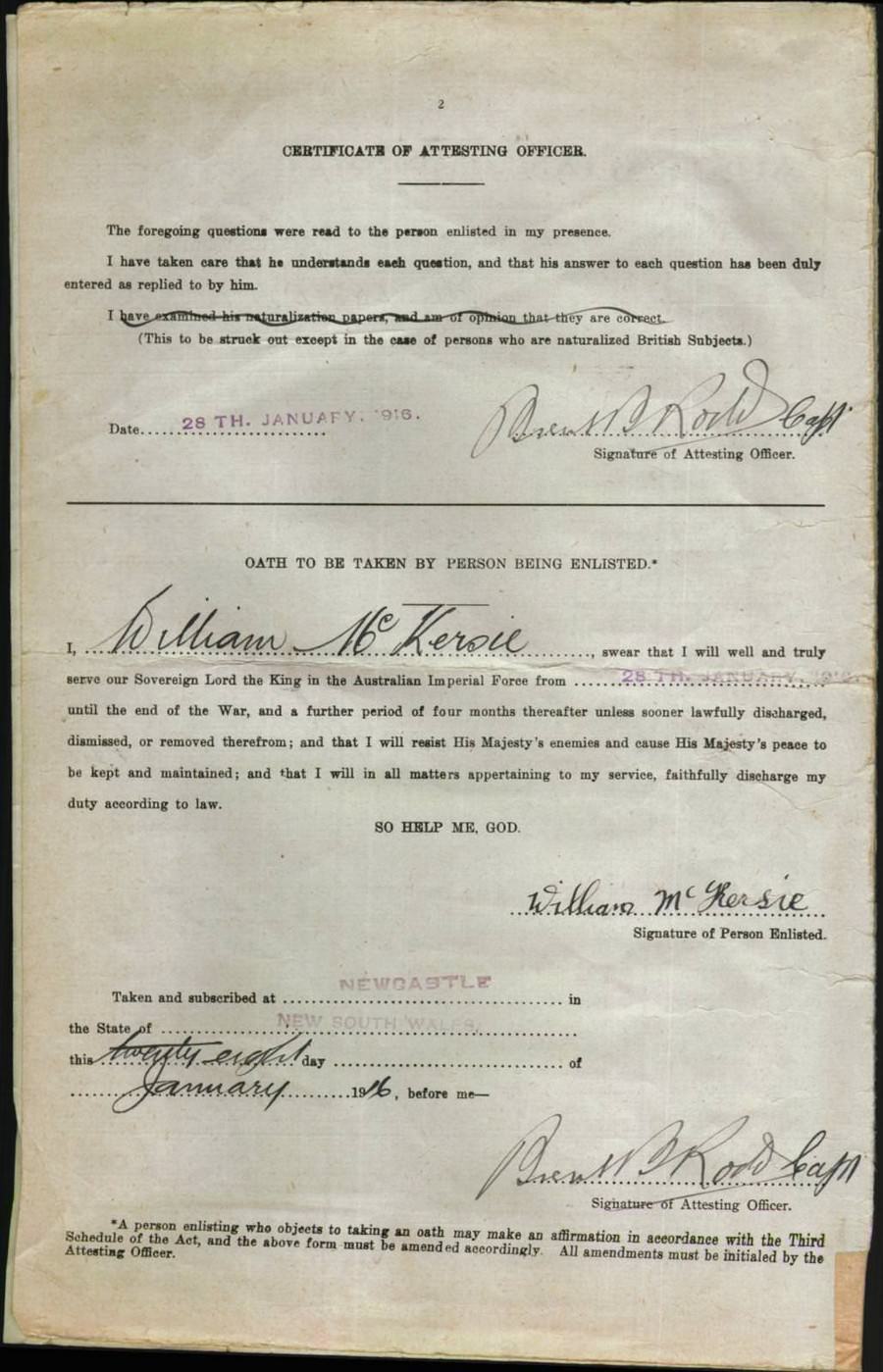
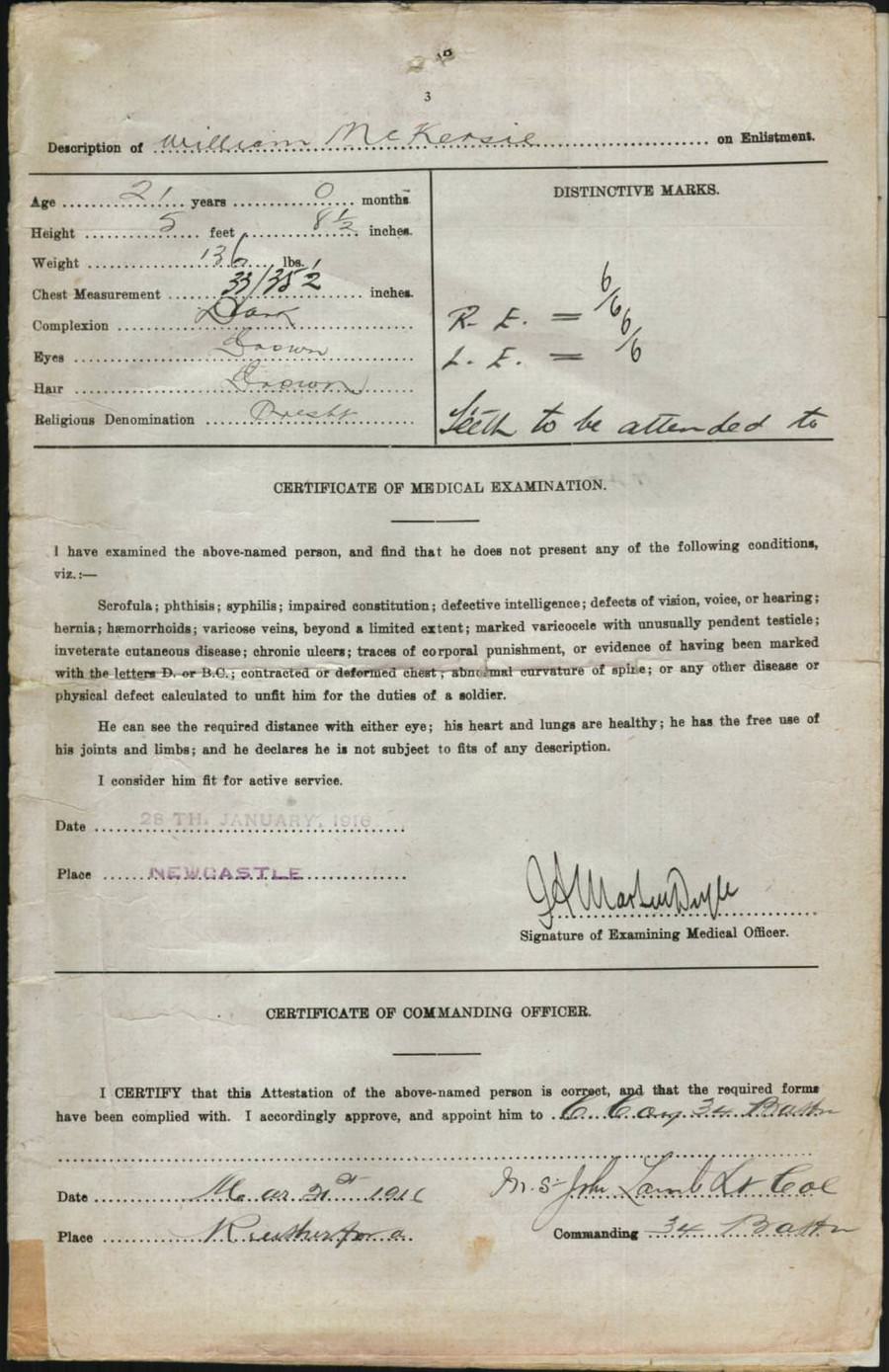
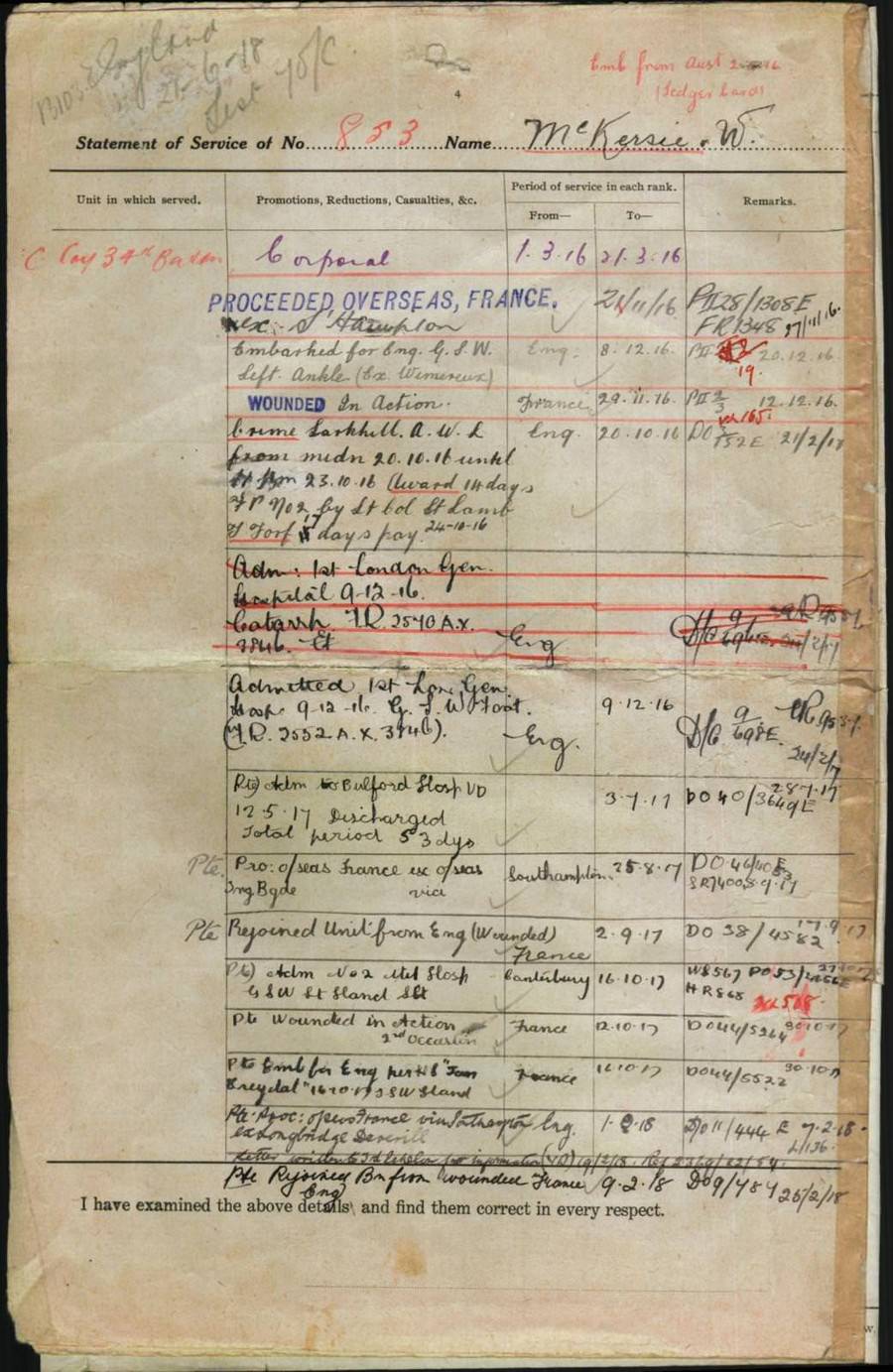
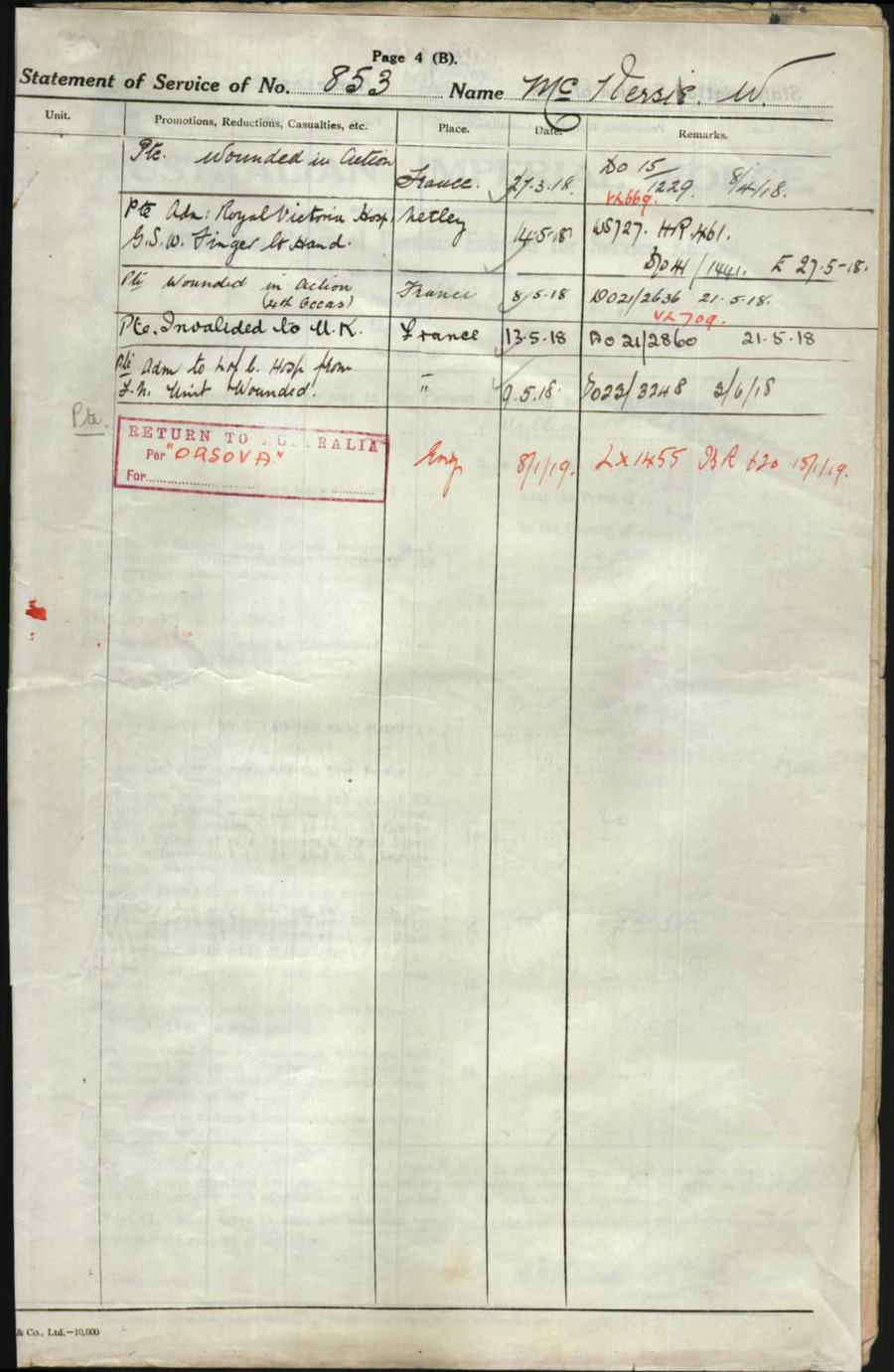
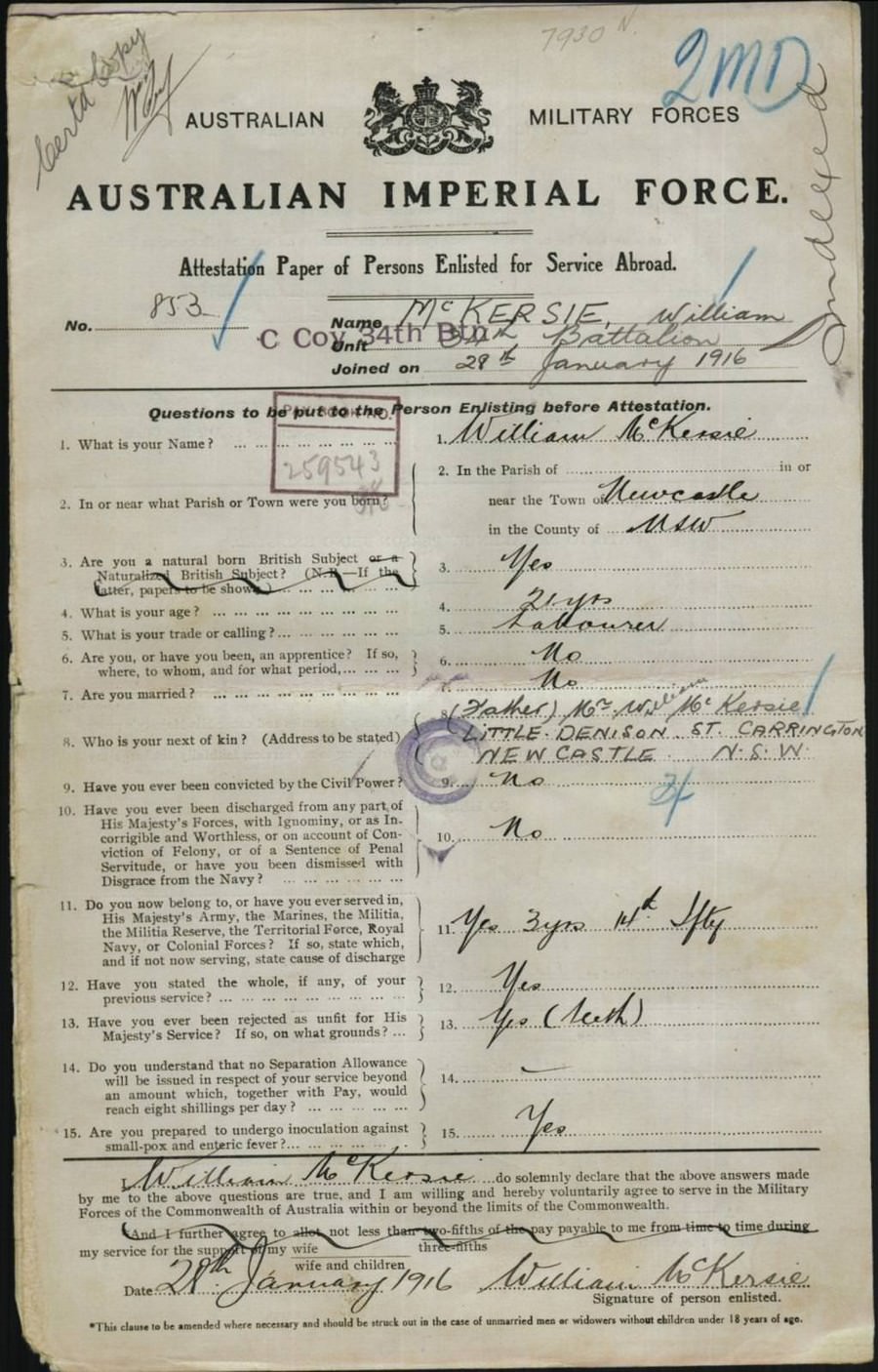
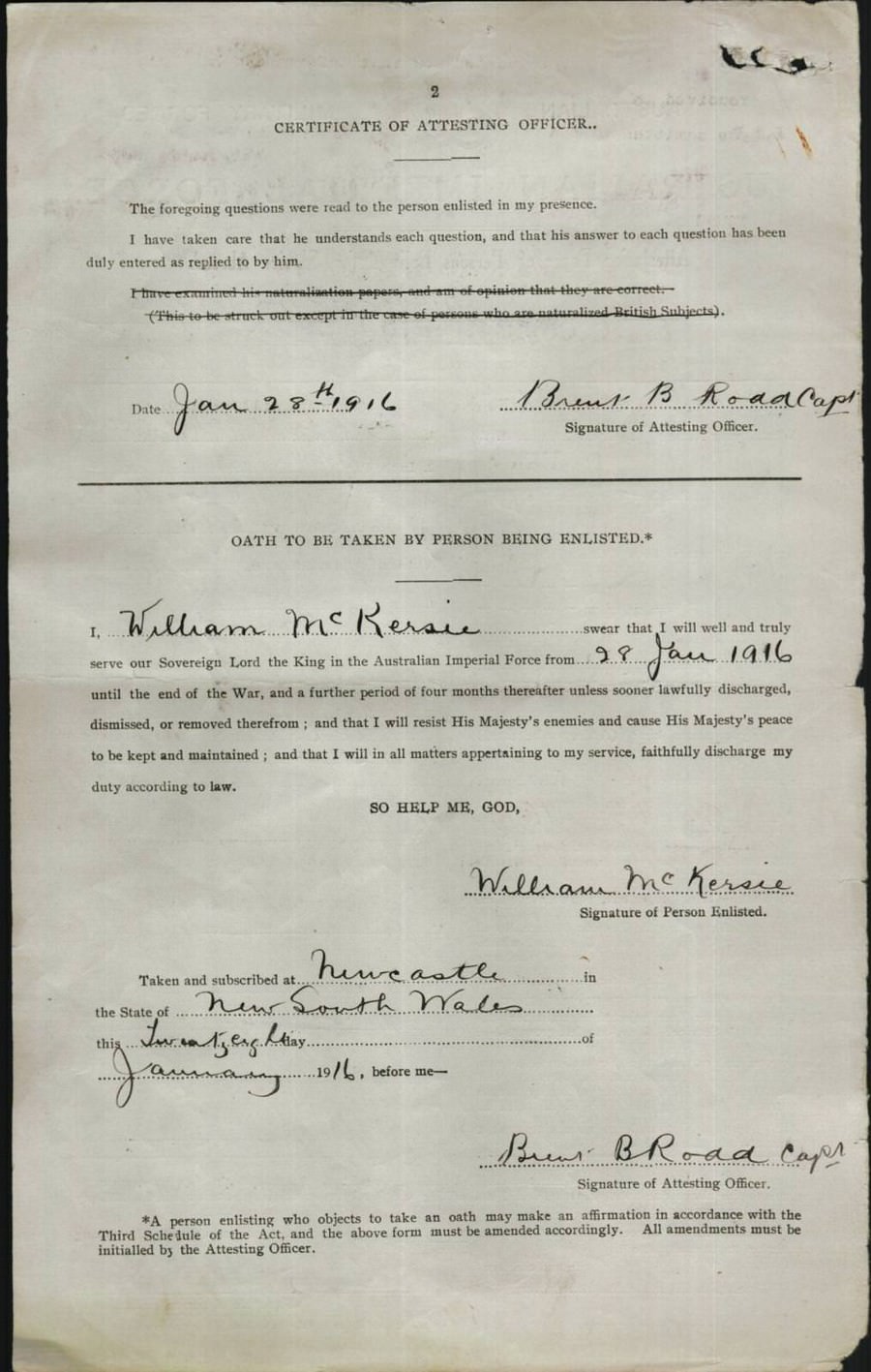
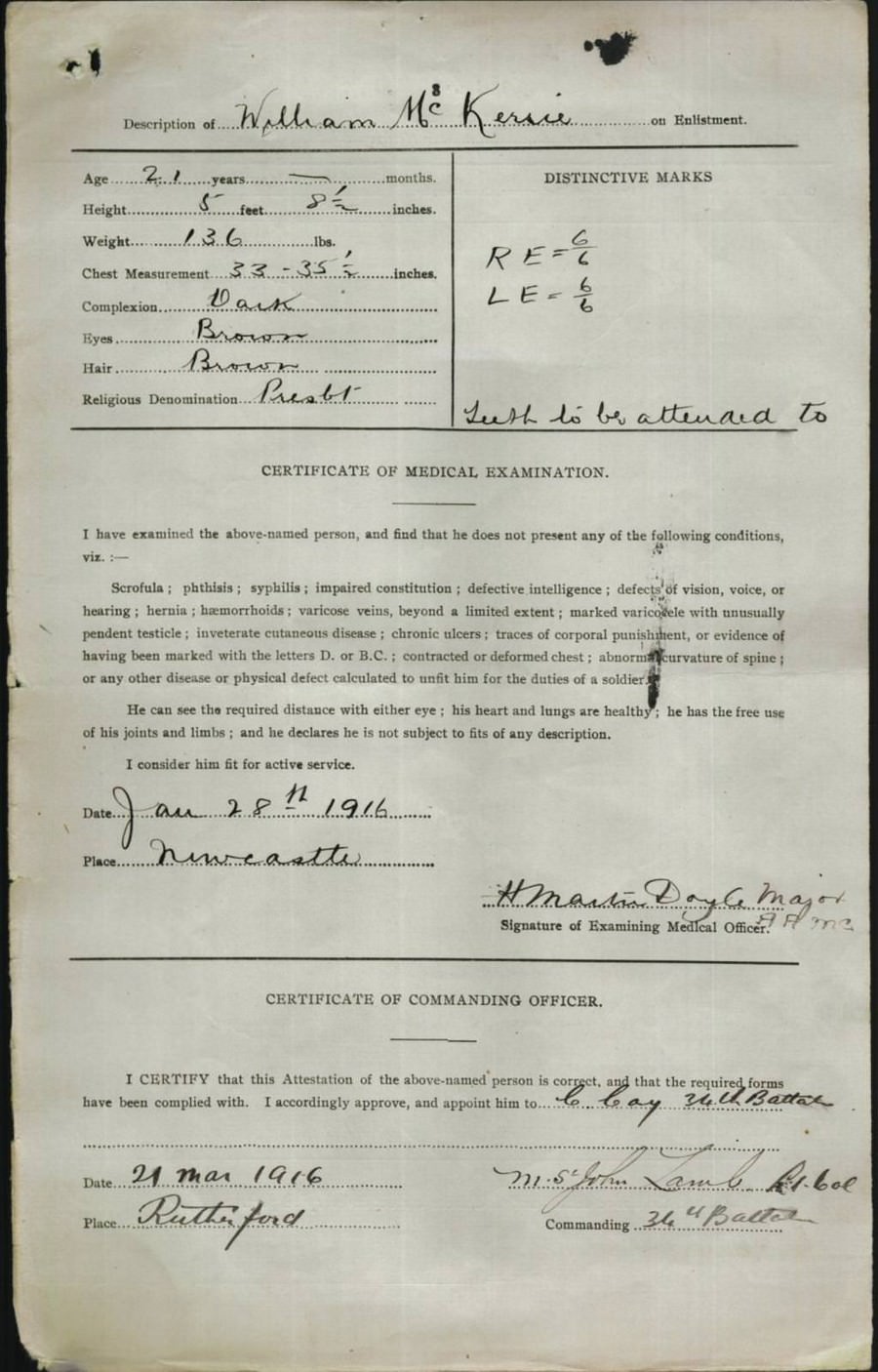

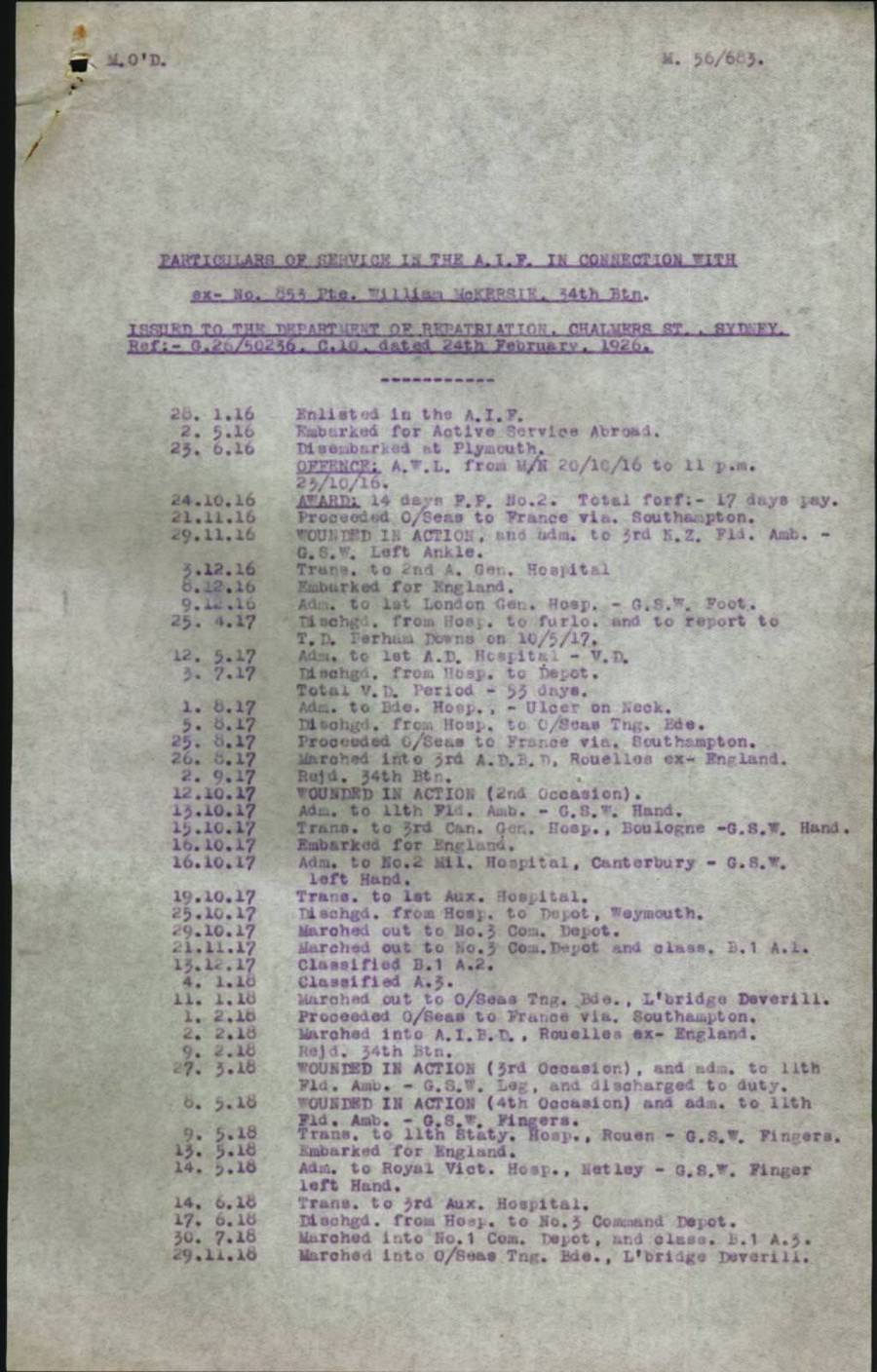
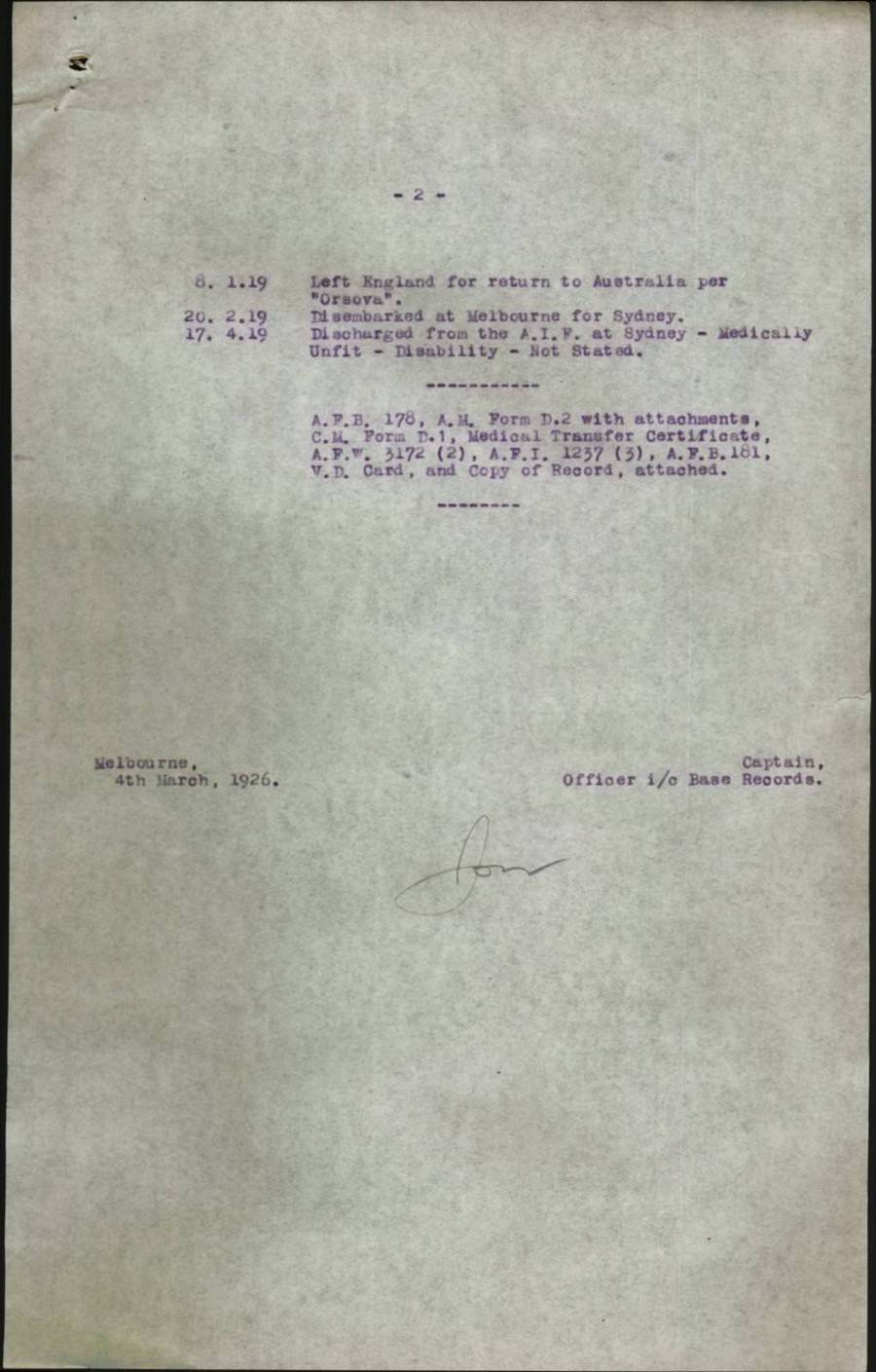

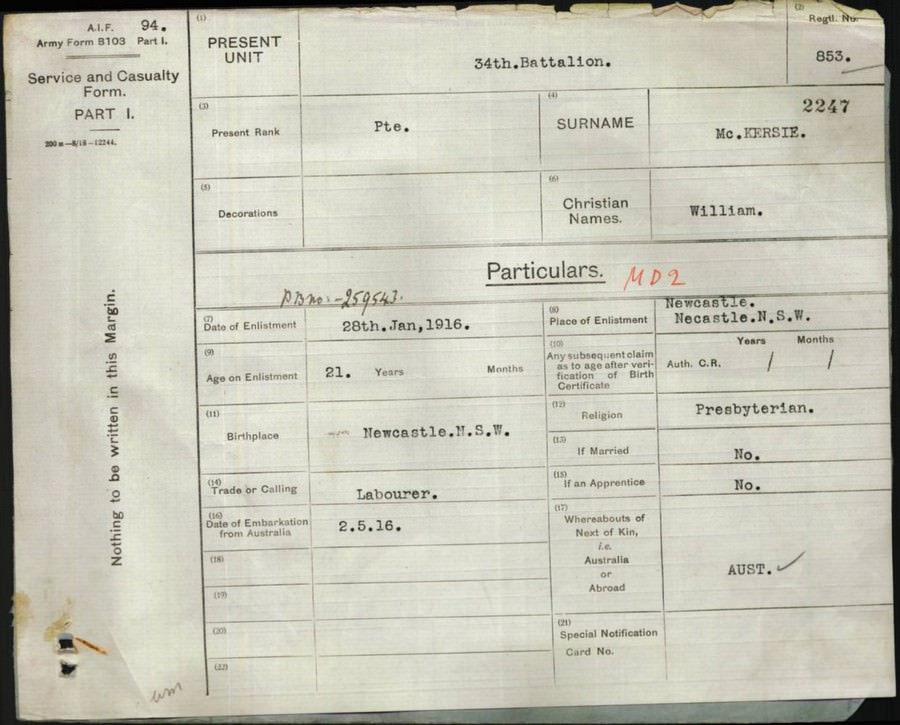
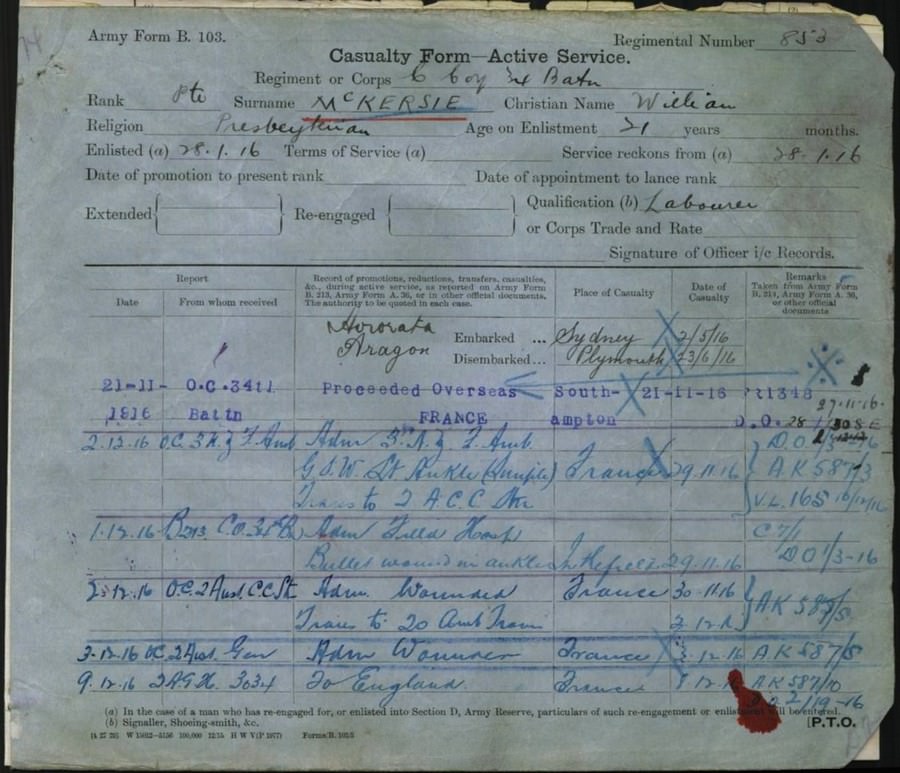

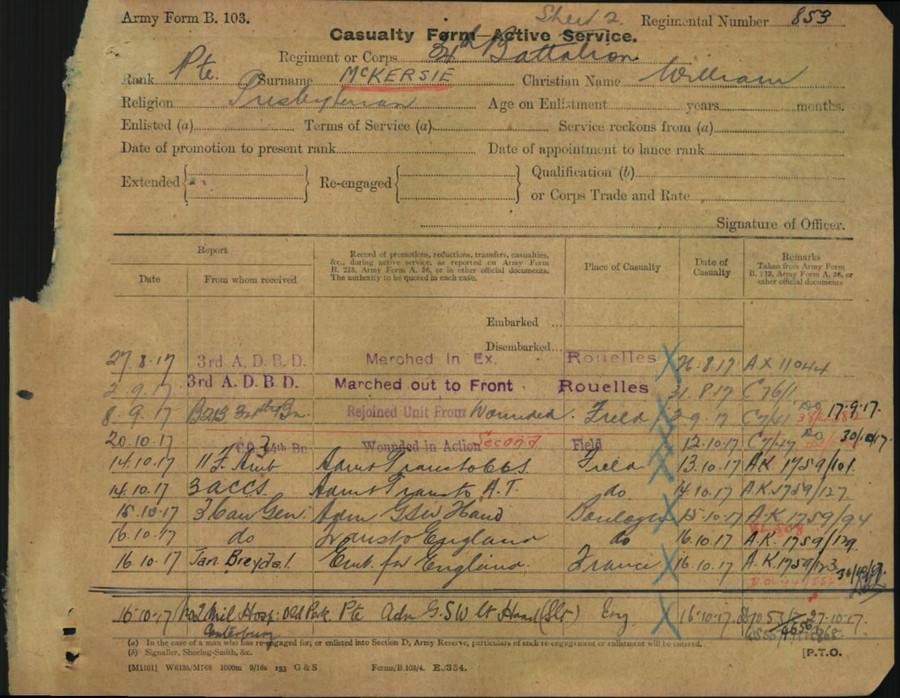
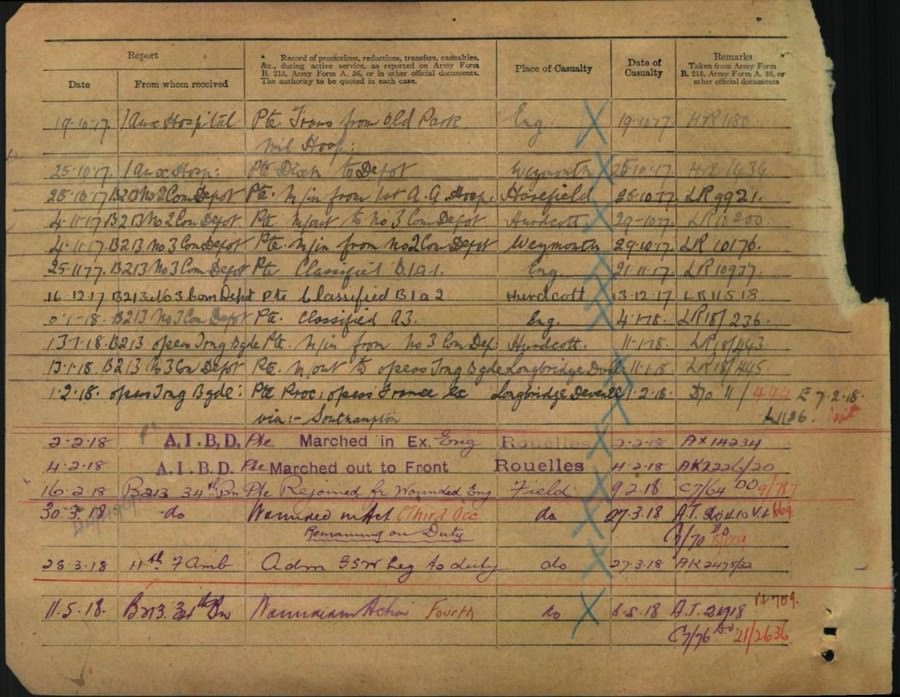

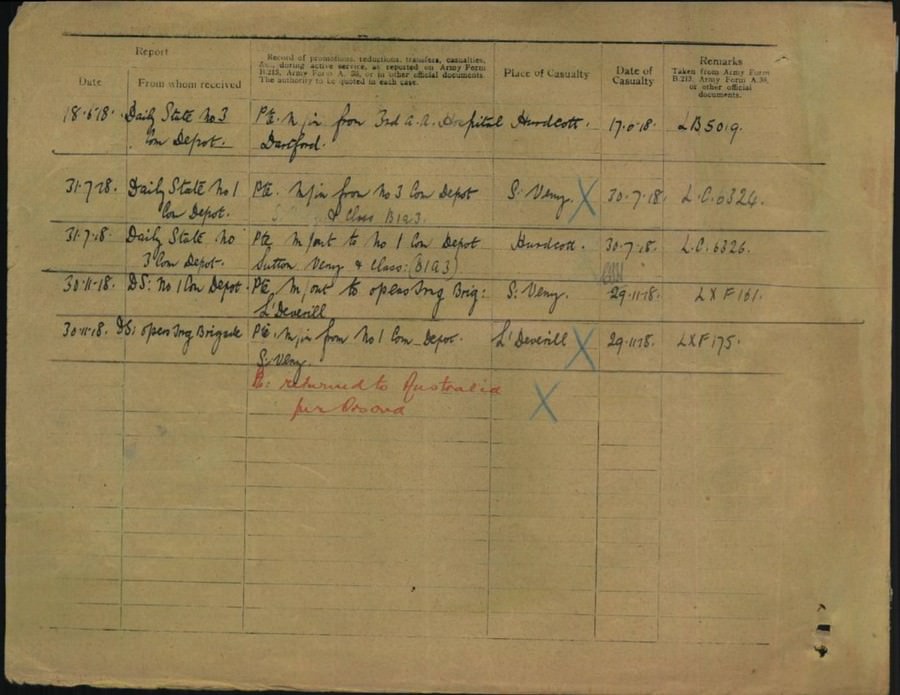
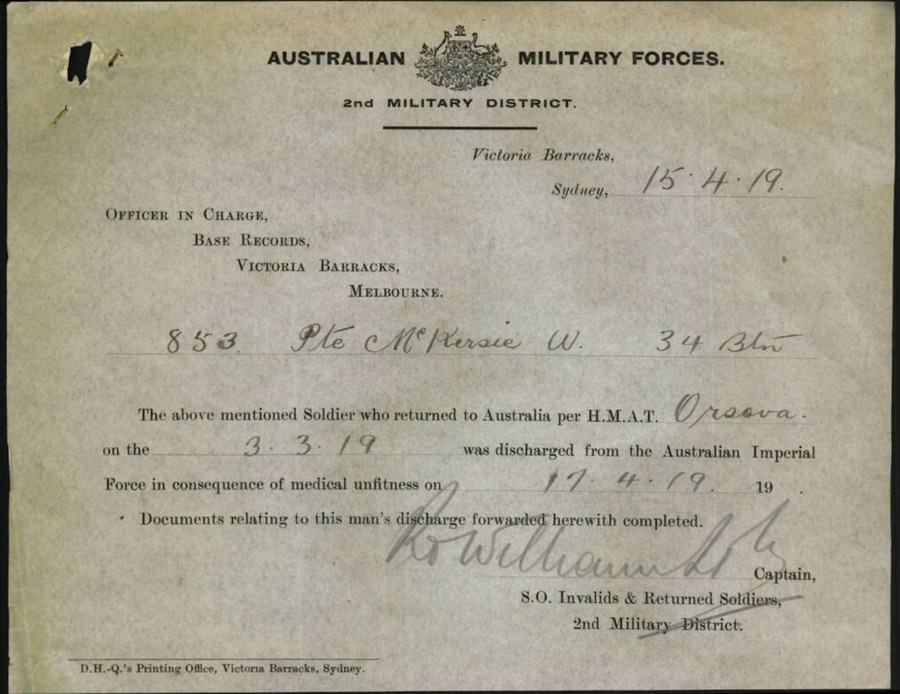
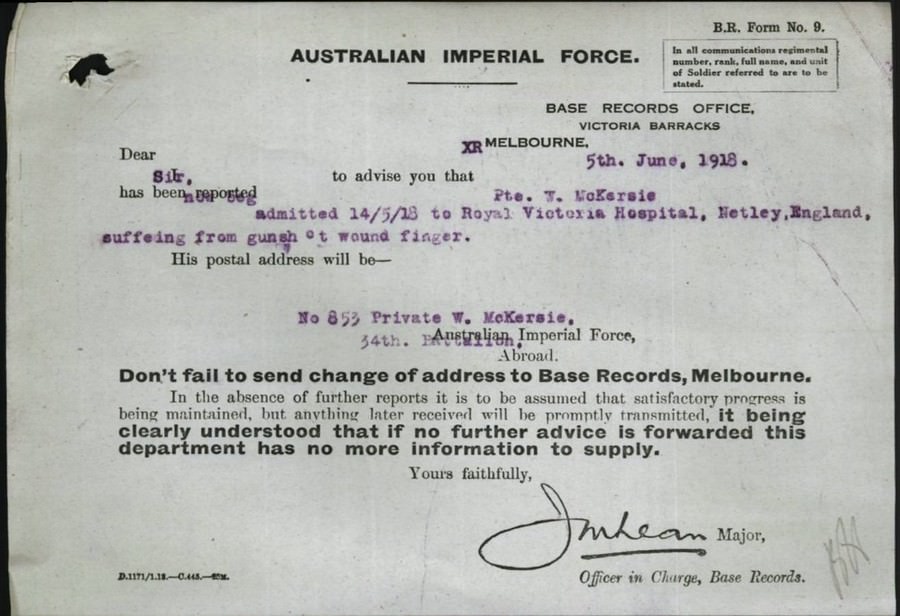

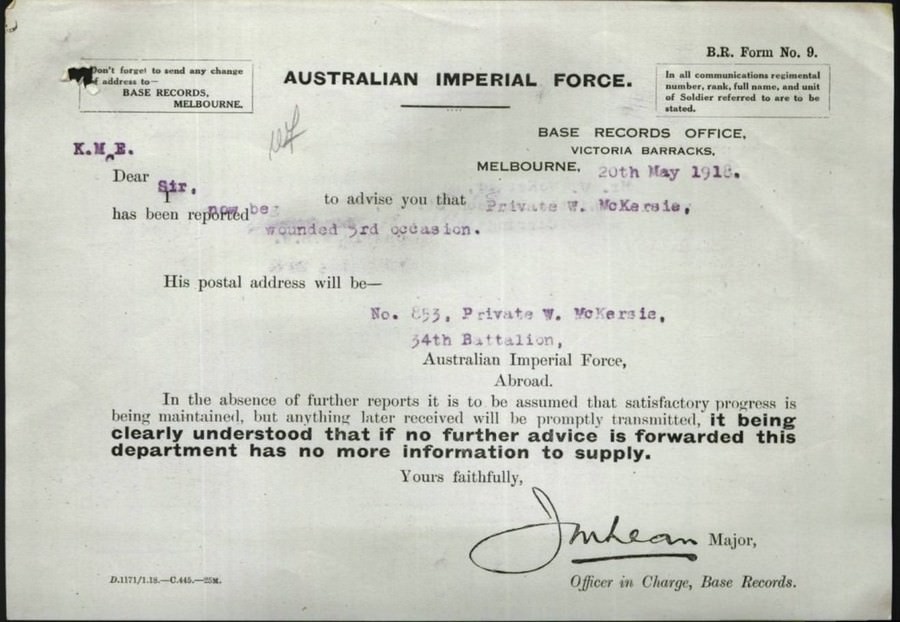
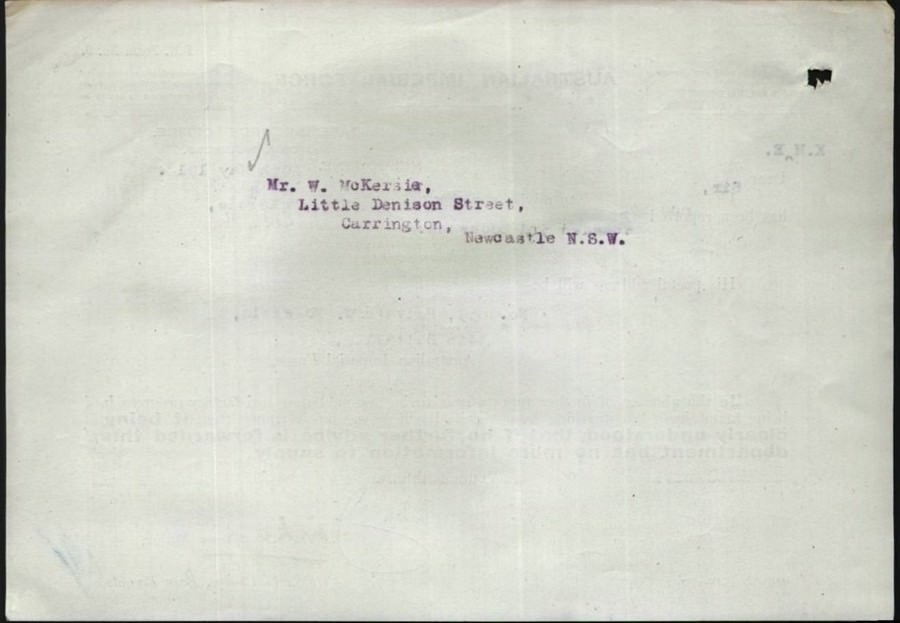
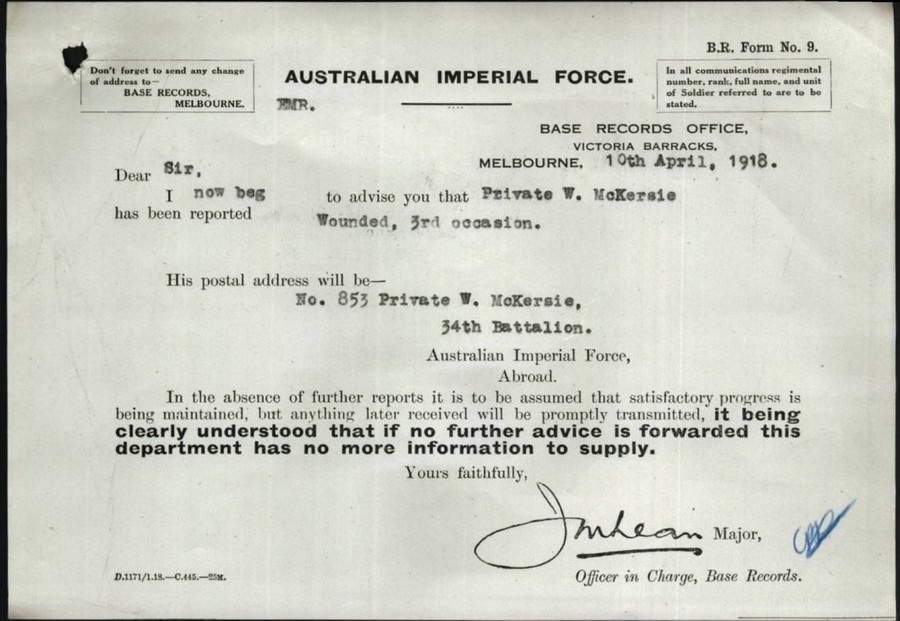
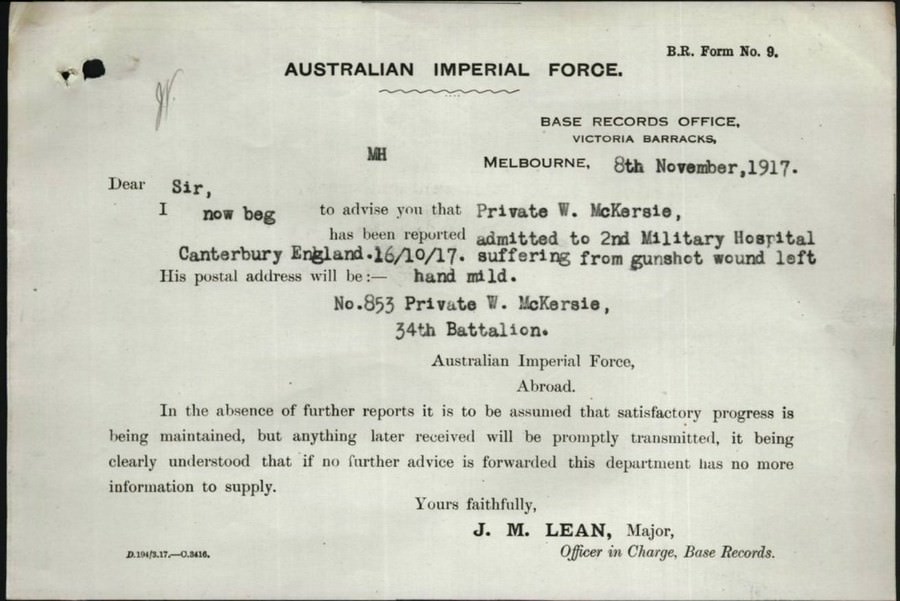
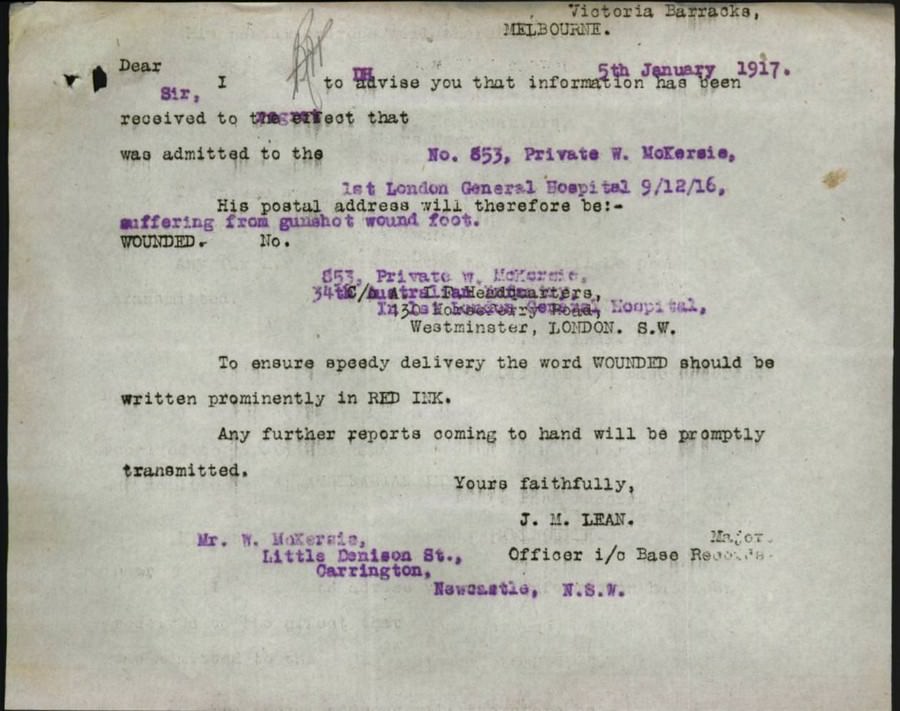
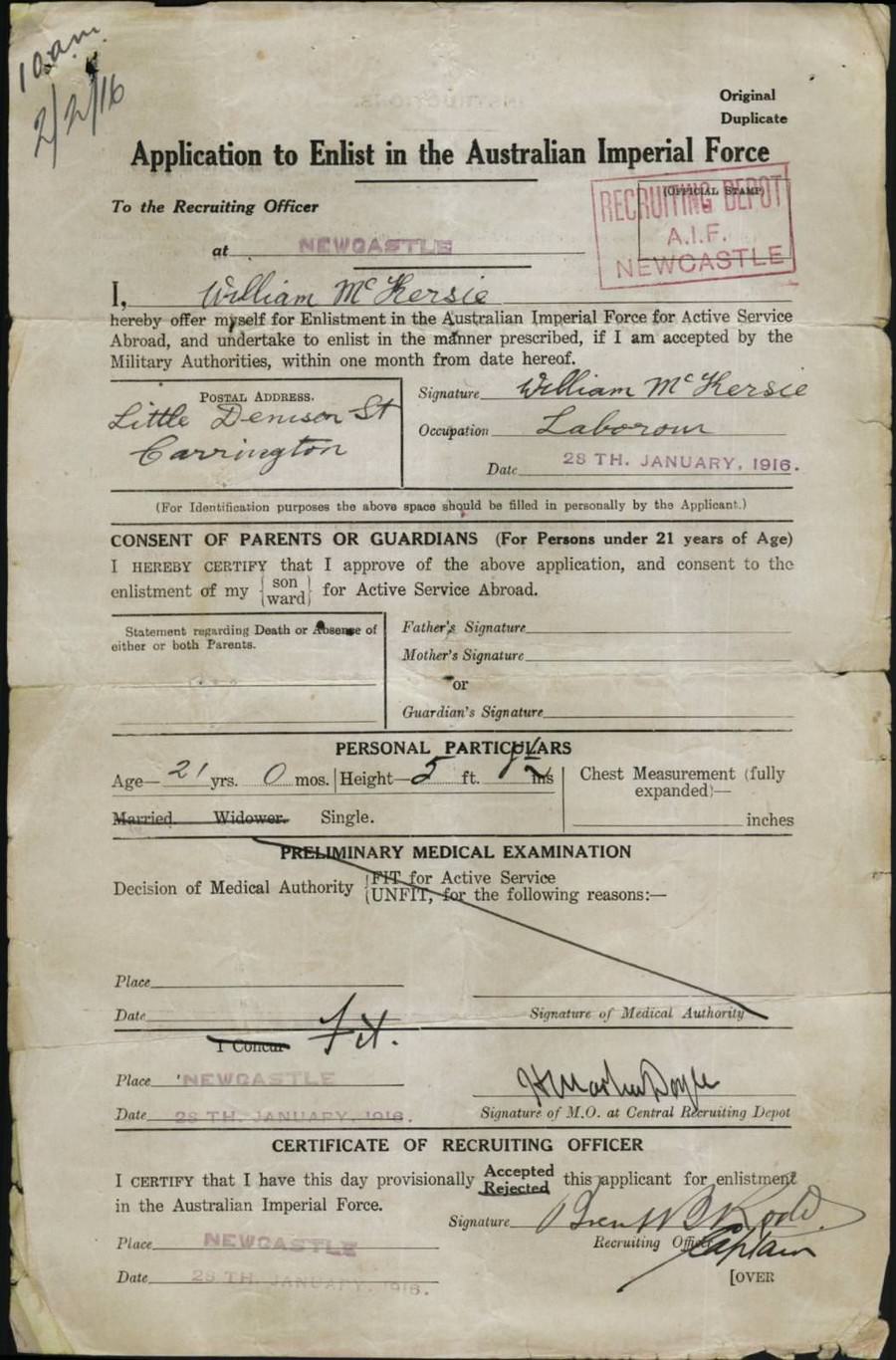
 ? Commonwealth of Australia (National Archives of Australia)
? Commonwealth of Australia (National Archives of Australia)
Under Construction; 13/04/2017-29/04/2017.

